There are many stories about where the name "jeep" came from. These, although they make for interesting and memorable stories, are not quite accurate.
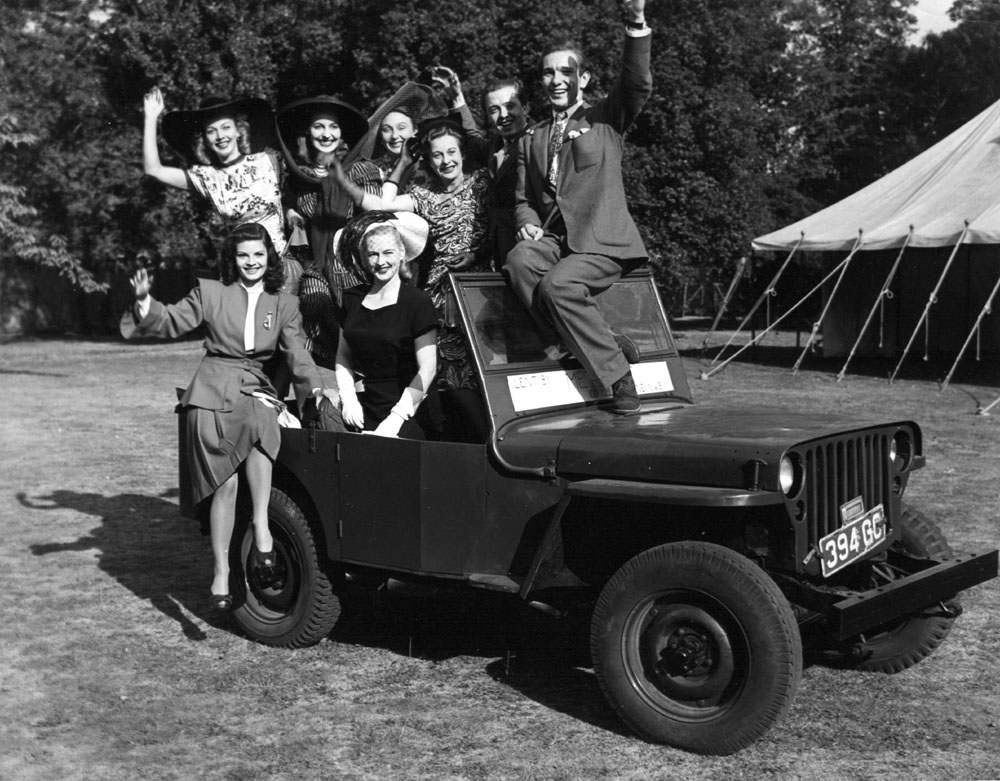
Movie star Carole Landis in a jeep.
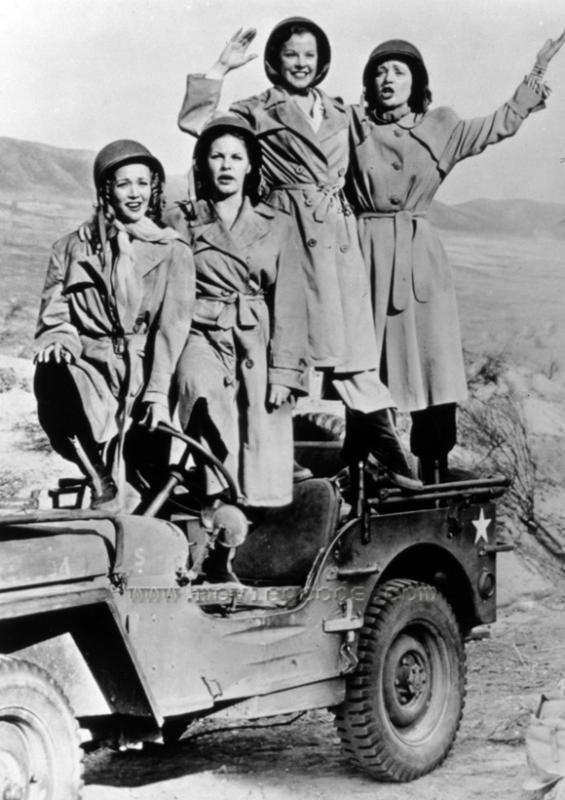
Carole Landis entertained thousands of soldiers during World War 2. In September 1942 she began a five month U.S.O. tour with Kay Francis, Martha Raye, and Mitzi Mayfair. Their group was part of the "Feminine Theatrical Task Force". They went to England, Bermuda, Africa and Ireland. The women traveled more than 50,000 miles by plane, truck and jeep. They made 150 personal appearances and performed 125 shows. Kay introduced the show, Martha told jokes, Mitzi danced and Carole sang songs for the boys. Her specialty was the song "Strip Polka". The four women became close friends during the tour. Kay, who was bisexual, developed a crush on Carole. When they were in Africa they went through four air raids. They also survived an earthquake and numerous illnesses. Carole had her appendix removed, nearly died from an infection and lost fifteen pounds while on the tour. She wrote several magazine articles about her experiences during the war. Random House asked her to write a book about traveling with the other women and performing for the soldiers. The title of the book was ‘Four Jills In A Jeep’.
Probably the most popular notion has it that the vehicle bore the designation "GP" (for "General Purpose"), which was phonetically slurred into the word jeep. R. Lee Ermey, on his television series ‘Mail Call’, disputes this, saying that the vehicle was designed for specific duties, was never referred to as "General Purpose" and that the name may have been derived from Ford's nomenclature referring to the vehicle as GP (G for government-use, and P to designate its 80-inch-wheelbase). "General purpose" does appear in connection with the vehicle in the WW2 TM 9-803 manual, which describes the vehicle as "... a general purpose, personnel, or cargo carrier especially adaptable for reconnaissance or command and designated as ¼-ton 4x4 Truck" and the vehicle is designated a "GP" in TM 9-2800, Standard Military Motor Vehicles, 1 September 1943, but whether the average jeep-driving GI would have been familiar with either of these manuals is open to debate.
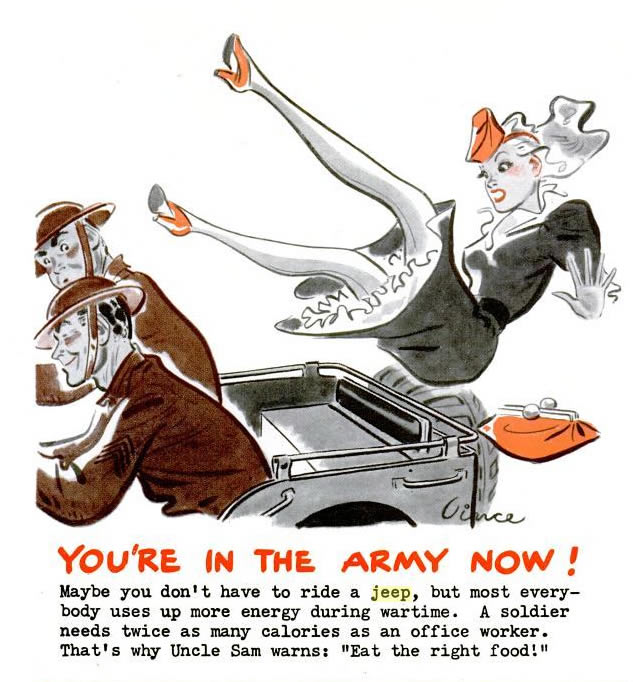
August 06, 1942 ‘Life’ magazine ‘you’re in the army now’ ad.
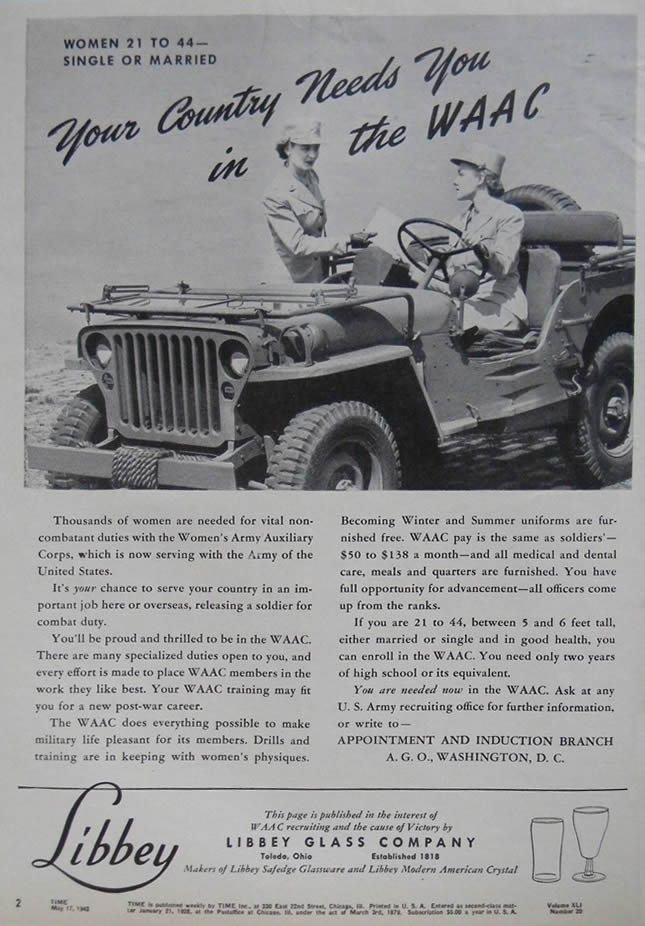
1943 WAAC ad.
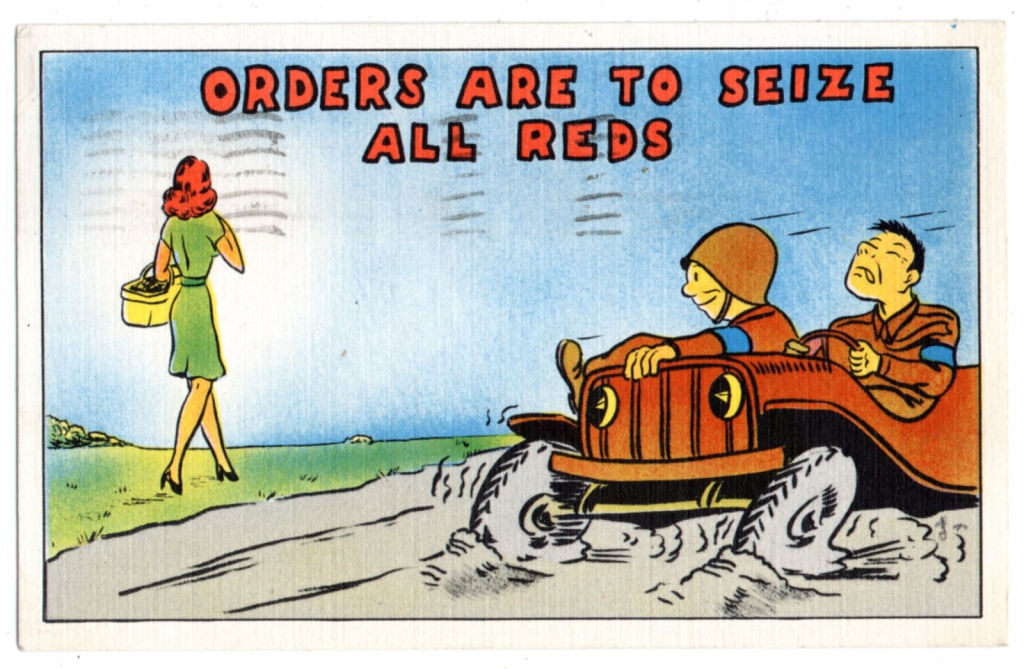
1943 ‘seize all reds’ postcard.
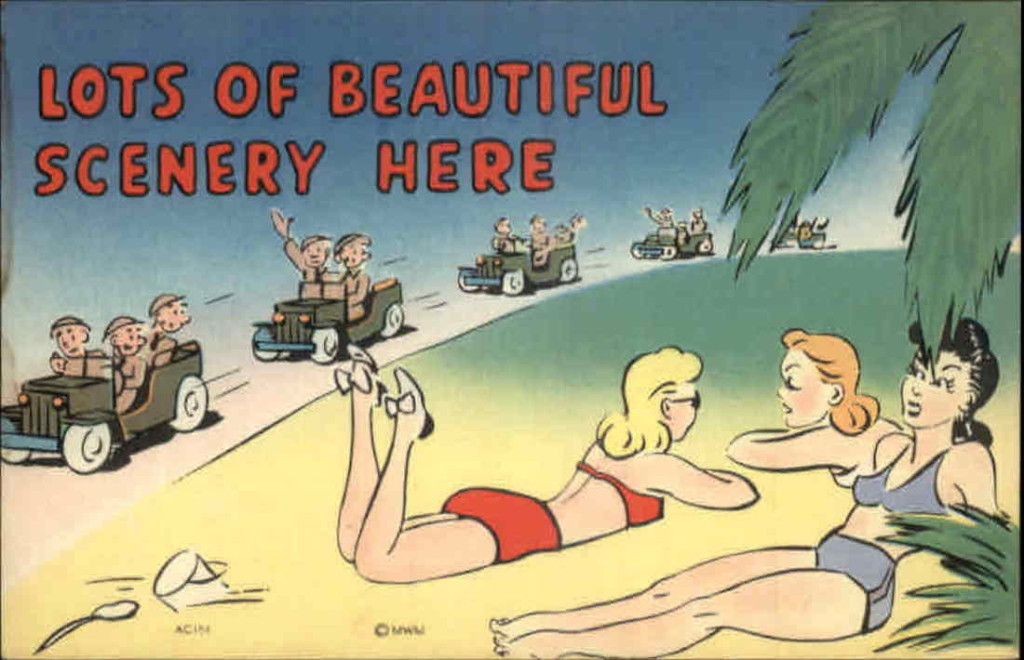
Jeeps sunbathing girls.
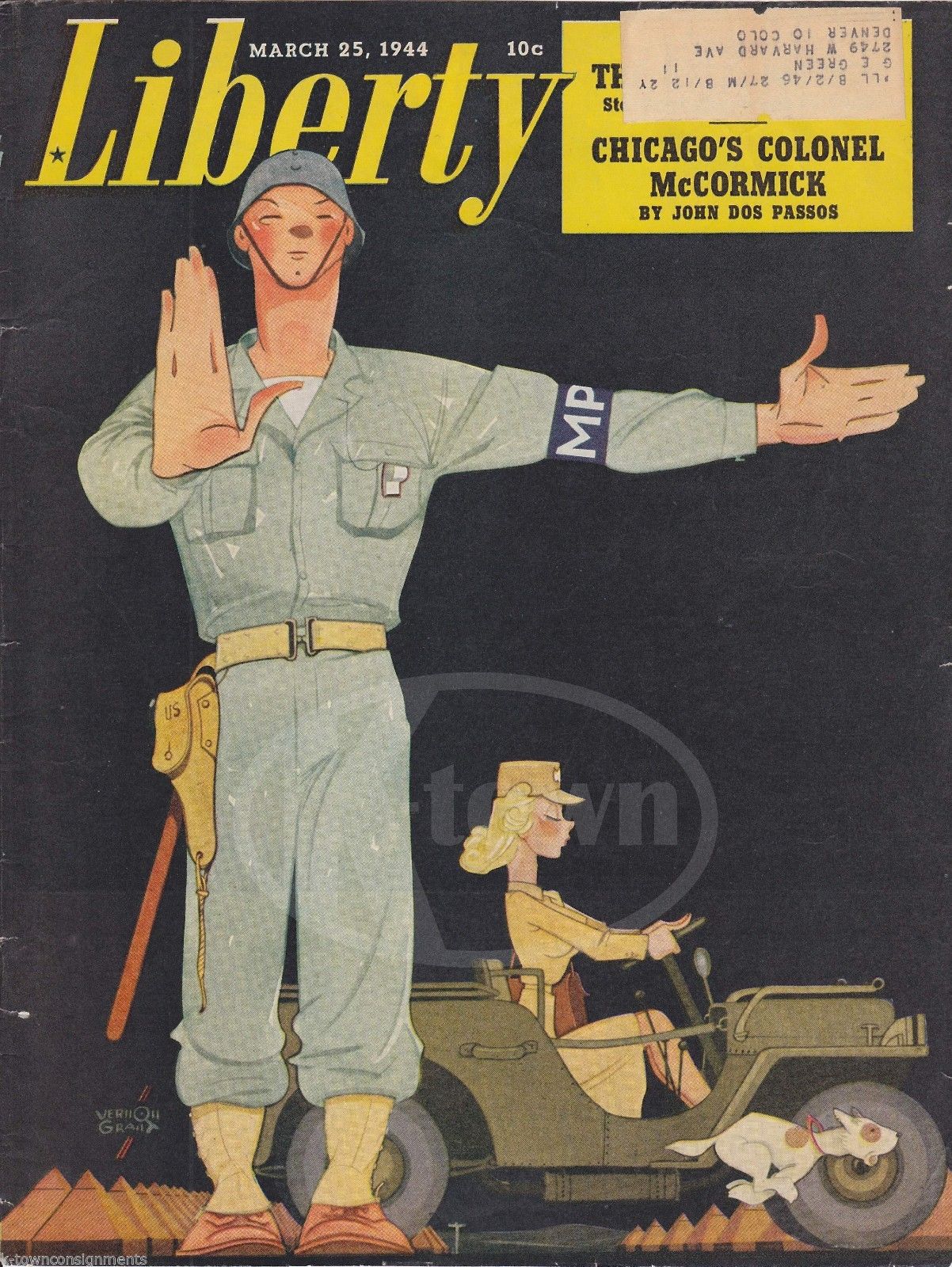
March 03, 1944 Liberty magazine.
This version of the story may be complicated by the name of another series of vehicles with the GP designation. The Electro-Motive Division of General Motors, a maker of railroad locomotives, introduced its "General Purpose" line in 1949, using the GP tag. These locomotives are commonly referred to as Geeps, pronounced the same way as "Jeep".
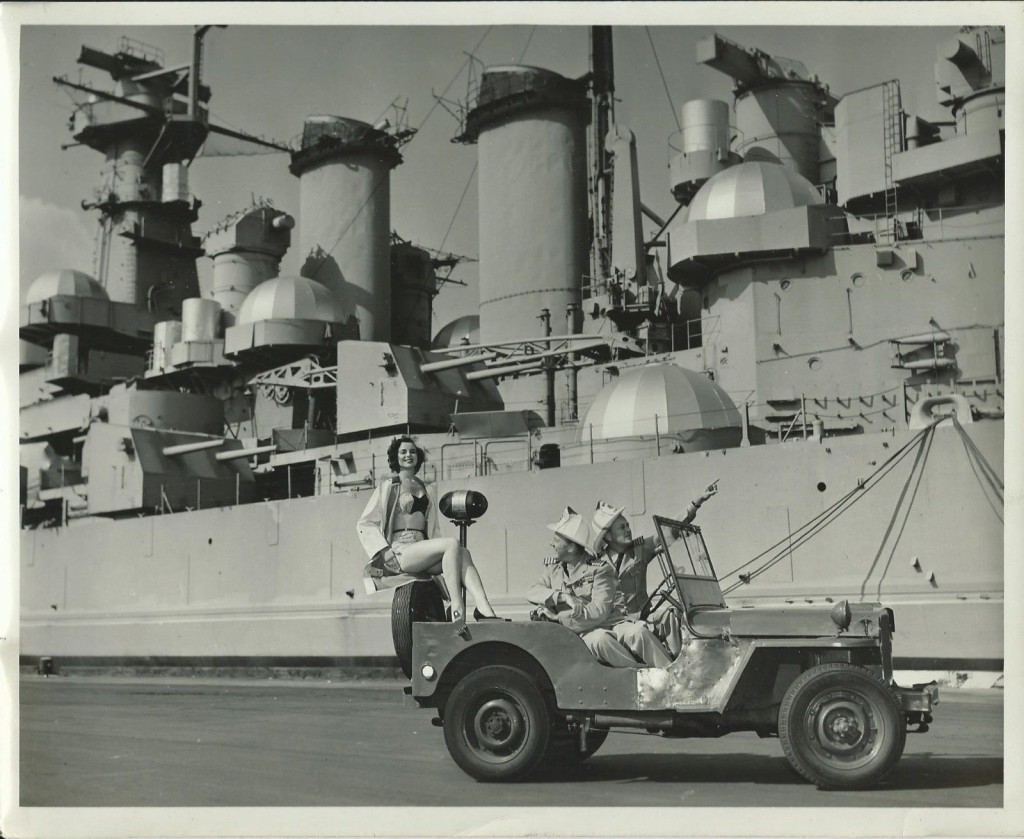
1950s photo with firemen and a lady in her swimsuit.
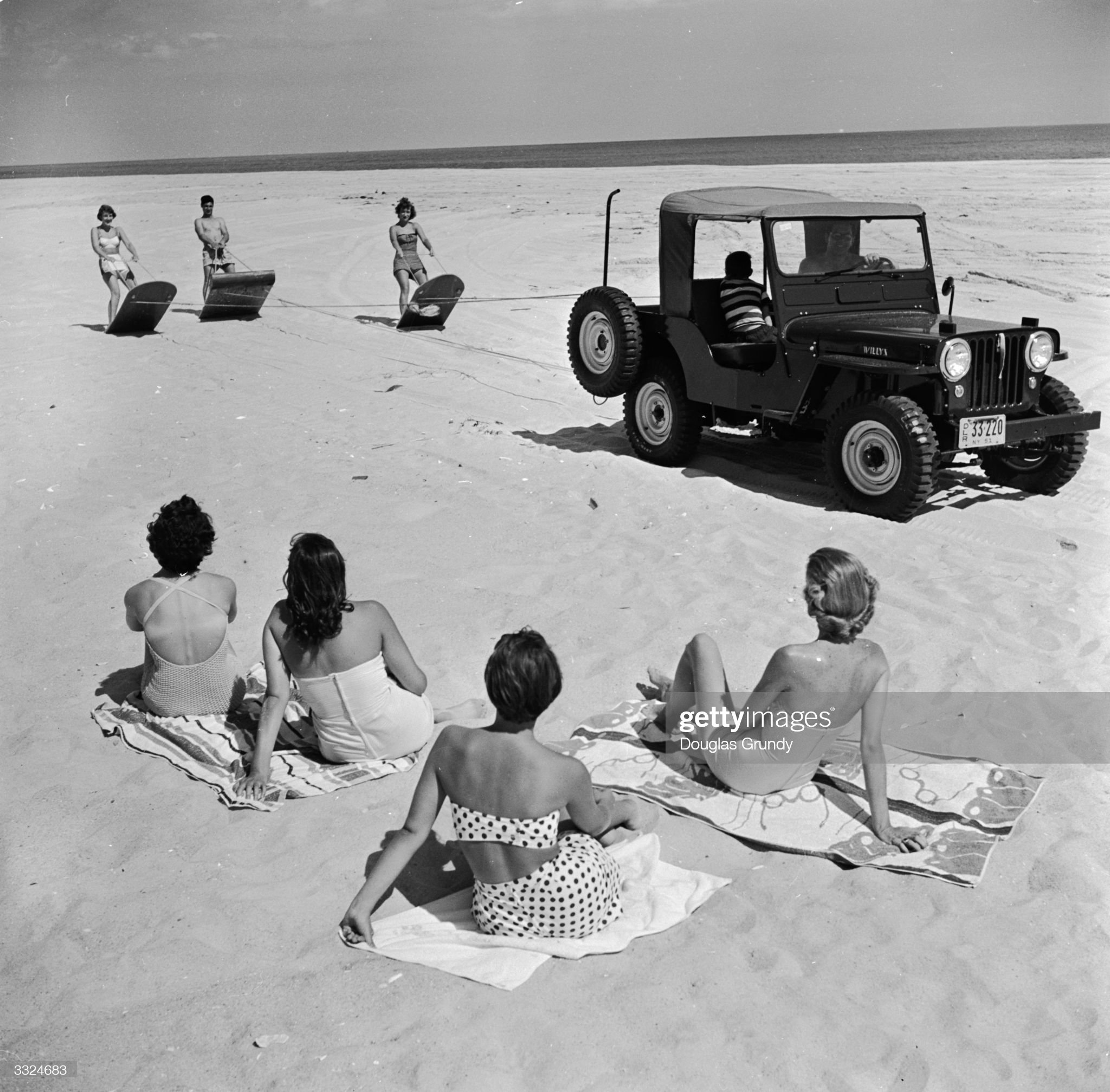
Circa 1955: an all-terrain vehicle towing three girls on sand skis across a beach on the east coast of America. Photo by Douglas Grundy / Three Lions / Getty Images.
Many, including Ermey, claim that the likelier origin refers to the character Eugene the Jeep in the Thimble Theater (Popeye) comic strip. Eugene the Jeep was dog-like and could walk through walls and ceilings, climb trees, fly and just about go anywhere it wanted; it is thought that soldiers at the time were so impressed with the new vehicle's versatility that they informally named it after the character. The character "Eugene the Jeep" was created in 1936.
The term "jeep" was first commonly used during World War I (1914-1918) by soldiers as a slang word for new recruits and for new unproven vehicles. This is according to a history of the vehicle for an issue of the U.S. Army magazine, Quartermaster Review, which was written by Maj. E. P. Hogan. He went on to say that the slang word "jeep" had these definitions as late as the start of World War II.
"Jeep" had been used as the name of a small tractor made by Modine.
The term "jeep" would eventually be used as slang to refer to an airplane, a tractor used for hauling heavy equipment and an autogyro. When the first models of the jeep came to Camp Holabird for tests, the vehicle did not have a name yet. Therefore the soldiers on the test project called it a jeep. Civilian engineers and test drivers who were at the camp during this time were not aware of the military slang term. They most likely were familiar with the character Eugene the Jeep and thought that Eugene was the origin of the name. The vehicle had many other nicknames at this time such as Peep and Pygmy and Blitz-Buggy, although because of the Eugene association, Jeep stuck in people's minds better than any other term.
Words of the Fighting Forces by Clinton A. Sanders, a dictionary of military slang, published in 1942, in the library at The Pentagon gives this definition: "jeep: a four-wheel drive car of one-half to one-and-one-half ton capacity for reconnaissance or other army duty. A term applied to the bantam-cars and, occasionally, to other motor vehicles (U.S.A.) in the Air Corps, the Link Trainer; in the armored forces, the ½ ton command car. Also referred to as "any small plane, helicopter, or gadget."
Early in 1941, Willys-Overland demonstrated the vehicle's ability by having it drive up the U.S. Capitol steps, driven by Willy's test driver Irving "Red" Haussman, who had recently heard soldiers at Fort Holabird calling it a "jeep". When asked by syndicated columnist Katherine Hillyer for the Washington Daily News (or by a bystander, according to another account) what it was called, Irving answered "it's a jeep."
Katherine Hillyer's article was published on 20 February 1941 around the nation and included a picture of the vehicle with the caption: "lawmakers take a ride - With Senator Meade, of New York, at the wheel and Representative Thomas, of New Jersey, sitting beside him, one of the Army's new scout cars, known as "jeeps" or "quads," climbs up the Capitol steps in a demonstration yesterday. Soldiers in the rear seat for gunners were unperturbed."
This exposure caused all other jeep references to fade, leaving the 4x4 truck with the name.
Willys-Overland Inc. was later awarded the sole privilege of owning the name "Jeep" as registered trademark, by extension, merely because it originally had offered the most powerful engine.
Fiat Campagnola
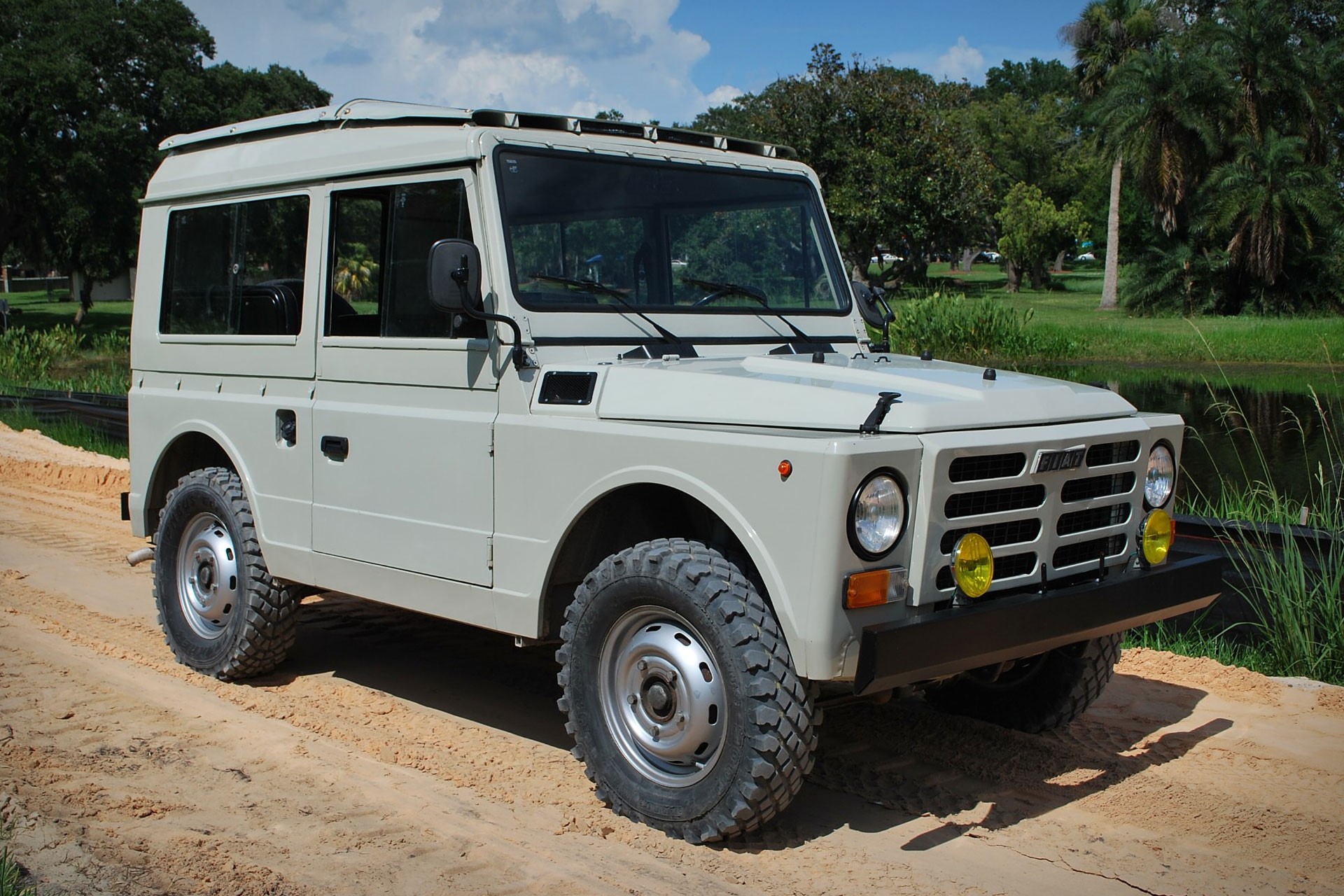
1975 Fiat Campagnola.
The Campagnola was redesigned for launch in June 1974 and in this form produced until 1987.
The new vehicle used the petrol engine of the Fiat 132, but with a longer stroke which increased the capacity to 1,995 cc., the same enlarged engine turned up in the Fiat 132 itself two years later, albeit with twin overhead camshafts. There was a light alloy cylinder head: instead of the twin overhead camshafts of the 132, the engine in the Campagnola had a single side-mounted camshaft driven by a toothed belt, the valve movement being driven by pushrods and rockers.
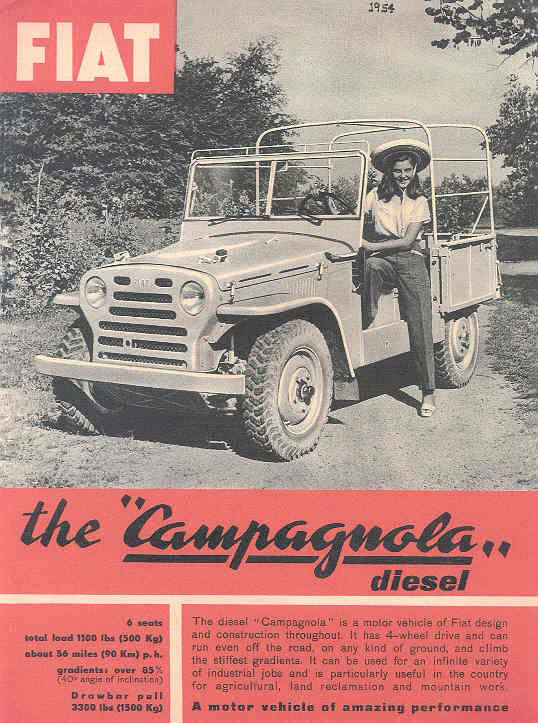
1954 Fiat Campagnola diesel brochure.
As an option, a Sofim 2.5 litre diesel engine was also available.
The large square engine compartment gave easy access to the engine bay which was designed to permit "wading" up to 70 cm deep.
The 57 litre fuel tank was positioned well out of range from rocks and flying stones, under the twin passenger seat beside the driver.
Torsion bars suspended all four wheels, with two shock absorbers for each of the rear wheels and a single one for each of the front wheels. All six shocks used were of identical specification and thus interchangeable. Road testers from the UK commended the smoothness of the ride over rough ground which evidently compared very favourably with that offered by the Land Rover of the time.
A military version was introduced in 1976 and in 1979, after a new update, it was called AR76.
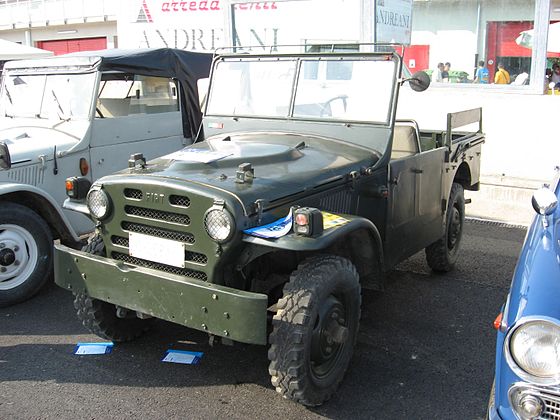
Fiat Campagnola Mk1.
In the early post-War period, a military commission led to the creation of a versatile vehicle suitable for the widest variety of uses, enabling Fiat to widen its offering and also cater for rural requirements. Fiat Campagnola became an icon of the post-War reconstruction, suitable for the widest range of different civil and military uses.
Once the Second World War was over, the American Allies left many of the means of transport they had used in the national liberation campaign to the Italian Army. In addition to trucks and other heavy-duty vehicles, they also left their versatile Willys Jeeps: a cross between a hardy working vehicle and an agile compact car, capable of taking impervious routes in its stride and undergoing intensive use in the worst conditions, also thanks to its four-wheel drive.
In the early fifties, the Italian Ministry of Defence launched a call for tenders to appoint a supplier of vehicles inspired by those off-roaders, with the aim of creating the ‘Autoveicolo da Ricognizione’ (hence the military initials AR), or Reconnaissance Vehicle, for the army. In 1951, the two major Italian manufacturers, Fiat and Alfa Romeo, submitted their proposals. The Fiat “AR51”, designed by Dante Giacosa, was chosen by the heads of the army over its competitor, Alfa Romeo 1900 M, mainly due to its lower maintenance costs.
From the design of the prototype on, Fiat’s vision was of building a vehicle that could easily tackle the bumpy and largely unsurfaced roads of the Italian peninsula and that not only met the requirements of the army chiefs, but also those of the agricultural world: a working environment that had always existed in Italy and which, with the rebirth of the post-War period, was increasingly beginning to play a key role in the national economy. For this reason, the name of the new four-wheel drive vehicle, which was originally supposed to have been “Alpina” (a tribute to the exceptional climbing abilities of the AR 51), became ‘Campagnola’.
The Fiat Campagnola AR51 designed by Giacosa’s team was built around the 1900 cc petrol engine fitted on the sedans 1400/1900, depowered to 53 HP to make it stronger and more reliable. The vehicle architecture was conventional, featuring a chassis with longitudinal and traverse members, leaf springs at the rear and modern, independent suspension at the front end.
The sophisticated and effective powertrain consisted of a 4-speed transmission with reducer and it was usually rear-wheel drive, with the possibility of sending part of the torque to the front wheels, when the low-range gears were engaged. To optimise the traction in the toughest conditions, the differentials could be locked on the two axles. A range of different wheelbase and passenger compartment configurations was available, making the detailed offering even easier to adapt to suit different requirements.
In 1953, the 1900 petrol engine was joined by a diesel unit, which was less powerful but with a particularly low fuel consumption. In addition to the diesel engine, in the early years the Campagnola underwent various technical updates that were incorporated into the new military model named AR59.
The production of the vehicle continued for over twenty-two years, benefiting from regular evolutions, and over forty thousand vehicles were manufactured.
In 1974, instead, Fiat presented the ‘Nuova Campagnola’. It was a completely redesigned vehicle, a true revolution for the time: the conventional chassis with longitudinal and traverse members was abandoned and replaced by a modern body chassis reinforced by two longitudinal members welded to the monocoque. There was a choice of two engines: a 2-litre petrol engine - derived from the engine of the Fiat 131 - and a 2500 diesel version, available from 1979. This revolutionary Campagnola, which remained in production until 1987, was the basis for the AR76 military version.
In addition to being used for rural purposes and military supplies, many Campagnolas were purchased by the companies operating in the territory, in particular Enel. Following the nationalisation of the electricity industry in the 1960s, it put its trust in the talents of the 4x4 made in Turin to perform the complex maintenance of one of the most modern electricity grids in the world. A Nuova Campagnola, donated by Fiat to the Holy See in 1980 and scrupulously painted white, was also used as a ‘popemobile’ for almost thirty years, at the service of Popes John Paul II and Benedict XVI.
In autumn 1951, to promote the newly launched Campagnola, the Fiat management decided to attempt to break the record for driving from Cape Town to Algiers, travelling the whole length of Africa, from south to north, in the shortest possible time. The chosen team members were driver Paolo Butti, who had acquired plenty of experience in previous African rallies, supported by a Fiat test driver who knew the Campagnola inside-out. This was Domenico Racca, who had worked on the development of the military prototype.
Two vehicles were prepared, starting with the long wheelbase version, with special closed body, equipped with a strong roof rack, two auxiliary headlamps on the mudguards, folding travel bunk, mesh document pockets, extra water and oil thermometers, petrol cans firmly attached to the bodywork, spade, pickaxe and various mechanical spare parts including an internal leaf spring attached to the front bumper. FIAT la ‘Campagnola’ read the writing on the door, with ‘Algiers – Cape Town and back’ (in Italian and French) along the sides.
In the outward journey, the crew was joined by film-maker Aldo Pennelli from ‘Istituto Luce’ - tasked with filming the adventure - and Maria Pia Butti, the driver’s wife. The vehicle that made the journey from north to south was equipped with a trailer to carry all the equipment, especially the film-making gear. During the harsh crossing, the crew sent telegraphs with instructions for all the changes to be made to the twin Campagnola to be used in the return trip. The magazine ‘Auto Italiana’ dedicated its entire front page to the first success of the adventure: in fact, as early as in the outward journey, the Campagnola broke the record for the fastest Sahara crossing by a vehicle with trailer in tow: 3,800 km of desert in less than seven days.
Butti and Racca left Cape Town for Algiers on the morning of 21 January 1952. A book would not be enough to fully describe the historical enterprise, marked by insurmountable problems caused by the awful conditions of the route. All of a sudden, heavy rains quickly turned small streams, but also the dry dips of the desert known as ‘wadi’, into actual rivers, impossible to cross.
What's more, in many parts of Africa night driving was forbidden - this is still the case today - and this was another obstacle to the attempt at the record. Having even overcome the snow on the peaks of the Small Atlas mountains, the Campagnola finally reached its destination on 1 February 1952. An official timekeeper of the French Automobile Club was there waiting to record its time, surrounded by a huge crowd. It had completed the trip in a time of 11 days, 4 hours 54' 45”, taking an impressive two and a half days off the previous record. The length of the route calculated on the maps is 14,193 km but the odometer on the Campagnola indicated that it had travelled 15,256. To date, the record for travelling this route set by Butti and Racca has never been broken.
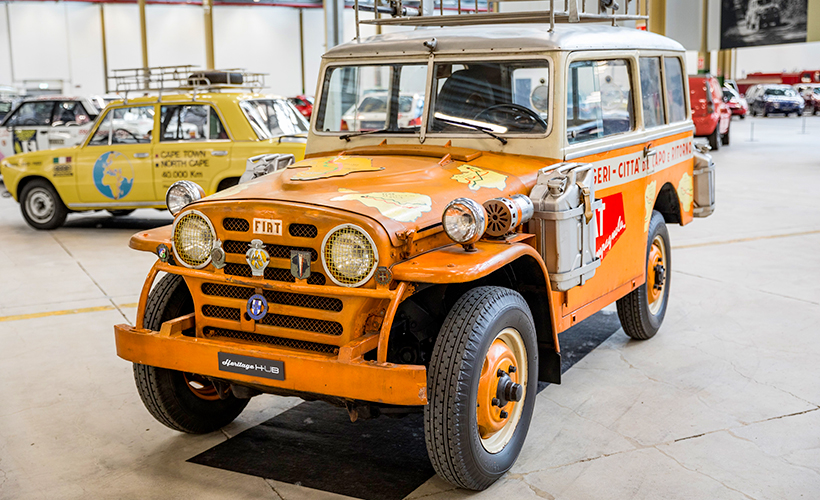
The glorious Fiat Campagnola, protagonist of the epic African adventure, is proudly displayed in the Heritage HUB in Turin in the ‘Epic Journeys’ section, exhibiting proof, even today, of the soundness and strength of a vehicle whose glorious feat will forever remain imprinted in the history of motoring.
Ford jeep
Ford GPW
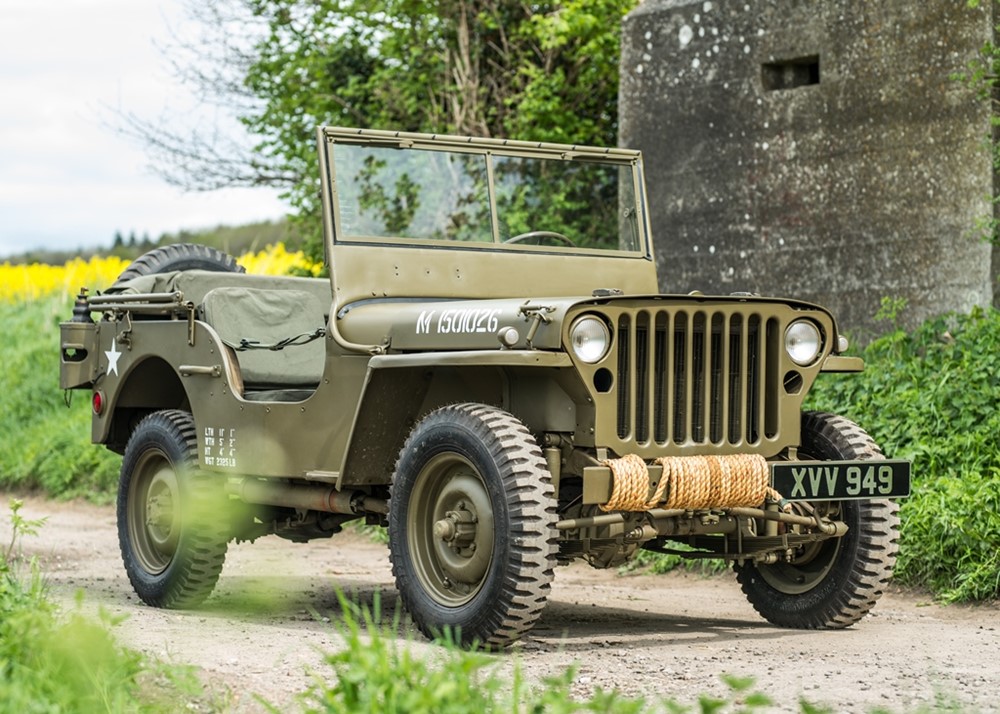
1942 Ford Jeep (GPW).
“The Ford GPW revolutionized transport during WWII. Its fantastic manueverability meant it could go anywhere and it effectively replaced horses which had been used in the First World War. If you want to go somewhere, you take a Jeep.”
In Polybattle, the GPW is an extremely agile transportation vehicle. It is much faster than the UAZ, beating it out by 20 MPH in top speed with faster acceleration to boot. Like the UAZ, however, it lacks any sort of armor and is vulnerable to landmines, recoilless-cannons, auto-cannons and tank guns.
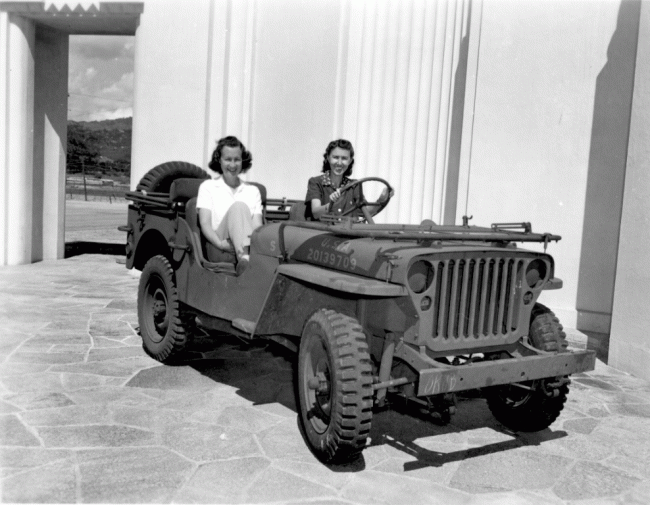
From the Hawaii War Records Depository, the two women shown below in this Ford GPW were the only women authorized in Hawaii to drive jeeps as of November 1942. The photo was taken November 03, 1942.
The GP offers even less cover for players, however, considering how fast the GP goes, getting shot at is not much of a problem as it's going to be hard for inexperienced players to hit you.
In terms of armament, the GPW sports a singular M2 Browning mounted on an M31 pedestal mount. The Browning has a larger aiming radius than the UAZ's M249 and it does much more damage. This allows the gunner to provide suppressive fire in a combat situation, although they are vulnerable to gunfire due to lack of cover.
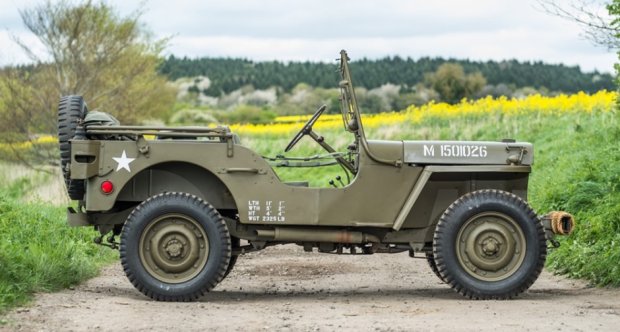
1942 Ford jeep GPW.
The Ford GPW has a long history of test designs that date to 1919. The GPW was one of the final designs and would see huge amounts of use in WWII, with hundreds of thousands being produced. Its suspension and all-wheel drive made it extremely good for moving soldiers and it could be equipped with a 500-LB trailer to move supplies.
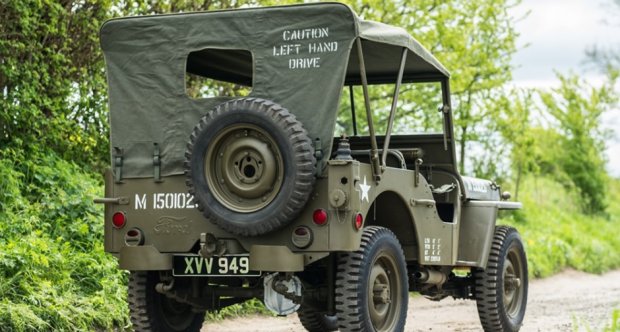
1942 Ford jeep GPW.
The trailer and other modifications made the GP a very versatile vehicle that would be used in all sorts of situations both in and out of combat during and after WWII. While it certainly is showing its age compared to newer transportation vehicles such as the HMMWV, it is still a fantastic option for getting to places.
Ford Pygmy
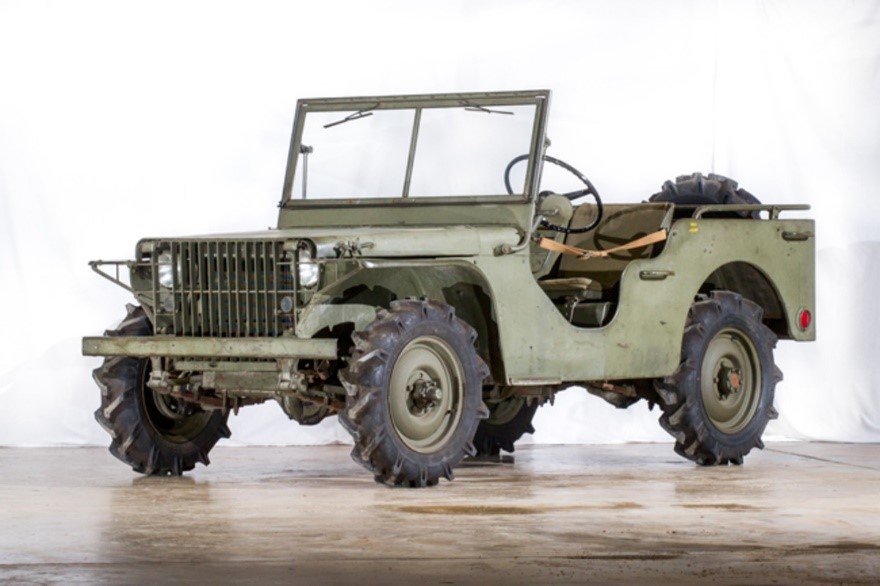
The 1940 Ford Pilot Model GP-N. 1 Pygmy features a low silhouette, a flat-hood and a slat-grille incorporating the headlights within the body for protection. GP-N. 1 remains almost entirely unrestored. Photo courtesy of the U.S. Veterans Memorial Museum / John Omenski.
The Ford Pygmy is one of two pilot vehicles submitted by Ford in response to the U.S. Army's requirement for a "light reconnaissance and command car" during the military build-up prior to World War II, which later became better known as the World War II jeep.
The Pygmy is the oldest known survivor of the original 1⁄4-ton pilot vehicles tested by the Army, delivered to them six days before the oldest surviving competitor.
Ford M151
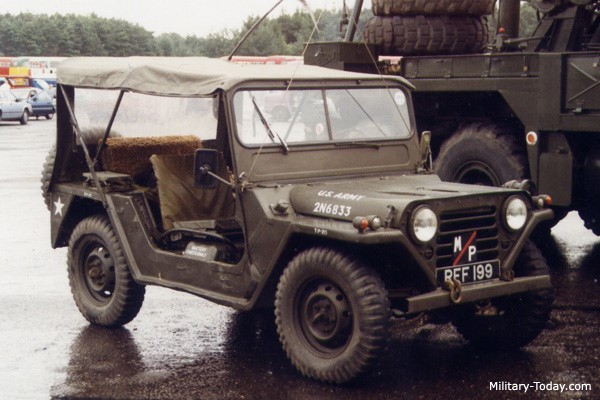
The M151 MUTT is still in service with over 60 countries around the world.
The Truck, Utility, ¼-Ton, 4×4, M151 or simply M151 was the successor to the Korean War M38 and M38A1 jeep Light Utility Vehicles. The M151 had an integrated body design which offered a little more space than prior jeeps and featured all-around independent suspension with coil springs. It has since been replaced by the larger AM General HMMWV in most utility roles in frontline use. With some M151A2 units still in U.S. military service in 1999, the M151 series achieved a longer run of service than that of the World War II/Korean War-era MB/GPW, M38 and M38A1 series combined.
Ford Bronco
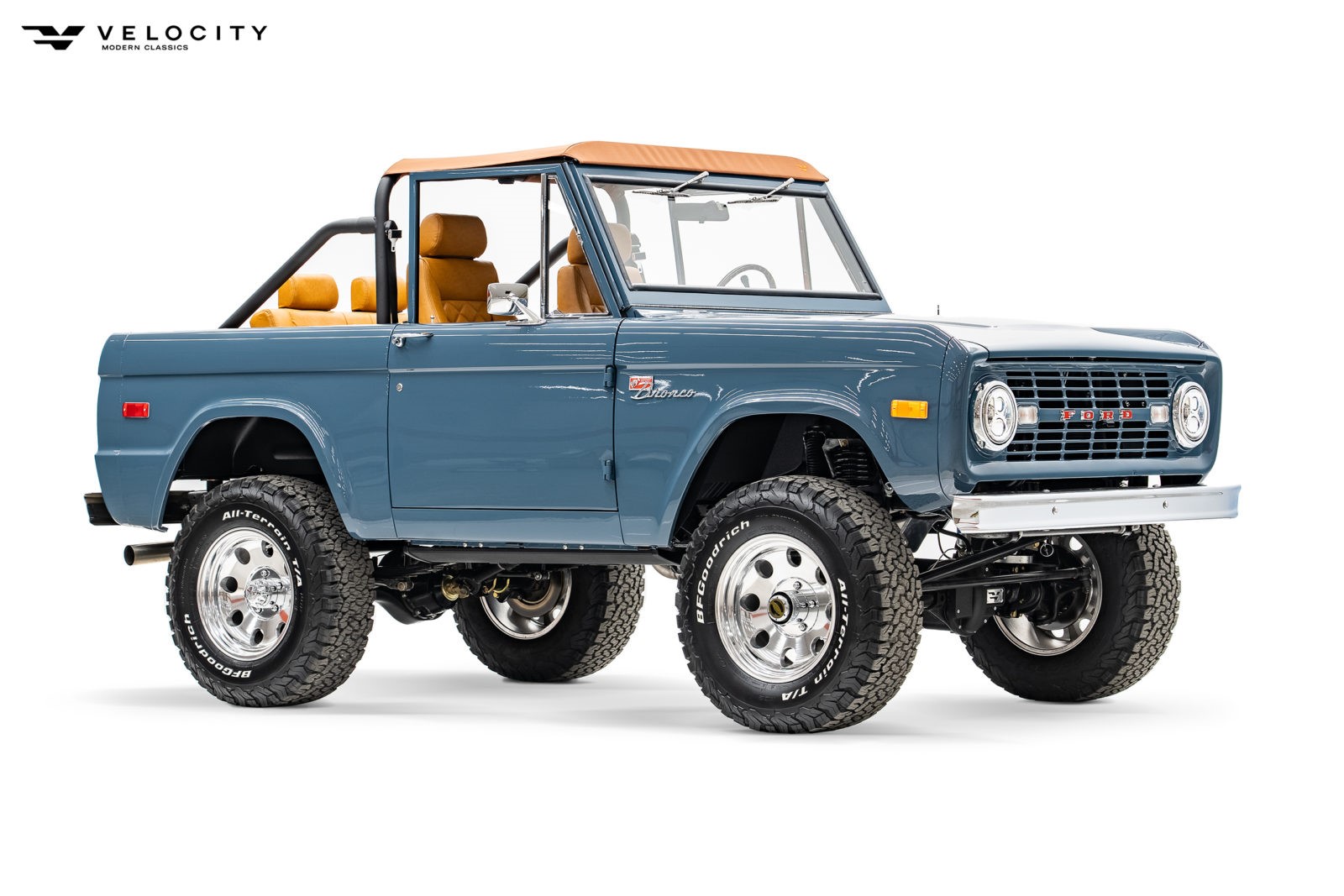
A classic Ford Bronco.
The Ford Bronco is a model line of sport utility vehicles manufactured and marketed by Ford. The first SUV model developed by the company, five generations of the Bronco were sold from the 1966 to 1996 model years. A sixth generation of the model line was introduced for the 2021 model year. The nameplate has been used on other Ford SUVs, namely the 1984–1990 Bronco II compact SUV and the 2021 Bronco Sport compact crossover.
Originally developed as a compact off-road vehicle using its own chassis, the Bronco initially competed against the Jeep CJ-5 and International Harvester Scout. For 1978, Ford enlarged the Bronco, making it a short-wheelbase version of the F-Series pickup truck; the full-size Bronco competed against the Chevrolet K5 Blazer and Dodge Ramcharger.
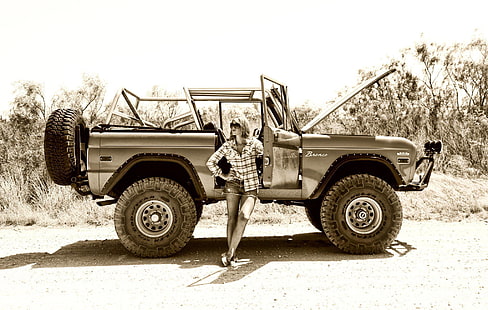
A girl and a Ford Bronco.
Following a decline in demand for large two-door SUVs, Ford discontinued the Bronco after the 1996 model year, replacing it with the four-door Ford Expedition; followed by the larger Ford Excursion. After a 25-year hiatus, the sixth-generation Bronco is now offered as a mid-size two-door SUV for the first time. It is also offered as a full-size four-door SUV with a 16 in (41 cm) longer wheelbase. It competes directly with the Jeep Wrangler as both a two-door and a four-door (hardtop) convertible.
From 1965 to 1996, the Ford Bronco was manufactured by Ford at its Michigan Truck Plant in Wayne, Michigan, where it will also manufacture the sixth-generation version.
Hummer
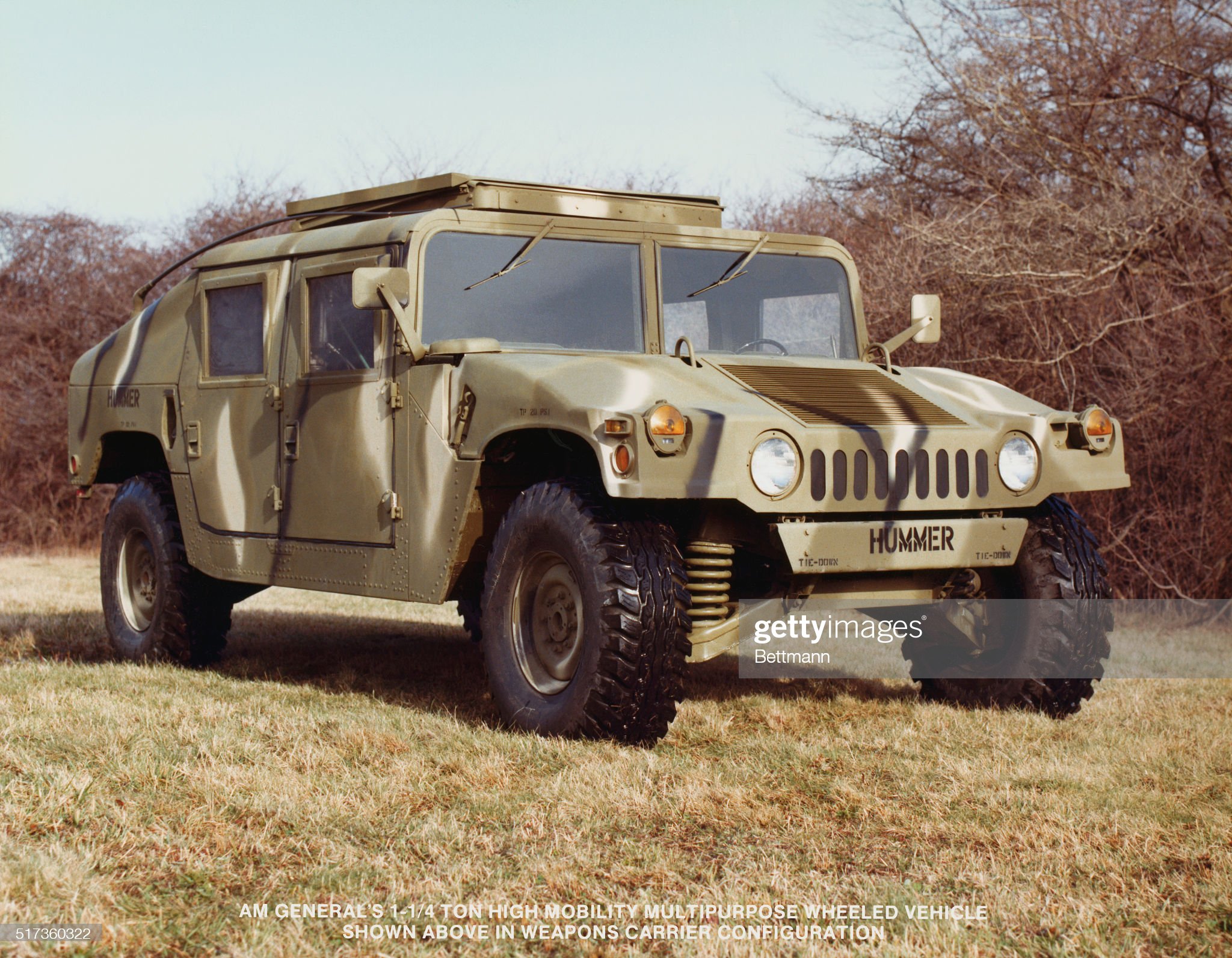
Detroit, Michigan: AM General Corporation, a subsidiary of American Motors Corporation, has been awarded a 1.2 billion contract by the U.S. Army (March 22th), to build a low-slung, diesel-powered 1 1/4 ton tactical vehicle called the Hummer. The new all-terrain vehicle, short for high-mobility, multi-purpose wheeled vehicle, will be assembled near South Bend, Indiana. The Hummer will be the successor to the Jeep. Photo by Getty images.
Hummer (stylized as HUMMER) is a brand of pickups and SUVs that was first marketed in 1992 when AM General began selling a civilian version of the M998 Humvee. Although discontinued in 2010, Hummer returned as a sub-brand of GMC in 2020. In 1998, General Motors (GM) purchased the brand name from AM General and marketed three vehicles: the original Hummer H1, based on the military Humvee, as well as the new H2 and H3 models that were based on smaller, civilian-market GM platforms.
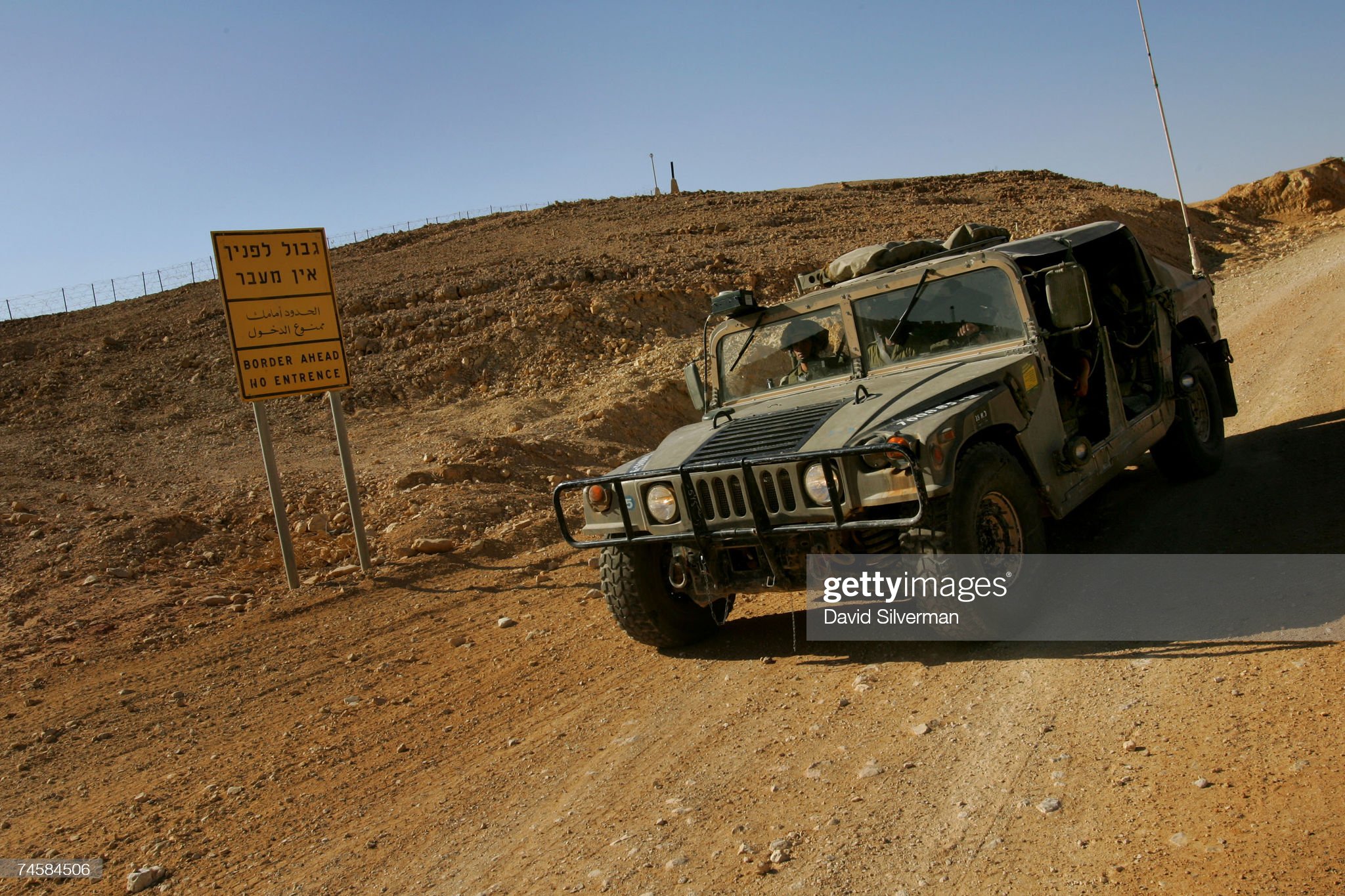
Soldiers from the Israeli army's Caracal battalion patrol in a Hummer on June 12, 2007, along the Israeli-Egyptian border north of Eilat. Photo by David Silverman / Getty Images.
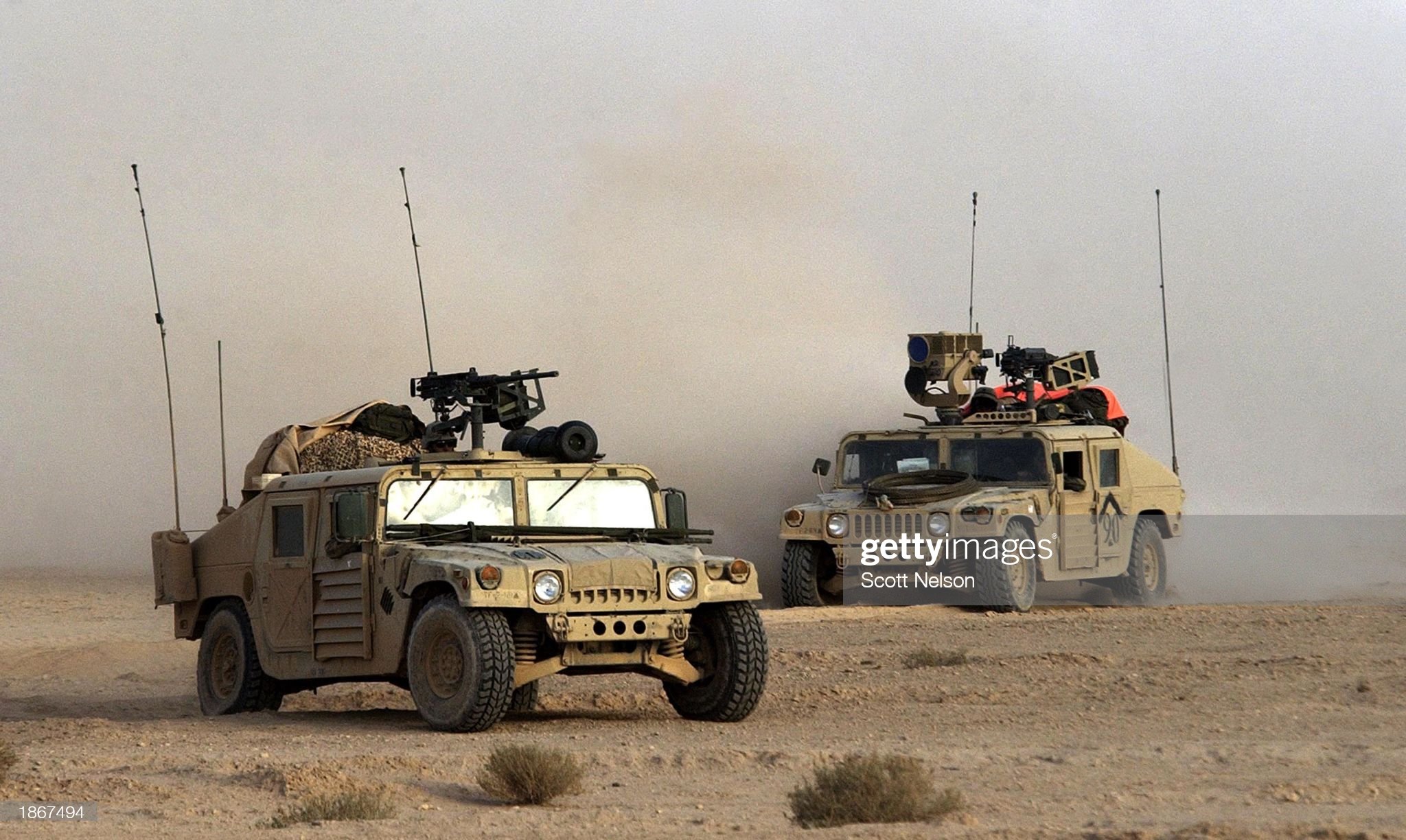
U.S. Army 3rd Infantry Division Scout humvees move deeper into Iraqi territory on March 23, 2003 south of the city of An Najaf, Iraq. Photo by Scott Nelson / Getty Images.
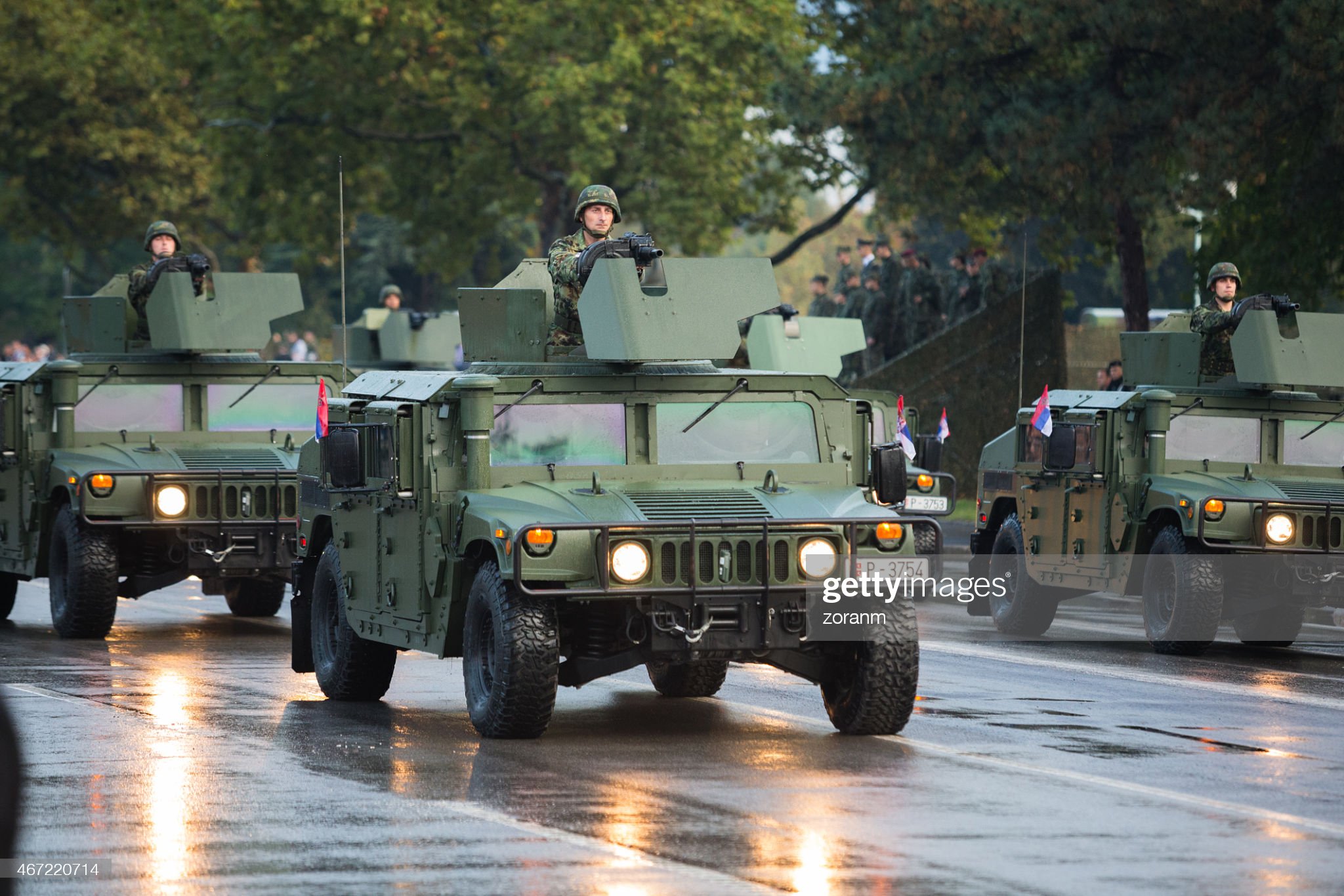
October 16, 2014: Serbian military in Hummer vehicles equipped with automated granade launcher, participating in military parade held in Belgrade.
By 2008, Hummer's viability in the economic downturn was questioned. Rather than being transferred to the Motors Liquidation Company as part of the GM bankruptcy in 2009, the brand was retained by GM, to investigate its sale. No final deal was made and, in 2010, Hummer dealerships began shutting down.
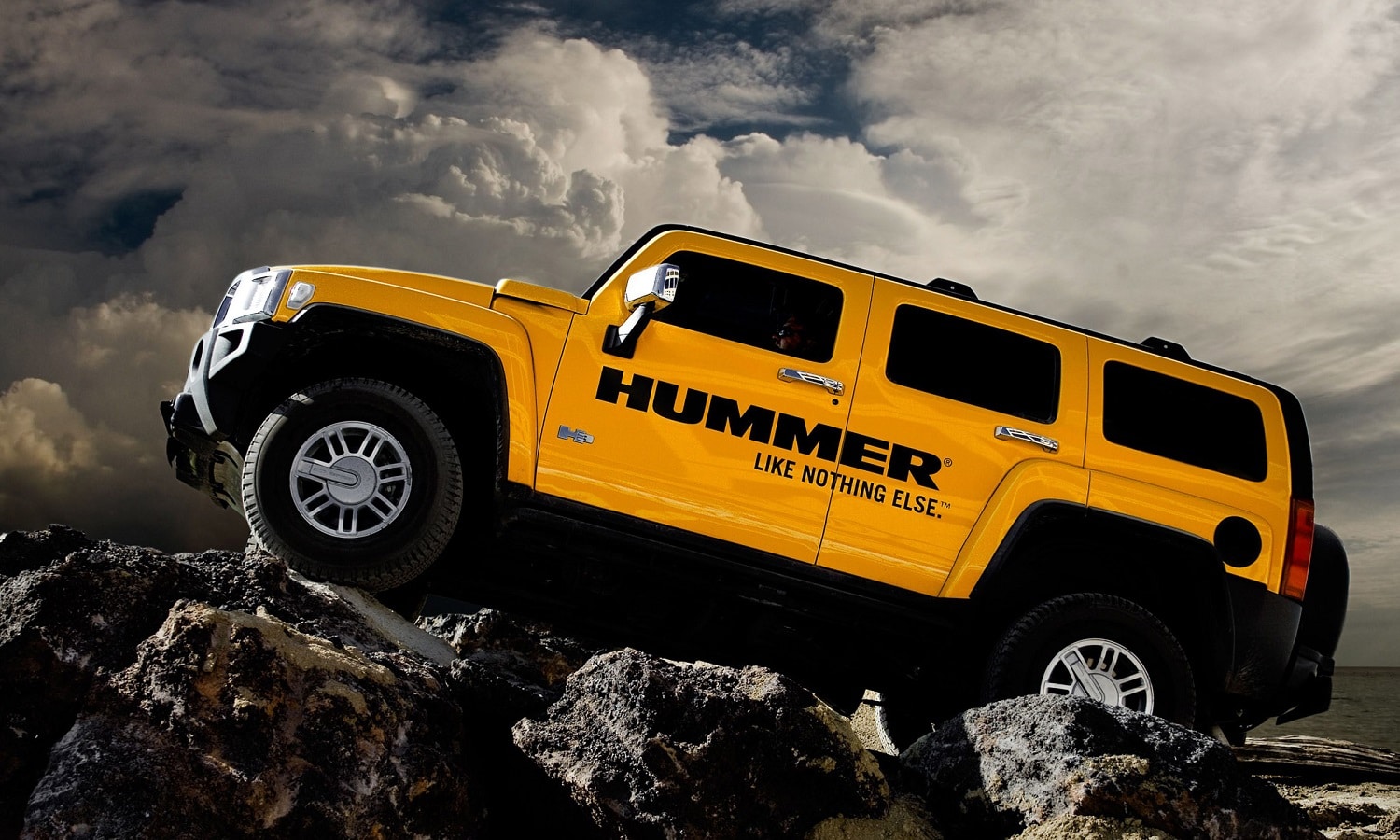
A Hummer H3.
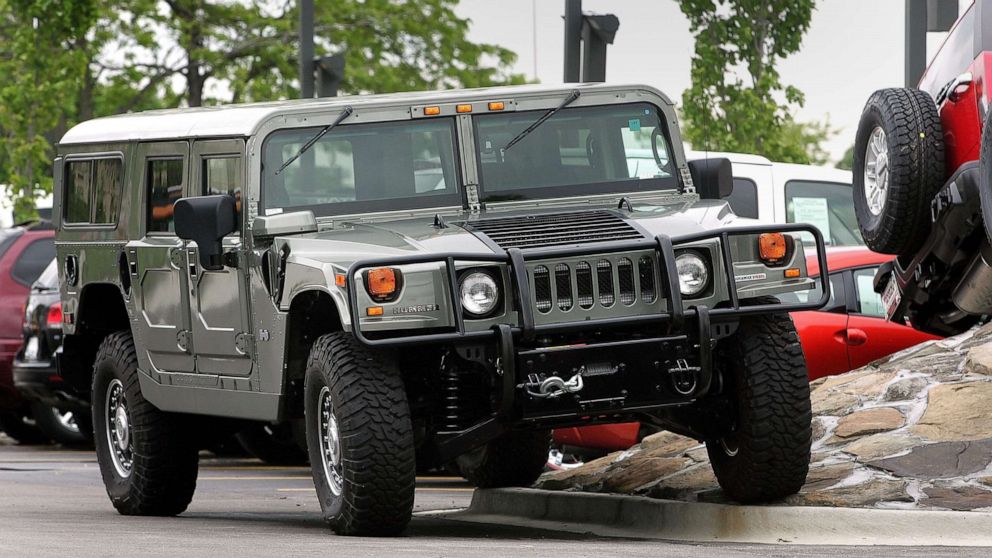
A Hummer H1.
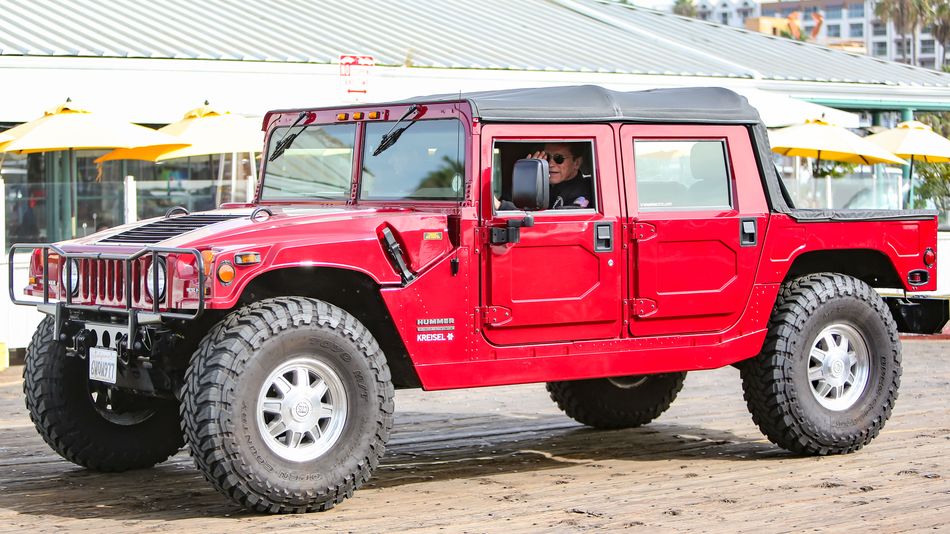
A Hummer.

Hummer girls.
The nameplate returned to the marketplace for the 2022 model year not as a separate make brand, but as electric pickup truck and SUV models sold under the GMC brand as the "GMC Hummer EV". The pre-production versions of the EV began November 2021 after a $2.2 billion investment to build a variety of all-electric vehicles in GM's Detroit-Hamtramck assembly plant.
Lada Niva
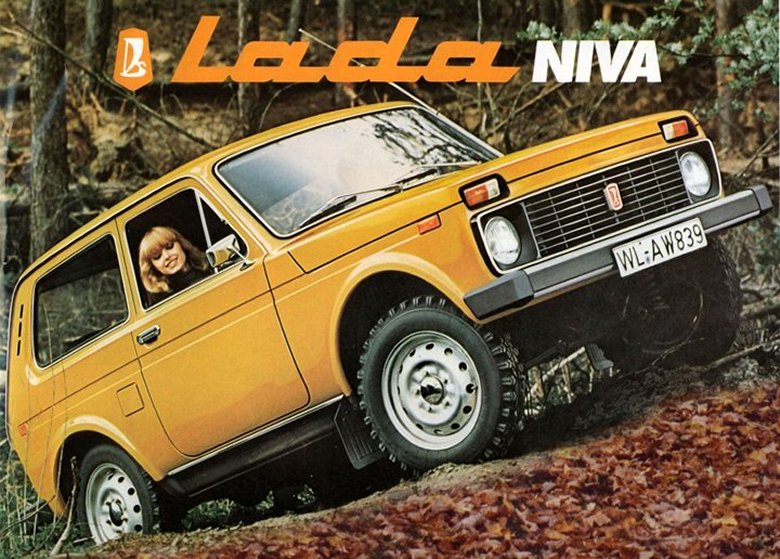
The Lada Niva Legend, formerly called the Lada Niva, VAZ-2121, VAZ-2131 and Lada 4×4 (Russian: ВАЗ-2121, ВАЗ-2131, Лада Нива), is a series of four-wheel drive - small (hatchback) - and compact (wagon and pickup) off-road cars designed and produced by AvtoVAZ since 1977. Initially aimed at the rural market, later models also targeted urban users. The three - and later five - door 4×4 hatchbacks were sold under the Lada marque in many markets and have been in continuous production since 1977.
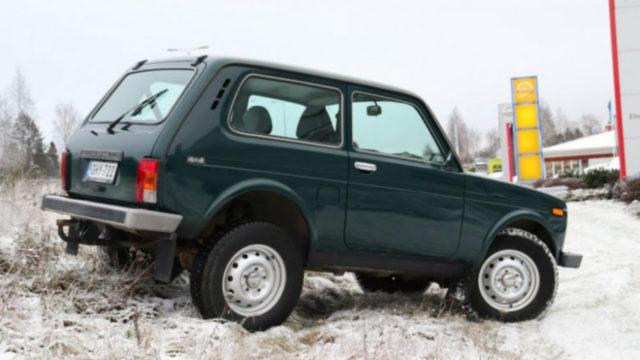
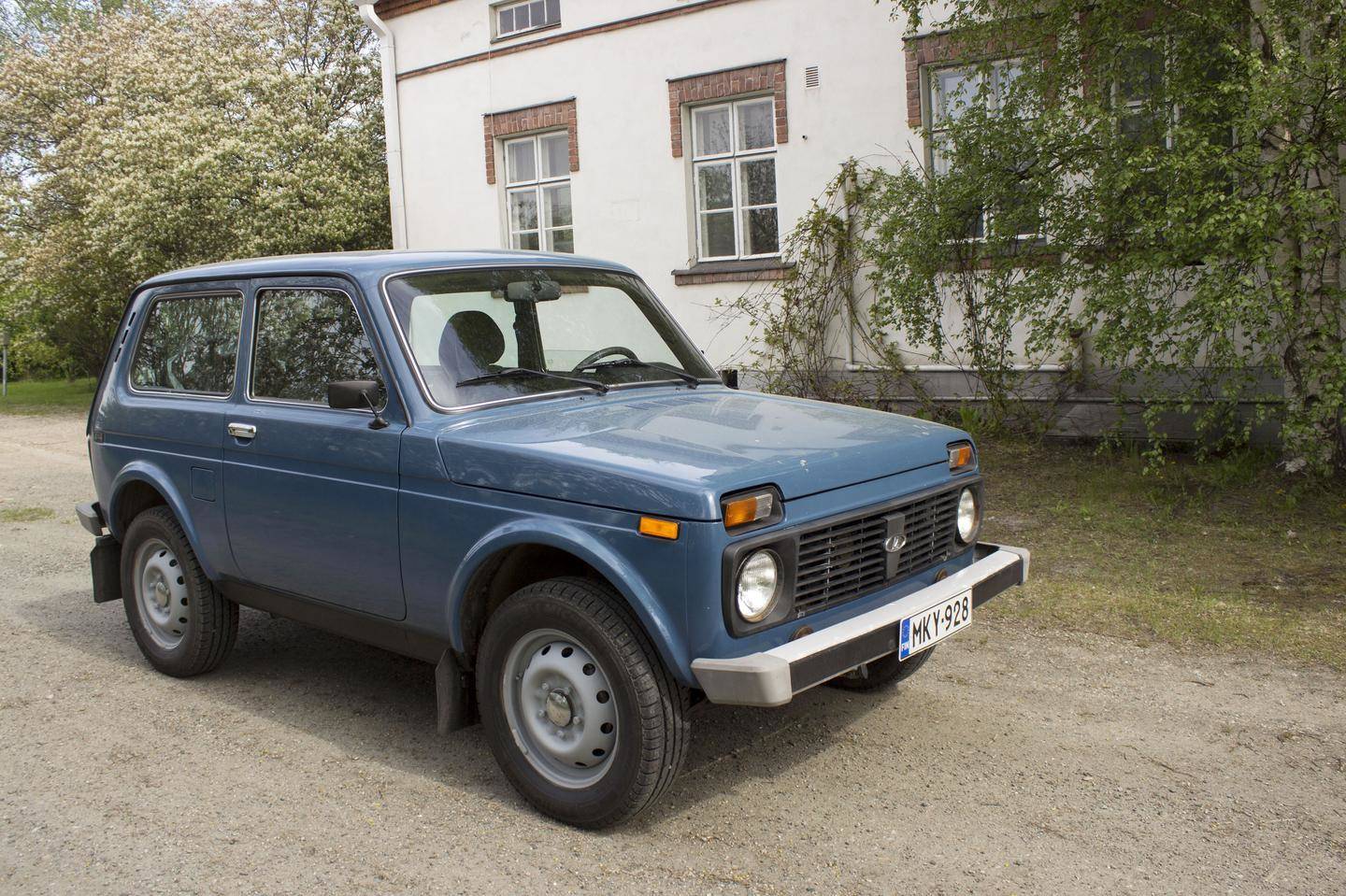
In the 1990s, three and five-door wagons on a 50 cm (20 in) longer wheelbase and an extra-long wheelbase pick-up were added to the range. After the original Land Rover and its successor, the Land Rover Defender, were discontinued in 2016, the Niva became the longest production run off-road light vehicle still manufactured in its original form. By the end of 2020, an estimated 650,000 Lada Nivas had been sold globally.
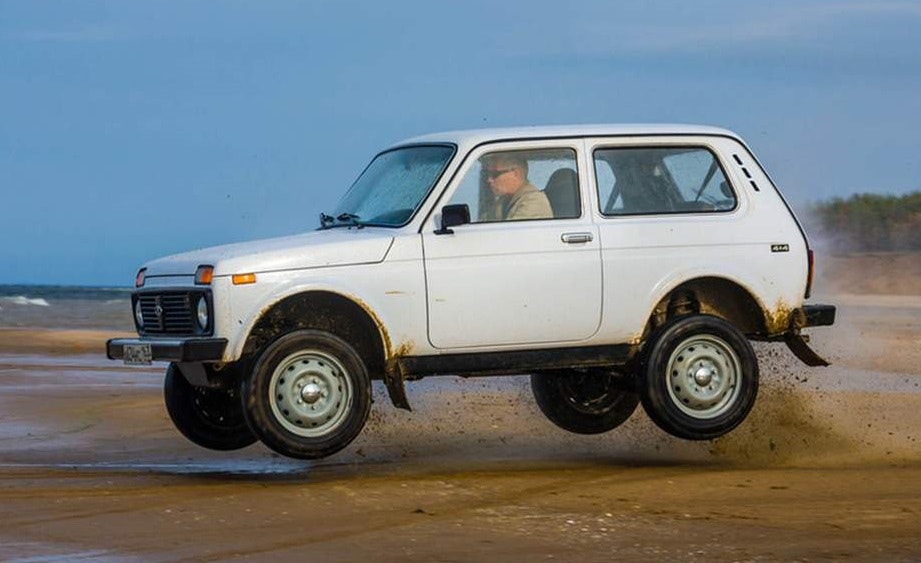
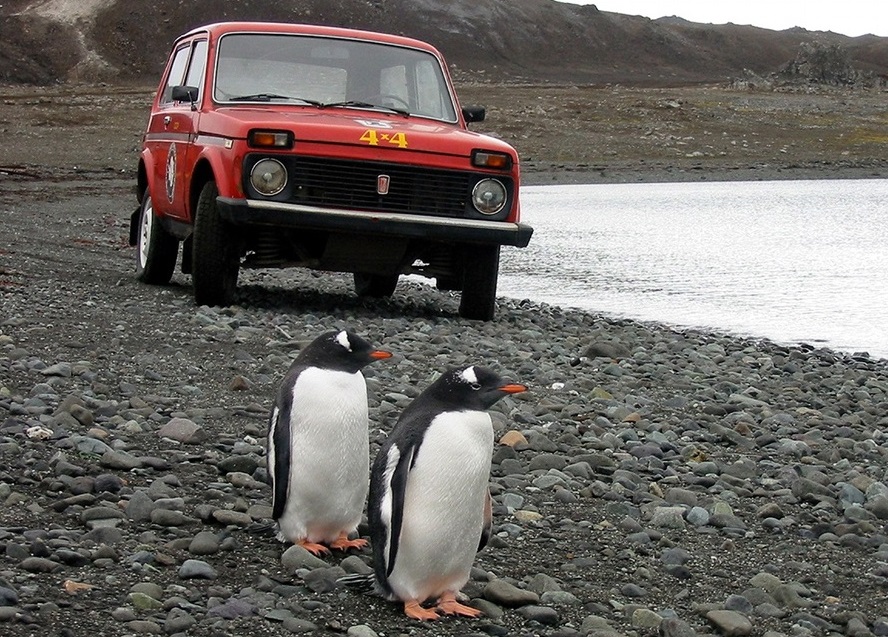
The Lada Niva is the world's first mass-produced off-road vehicle with a unibody construction (fully integrated body and frame). It is the predecessor of current crossover SUVs, most of which are built similarly. It was part inspiration for the Suzuki Vitara.
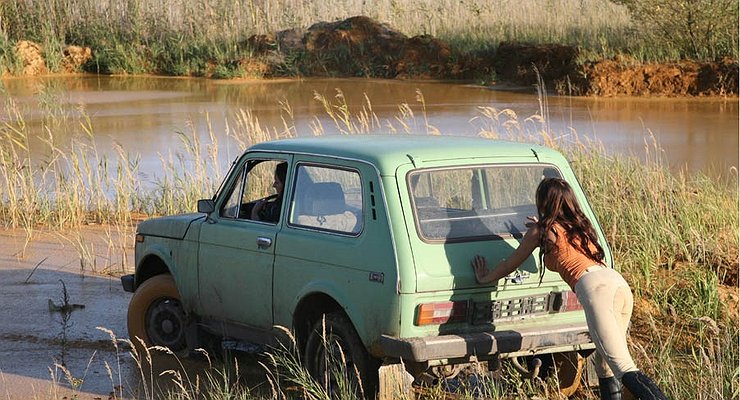
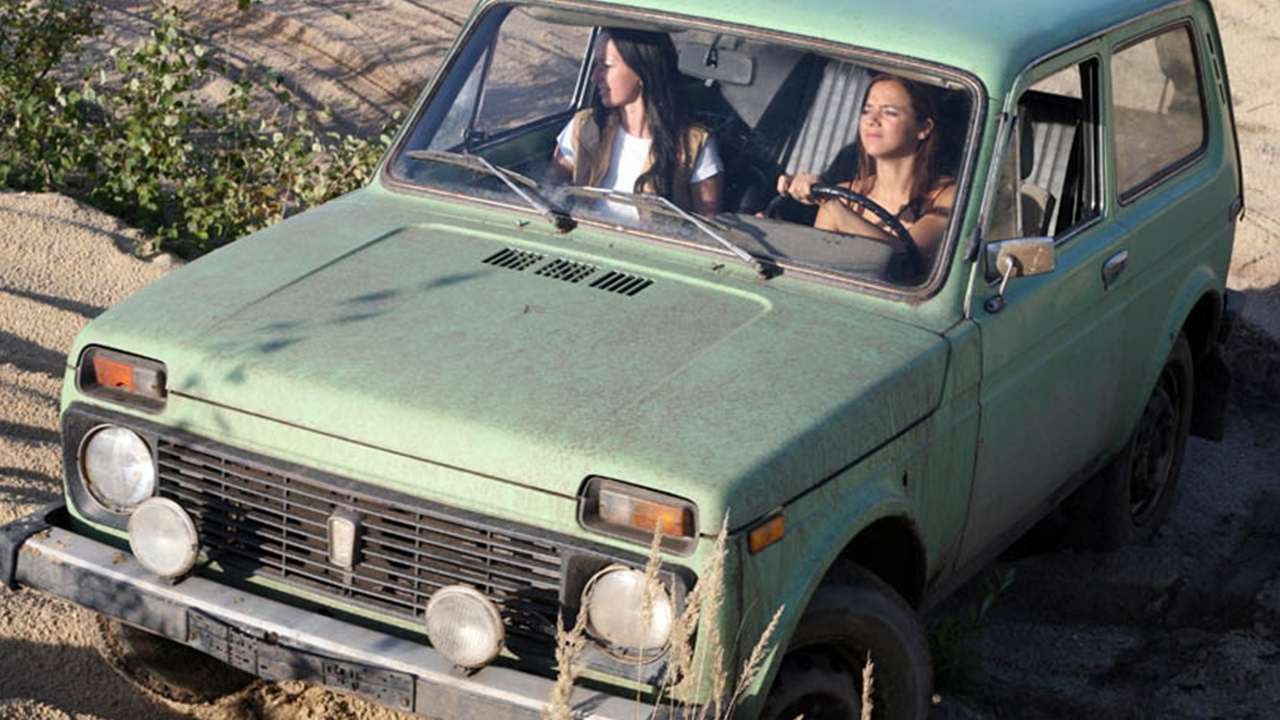
In August 2020, Lada took over production of the 2003 Chevrolet Niva and rebranded it the "new" Lada Niva. In December 2020, the new Niva was further rebranded as the Lada Niva Travel, while the old model was renamed Lada Niva Legend in January 2021.
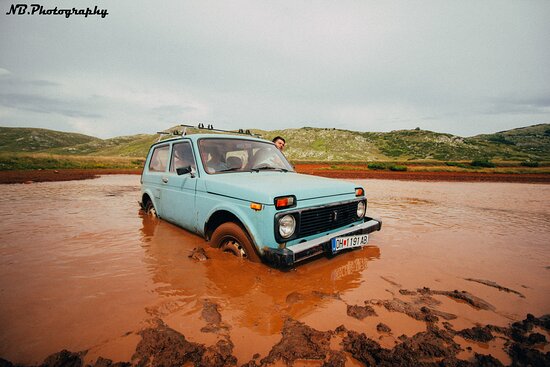

Outside Russia, the Niva primarily competes with the Suzuki Jimny, a similarly designed off-road mini SUV.
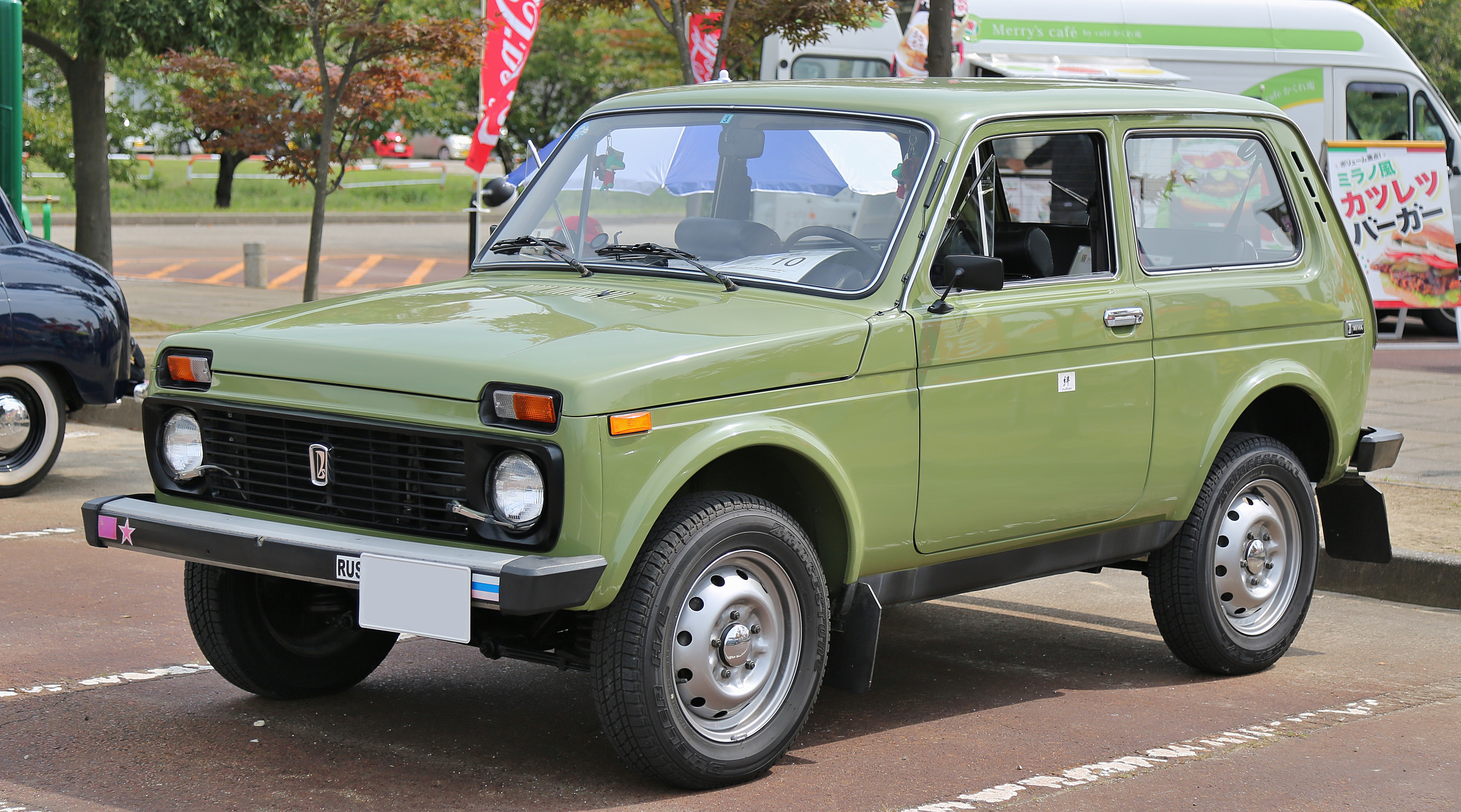
1987 Lada Niva.
Driving the Lada Niva: Russian icon still going strong in 2021. After almost 50 years of the toughest work, the Lada Niva finally has its retirement planned. We pay tribute.
This isn’t a review, which is handy, because it means I can get one slightly awkward truth out of the way straight off the bat: the Lada Niva is not, objectively and with full view of today’s automotive market, an easy car to recommend to anyone.
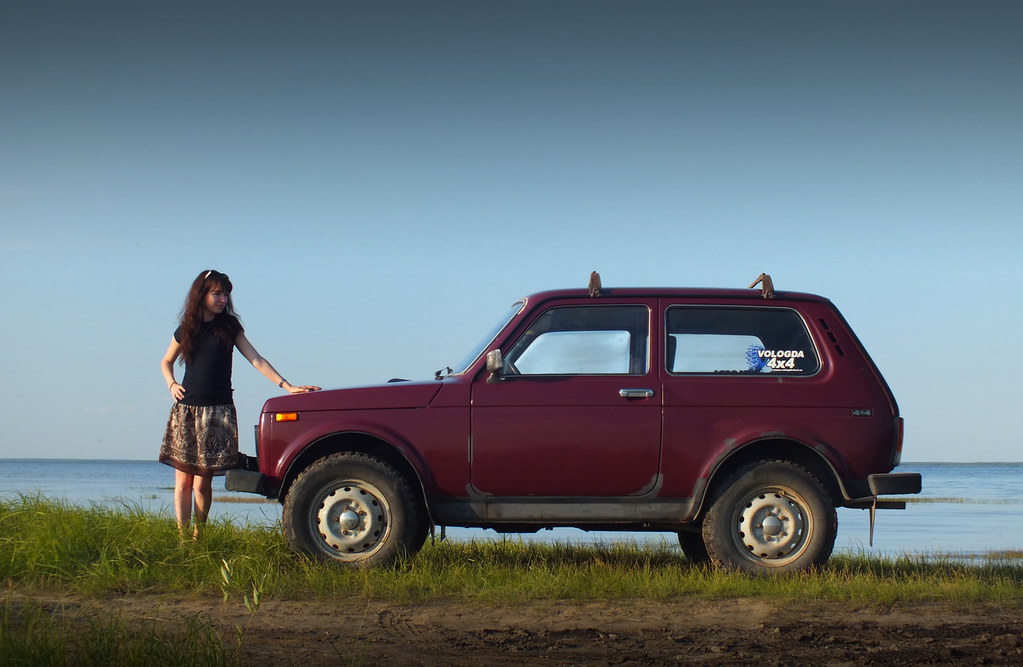
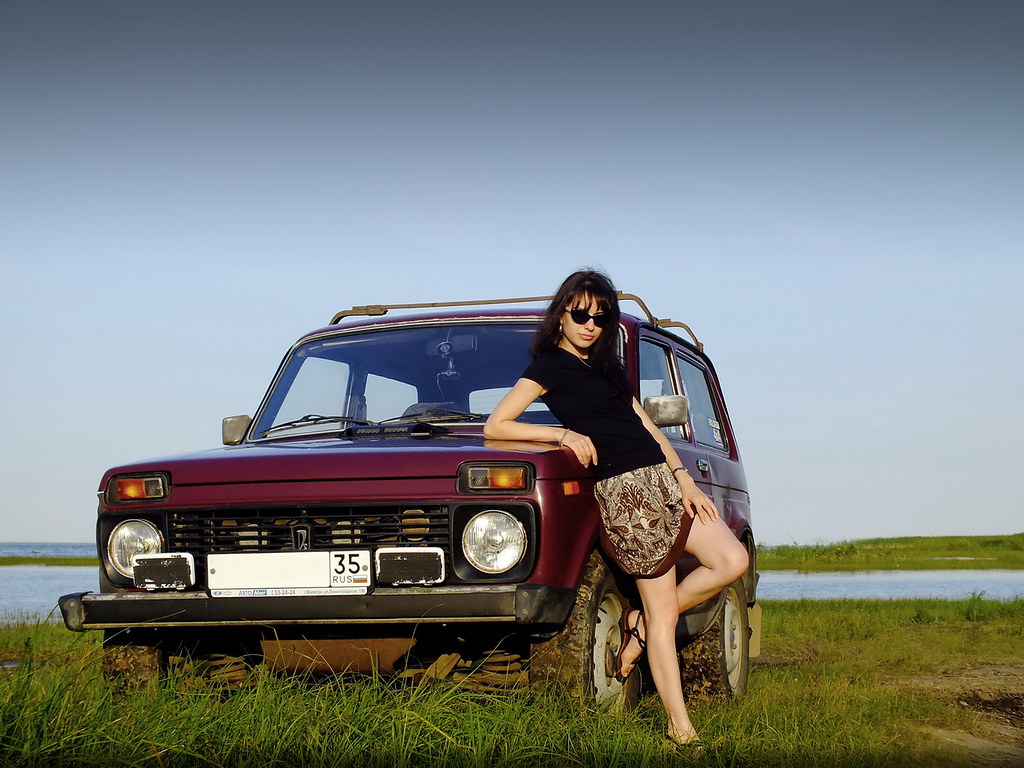
That might not surprise you, given it has been on sale mostly unaltered since 1977 and its positioning as a no-frills workhorse means it has never, nor will ever be, the recipient of the efficiency-enhancing and refinement-boosting upgrades that we’ve long taken for granted on new cars across the board. It trades instead mostly (and to great effect) on its affordability, durability and unstoppability.
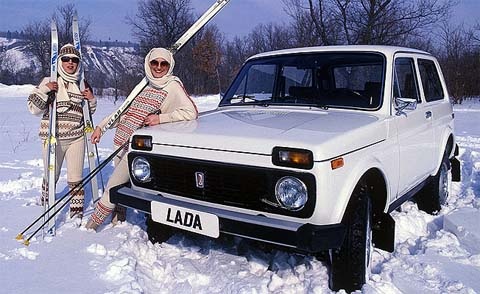
A Lada Niva from Soviet Union.
But time marches on and now, almost half a century since the final Niva prototype was deemed ready for production, a date has been set for the end of production. Which is why we find ourselves here, penning the latest in a series of heartfelt automotive eulogies, instalments in which most recently bade farewell to such segment-shakers as the BMW i8, McLaren 570S and Toyota 86. That’s odd company for this no-nonsense, agricultural 4×4 (which, let’s remember, hasn’t been sold officially in Australia since 1998) to keep. But in terms of its potential endurance in collective memory, the Niva arguably stands head and shoulders above those more covetable contemporaries.
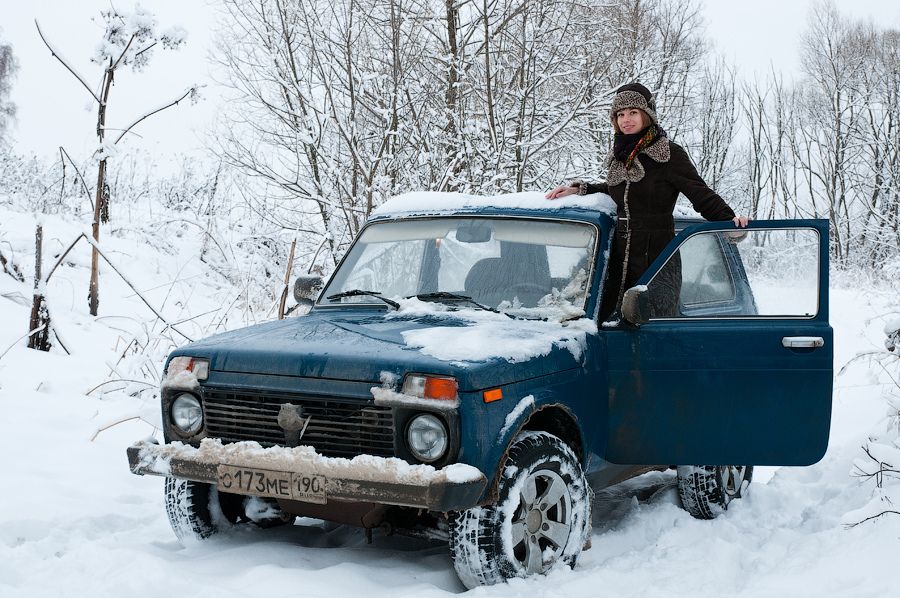
For starters, there’s the age thing. When the Niva was first shown to the Western public at the 1978 Paris motor show, Milton Keynes was only around a decade old, Abba were battling the cast of Grease for the top spot in the pop music charts and its country of origin would still be the Soviet Union for another 13 years. Not that modernity is or has ever been of much relevance to the Niva’s target market. It’s a purely functional off-roader with minimal concessions to such trivialities as driver pleasure, fuel economy or straight-line pace.
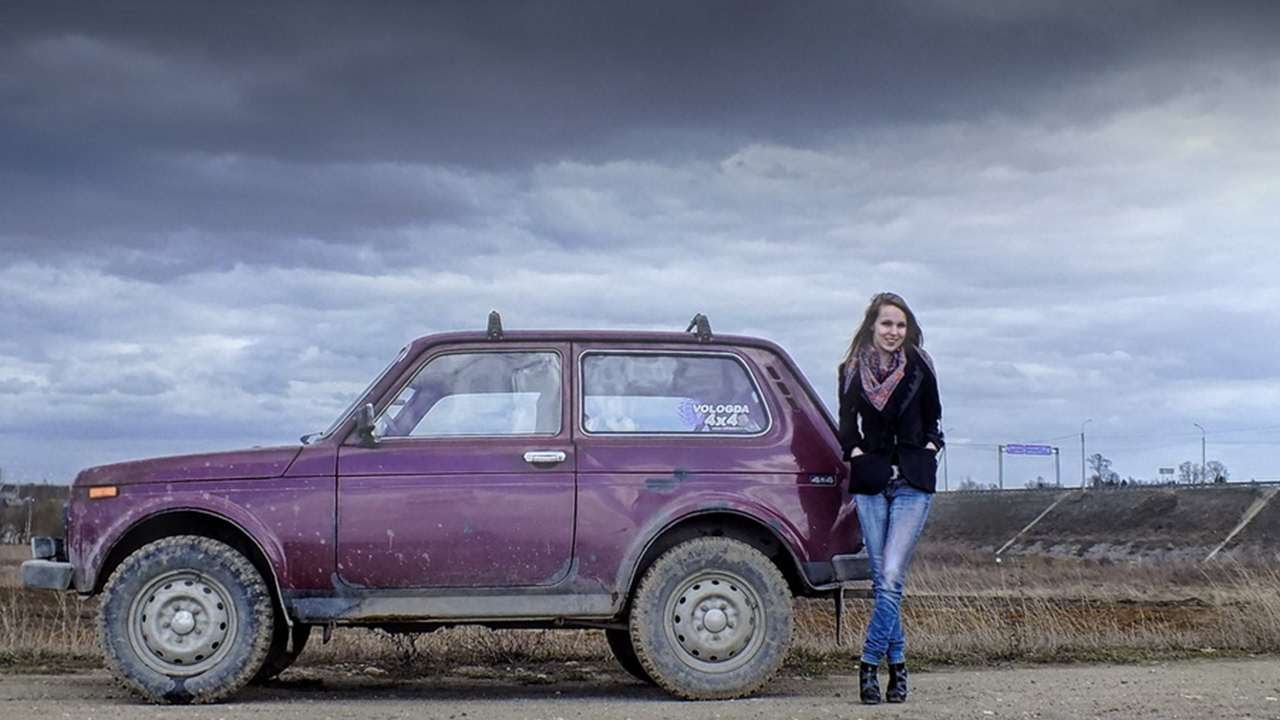
The Niva, then, was designed to be as comfortable churning through the frosty mud of a Siberian wheat field as it would be scaling a rocky outcrop on the edge of a Brazilian plain. So you will be unsurprised, again, to hear that its rugged charm doesn’t stand up to extended use on urban arteries, motorways or high streets.
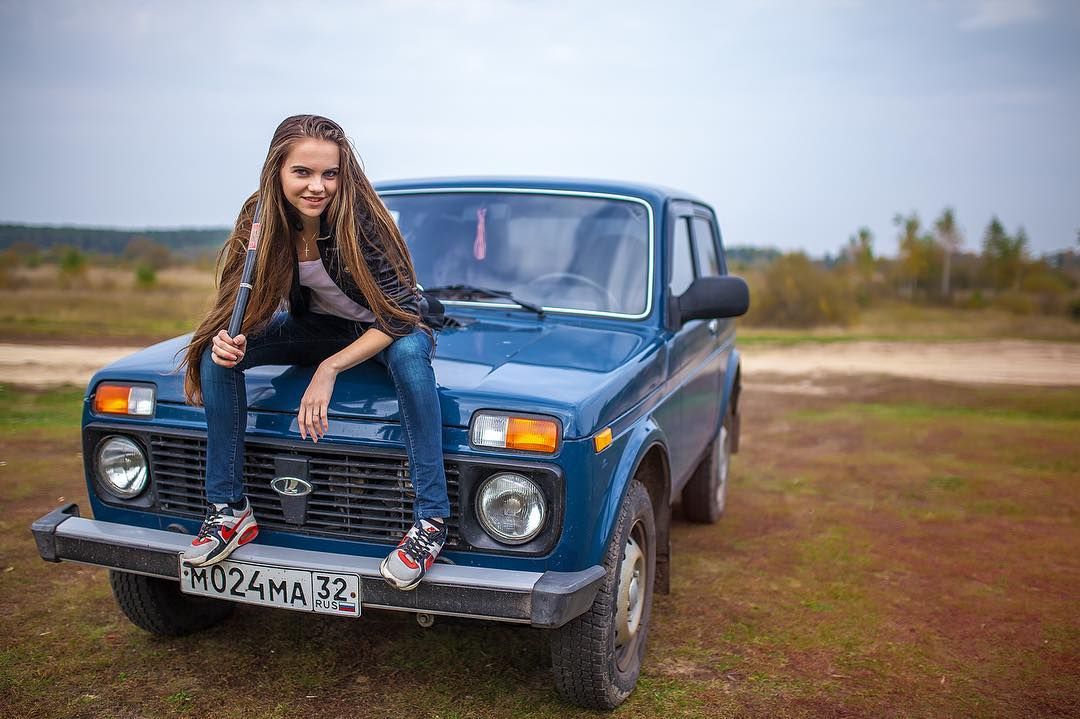
Once upon a time, the same criticism could have been levelled at the Land Rover Defender, the Jeep Wrangler and even the Mercedes-Benz G-Wagen, but those models have evolved into road-friendly (and, for the most part, premium-oriented) city slickers, whose stunning off-road ability comes a distant third to kerb appeal and model cachet on the list of reasons for their enduring appeal.

Not so the Niva, which has soldiered on with utility at the top of its to-do list for more than four decades, which is a big factor in why it remains so cheap. So even though you can bag a shiny new 21-plate example overseas, don’t expect it to offer a driving experience comparable with its closest western rivals.

The lack of a stereo unit in our UK-based test car is the biggest giveaway as to its workaday ethos. Well, that and the hilariously visible coil springs at each end, disconcertingly thin body panels, featureless dashboard and chunky diff-lock and transfer-box shifters on the centre console. It’s a bit of a palette-cleanser in today’s touchscreen-saturated and semiconductor-dependent new car market and one that’s not without a whiff of retro chic about it.
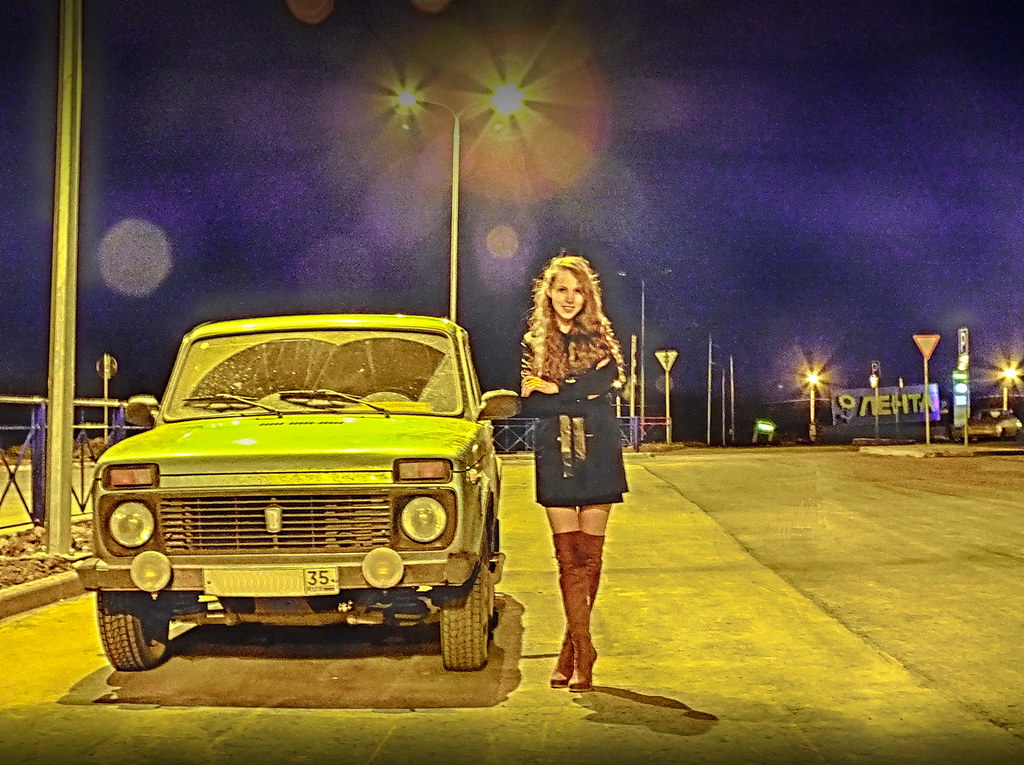
Lada Niva and a girl.
There are quirks and complaints to deal with, of course, not least that the gearstick is almost unreachable in first and third gears, despite the driver being positioned exactly where the designers intended and the indicator and high-beam stalks feel attached to the steering column only in spirit. You can only laugh at the separate ignition and door-lock keys - held together by a stylish translucent white ziptie - and the tangible drop in engine power that comes with the activation of the air conditioning.

In sensible driving situations and over short distances, though, it’s not half as arduous and exhausting to pilot as you might expect. There’s power steering, electric windows, air conditioning and even self-cancelling indicators (how very bourgeois), so once you’ve got over the ever-disorienting sensation of shifting with your right hand and the ever so slightly off-centre pedals, it’s a perfectly adequate runaround. Just get used to smiling and waving. A lot.
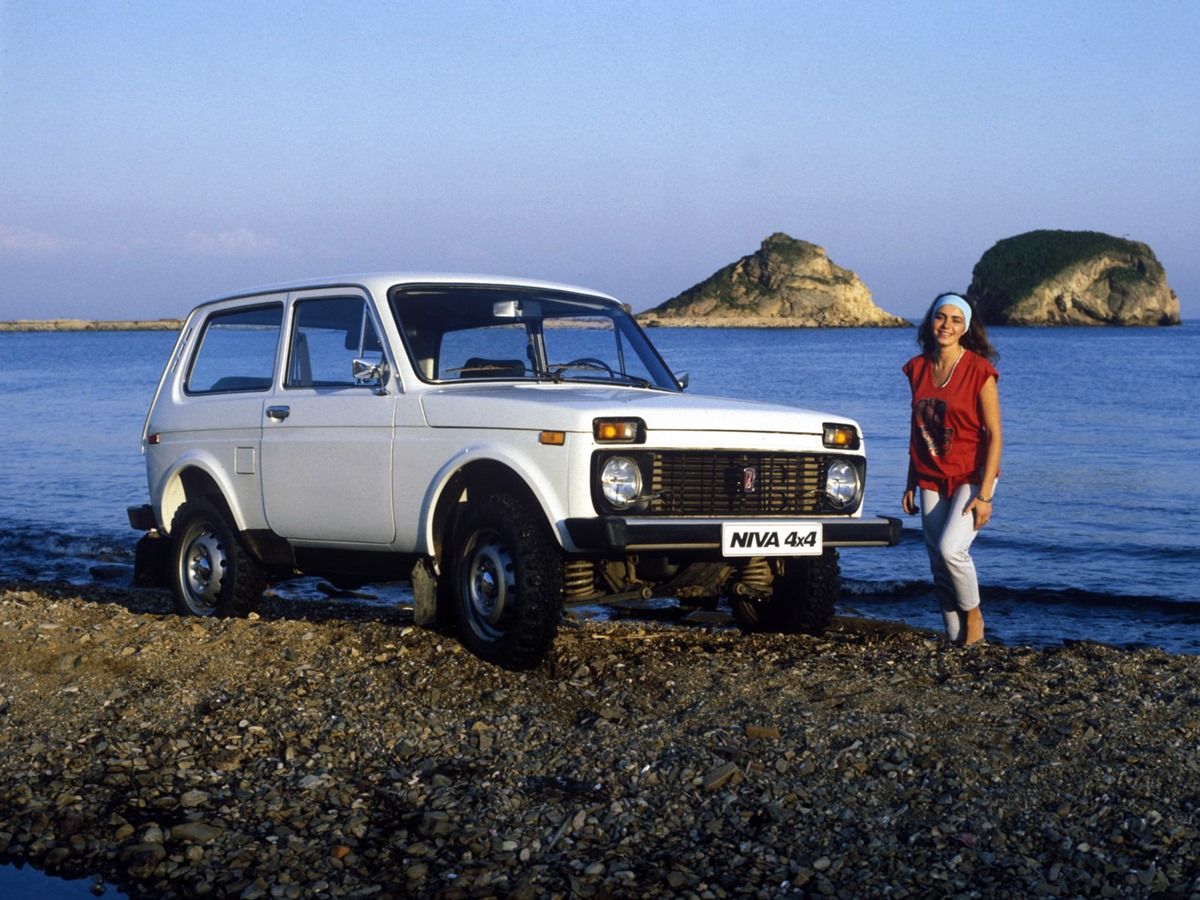
Soviet Lada Niva ad.
If you’ve ever driven an instantly recognisable classic like the Volkswagen Beetle, a once-commonplace relic such as the Morris Marina or even something as hilariously misplaced as the Hummer H2 on public roads, you will appreciate just how much joy such cars bring to other road users and passers-by. Park, say, an FSO Polonez behind a Lamborghini Aventador and see which one attracts the most attention. It’s the same with the Niva: for every grimace-inducing thump from the suspension, steering column creak or graunchy gearshift, you’re rewarded for your sacrifices with a van full of beaming builders, a thumbs-up from a jealous tree surgeon or a nostalgic gaze from a one-time Lada owner.
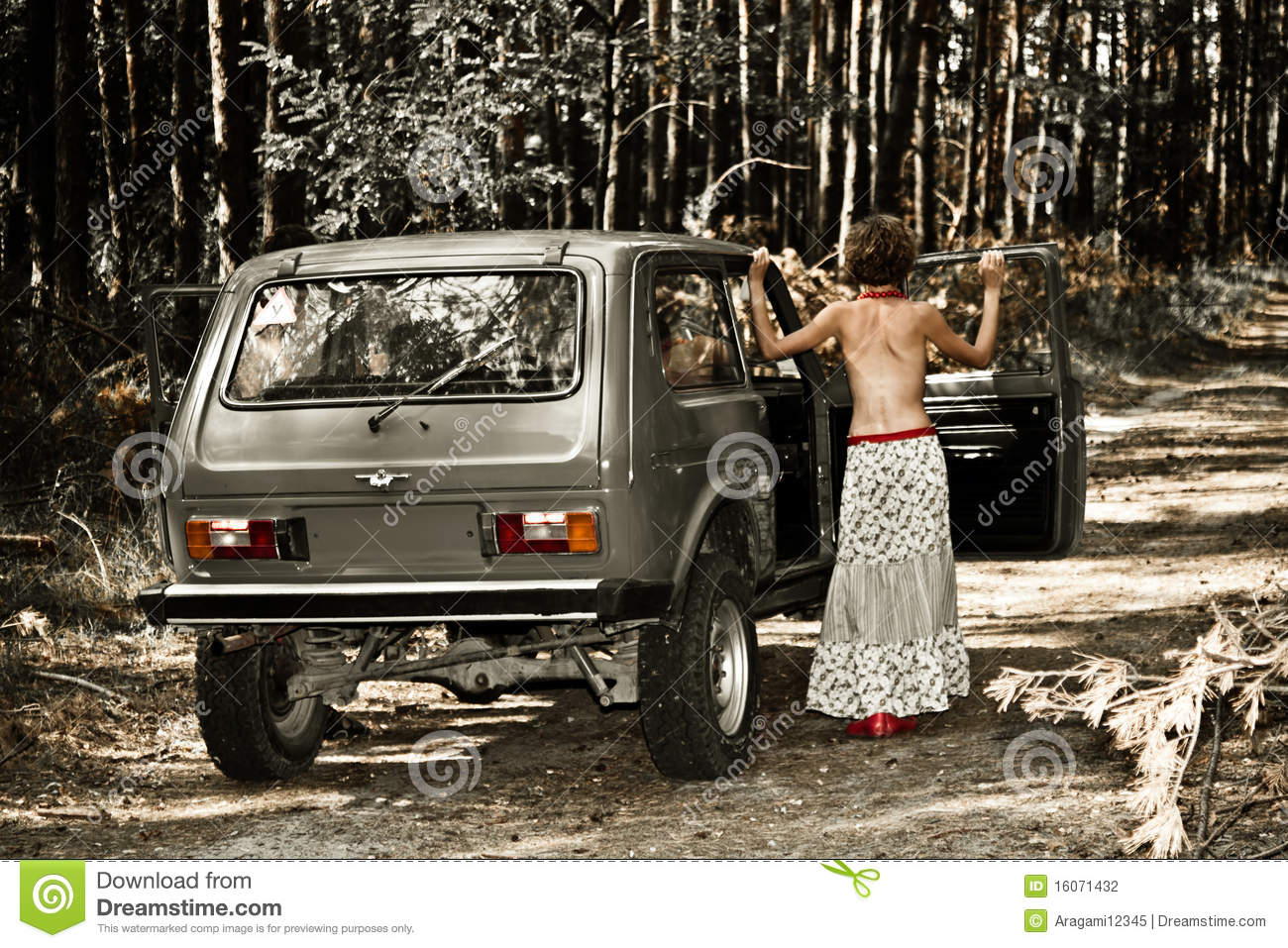
Vintage topless girl in front of a Lada Niva.
Rarity will do that to a car, of course, but when that exclusivity is paired with almost unparalleled accessibility, it’s a recipe for a real people-pleaser. And boy is the Niva accessible. In the UK where we are testing this example, Key’s imported examples are priced from £12,495 (AUD$23,846), which makes the Russian off-roader about as expensive as a base-spec Mazda CX-3 if you’re in the mood for a tenuous comparison.
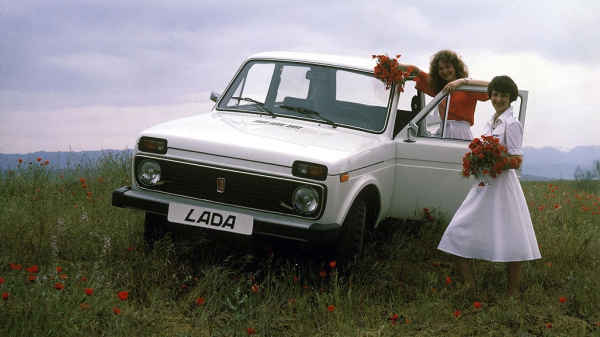
In the interests of full disclosure, the Terra Brown-painted Luxe model you’re looking at here costs the equivalent of around $35,000 (by virtue of its far jazzier alloy wheels, electric windows and aircon), which is about what you will pay for a Suzuki Jimny on the road.
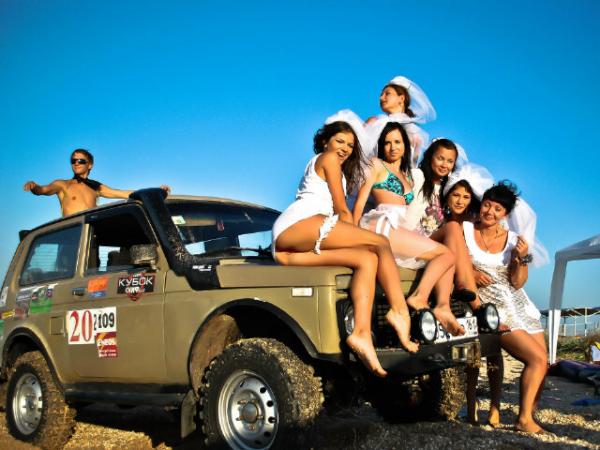
Lada Niva and hot girls.
The Niva could show its closest-priced rivals a clean pair of mudflaps on the rough stuff, too, with the not insignificant benefit that you won’t be so worried about dings and scrapes. Hell, a battered old 4×4 looks 10 times more purposeful and well used than a pampered example, so get it mucky.
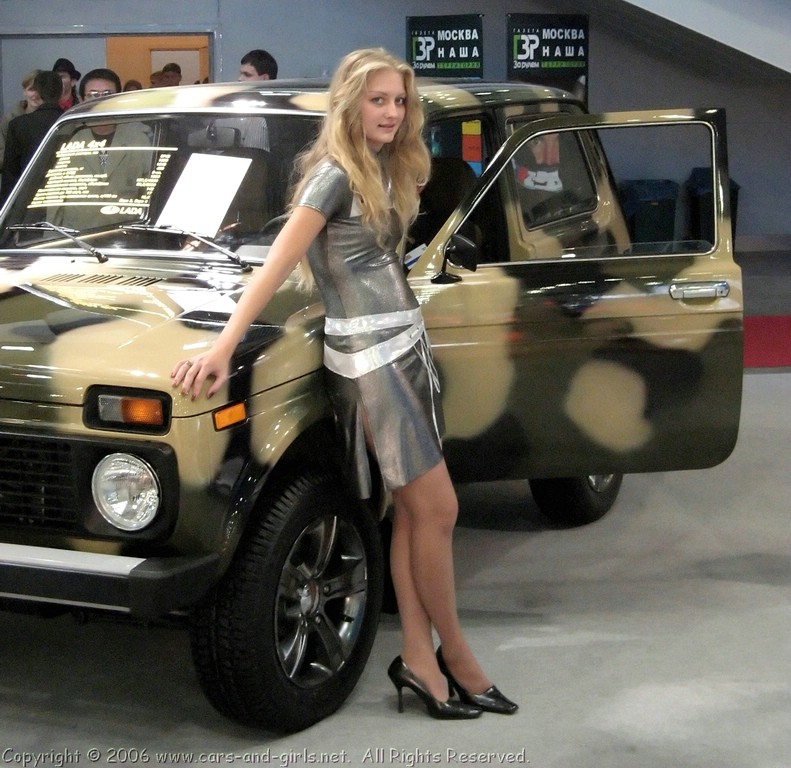
It will reward you for it; impressive axle articulation, yards of ground clearance and a low kerb weight mean it scampers across rutted fields like a hyperactive collie, can ford a decent-sized river and doesn’t get bogged down in the gloopier sections. Such competence on the route less travelled goes some way to making up for its, shall we say, uncompromising approach to daily driving.
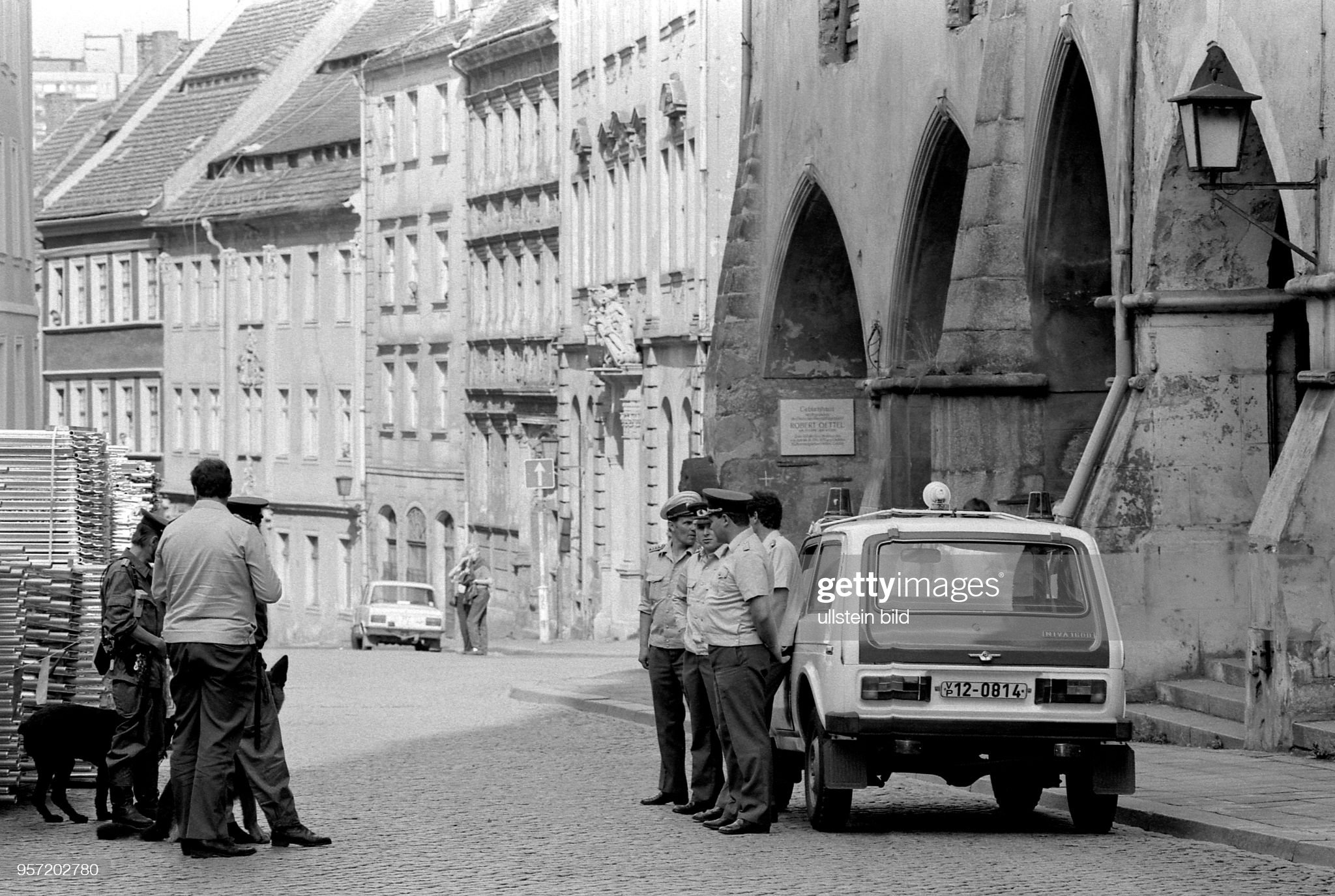
Members of the Federal Border Guard are waiting in front of their car, a Lada Niva from the USSR, on October 03, 1990. Photo by Ulrich Haessler / Ullstein Bild via Getty Images.
Not that you would be completely restricted to byways and back roads, of course. Key’s website proudly proclaims that the Niva’s fearsome naturally aspirated 1.7-litre four-cylinder petrol engine, pumping out 61kW and 129Nm, is compliant with London’s ULEZ regulations; and even in spite of the car’s complete dismissal of the principles of aerodynamics, we managed around 9.4L/100km on the motorway.
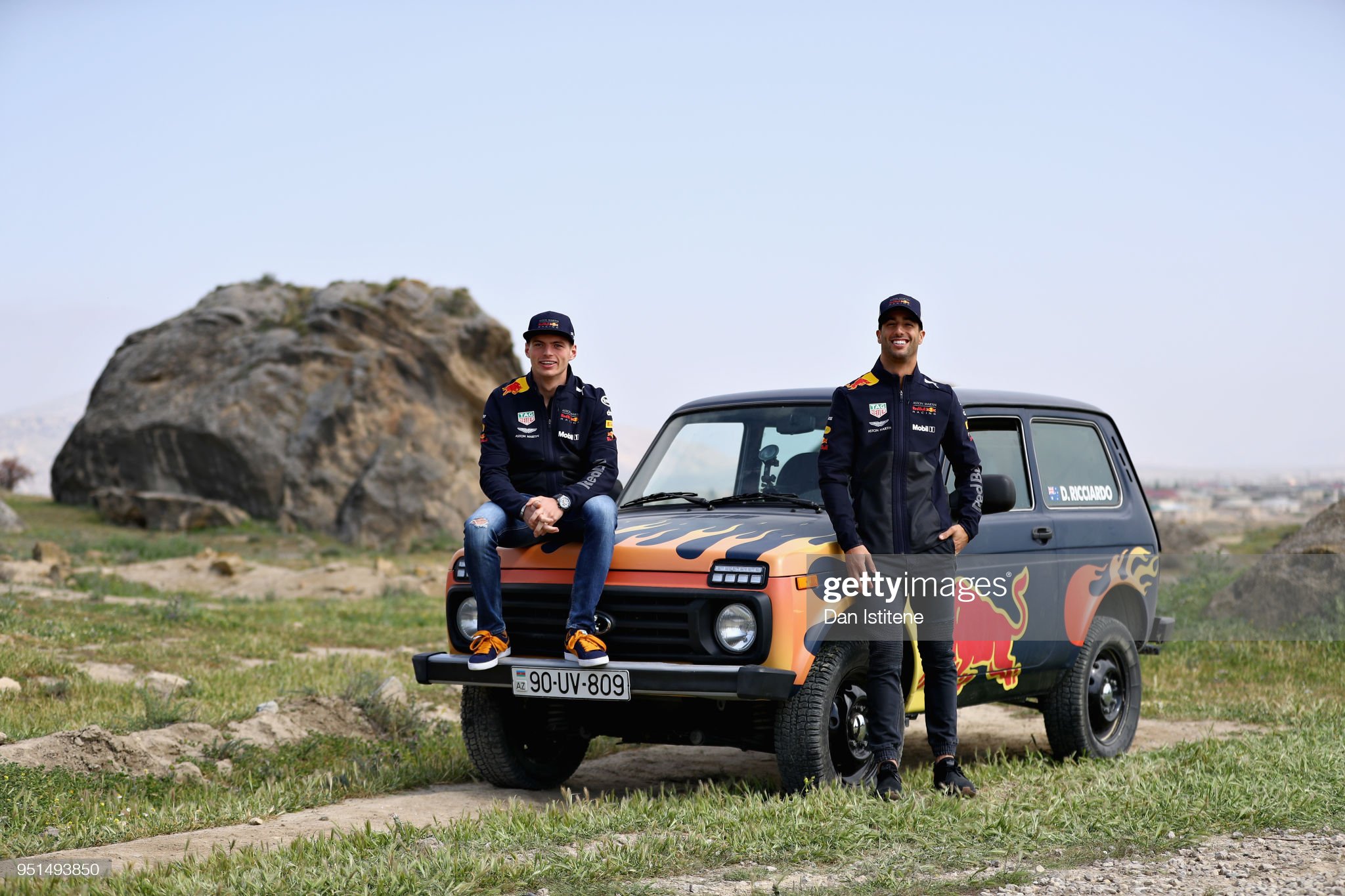
Daniel Ricciardo of Australia and Red Bull Racing and Max Verstappen of Netherlands and Red Bull Racing drive a Lada Niva in Gobustan "Land of the Bulls" during previews ahead of the Azerbaijan Formula One Grand Prix at Baku City Circuit on April 26, 2018 in Baku, Azerbaijan. Photo by Dan Istitene / Getty Images.
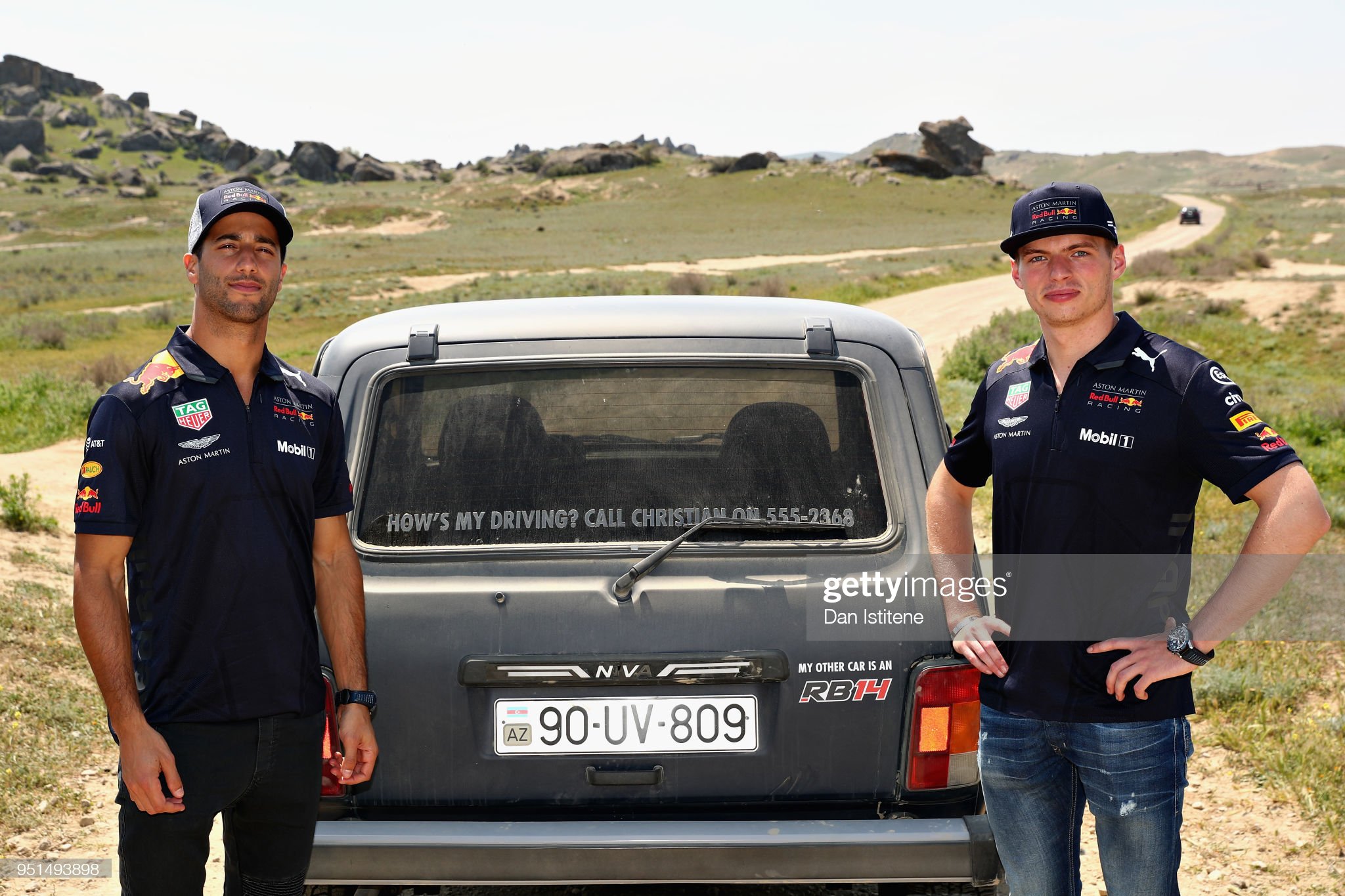
Daniel Ricciardo of Australia and Red Bull Racing and Max Verstappen of Netherlands and Red Bull Racing drive a Lada Niva in Gobustan "Land of the Bulls" during previews ahead of the Azerbaijan Formula One Grand Prix at Baku City Circuit on April 26, 2018 in Baku, Azerbaijan. Photo by Dan Istitene / Getty Images.
It’s almost redundant to weigh up the economic implications of Lada ownership, really. If you want a Niva, you will buy a Niva. For much the same reasons as you would buy any car with your heart rather than your head: it’s almost peerless, it’s utterly riddled with charm and, with allowances for the inconsistencies across the spread of its abilities, it’s fantastic at doing what it was designed to do.

Woman driver in the nature waving a hand.
And while its days are numbered, it won’t officially bow out until the end of 2023, so there’s plenty of time before the new Niva arrives with new Renault-derived underpinnings, potentially a hybrid powertrain option and, heaven forfend, slightly curved edges.
Land Rover Defender
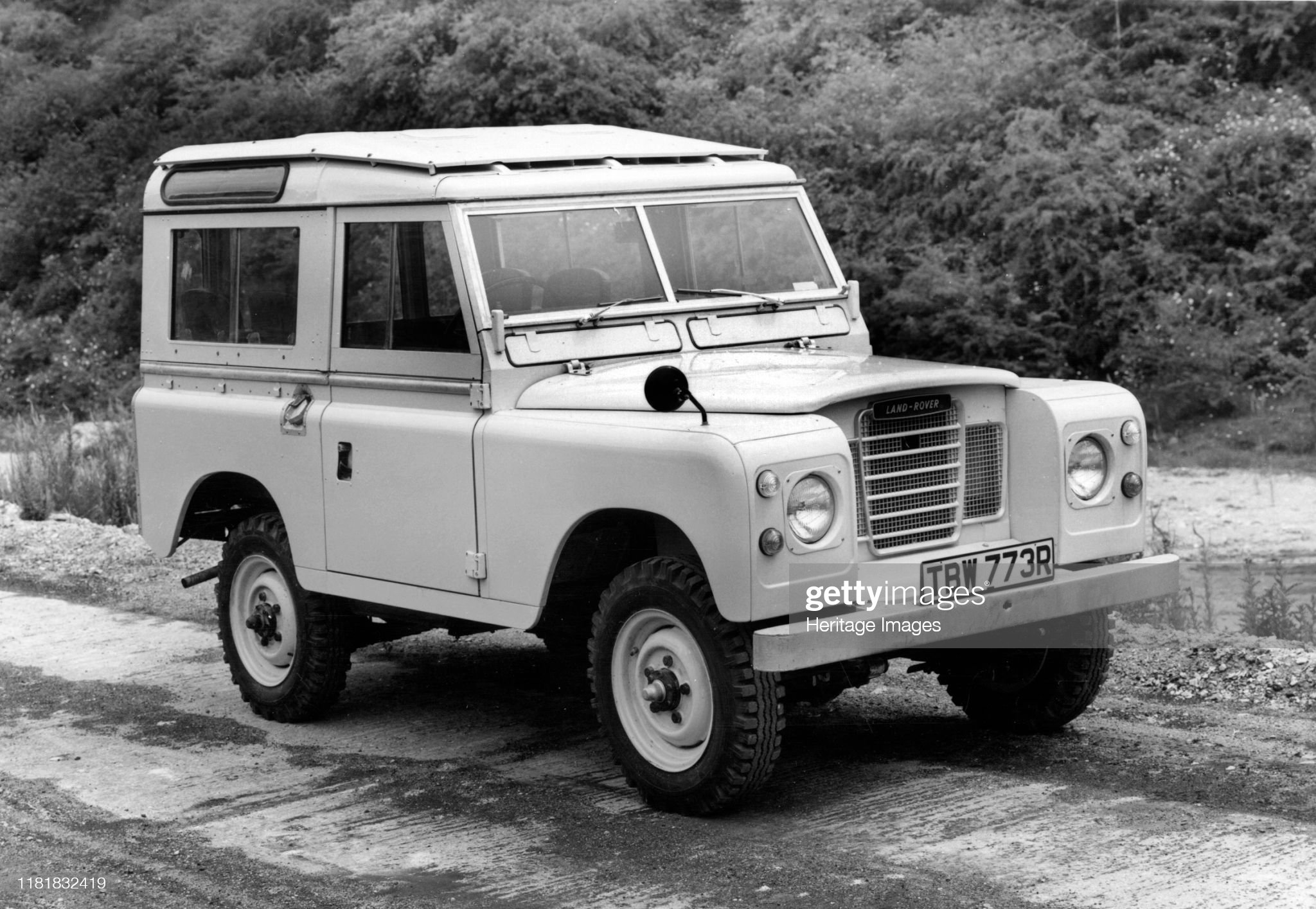
Land Rover 88 series 3. Creator unknown.
The Land Rover Defender (initially introduced as the Land Rover 110 / One Ten and, in 1984, joined by the Land Rover 90 / Ninety, plus the new, extra-length Land Rover 127 in 1985), is a series of British off-road cars and pickup trucks. They consistently have four-wheel drive and were developed in the 1980s from the original Land Rover series which was launched at the Amsterdam Motor Show in April 1948. Following the 1989 introduction of the Land Rover Discovery, the term 'Land Rover' became the name of a broader marque and thus no longer worked as the name of a specific model; thus in 1990 Land Rover renamed the 90 and 110 as Defender 90 and Defender 110 respectively. The 127 became the Defender 130.
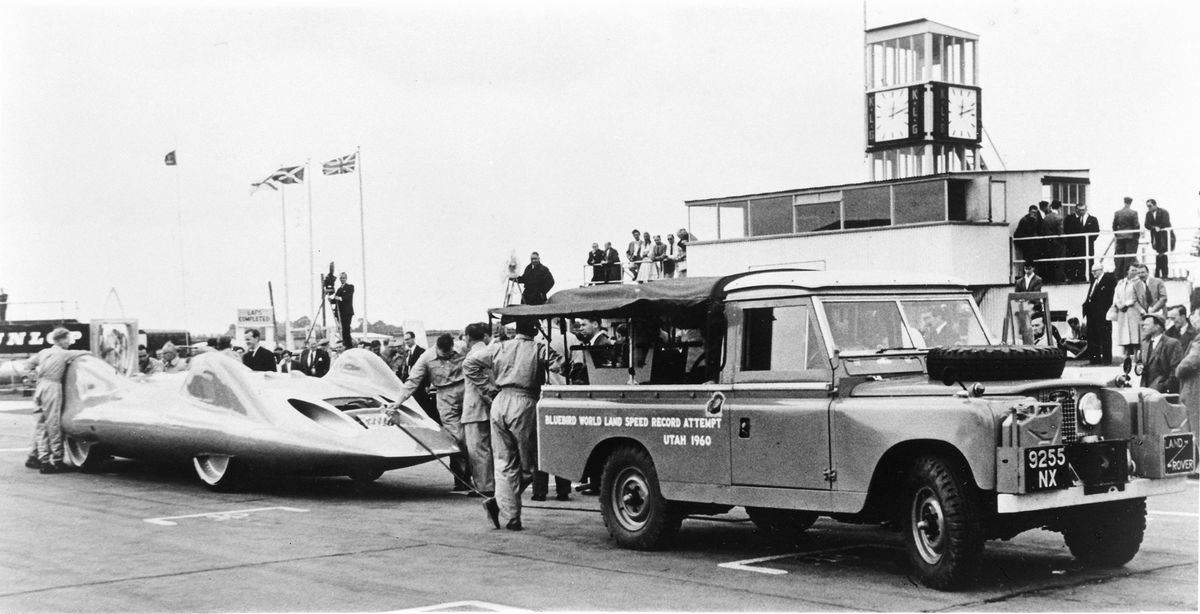
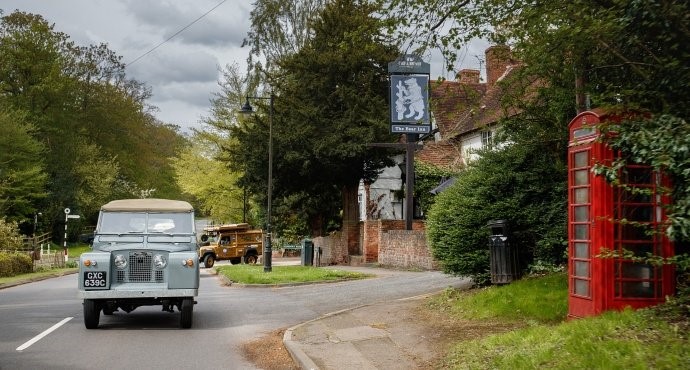
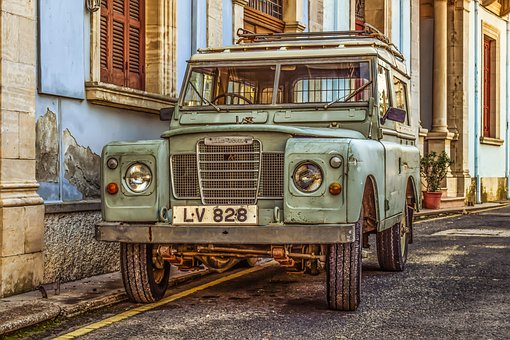
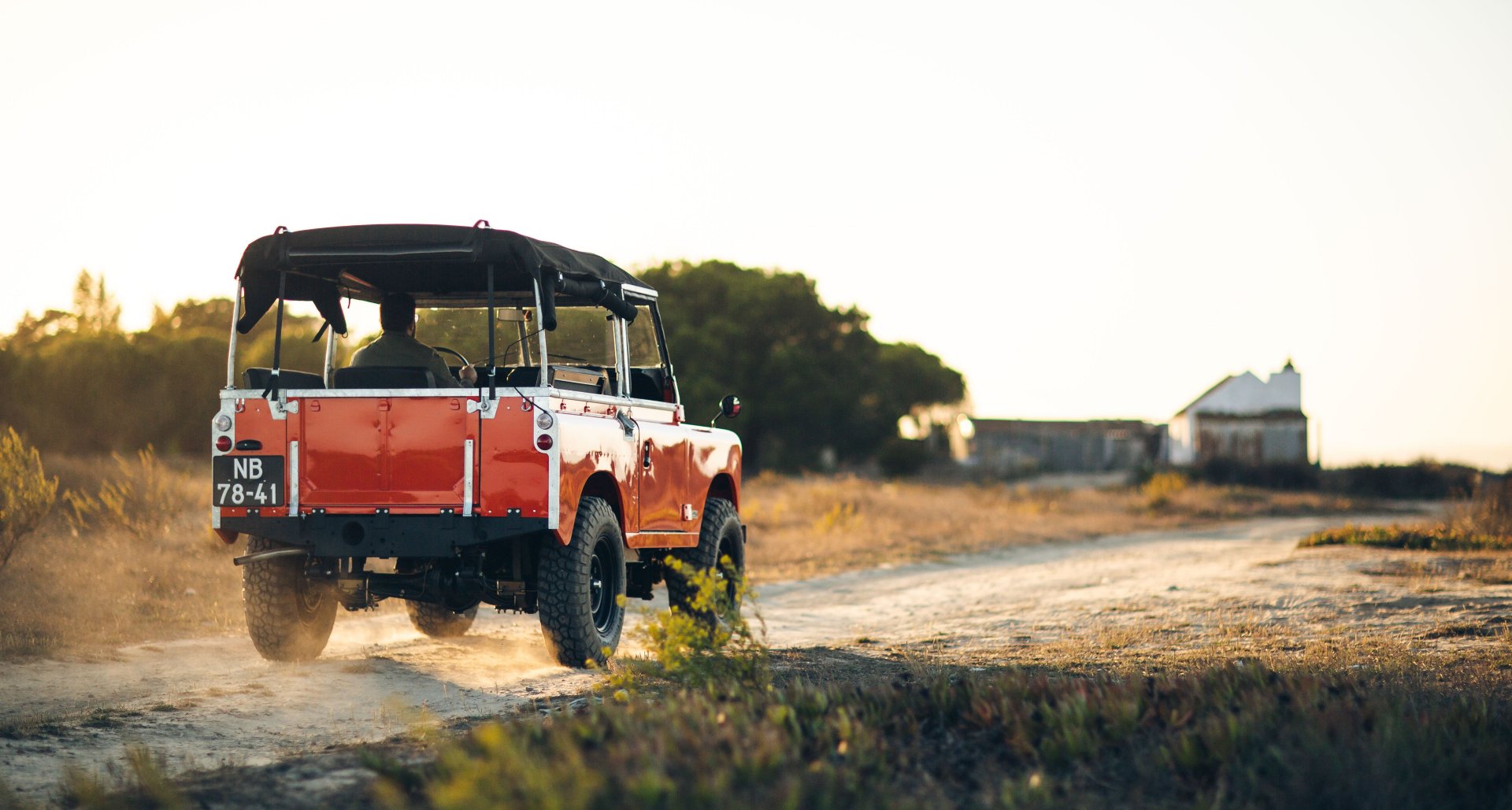
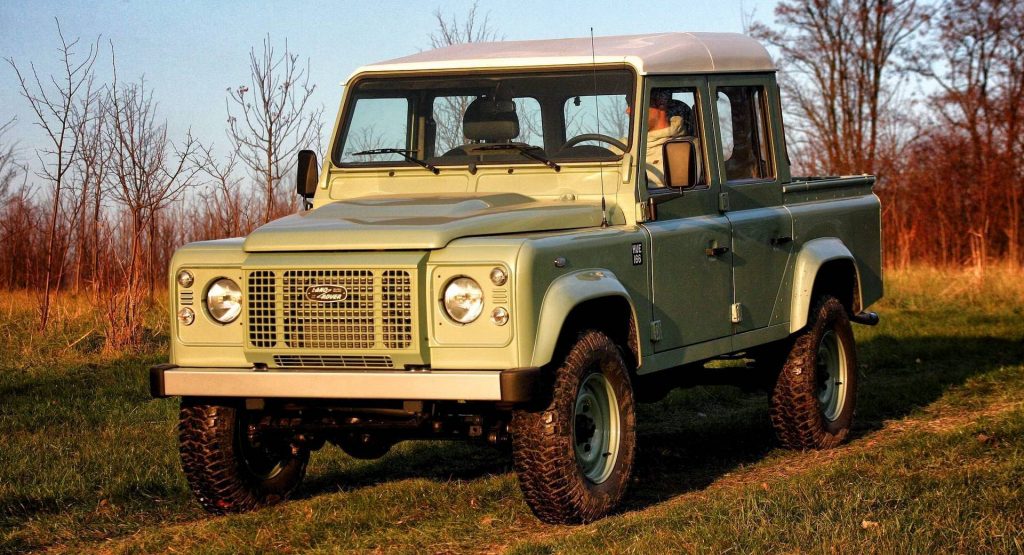
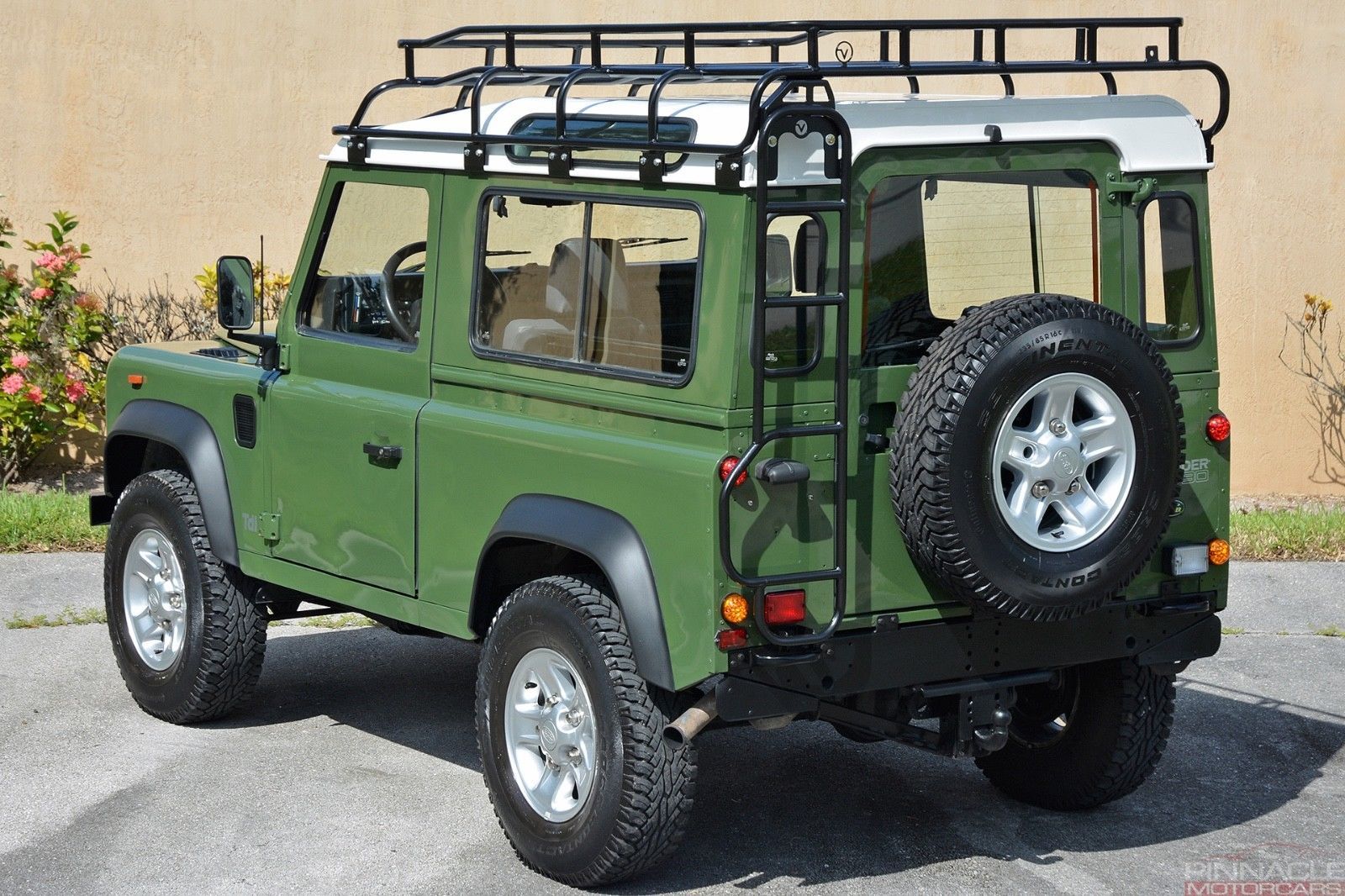
1992.
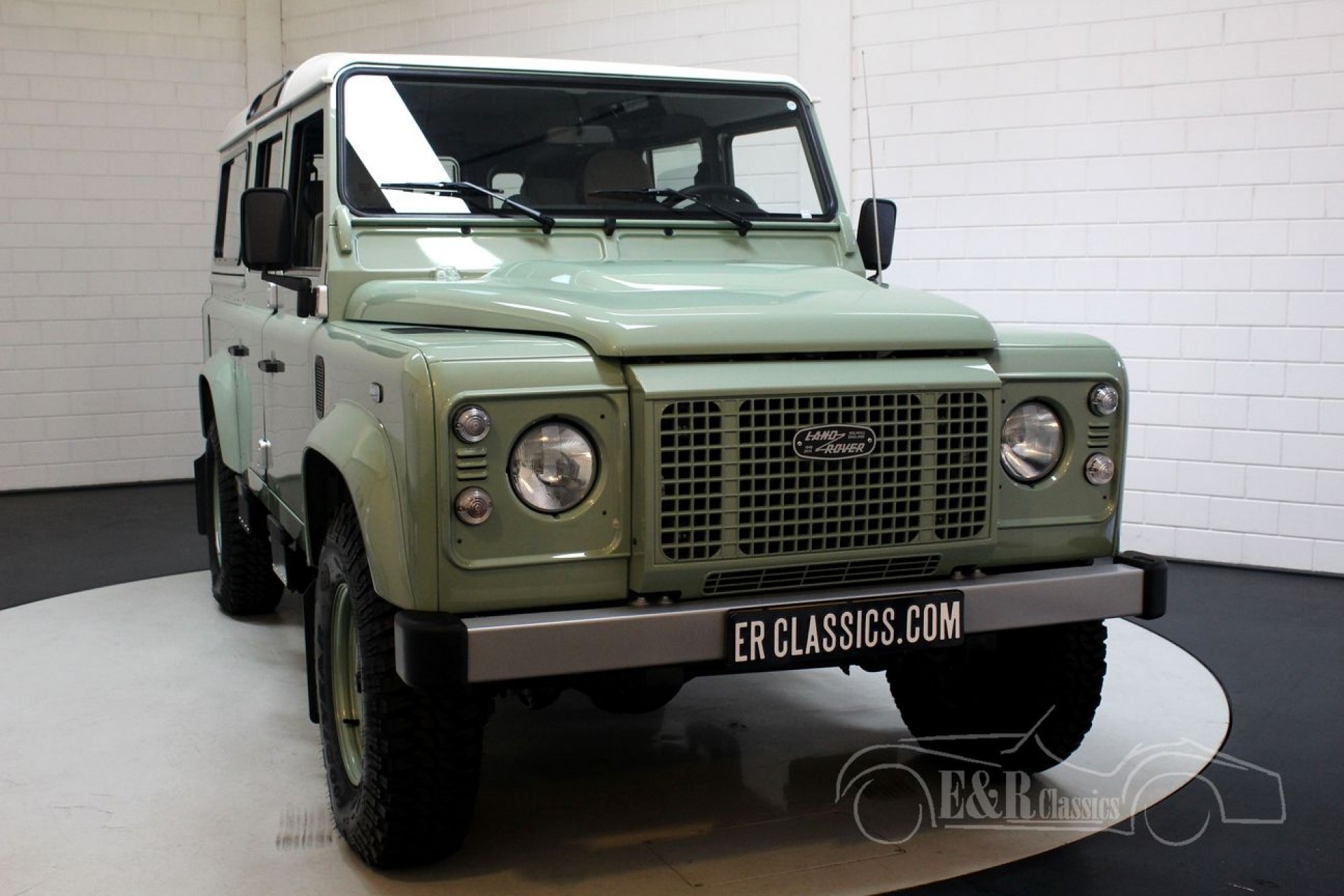
Land Rover Defender 2016.
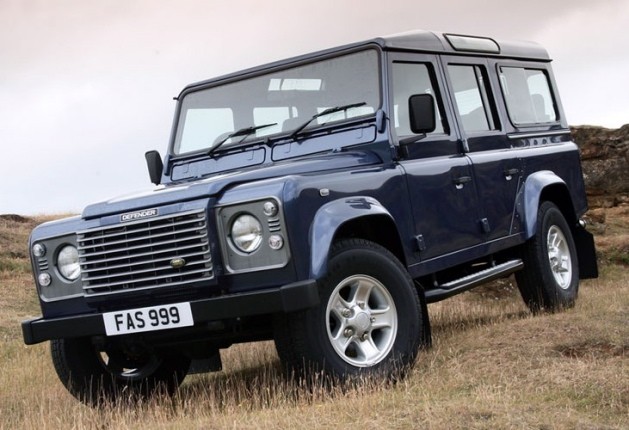
The vehicle, a British equivalent of the Second World War derived (Willys) Jeep, gained a worldwide reputation for ruggedness and versatility. Using a steel ladder chassis and an aluminium alloy bodywork, the Land Rover originally used detuned versions of Rover engines. The original Defender is still being produced in developing countries, despite the arrival of the Land Rover Defender (L663).
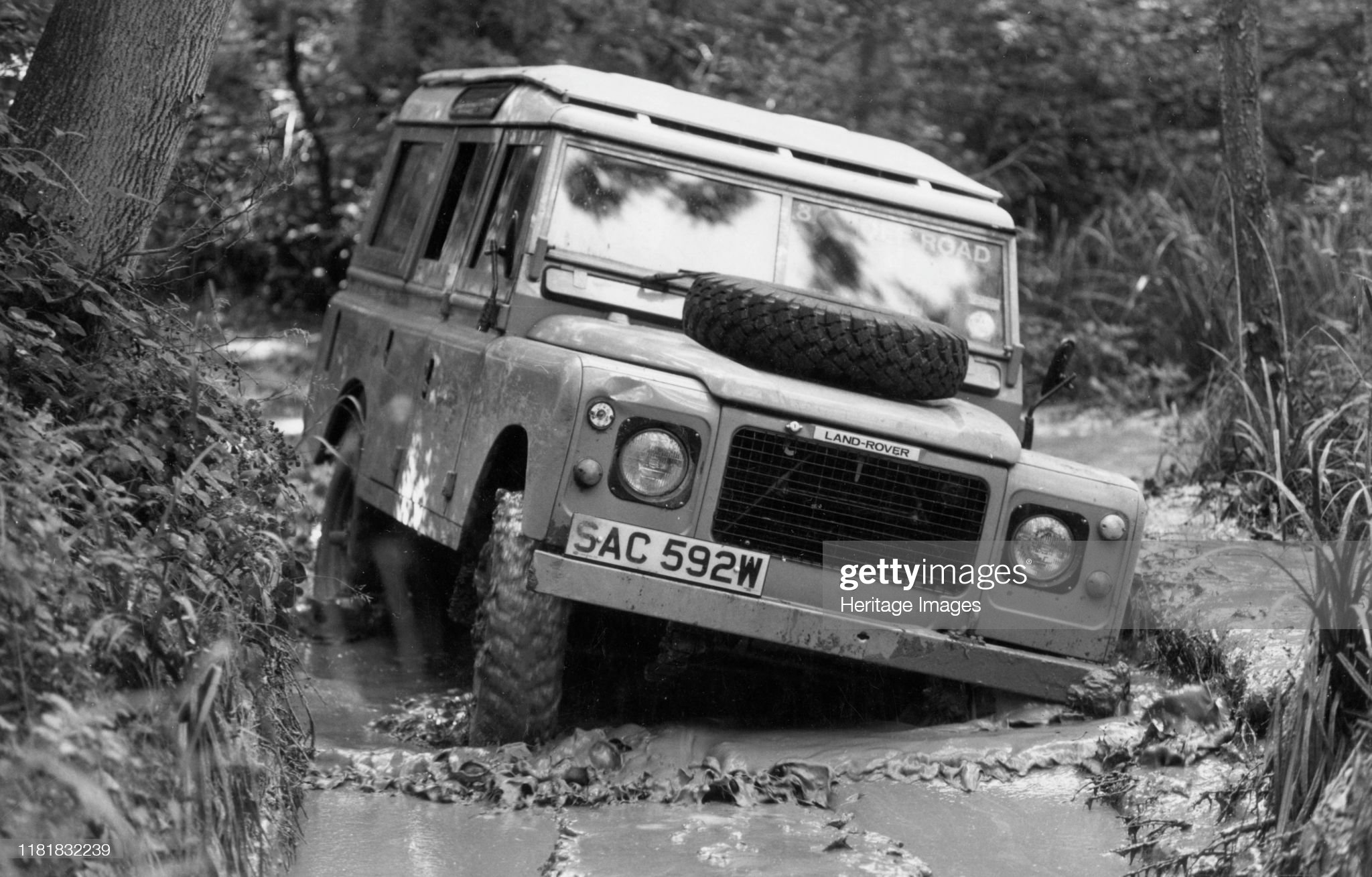
1980 Land Rover V8. Creator Unknown. Photo by National Motor Museum / Heritage Images via Getty Images.
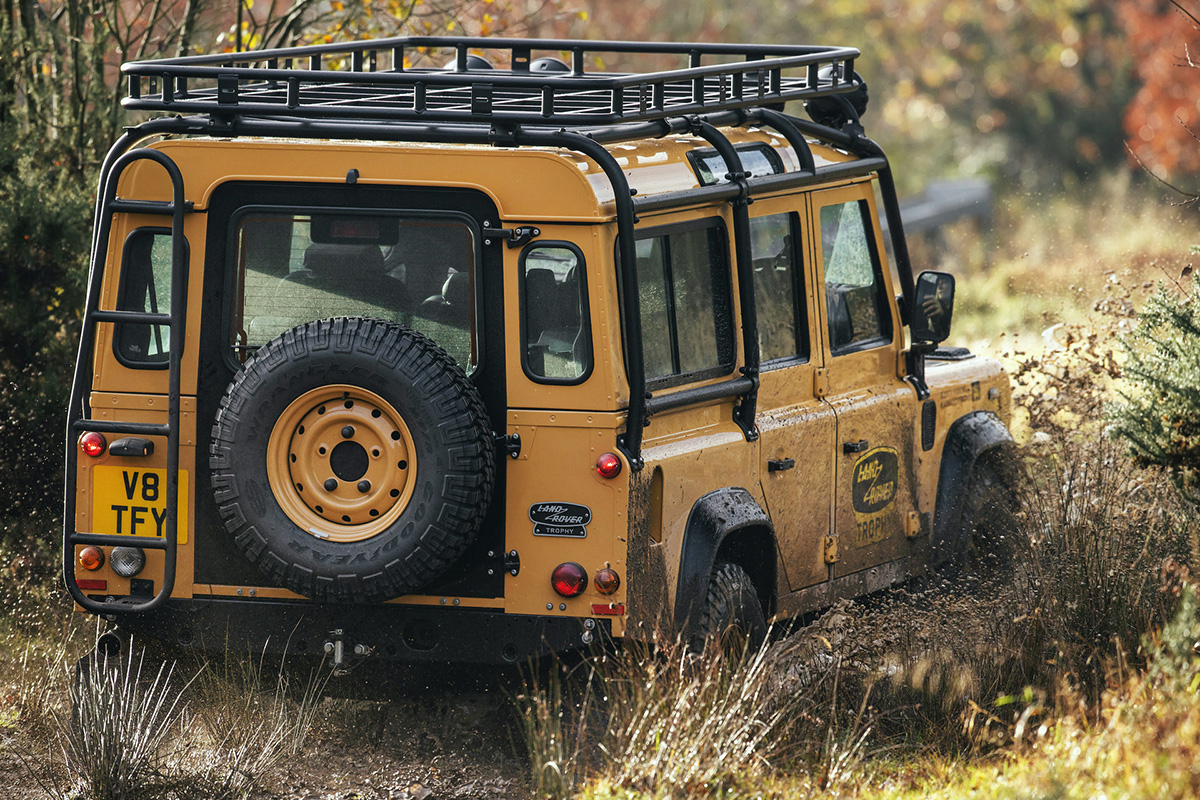
Land Rover Classic Unveils Limited-Run $270,000 Defender Works V8 Trophy.
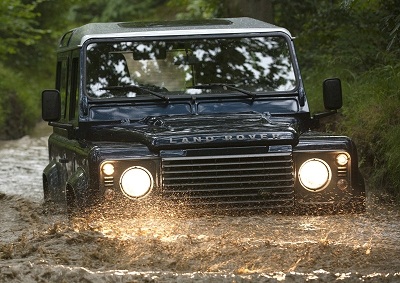
Due to government and safety regulations, the venerable Defender line will be chopped. Land Rover announced it will cease production of its iconic 4x4 in 2015. Image by Land Rover.
Though the Defender was not a new generation design, it incorporated significant changes compared to the series Land Rovers, such as adopting coil springs front and rear, as opposed to all leaf springs on the previous; except for retaining rear leaf springs on high capacity (payload) models. Coil springs offered both better ride quality and improved axle articulation. Adding a lockable centre differential to the transfer case gave the Defender permanent (on-road) four-wheel-drive capability. Both changes were derived from the Range Rover and the interiors were also modernised.

30th August 1956: a Land Rover enters the Fairey Rotodyne helicopter, on show at the Hayes, Middlesex branch of the Fairey company. Photo by Monty Fresco / Topical Press Agency / Getty Images.
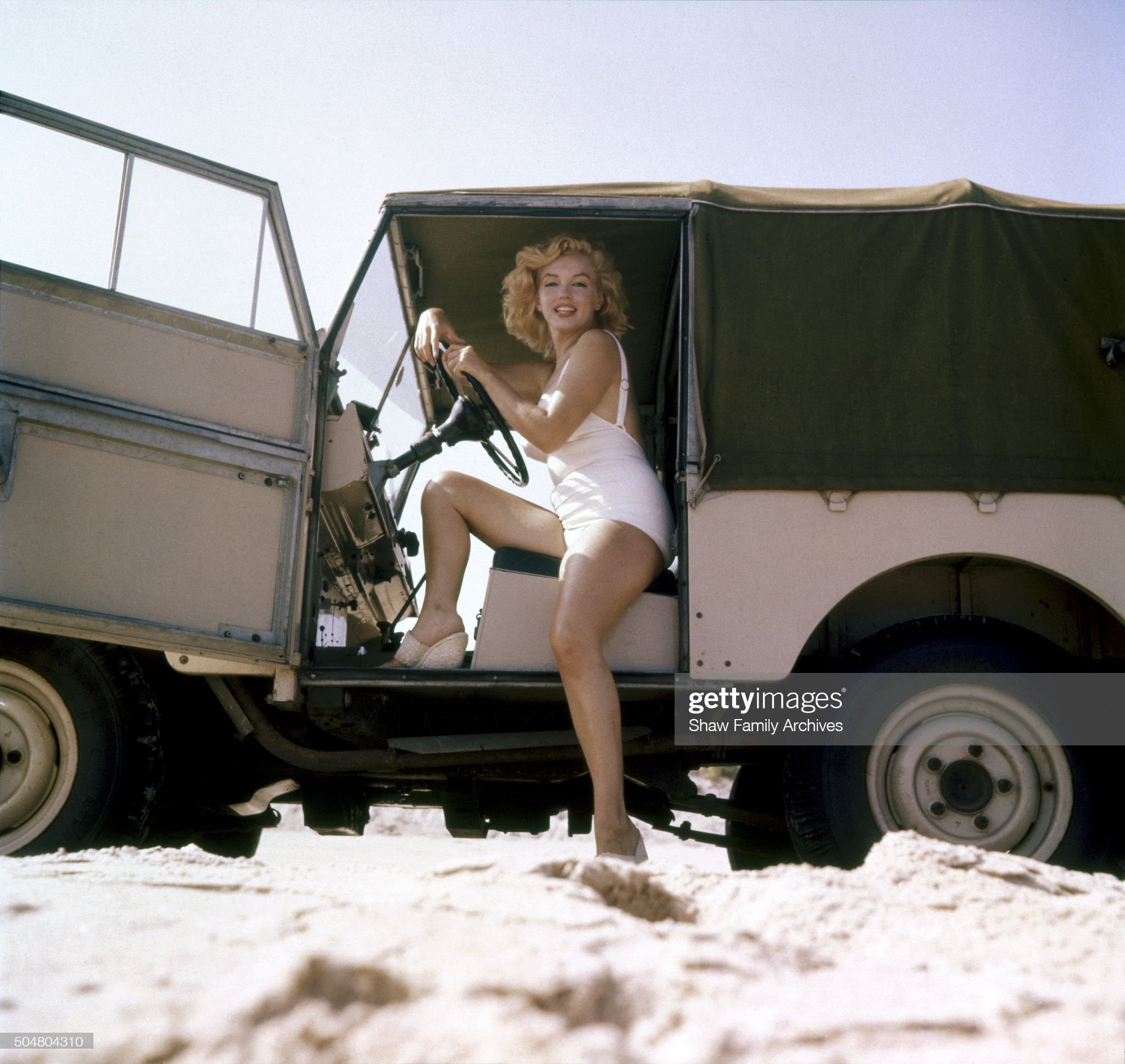
Marilyn Monroe sits in a Land Rover on the beach in 1957 in Amagansett, New York. Photo by Sam Shaw / Shaw Family Archives / Getty Images.
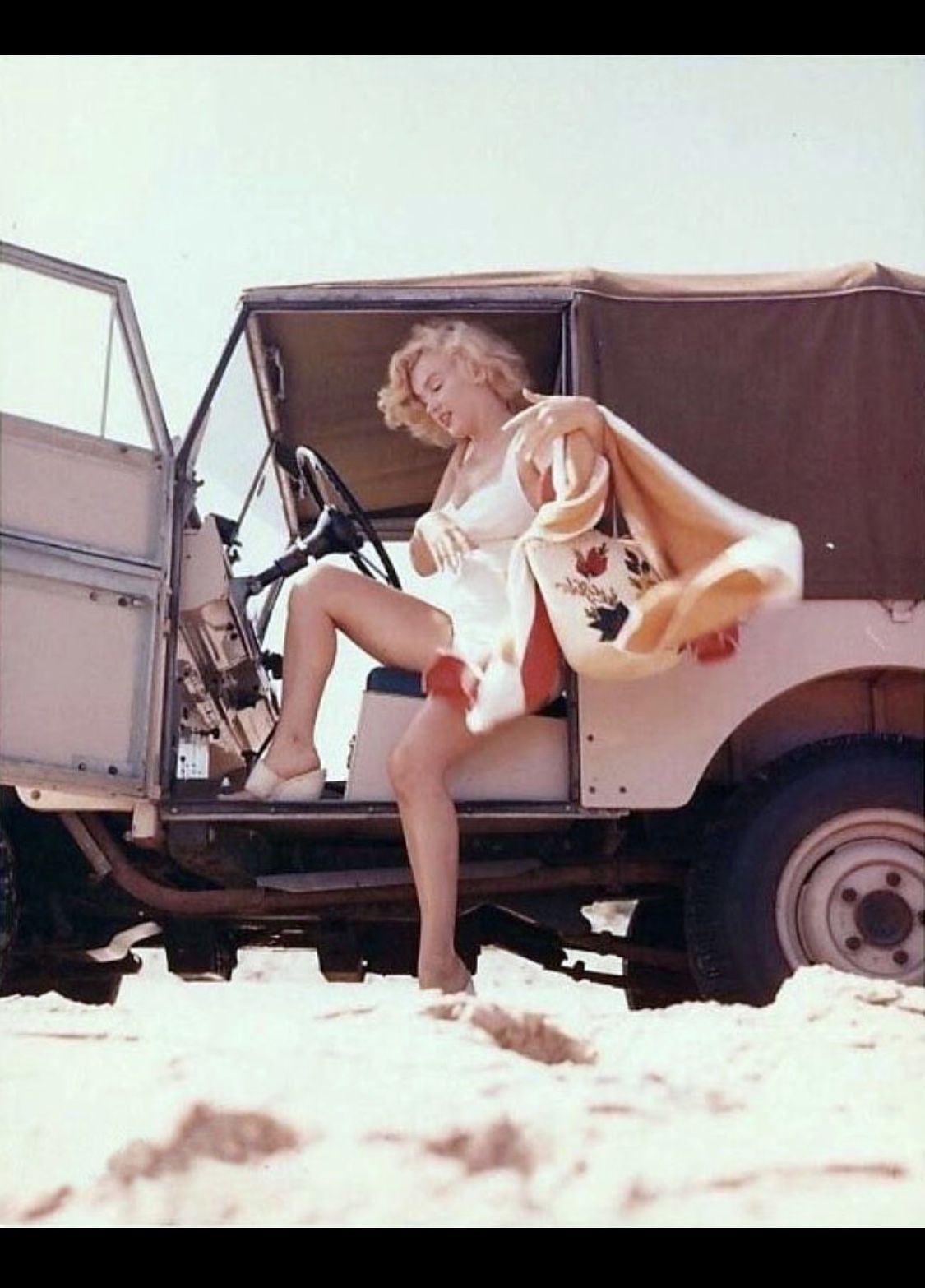
Marilyn Monroe sits in a Land Rover on the beach in 1957 in Amagansett, New York. Photo by Sam Shaw / Shaw Family Archives / Getty Images.
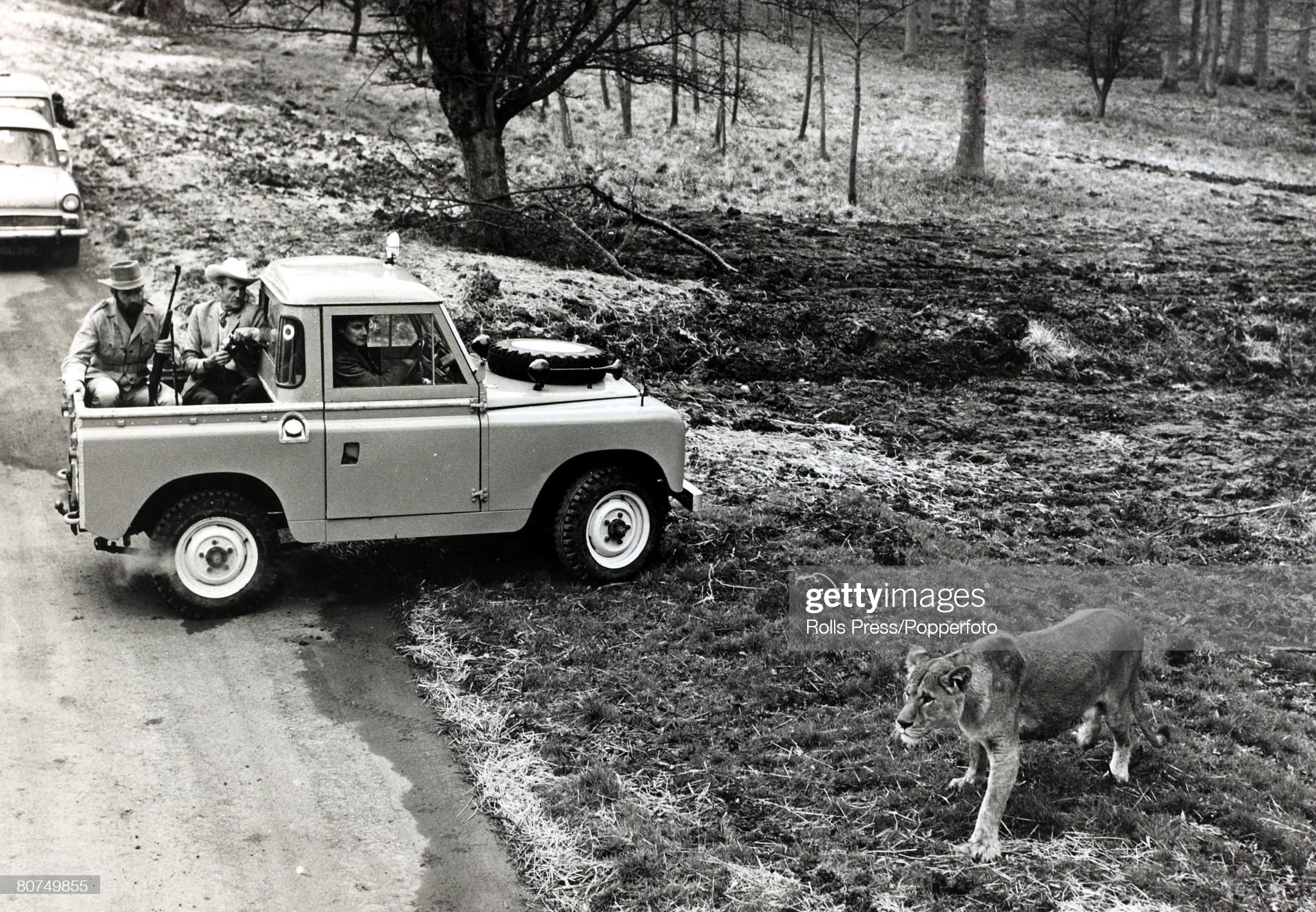
5th April 1966, the Marquess of Bath pictured with an armed guard in the back of a Land Rover at his stately home at Longleat as they carefully watch a lioness, The Longleat House estate had been turned over into a game reserve as an added attraction. Photo by Rolls Press / Popperfoto via Getty Images.
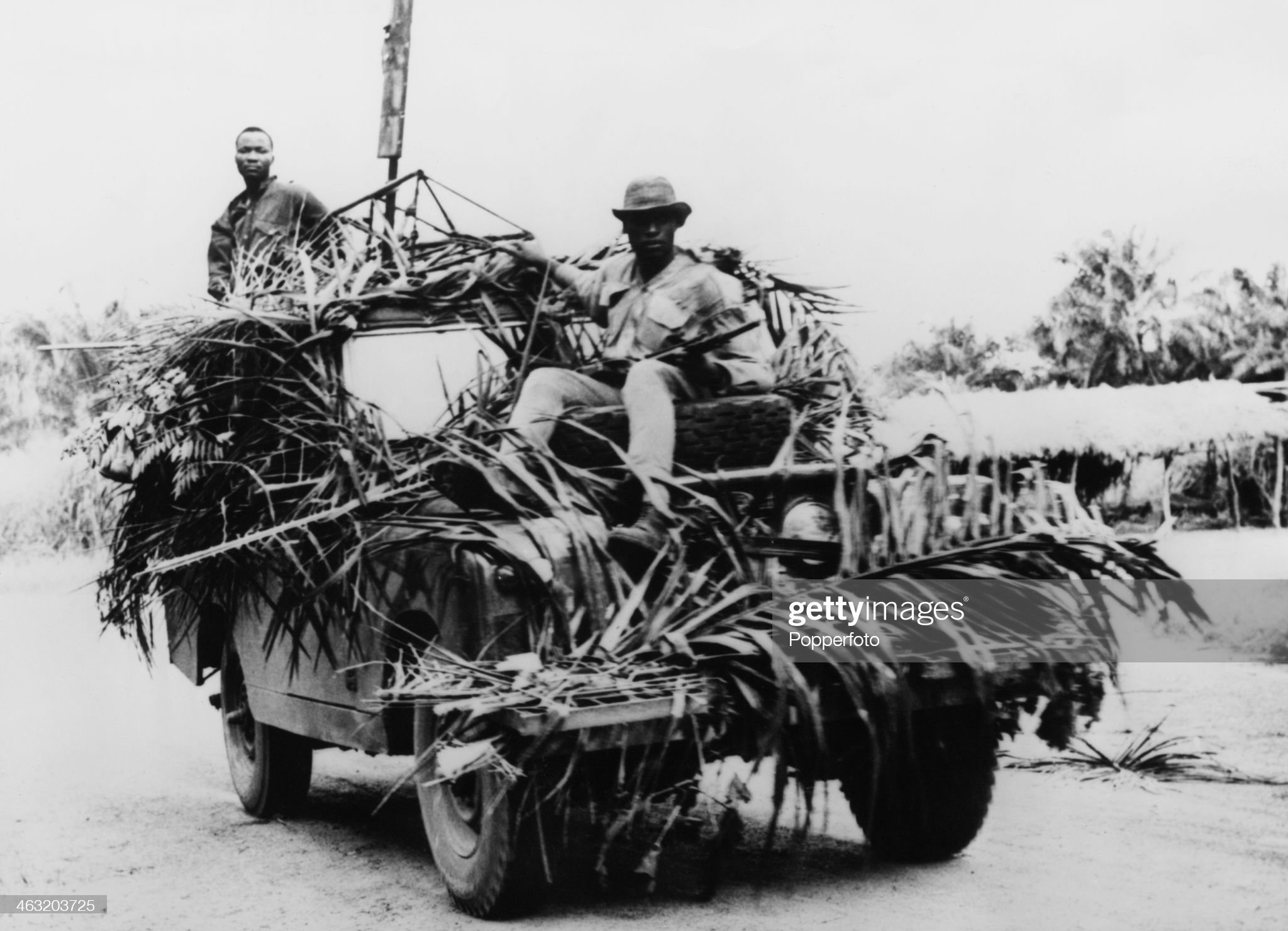
Government troops riding on a camouflaged Land Rover in a search for rebel troops of the breakaway region of Biafra, during the Nigerian Civil War, also known as the Biafran War, Nigeria, 27th August 1967. Photo by Popperfoto via Getty Images.
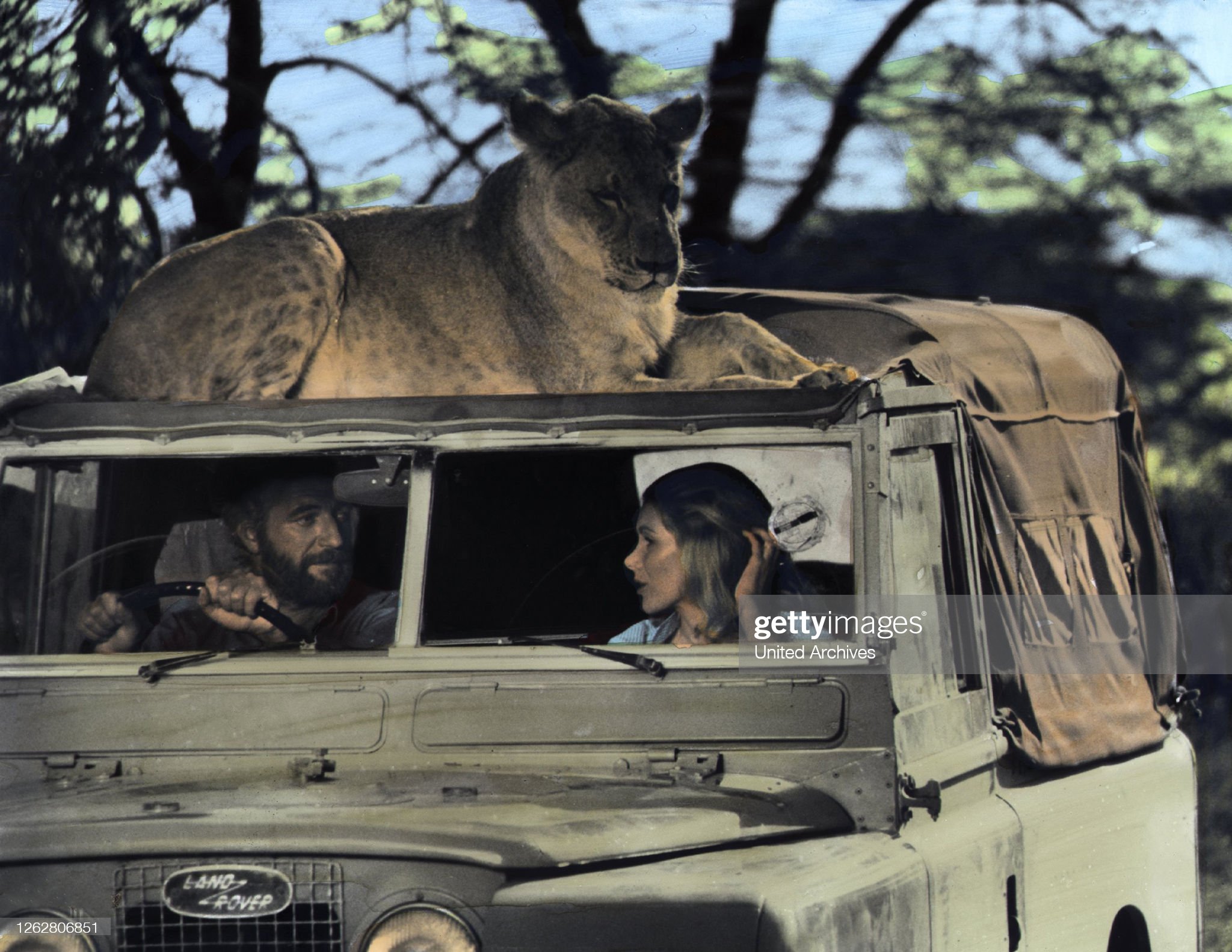
A Land Rover in 1972. Photo by Film Publicity Archive / United Archives via Getty Images.
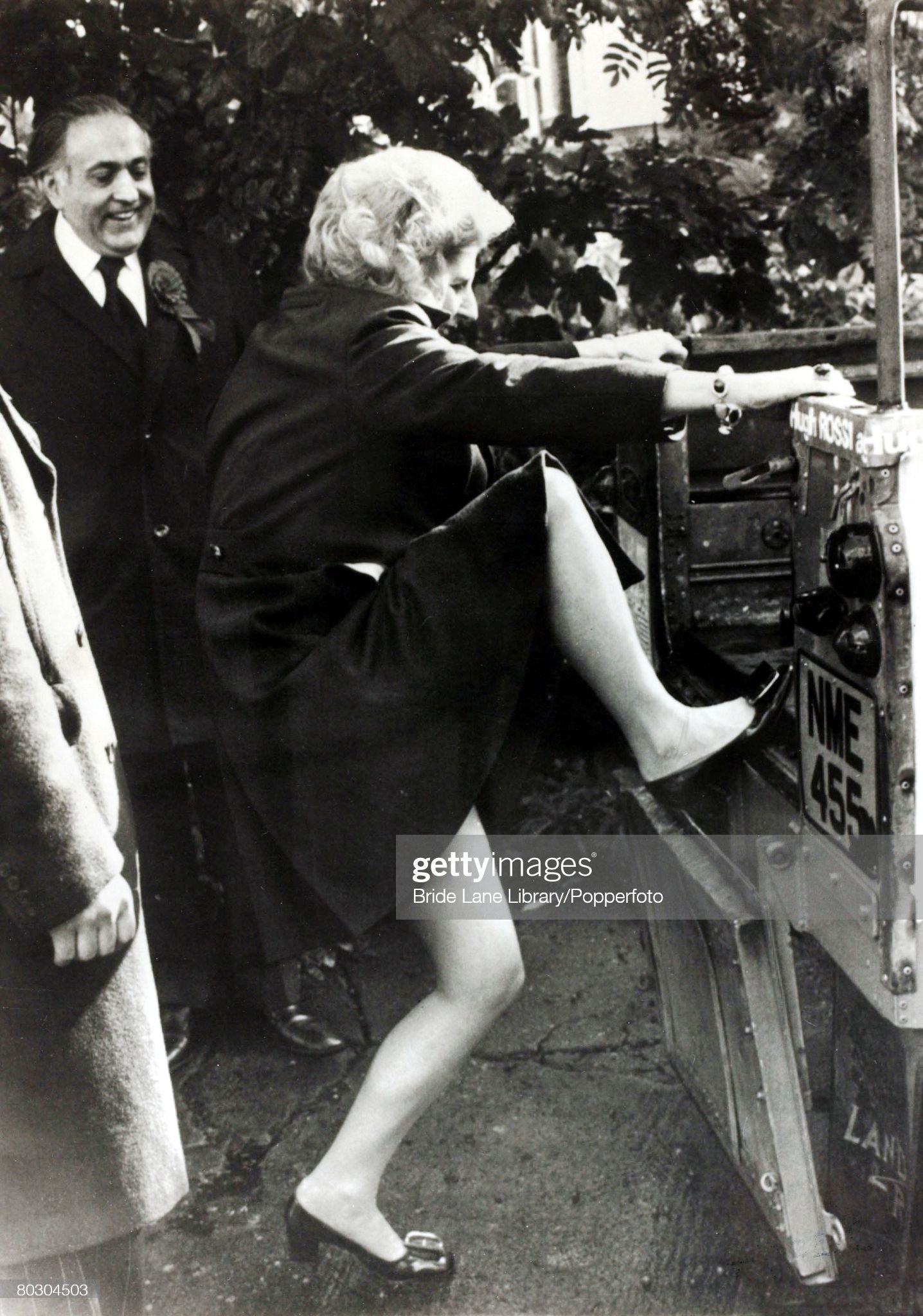
Conservative Party Housing Minister Margaret Thatcher, climbing aboard a Land Rover while supporting the local Tory candidate Hugh Rossi (left), Hornsey, London, England, 10th March 1974. Margaret Thatcher later became the first woman to be Prime Minister of Great Britain. Photo by Bride Lane Library / Popperfoto via Getty Images.
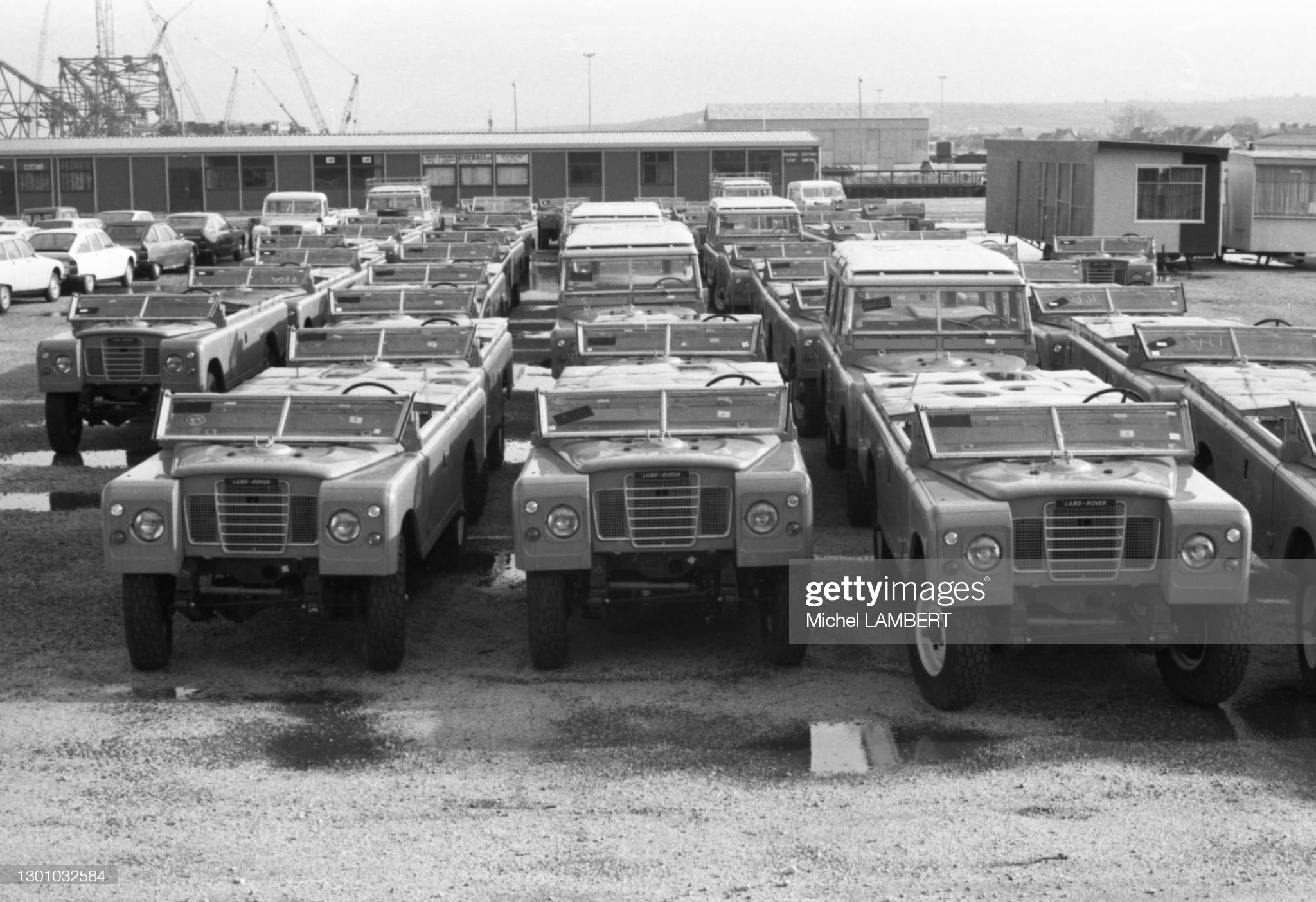
Land Rover series III on a quay in the port of Cherbourg, France, in February 1977. Photo by Michel Lambert / Gamma-Rapho via Getty Images.
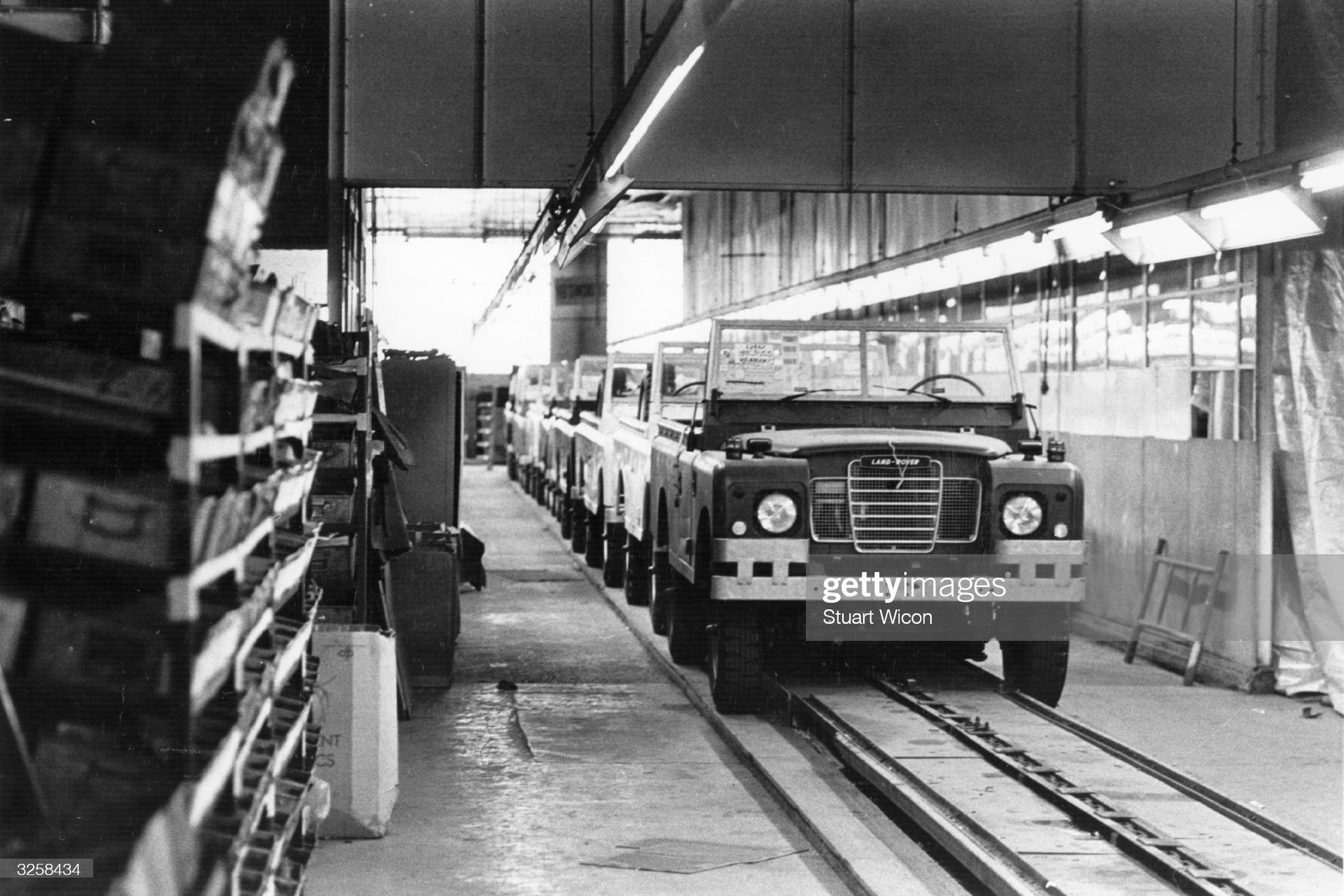
14th August 1980: the Land Rover production line, at Solihull in Birmingham, at a standstill following a strike by the TSGWU over British Leyland's proposed cuts. Photo by Stuart Wicon / Evening Standard / Getty Images.
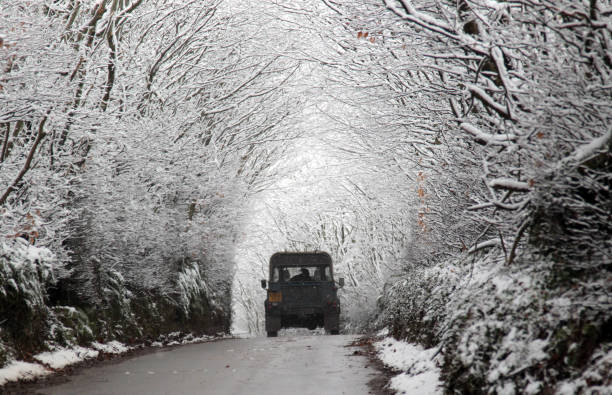
A Land Rover drives down a road with a line of snow covered trees near Dulverton on January 30, 2012 on Exmoor, England. Photo by Matt Cardy / Getty Images.
Externally, a full-length bonnet and full-width integrated grille and headlights, combined with (finally) a single-piece windscreen, plus widened wheel arches that covered new, wider-track axles were the most noticeable changes. Initially the engineering department conserved a part-time 4WD system, like on previous models, but it failed to sell any longer and this option was immediately dropped in 1984. While the engine was carried over from the Series III, a new series of modern and more powerful engines was progressively introduced.
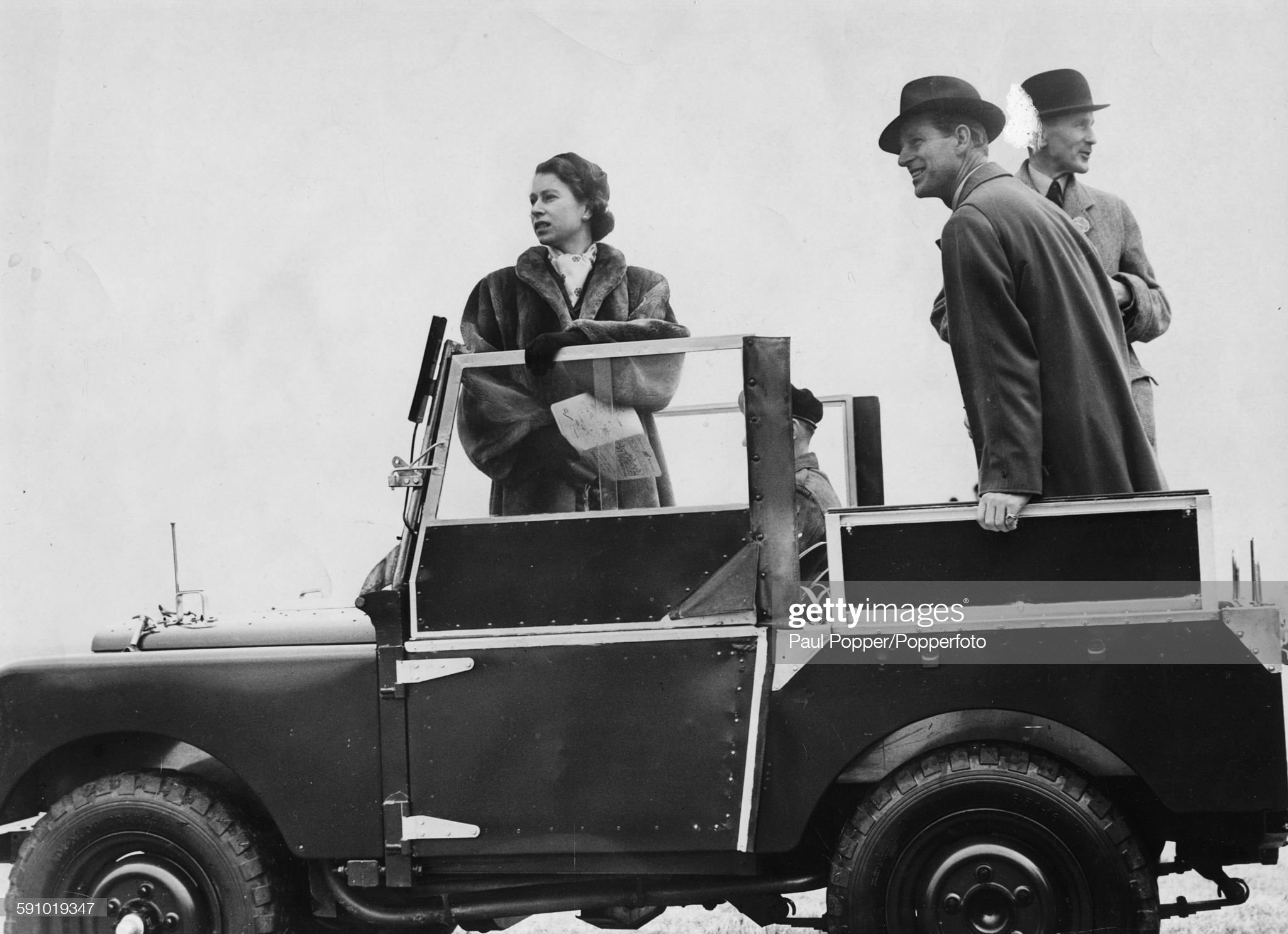
Queen Elizabeth II and Prince Philip, Duke of Edinburgh (centre), stand in the back of a Land Rover as they inspect the course at Larkhill prior to the United Services point-to-point steeplechase, Wiltshire, February 21st 1953. Photo by Paul Popper / Popperfoto via Getty Images.
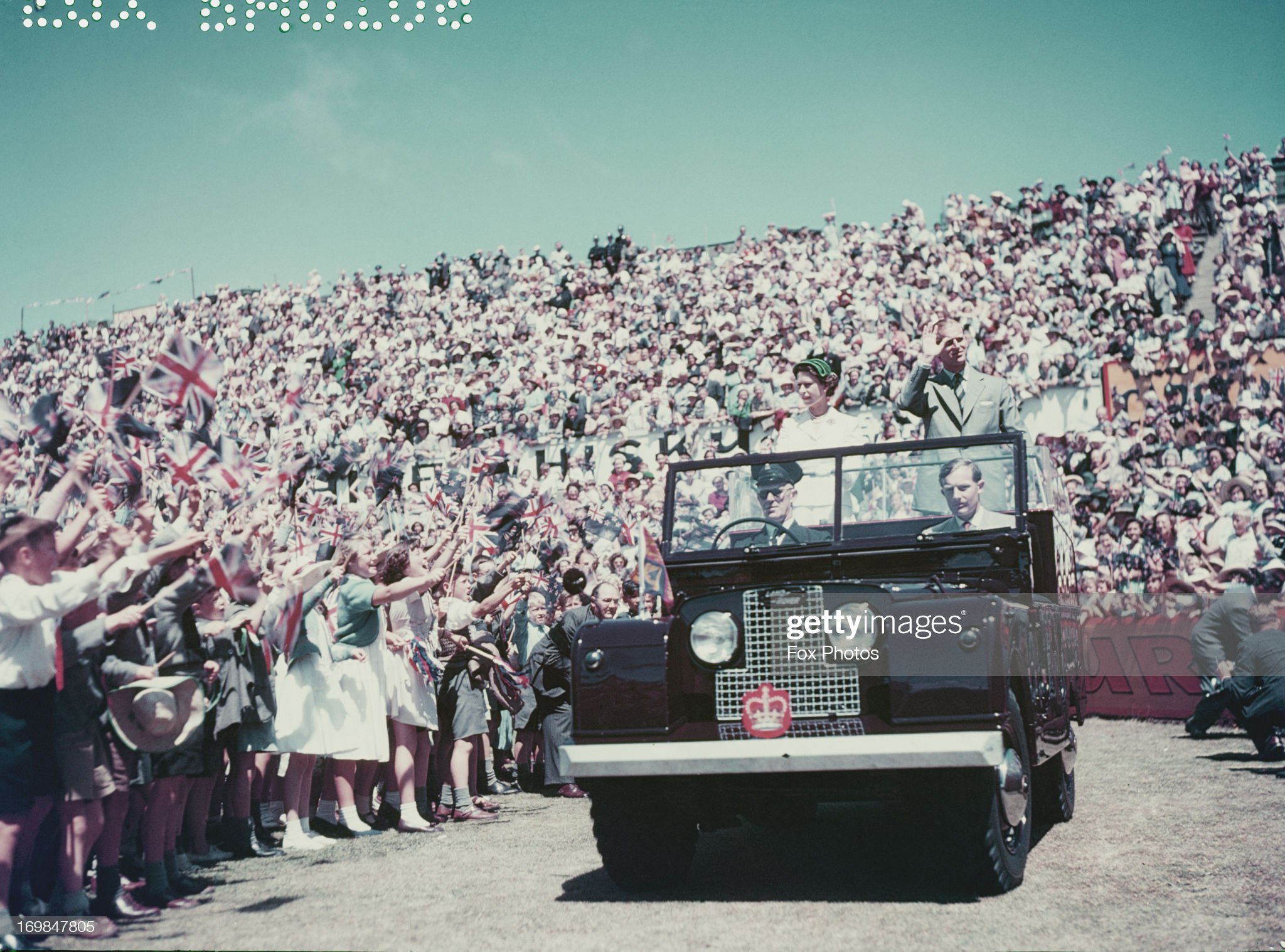 Queen Elizabeth II and Prince Philip wave to the crowd whilst on their Commonwealth visit to Australia, 1954. Photo by Fox Photos / Hulton Archive / Getty Images.
Queen Elizabeth II and Prince Philip wave to the crowd whilst on their Commonwealth visit to Australia, 1954. Photo by Fox Photos / Hulton Archive / Getty Images.
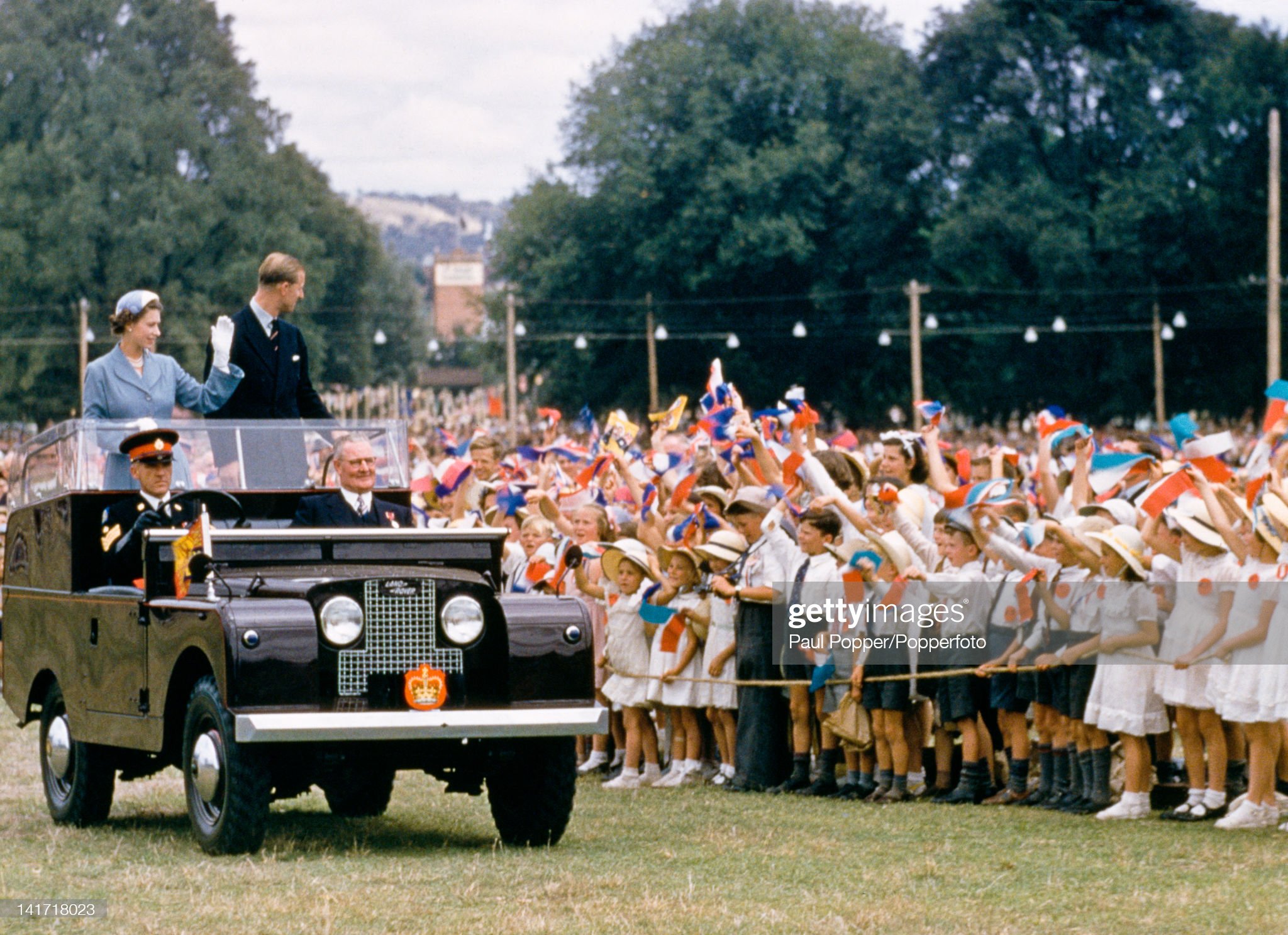
Queen Elizabeth II and Prince Philip waving to a crowd of children in Bathurst, New South Wales, Australia, during their royal tour in February 1954. Photo by Paul Popper / Popperfoto via Getty Images.
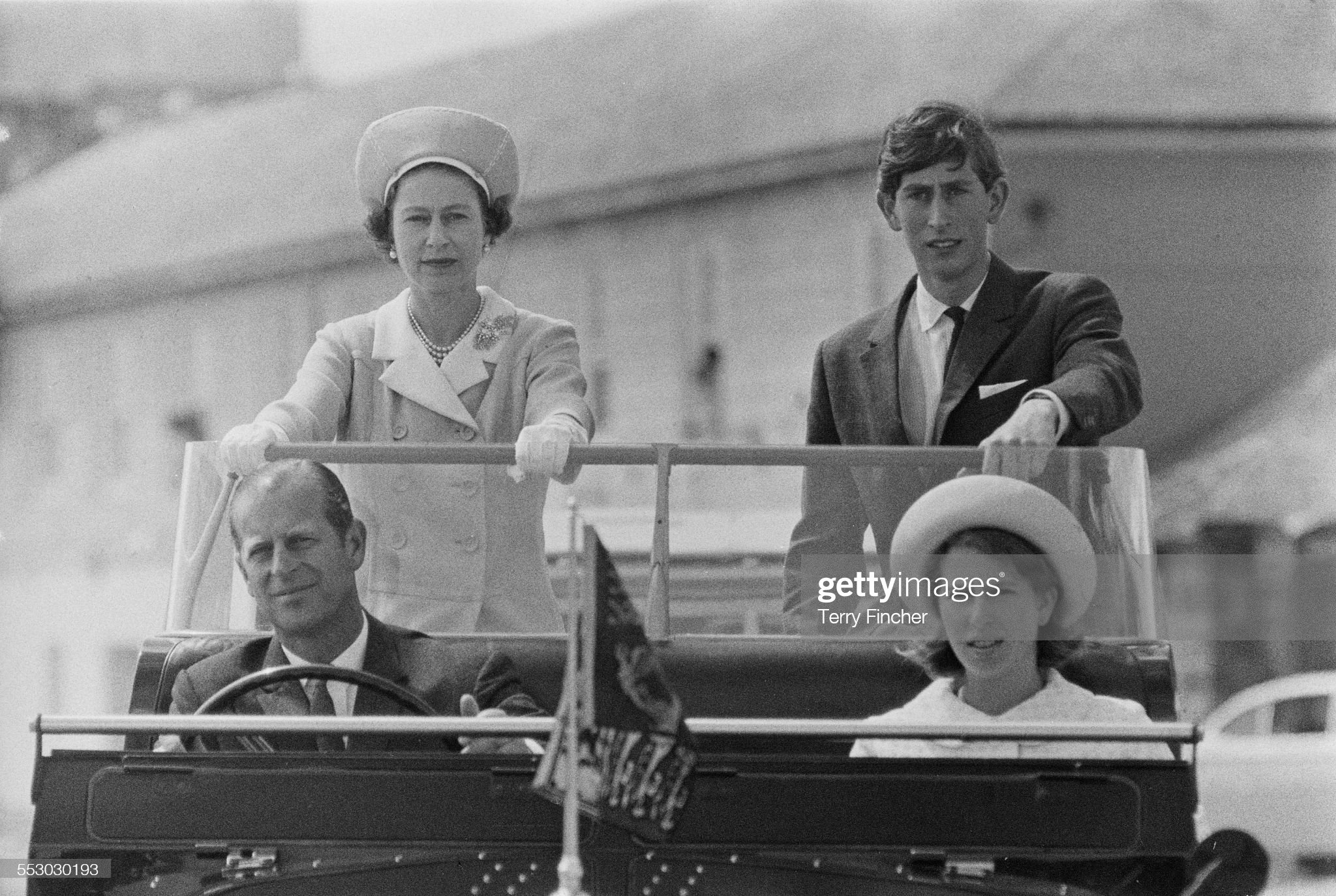
Queen Elizabeth II with Charles, Prince of Wales, Prince Philip, Duke of Edinburgh and Anne, Princess Royal, during a visit to the Isles of Scilly in 1967. Photo by Terry Fincher / Express / Hulton Archive / Getty Images.
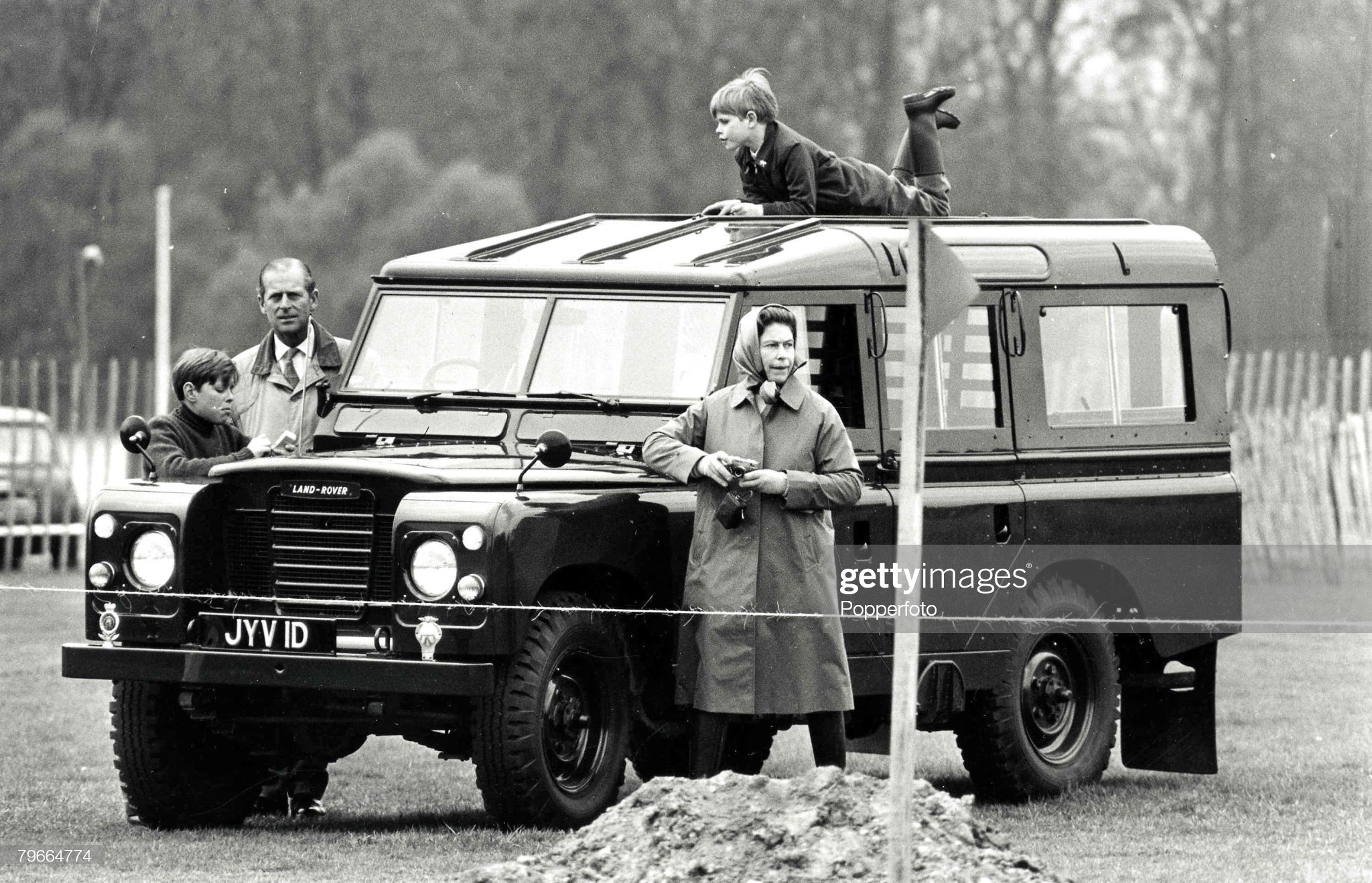
Royalty, 20th April 1972. A picture of Prince Edward on the roof of the Royal car watching the Windsor horse trials with, left to right, Prince Andrew, Duke of Edinburgh (Prince Philip) and H.R.H Queen Elizabeth II. Photo by Popperfoto via Getty Images.
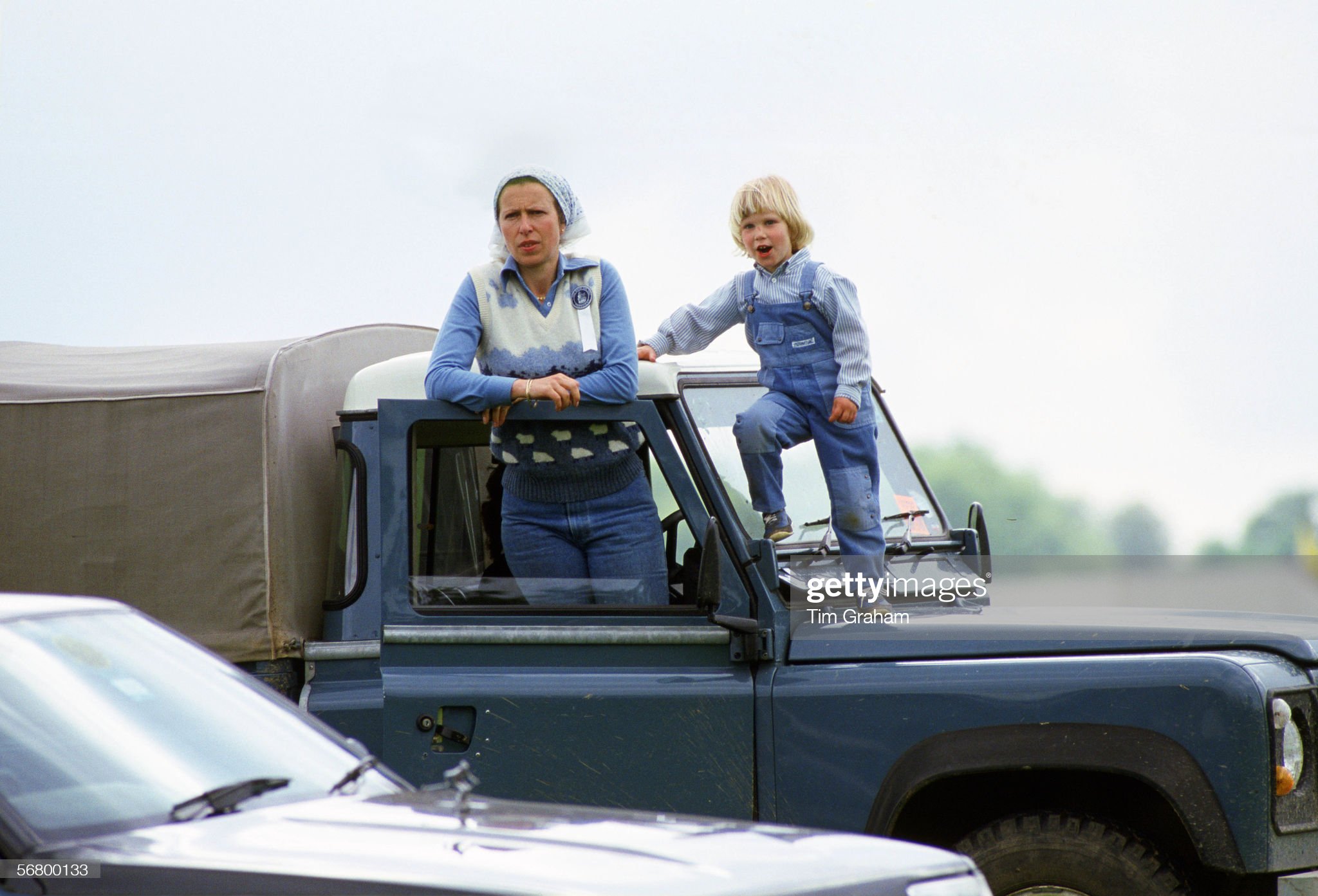
Zara Phillips with her mother, Princess Anne, at the Windsor Horse Show with their Land Rover 4-wheel drive vehicle on May 25, 1985. Photo by Tim Graham / Photo Library via Getty Images.
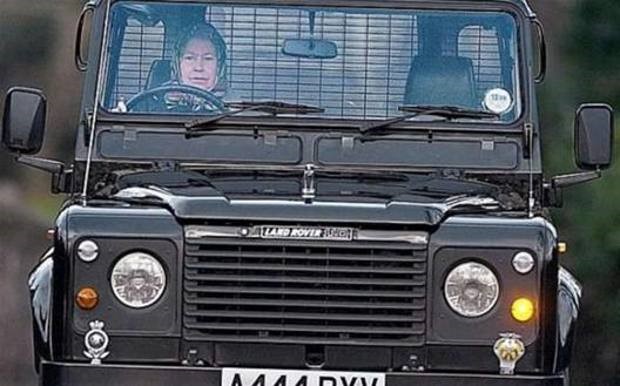
Elizabeth II at the wheel of a Defender.
Even when ignoring the series Land Rovers and perhaps ongoing licence products, the 90/110 and Defender models' 33-year production run were ranked as the sixteenth longest single-generation car in history in 2020.
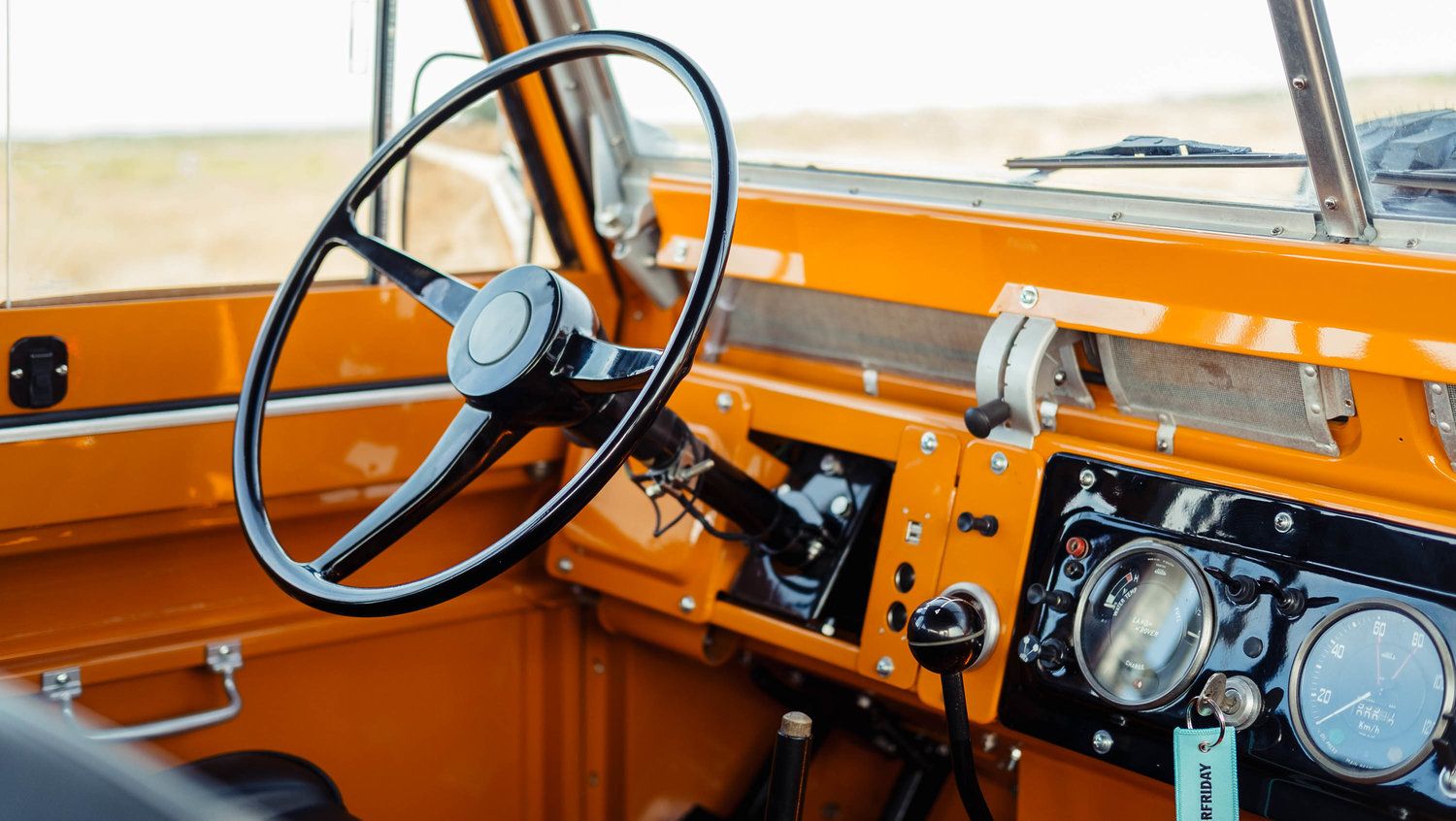
Vintage Land Rover series III, interior.
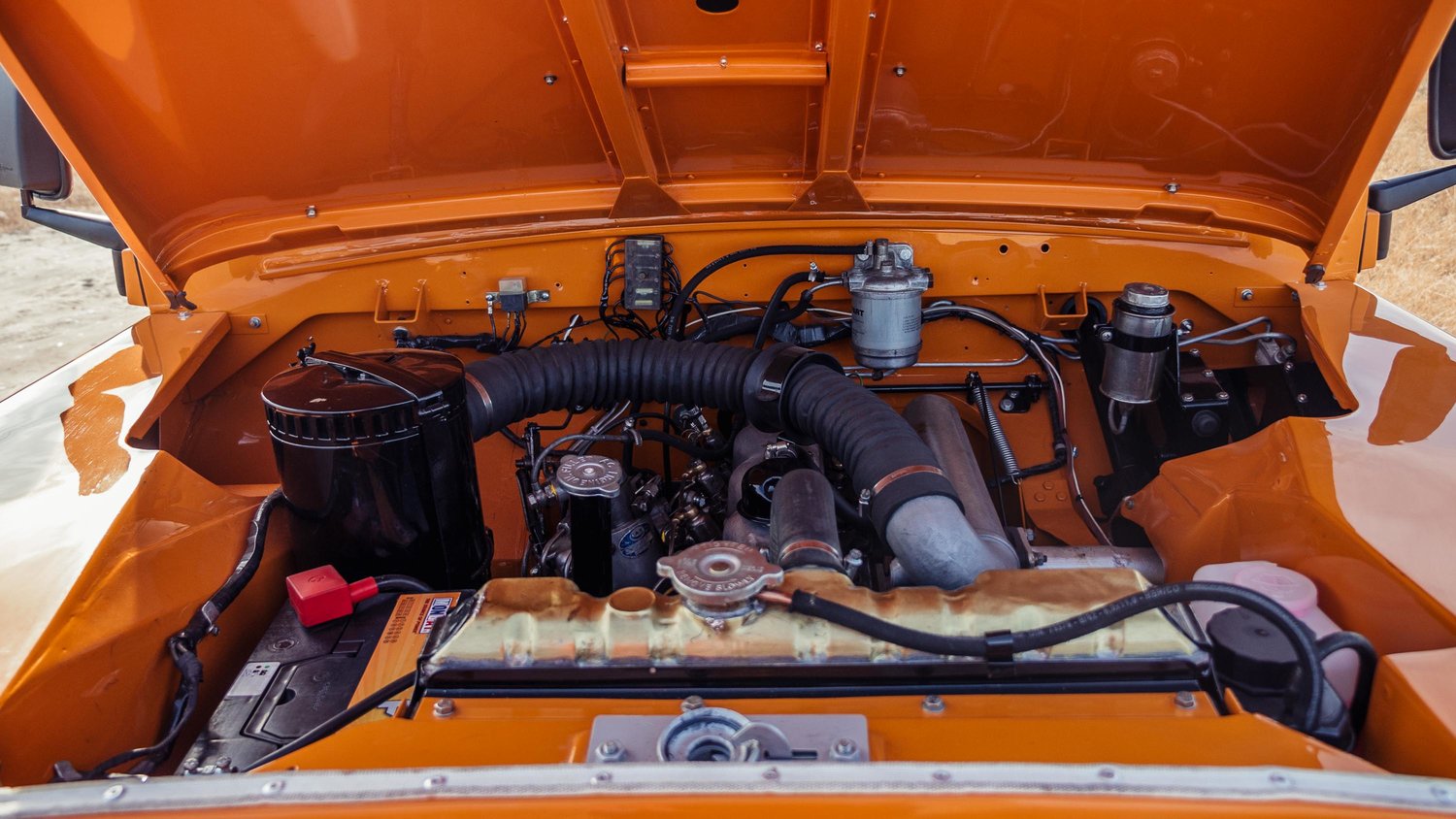
Vintage Land Rover series III, engine.
In 2020, Jaguar Land Rover introduced the first all new generation of Land Rover Defenders, switching from body on chassis to integrated bodywork and from live, rigid axles to all around independent suspension.
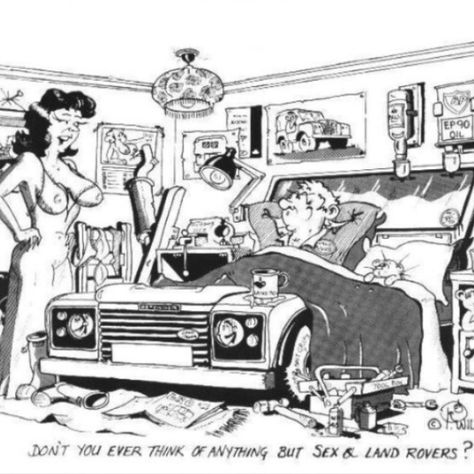
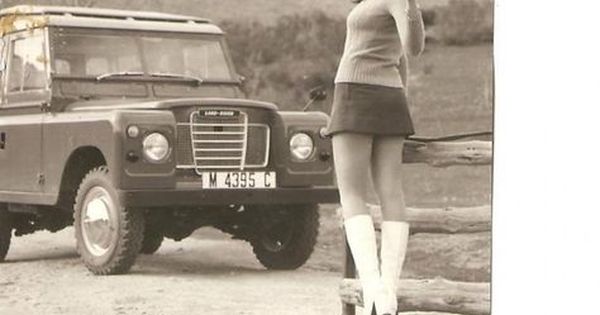
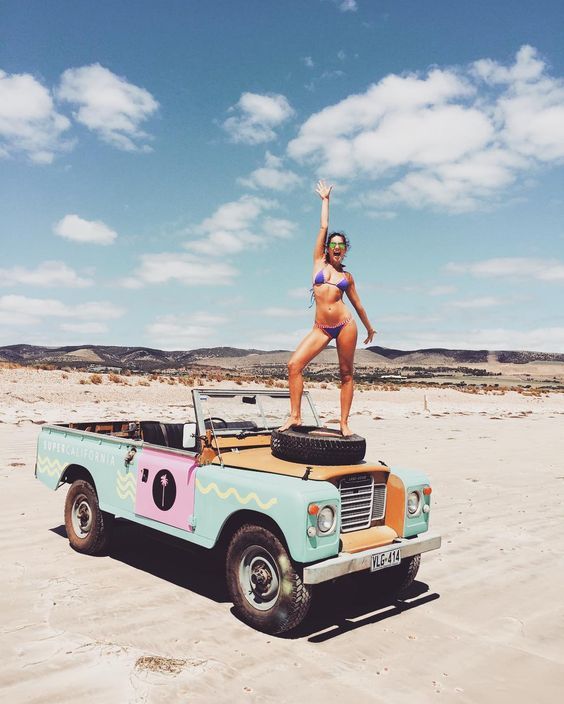
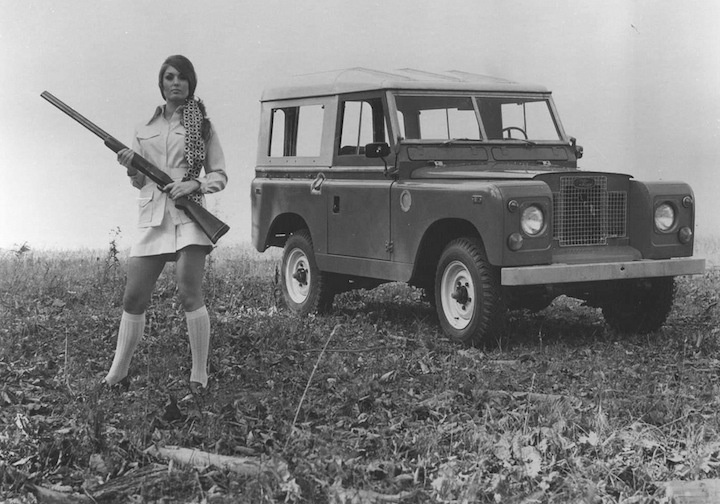
1967.

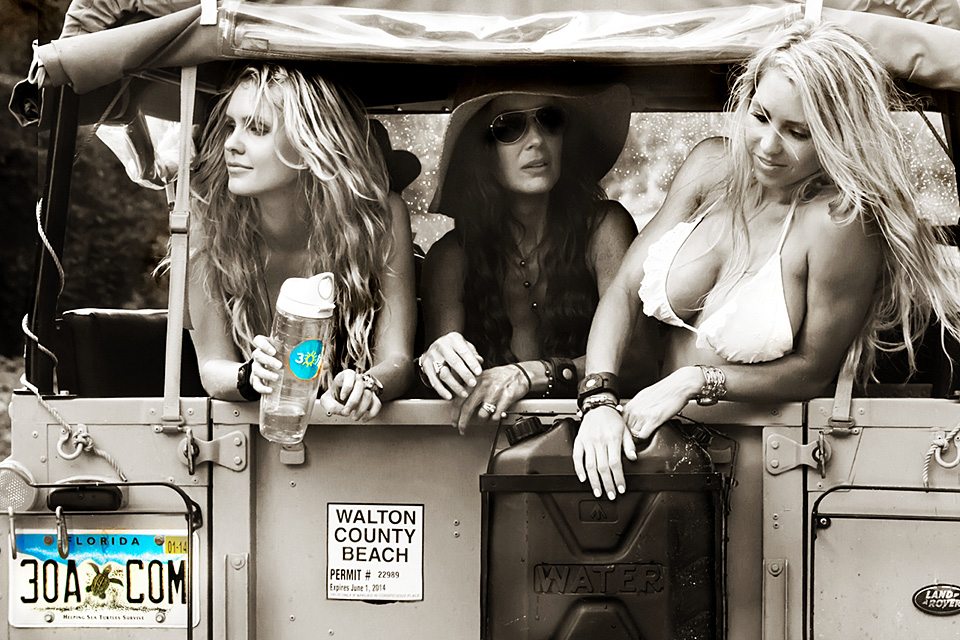
Land Rover Defender 90.


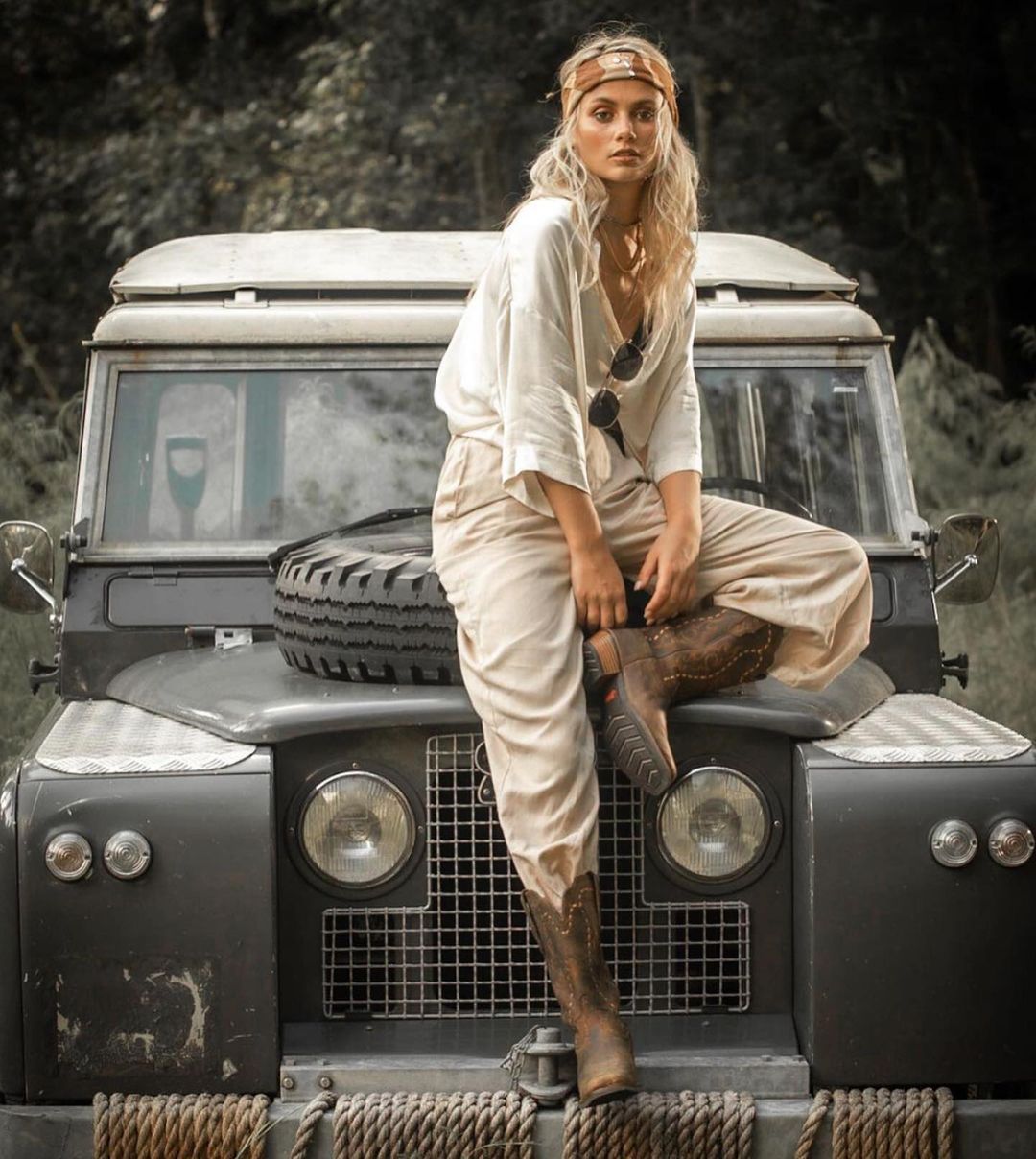
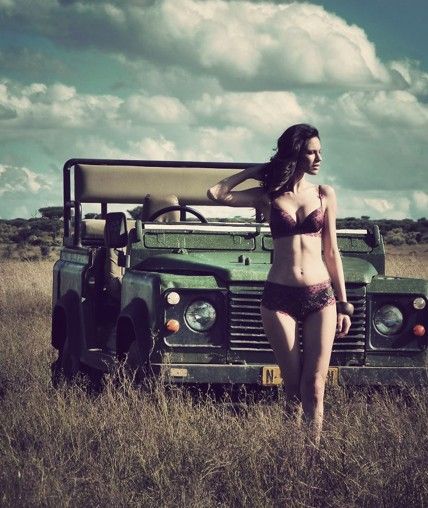
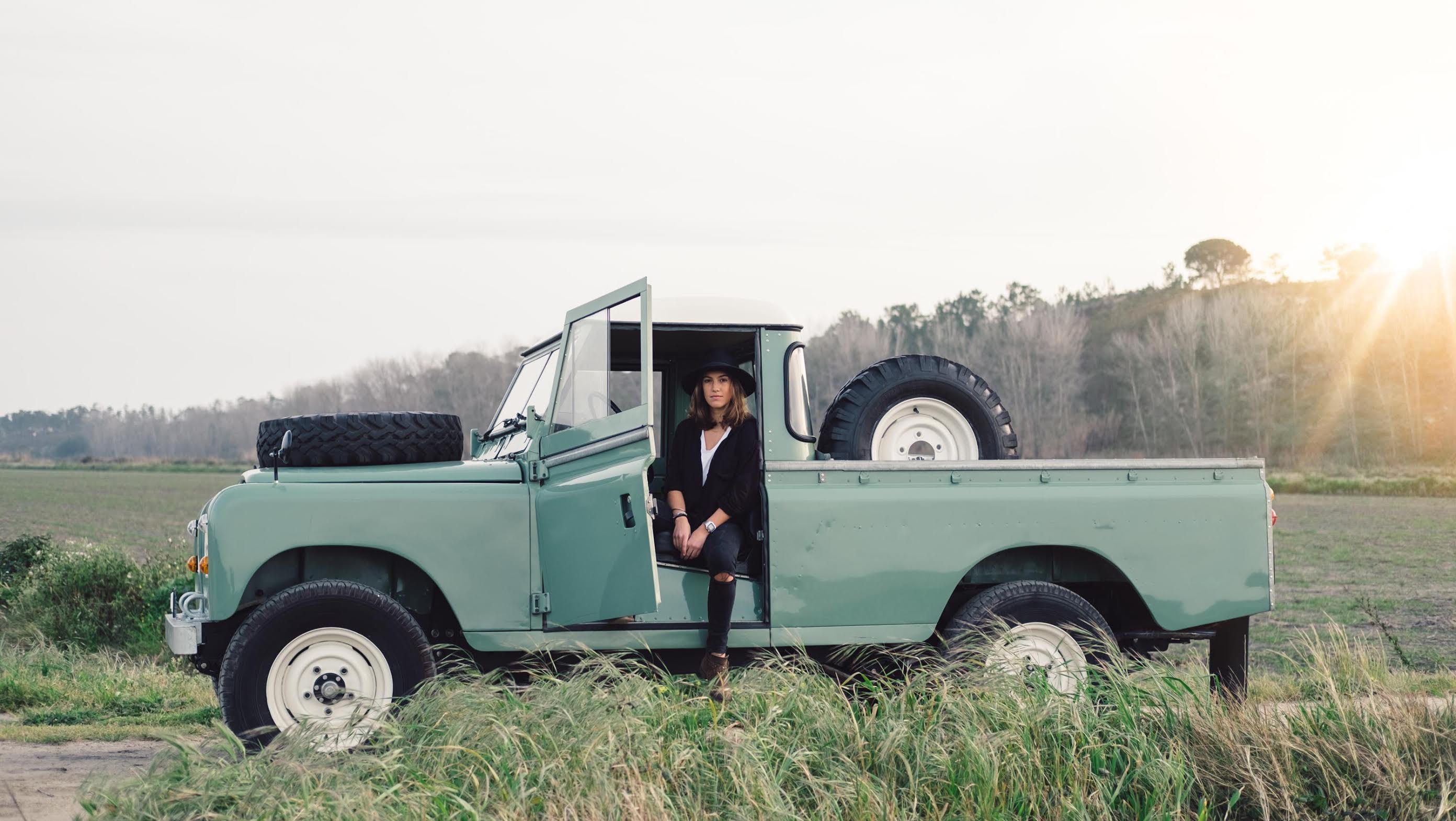
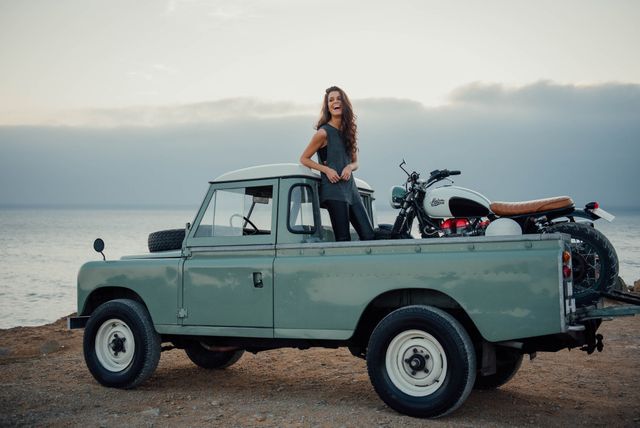
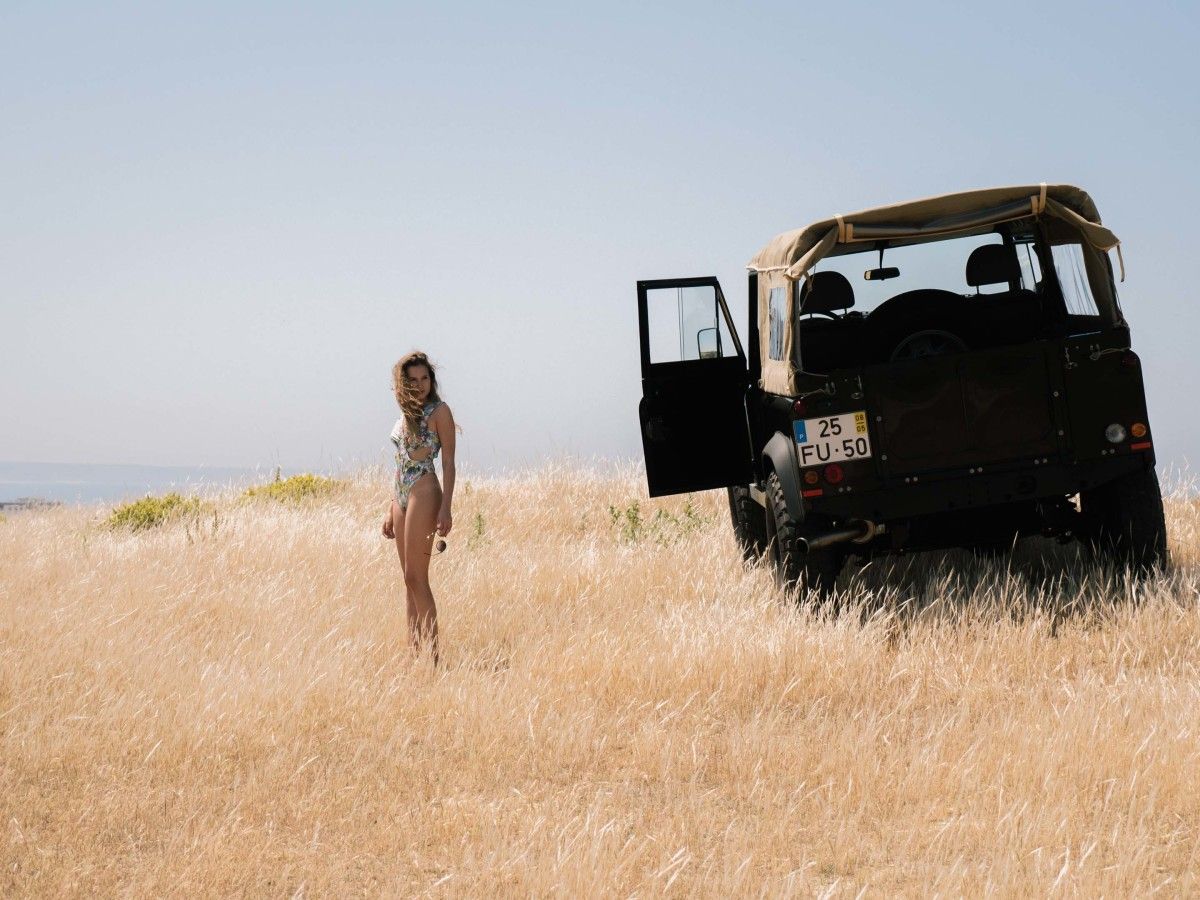
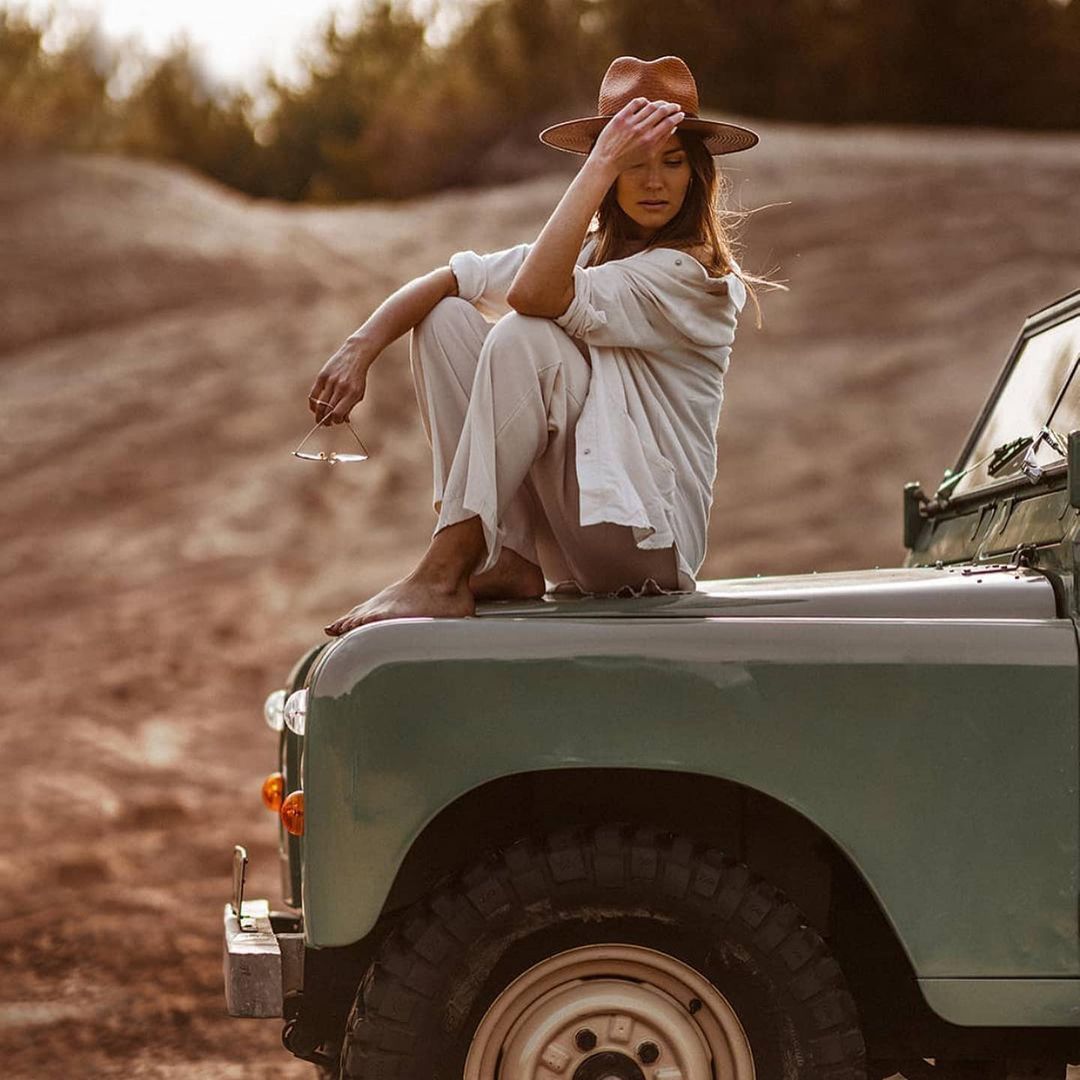
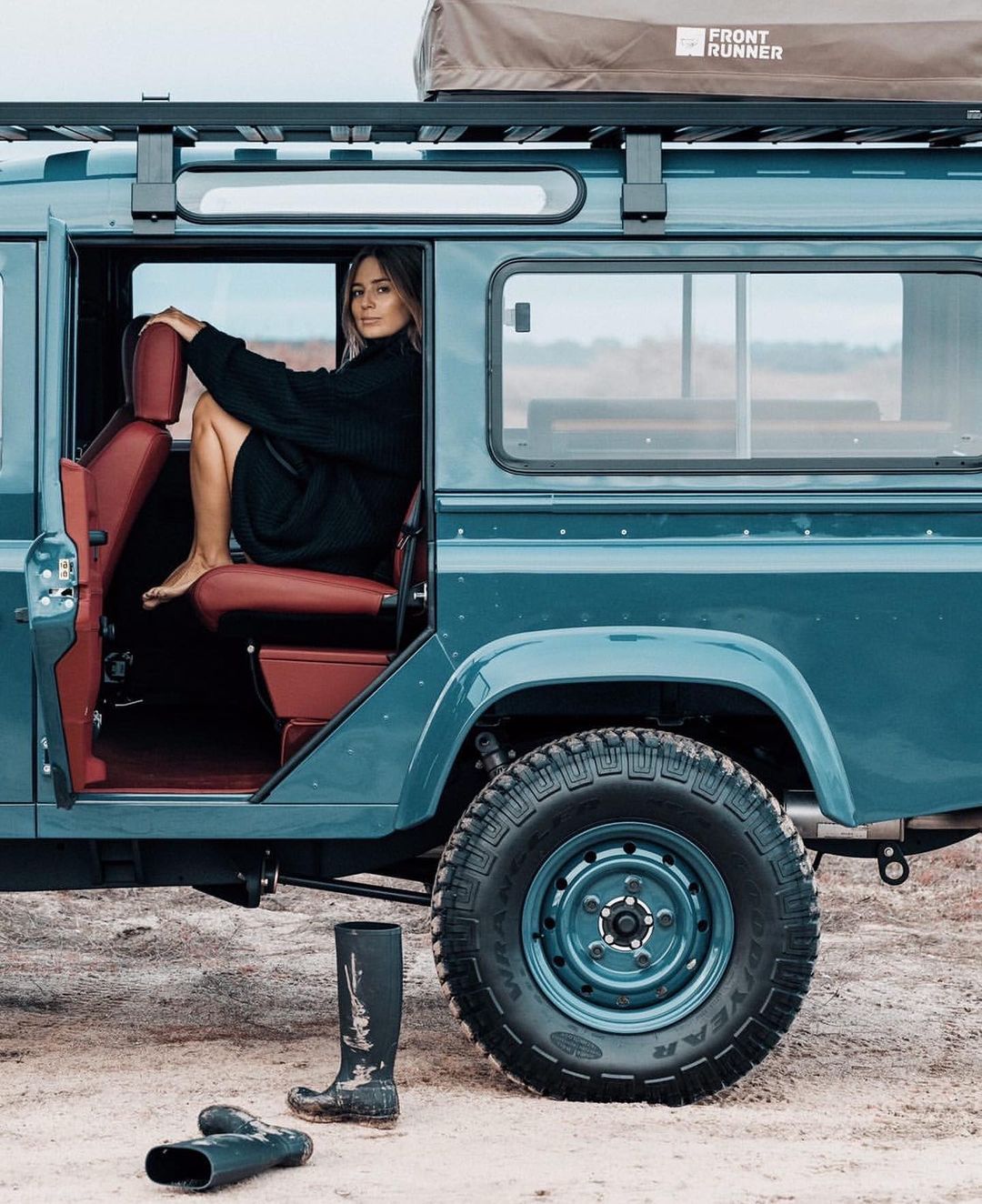
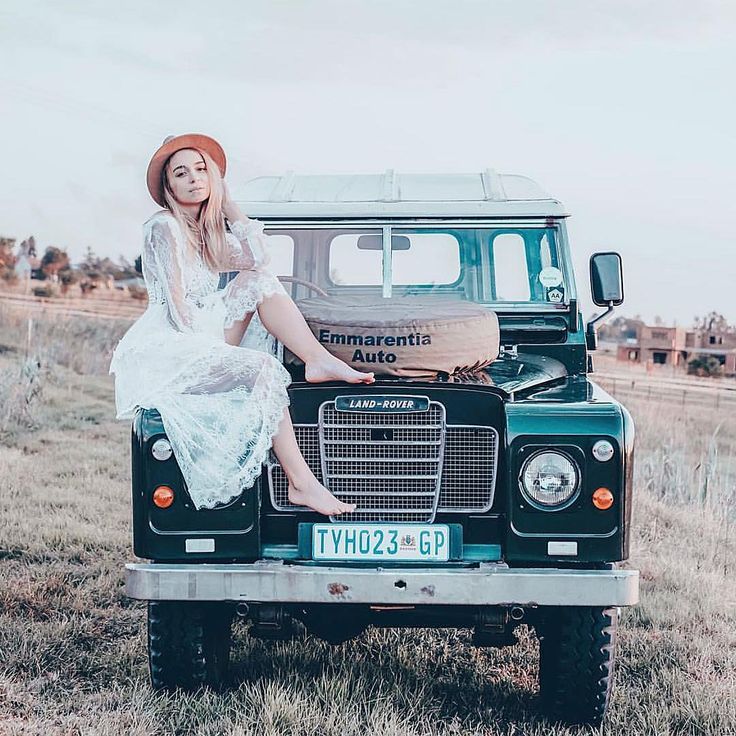
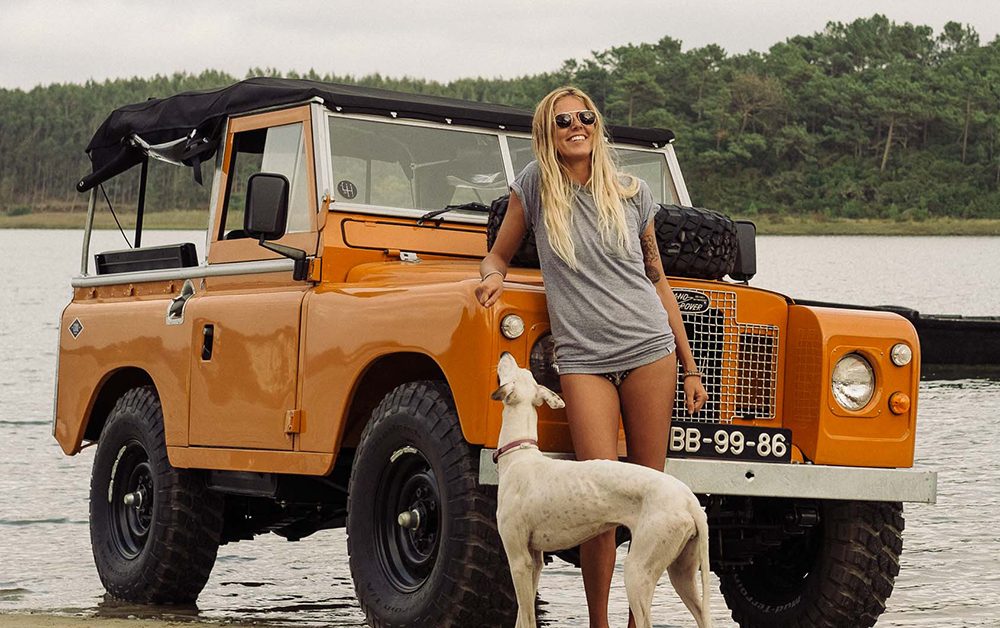
Land Rover Series IIA.

Land Rover Series IIA.

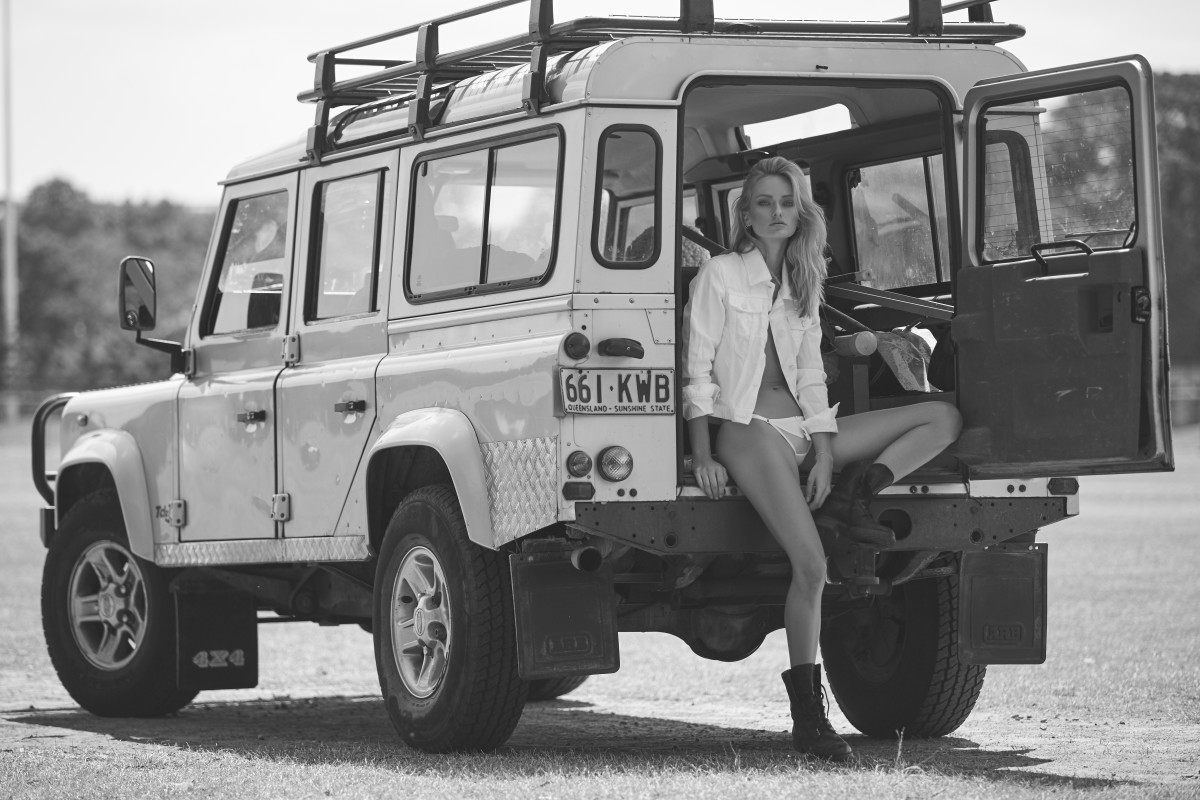

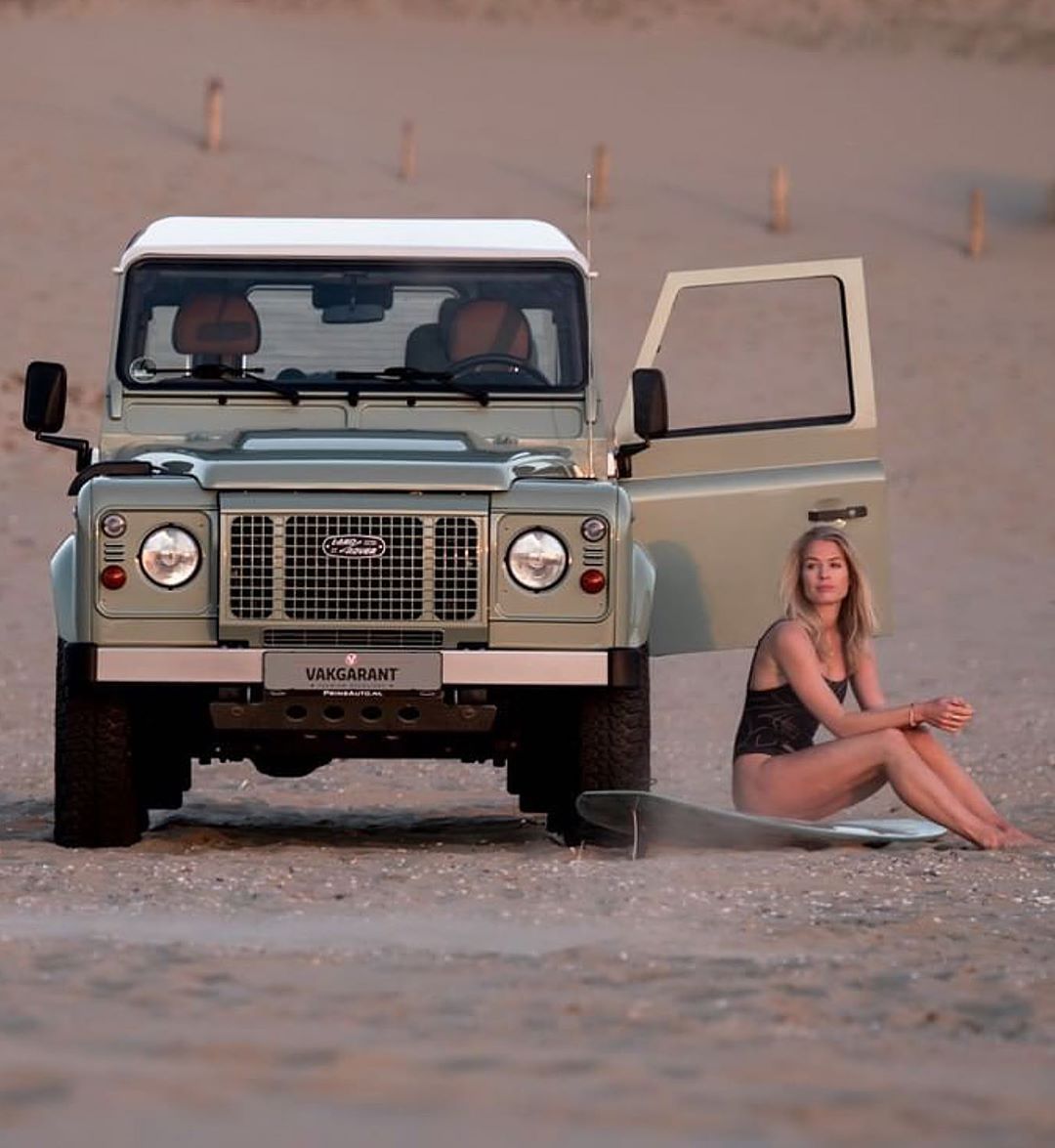
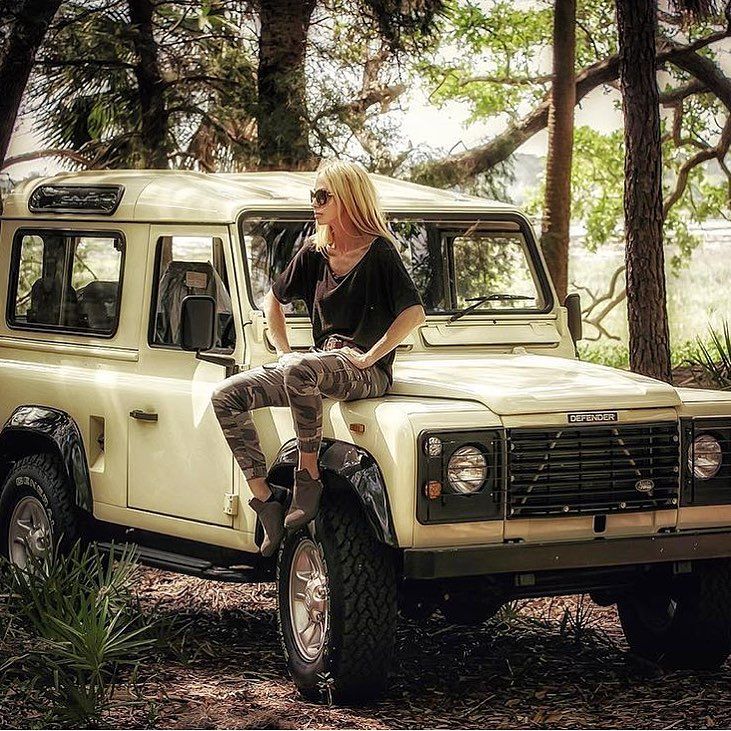


The range was originally limited to just two wheelbase lengths before a third, the Defender 130, was announced in 2022. The new Defender series is only available in closed, estate car bodies.
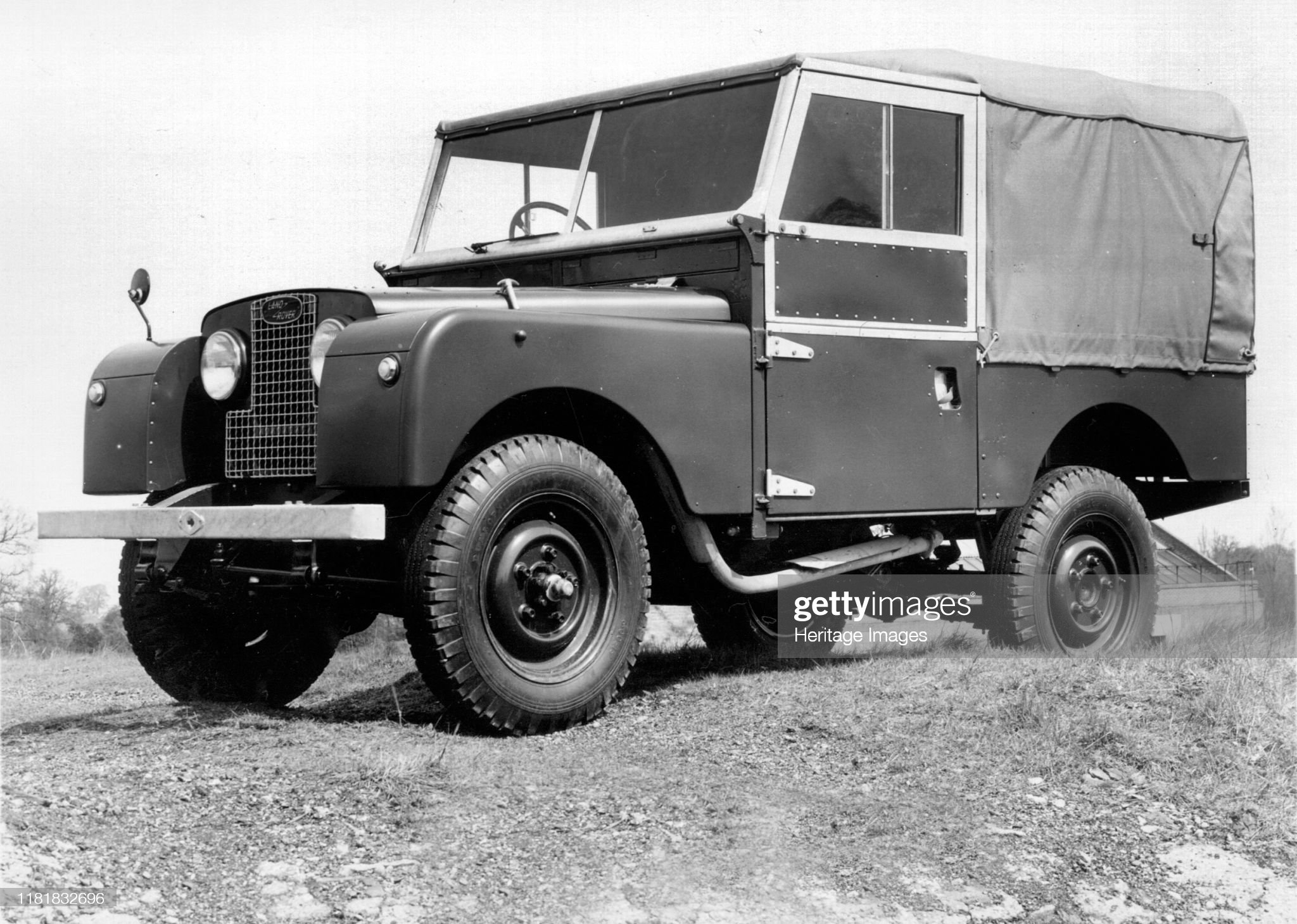
1957 Land Rover Series 1. Creator Unknown. Photo by National Motor Museum / Heritage Images via Getty Images.
The history of the Land Rover Defender. By https://www.jct600.co.uk/blog/history-of-land-rover-defender/.
The iconic Land Rover Defender has recently been revitalised and revised for the 21st century, but as a model line, its origins date all the way back the 1940s and the very earliest Land Rovers.
At its core, the latest Defender is still the tough, go-anywhere off-roader that Land Rover imagined in 1947 when it introduced a vehicle that would later be known as the ‘Series I’. But the latest Defender brings modern technology and powertrains to the line-up for [arguably] the first time.
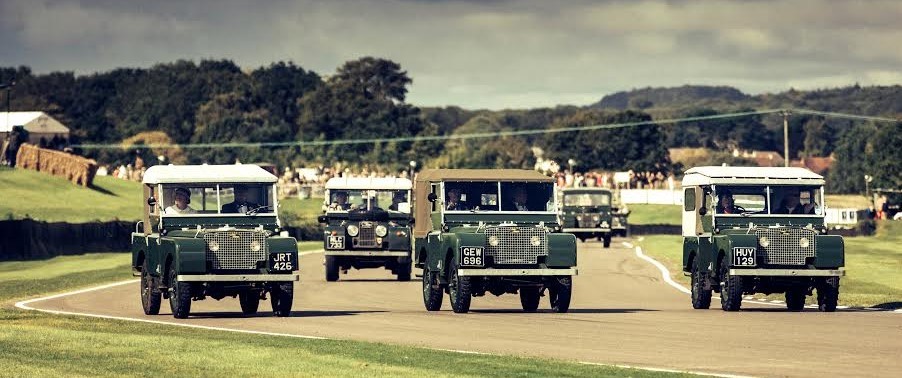
As well as impressive off-road ability, the new Land Rover Defender continues to sport truly iconic looks that strike that balance between functional and stylish. Square proportions, round headlamps and a familiar silhouette make the lineage easy to trace.
Read on as we look back as where it all started for Land Rover and the journey Land Rover has been on to reach the very latest Defender.
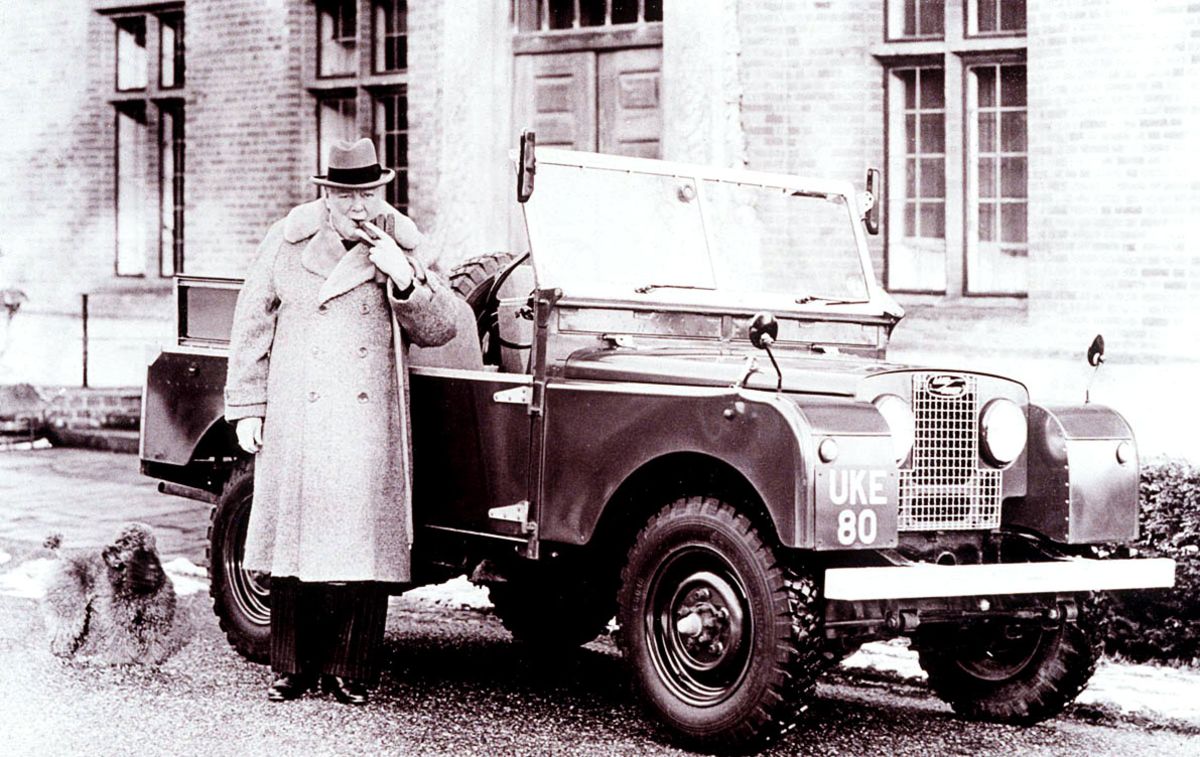
Winston Churchill’s Series 1 Land Rover.
Land Rover Series I: 1948-1958
The Series I wasn’t known as the Series I to begin with. It was simply the ‘Land Rover’, described by the Rover Company board as an “all-purpose vehicle” which took inspiration from the Willys Jeep.
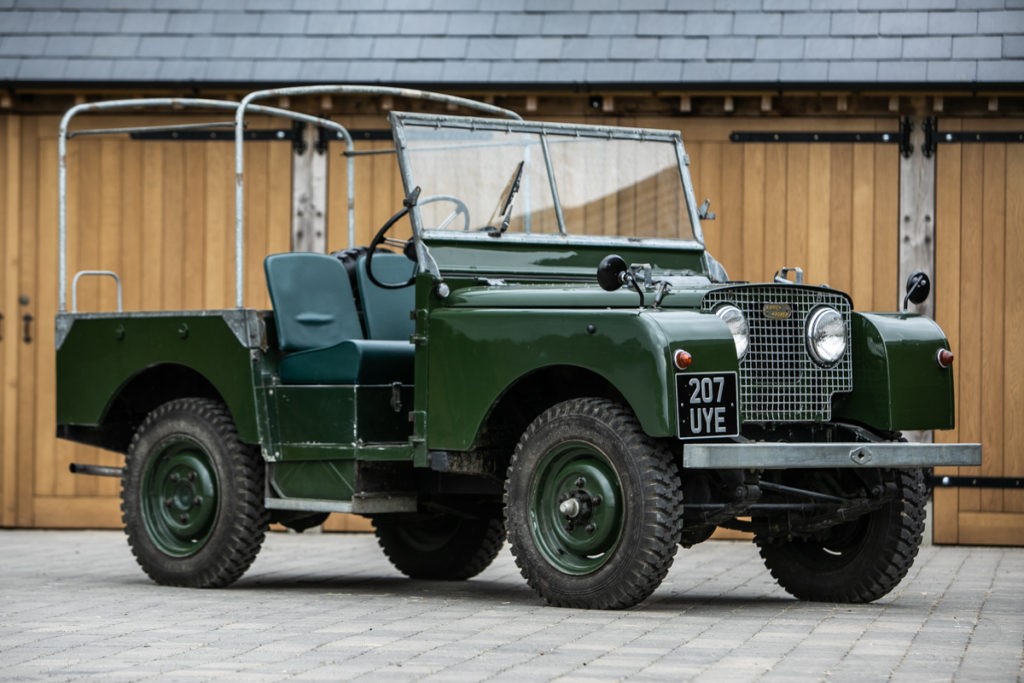
Launched at the Amsterdam Motor Show at the end of April 1948, the original Land Rover had an 80-inch wheelbase and was powered by a 1.6-litre, 50-horsepower engine from a Rover P3.
Its price? £450 new, though that’s more like £16,000 in today’s money.
Land Rover Series II: 1958-1961
The second iteration of the Land Rover, the Series II, didn’t take too long to come along. Launched in 1958, the Series II is perhaps the most recognisable ‘classic’ Land Rover, with a silhouette that is clearly visible in even the very latest Defender.
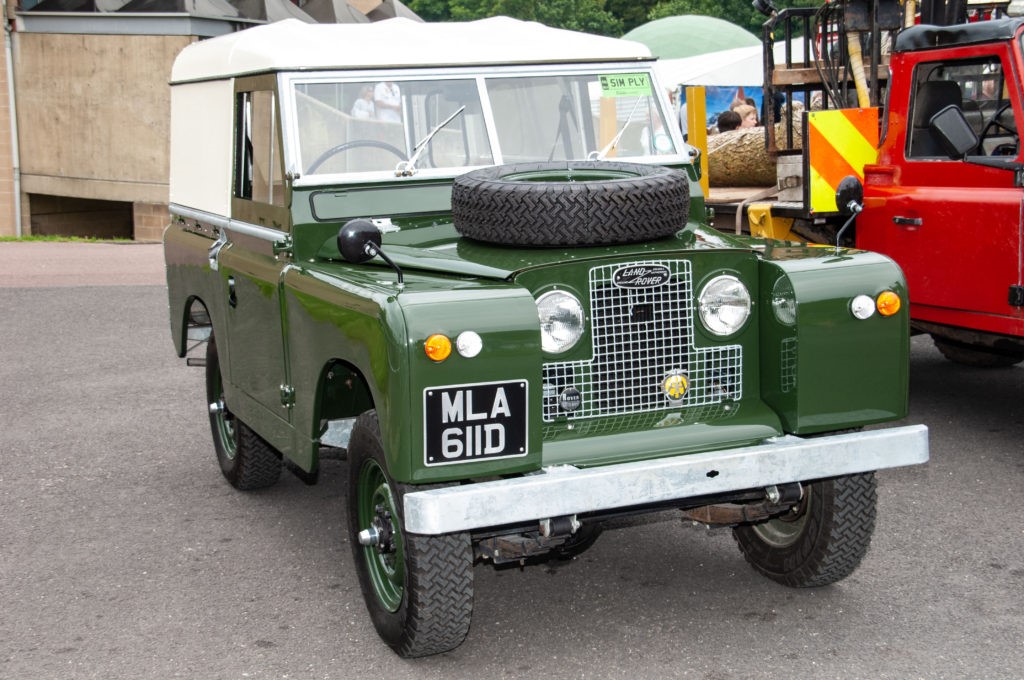
It had a 2.25-litre engine – much bigger than the engine found in the Series I – and was characterised by large, distinctive headlamps with round shoulders pushed ahead of them.
Land Rover Series IIA: 1961-1971
Not totally content with the Series II, Land Rover launched a subtle model revision in 1961. The cutely-named Series IIA came with a 2.3-litre, 62-horsepower engine, but this time with diesel power.
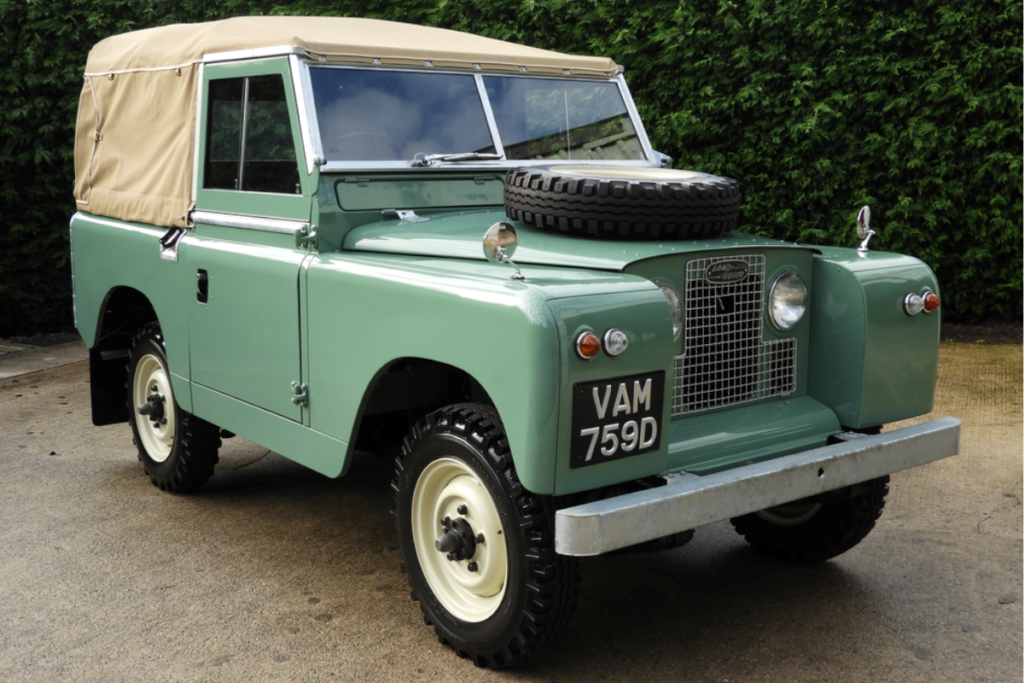
The Series IIA has a reputation for being extremely hardy and reliable too and would be the Land Rover that took production through the 500,000 mark in 1966. That’s half a million Land Rovers produced in a little less than 20 years.
Land Rover Series IIA Forward Control: 1962-1972
Land Rover wasn’t afraid to manufacture a unique vehicle for a unique purpose and so the fascinating Forward Control was born in the early 1960s.
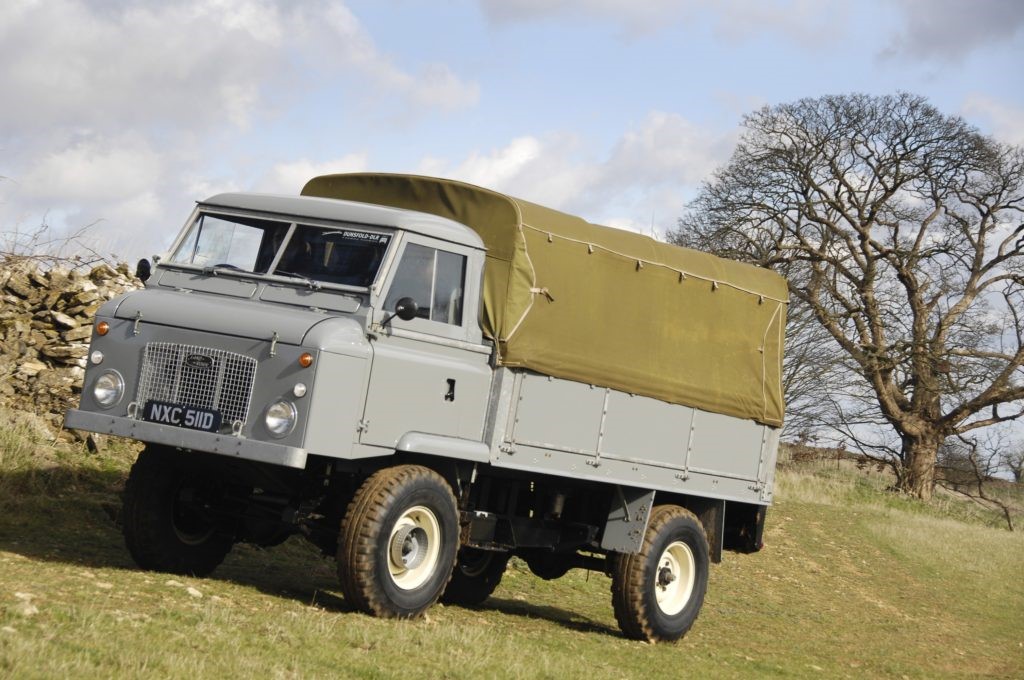
Big, obnoxious and visually pretty different to the standard Series IIA, the Forward Control redefined the phrase ‘heavy duty’.
Where did the name come from though? Quite simply, the driver was seated above and slightly ahead of the front wheels, so the ‘controls’ were ‘forward’.
It could carry 3360 lb [1524 kg] in its 109-inch chassis and was available with a choice of four-cylinder diesel and six-cylinder petrol engines.
Land Rover revised the Forward Control in 1966, adding lower headlamps and a wider track, though it would be discontinued completely in 1972, never to be replaced.
Land Rover Series III: 1971-1990
The Series III Land Rover arrived a bit more quickly than the Series II did, arriving in 1971 with mod-cons like a full-width dashboard and flatter door hinges. A heater was finally available as an option too.
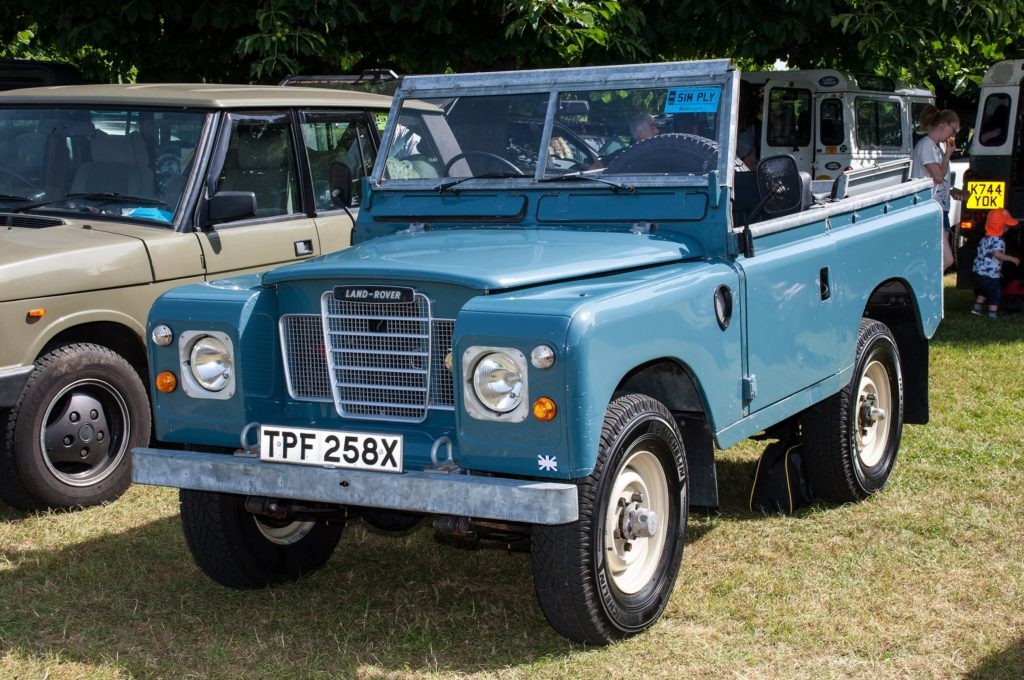
Just five years further down the line and the 1 millionth Land Rover would roll off the production line, while a further three years later, in 1979, the Series III would become available with a 3.5-litre V8 and permanent four-wheel drive via a centre differential lock.
Land Rover Defender: 1990-2016
The Series III was fine-tuned during the 80s and it was even renamed as the Ninety and One-Ten in the first half of the decade, but in 1990, Land Rover launched a new vehicle, this time under the Defender nameplate.
It was available with 90-inch, 110-inch and 130-inch wheelbases and Land Rover named those three different models accordingly.
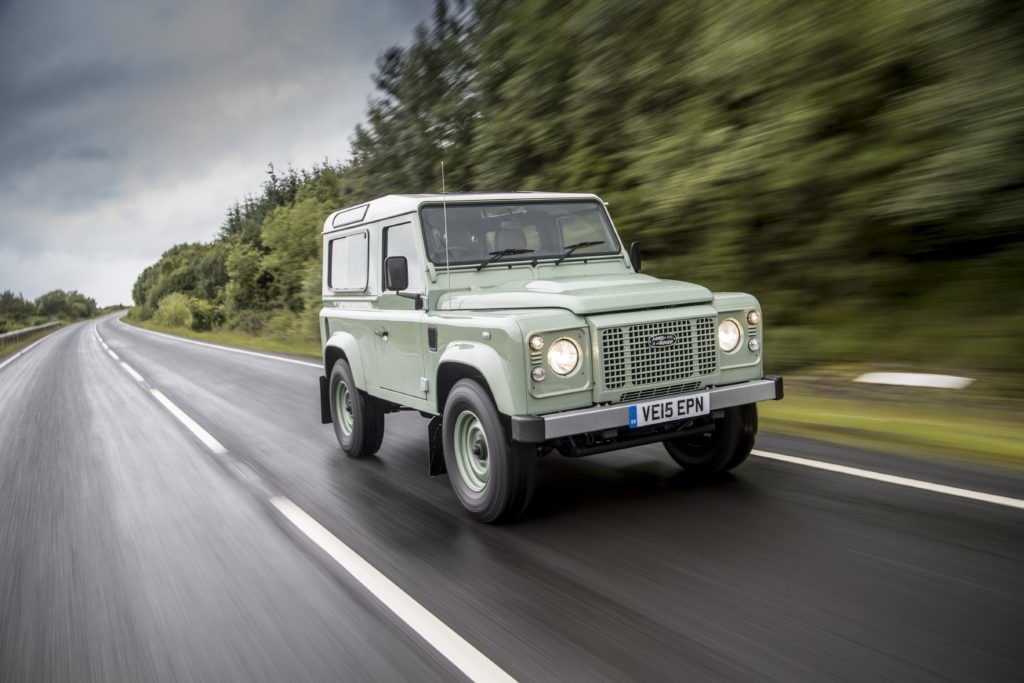
The Defender took power from a 2.5-litre 200 tdi turbo-diesel engine at launch, though that was replaced in 1998 by a five-cylinder Td5 diesel engine.
The engine revisions continued into the 2000s too, with the 122 bhp four-cylinder ‘Puma’ diesel engine becoming standard in 2007, also joined by a six-speed manual transmission and a more modern dashboard and safety measures.
That engine was in turn replaced in 2012, with a slightly smaller 2.2-litre engine replacing the existing 2.4-litre version and a special LXV Edition was introduced in 2013 to celebrate an incredible 65 years of Land Rover.

Photo by Land Rover.
Snapshot, 1948: Land Rover embraces life on the edge. By Lianna Bruhlman on April 30, 2018.
It’s early April 1948 and there are just days before the very first Land Rover is set to be revealed at the Amsterdam Motor Show. The new British company is using this opportunity to show the world not just the aesthetic design of its new car, but also its off-roading prowess …
While most cars’ ‘safe operating angle’ is far less than five degrees, let alone 30, Land Rover isn’t here to be like most other automotive manufacturers. And, although the Series I off-roader has been designed and built as a short-term venture to keep the Rover car company busy and in business throughout the depressed post-War years, the small company from Newborough, Anglesey, has a successful future ahead of it, one that not only includes a Royal Warrant from King George VI but also a devoted following from British and international fans alike. We’d like to wish a very happy 70th birthday to Land Rover, may you have at least another 70 years of pushing the boundaries of possibility.
Happy 70th Birthday Land Rover. By Ferrous Magazine.
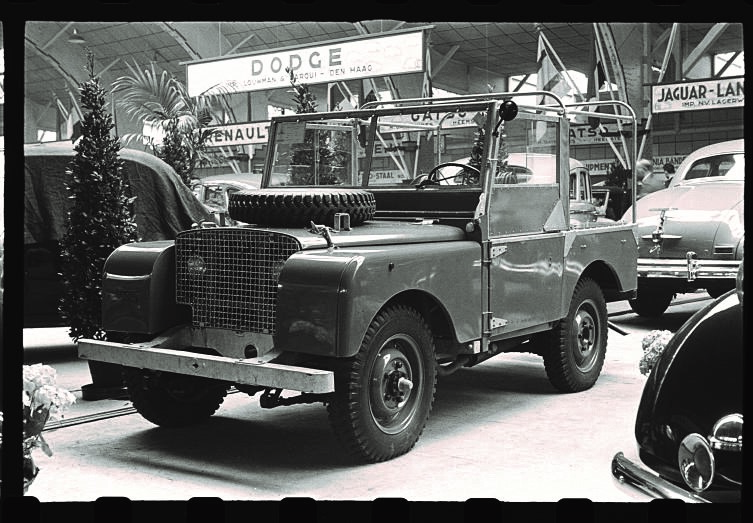
70 years ago to the day in 1948 the first ever Land Rover made its debut at the Amsterdam Motor Show. The Series I was a simplistic, practical beast designed to go anywhere and everywhere and be easy to run and repair. The original Land Rovers were the summary of post-war, British, practical engineering. These days Land Rovers are firmly in the territory of luxury SUVs, however they've retained and, in some cases enhanced, the off-road practicality of their cars.
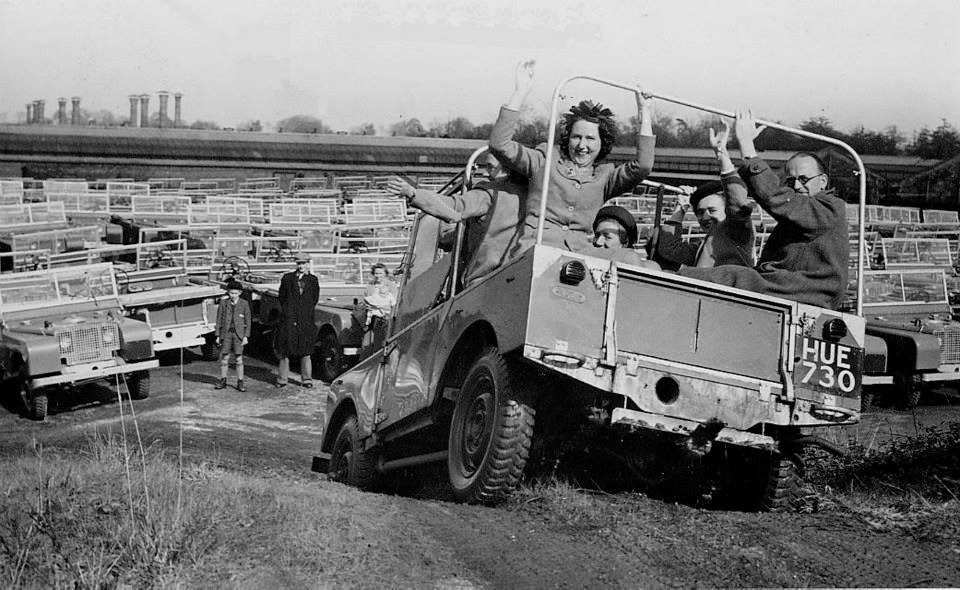
The outline of the design for the Series I was first brought to life in the sand on a beach in Wales by the Wilkes brothers. One of these brothers, Spencer, was the managing director of Rover, the now largely extinct British car manufacturer. In 1950 this same sand-drawn car was used to circumnavigate the globe by explorer Barbara Toy, impressive for something that came out of Wales. Through several re-imaginings the Series I eventually became the more widely known Defender in 1990. Land Rover's principle reputation is rooted in the cars being used as exploration vehicles all over the world by the likes of Sir Ranulph Fiennes, who was wheeled out to sing their praises in their live commemoration video broadcast from Coventry on their birthday. As well as this Land Rover has ties with the Red Cross and the Royal Geographical Society to provide them with vehicles, upholding their exploratory credentials.
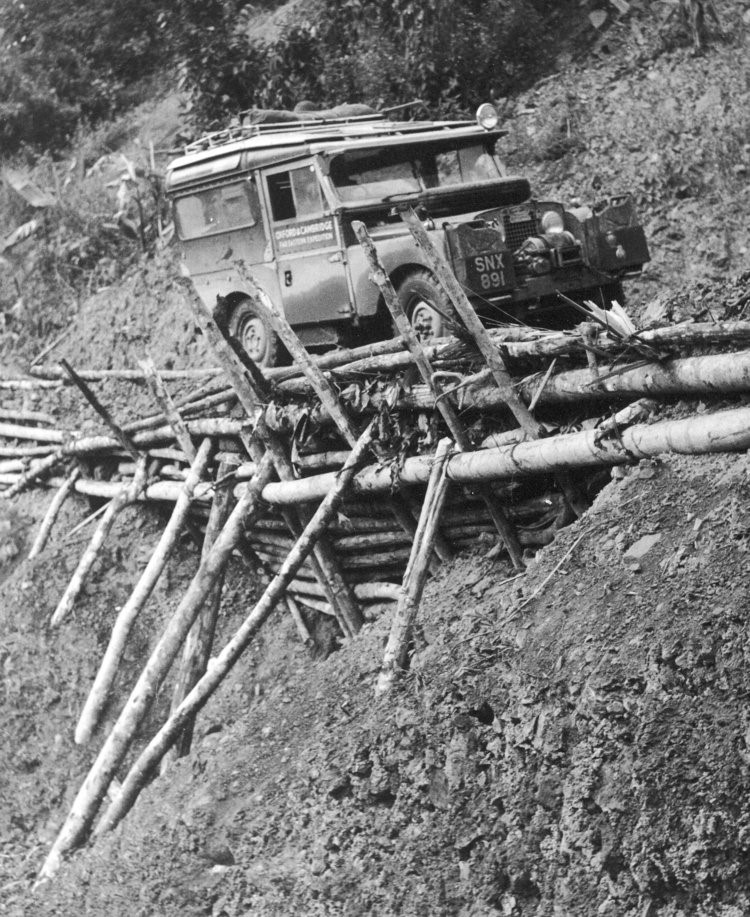
Oxbridge Expedition Far East 1955.
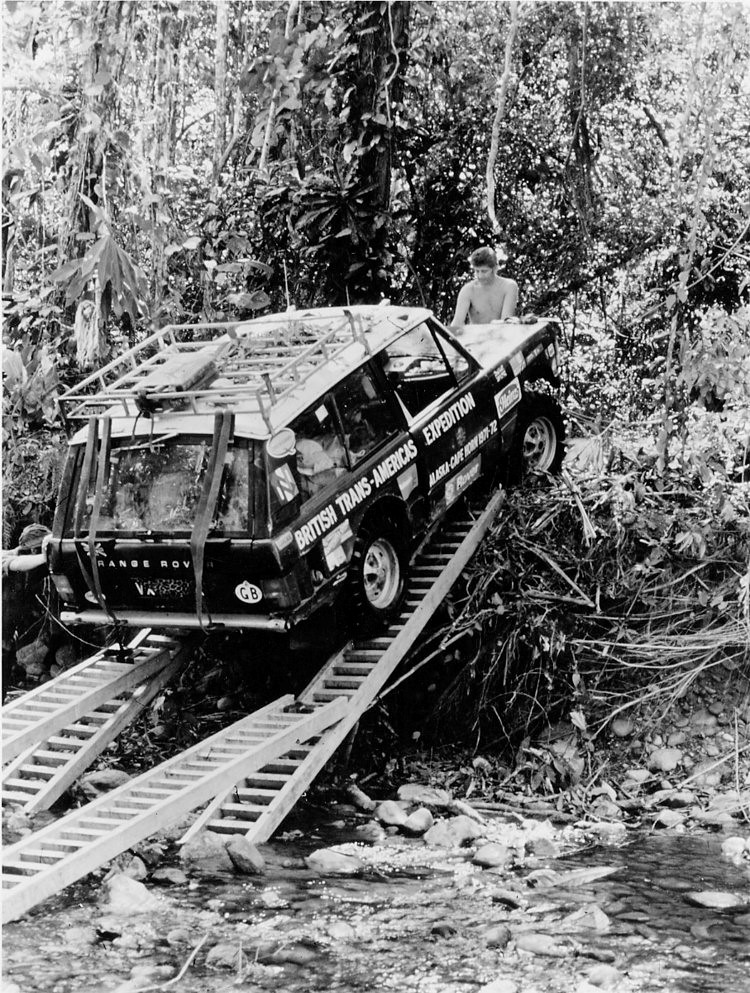
Range Rover Trans-America Expedition 1972.
In 1970 Land Rover moved into the luxury car market and unveiled their first SUV, the Range Rover. The Range Rover was designed to be more comfortable for everyday use without limiting the off-road capabilities, that said their main use seems to have been to make footballers happy. In 1989 the Discovery was launched, adding to the luxury SUV line. To their credit Land Rovers, despite being the must have cars of the wealthy, are still easily some of the most capable off-road vehicles in production.
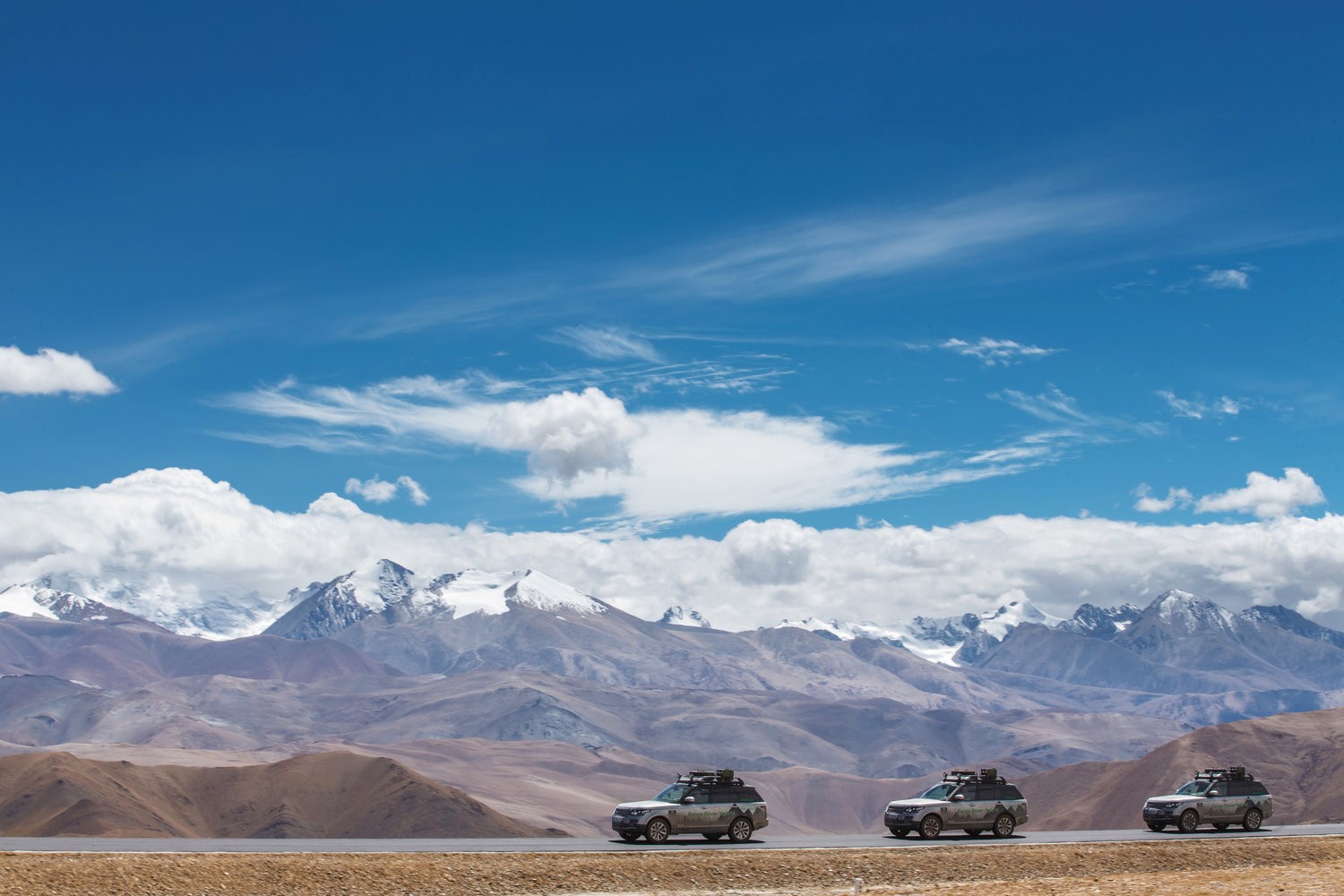
Range Rover Hybrid Silk Trail.
Today Land Rover is working towards the increased use of electric and hybrid engines to bring their vehicles in line with the advancing market. Alongside this they're busy developing their own driverless technology, though Uber's set the bar pretty low for that one. Today the closest living relative of the defining Series I Land Rover which made them so famous is the recently announced 405PS Defender Works V8. Only 150 are being produced at the Classics facility in Coventry and it's set to be a powerful homage to the brand's genesis. The key message then that Land Rover are keen to put across on their birthday is that they're not done yet.
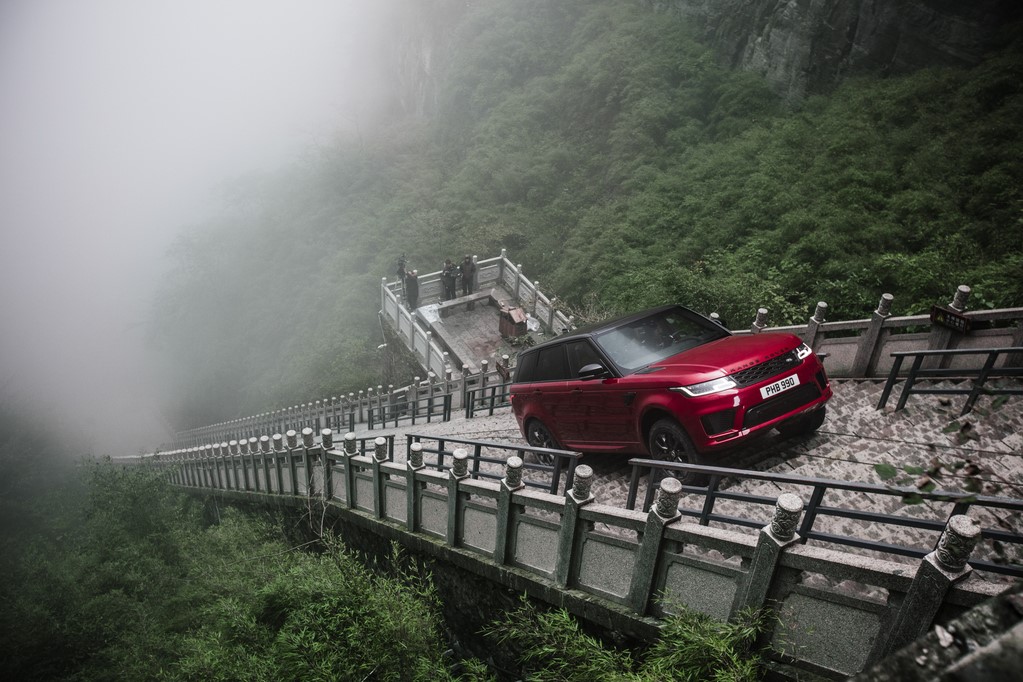
Range Rover Sport PHEV Dragon Challenge 2018.
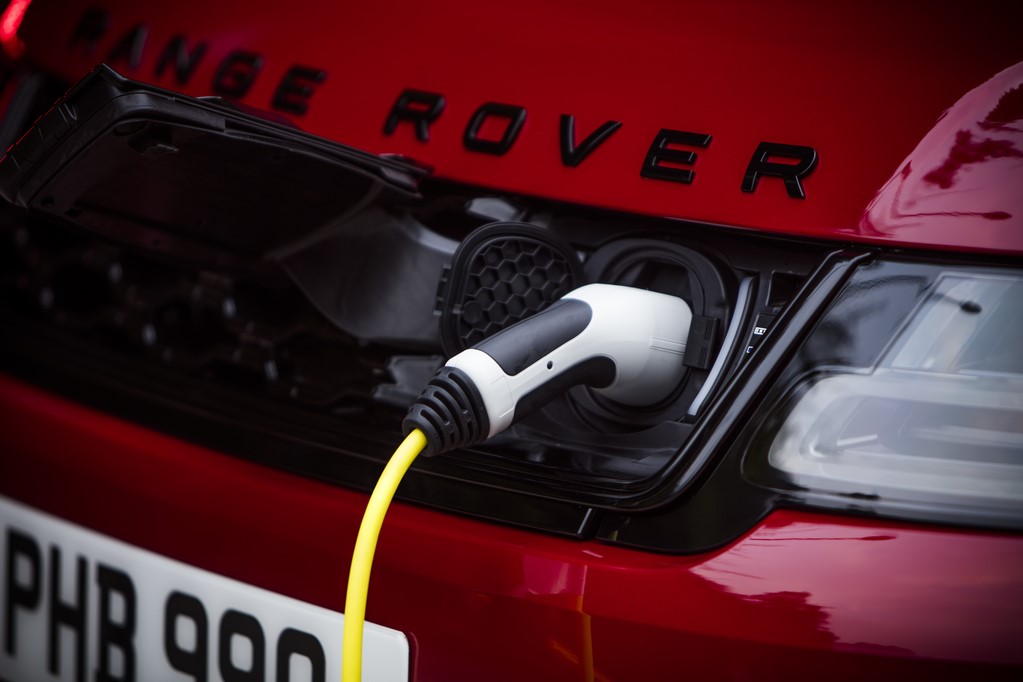
Range Rover Sport PHEV Dragon Challenge 2018.
On our 70th Anniversary we pay tribute to the cars and the people who have made Land Rover the world's favourite 4x4. See seven decades of adventure, innovation and pioneering spirit and look forward to a future driven by our passion to help you make more of your world.
Buyer’s guide: Land-Rover Series I. By Malcolm McKay. 29 Mar 2019.
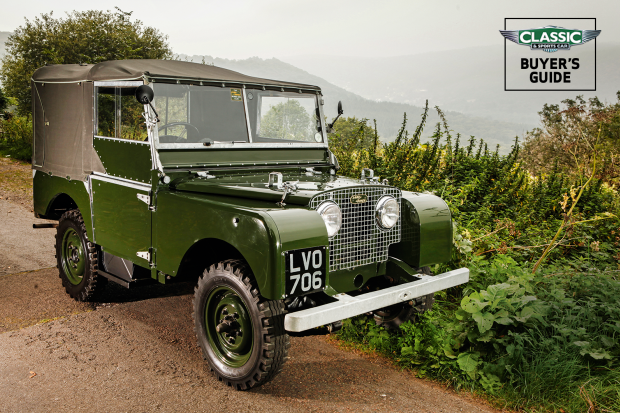
Why you’d want a Land-Rover Series I
Necessity is the mother of invention and, when war came to an end, small farmers such as Maurice Wilks needed a new light multi-purpose vehicle. It would have to drag a trailer-load of hay cross-country, power a small sawmill, plough a field, take a few sheep to market and milk churns to meet the lorry, or ferry the family to church.
The war had made mechanisation normal and near-essential and war-surplus Jeeps or cut-down pre-war Austin Sevens and Ford Eights were only a stop-gap. What made Wilks different was that, as well as running a farm, he was chief designer at Rover, where his brother Spencer was MD.
Maurice used a Jeep on his farm, but it was worn out and there was no alternative: the brothers suddenly saw a gap in the market. A Rover for the land must be a Land-Rover and in no time a prototype devised by Gordon Bashford was under test.
To make the vehicle more useful than a Jeep, it would have power take-offs to drive machinery and effective weather equipment. A year after having the idea, the first cars were unveiled.
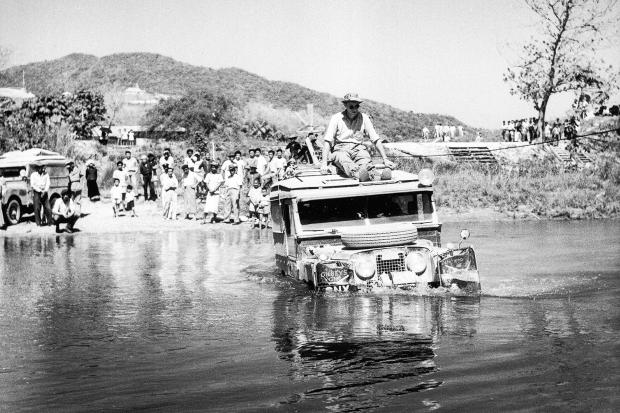
At full tilt: Landie still standing at 45º (left); crossing Mesai River on first Oxbridge Overland Expedition in ’55.
With a limited budget, restricted steel allocation and minimal press tools, the Land-Rover’s simple square shape was enforced, yet softened just enough to give it an endearing character.
Tooling and steel availability led to the chassis being welded up from four strips of flat plate, a surprisingly successful method that continued for decades on SWB models.
Despite the Land-Rover having a much smaller engine than the Jeep, development ensured that it was just as capable off-road and considerably more versatile.
Just 25 pre-production cars had been built by the time of its ’48 launch, which brought an overwhelming reaction. Motoring writers were astonished by the vehicle’s adaptability, which was beyond anyone’s wildest dreams. It cost only £450: passenger seats, doors, a spare tyre and a starting handle were optional extras at first, but were soon included. Rover had to rapidly gear up its plans for production and never looked back.
Series Is are highly collectable and caution is urged when buying an early car: the more history that can be shown, the better. Rust is the biggest enemy, but previous owners substituting incorrect major components can create havoc, too.
Land-Rover Series I: what to look for
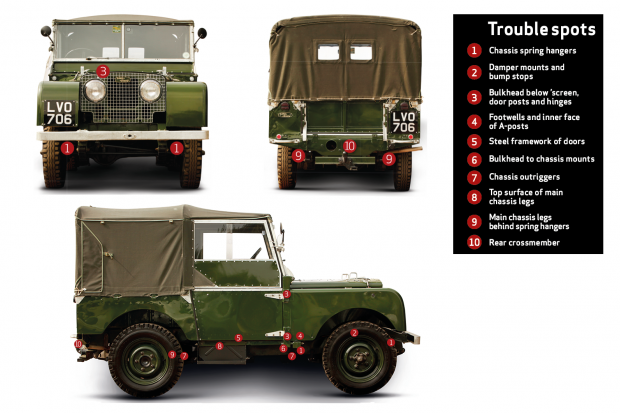
Bodywork
See above for trouble spots.
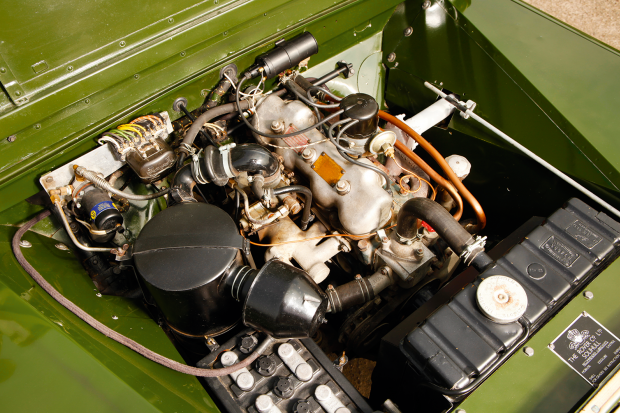
Engine
This is a 1600 engine; 2-litres have a filter on rocker cover and a side breather (see One to buy). Starter ring gear NLA for 1.6/early 2-litre. When hot, oil pressure can drop to 10psi at idle; 50psi at speed. Check for overheating/blown head gasket (water loss, emulsion on oil filler).
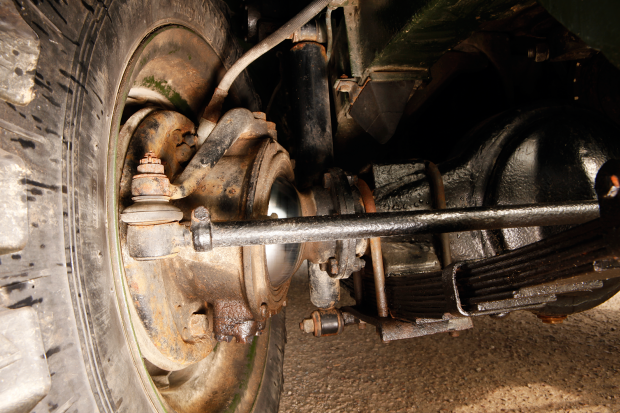
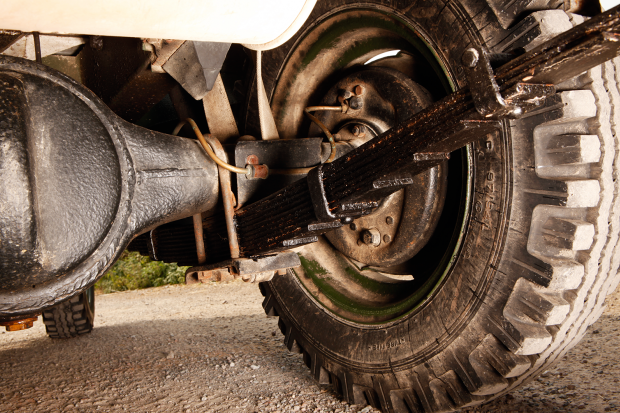
Suspension
Suspension takes a pounding so look for broken spring leaves and wear in swivels and six track-rod ends. If fitted, the freewheeling hubs need to be used.
Halfshafts can’t be removed from semi-floating axle. Excessive internal oil leaks mean brake shoes will be soaked and diffs may be suffering due to lack of oil.
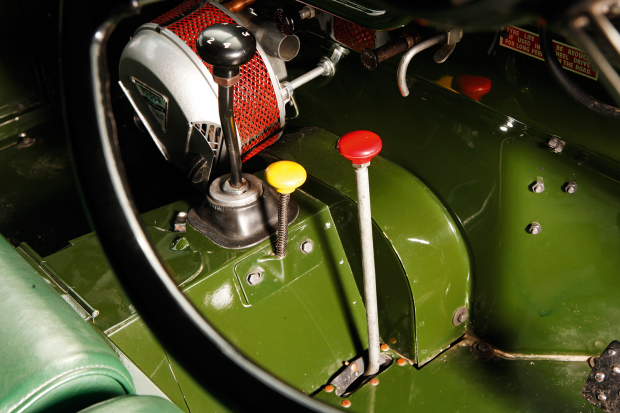
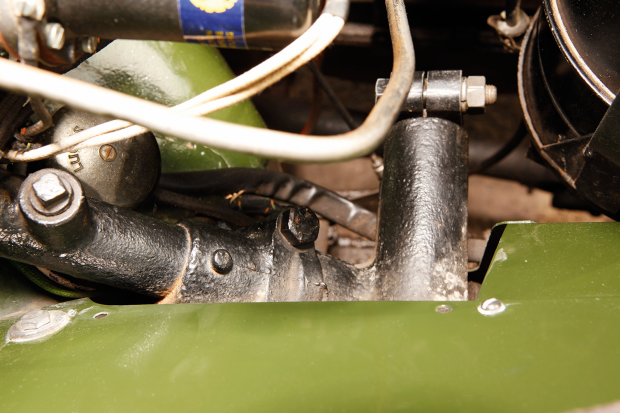
Transmission
2/4wd lever control came in 1950, previously a pull ring engaged the front freewheel. Transmissions strong provided they don’t leak too much.
Steering
Aluminium-cased steering box of early cars cracks. Check swivel balls on front axle are smooth and rust-free: if not, budget up to £1000 to put both right.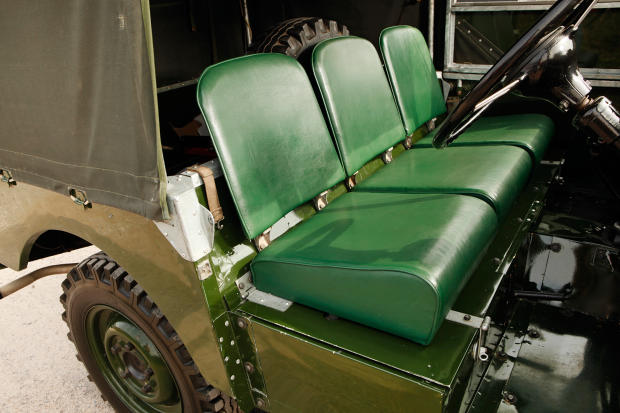
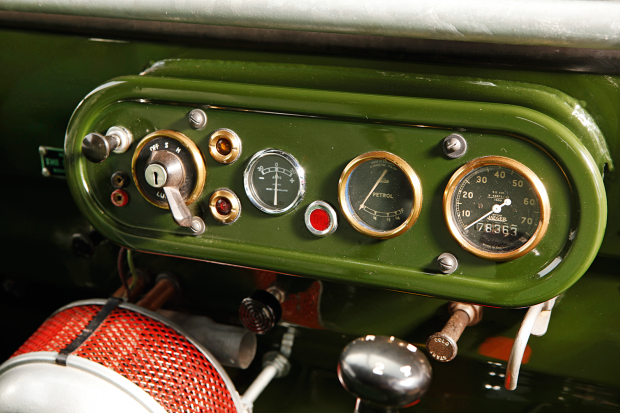
Interior
Everything is available to retrim an early Landie, or to change body spec from truck cab to canvas tilt, so tatty or missing fabric trim is not a big problem.
Limited instruments and switchgear can be a challenge if you are keen to have an early car 100% original: details often changed and parts can be scarce.
Land-Rover Series I: on the road
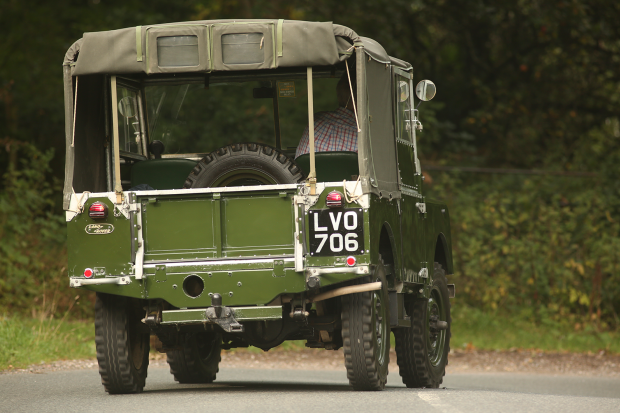
There’s plenty that can go wrong with a Series I, but it’s a hardy beast.
The Series I may be basic, but it shouldn’t feel primitive or unsafe when driving. The engine should be smooth, with good oil pressure and no untoward clattering or knocking. Look for signs of overheating: the unit was designed to work hard in low ratio with no airflow, so should have plenty of spare capacity for normal use.
Some rattles are inevitable but if everything shakes and feels as if it is about to fall apart, it probably is: major expenditure may be imminent. Transmission noise should be noticeably reduced in third and fourth.
Make sure you get up to speed in two-wheel drive, but also ensure that it works properly in four-wheel drive and low ratio. If four-wheel drive is engaged, you should feel the steering wheel wobble when driving on tarmac; if freewheel front hubs are fitted, lock them.
Don’t drive any distance in four-wheel drive on tarmac because it strains the transmission and wears the tyres; original-spec Avons are costly, so check for tread depth and cracking.
Series I box has synchro only on third and top, so double-declutch when changing down into second. But it is strong and a rebuild will usually only entail new bearings, synchros and seals.
With its short wheelbase, the 80in has the choppiest ride on uneven roads: 86/88in are much smoother and LWB better still. The steering should not be excessively heavy or sloppy, the former suggesting seized swivels and the latter worn track-rod ends or a tired steering box.
Many have bodged wiring, which can be a fire hazard, so inspect the circuitry carefully for age and quality, and that everything works.
Land-Rover Series I price guide
Narrowing down prices for S1 Landies is a tricky business.
In general, highly-original, patinated early vehicles are usually worth more than cosmetically restored ones, although those being restored by JLR in the Reborn programme are being sold for circa £80k, so it doesn't always hold true.
Age-wise, 1948 models are the most desirable by far – so long as they have the right spec – and these will almost always sell for more than examples from 1949 onwards.
And to further complicate matters, 80in models usually command a premium over later 86 and 88 in models, all else being equal; 107 in Series Is can even be bought for under £10k thanks to the fact that few people want a LWB.
In summary: take the below as no more than a guide and do your research before buying.
Show/rebuilt 80in: from £40,000
Average: £15,000-20,000
Restoration: from £3000
Land-Rover Series I history
1948 April Land-Rover launched at Amsterdam Motor Show October Station Wagon introduced: all-alloy panels, winding windows, £959 (to ’51)
1948 December Pressed curved bulkhead replaces folded
1950 Metal van-type roof option added
1950 May Headlamps exposed
1950 November Freewheel front replaced by selectable rear/four-wheel drive
1951 June One-piece front wings Jul External doorhandles, chassis braces under rear floor
1952 January 1997cc IoE engine replaces 1595cc
1954 80in grows to 86in; 107in LWB introduced, 10-seat wagon option; dash reshaped/larger dials
1955 P4-type 1997cc cylinder block (with de-siamesed bores) standardised in Land-Rover 1956 October Wheelbase grows to 88/109 in, to make room for bulky new diesel engine
1957 June Diesel engine option: 51bhp at 3500rpm; 87lb ft of torque at 2000rpm
1958 April SII introduced with new overhead-valve 2286cc petrol engine, 52bhp, sills added to sides
Mahindra
Roxor
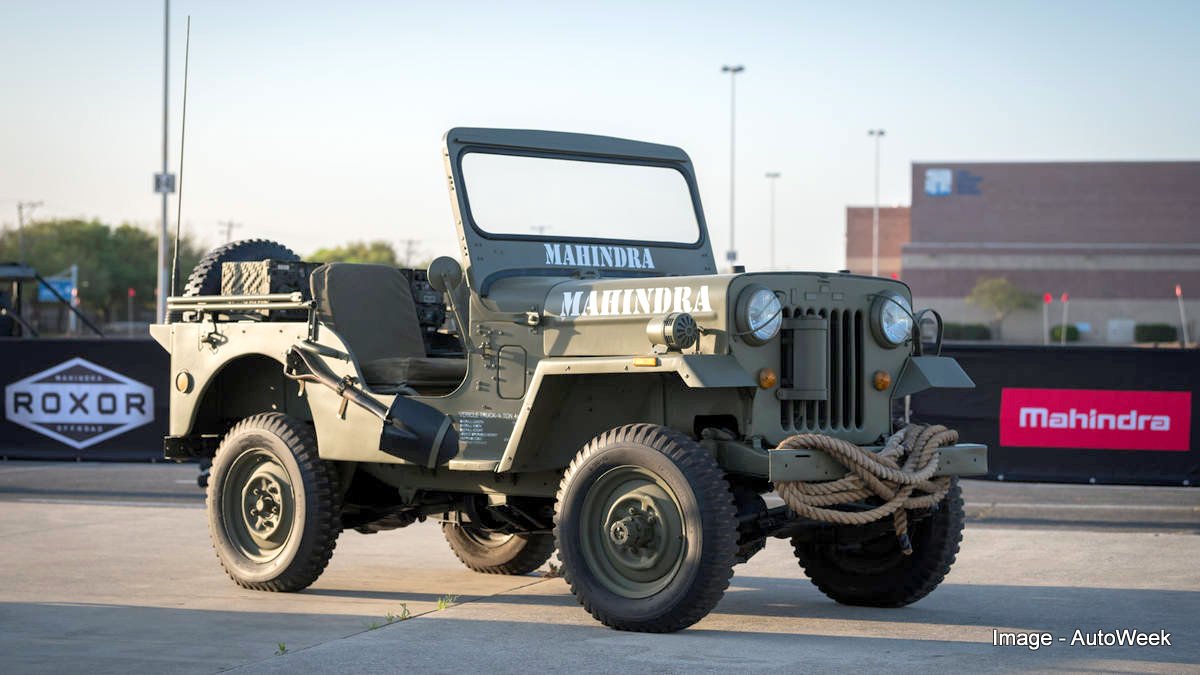
Mahindra Roxor in the US. Image by AutoWeek.
The Mahindra Roxor is a 4x4 off-road only utility vehicle assembled by Mahindra Automotive North America (MANA) since 2018. MANA is the US arm of Indian automotive company Mahindra and Mahindra Limited. It is based on the Mahindra Thar M2DICR variant, produced and sold in the Indian market since 2010. Mahindra has made off-road vehicles in jeep pattern since a 1947 contract with Willys to build such vehicles for the Indian market.
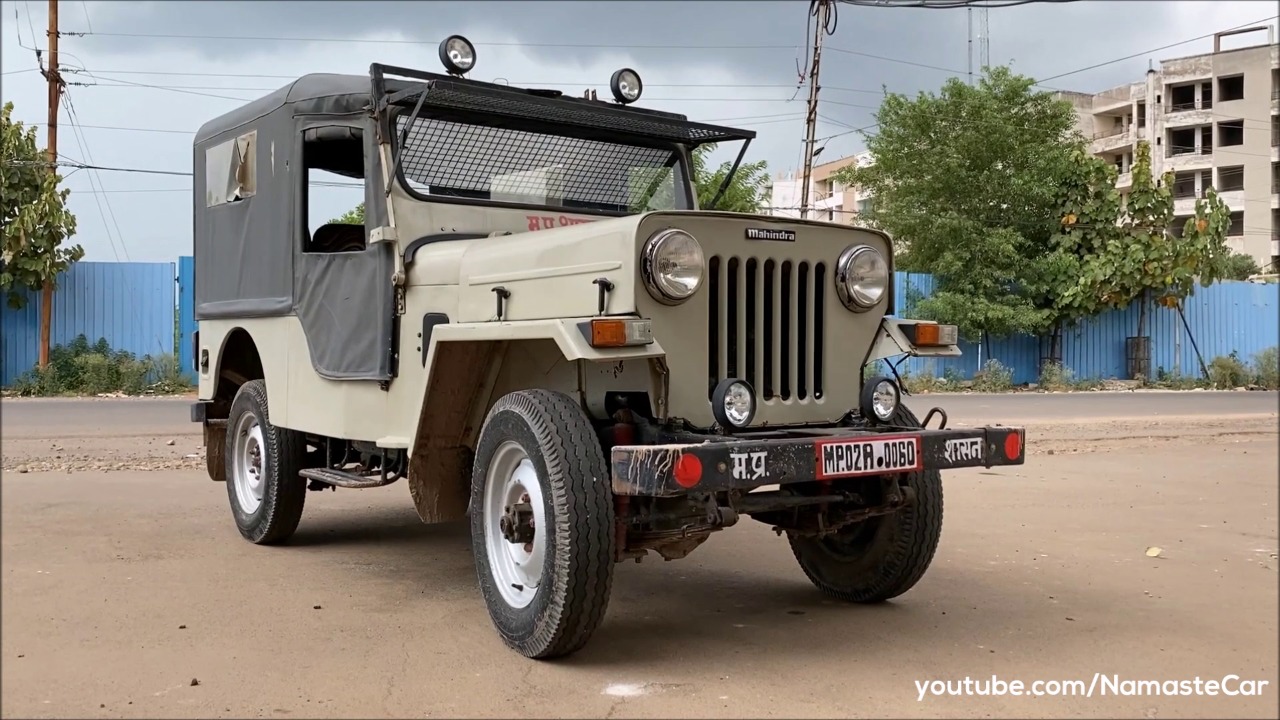
Mahindra Jeep CL 550 MDI of 1997.
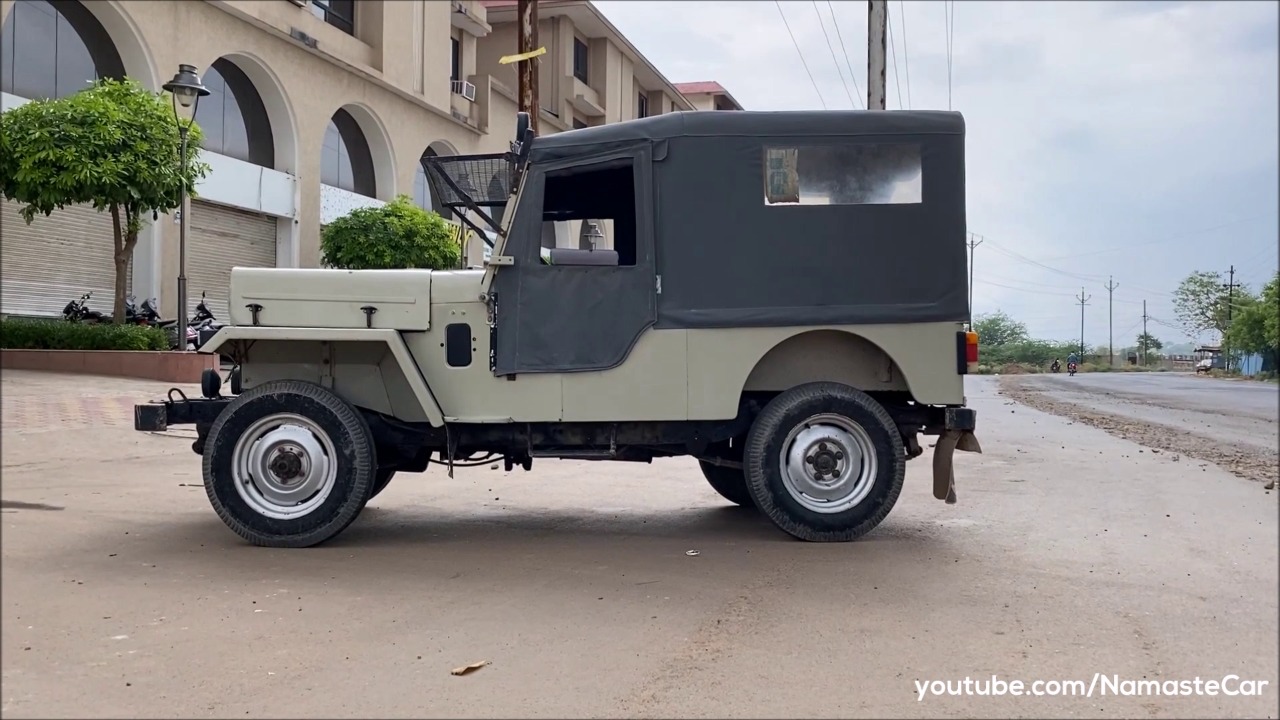
Mahindra Jeep CL 550 MDI of 1997.
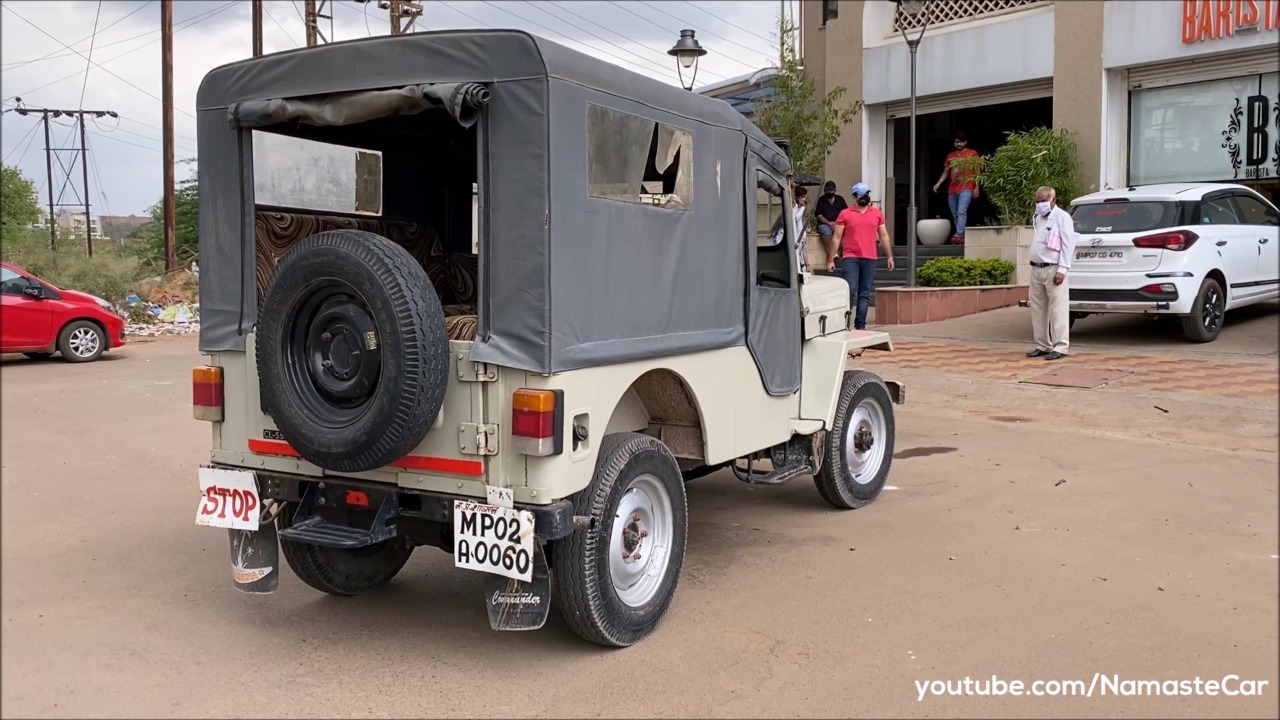
Mahindra Jeep CL 550 MDI of 1997.
The Roxor was announced in November 2017 and began sales on March 2, 2018. In the United States, it is an off-highway side-by-side (SxS). The Roxor is assembled at Mahindra's 150,000 sq ft (14,000 m2) factory opened in the year March 2018 located in Auburn Hills, outside Detroit, Michigan. They are sold through power sports dealers across US and Canada.
Toyota
Land Cruiser J40
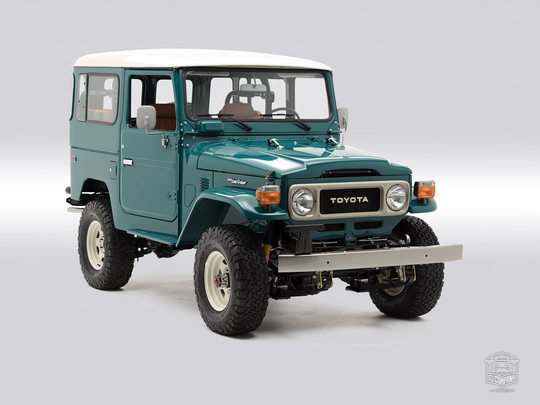
1983 FJ40.
The Toyota Land Cruiser (J40), is a series of Land Cruisers made by Toyota from 1960 until 2001. Traditional body on frame, most 40 series Land Cruisers were built as 2-door models with slightly larger dimensions than the similar Jeep CJ.
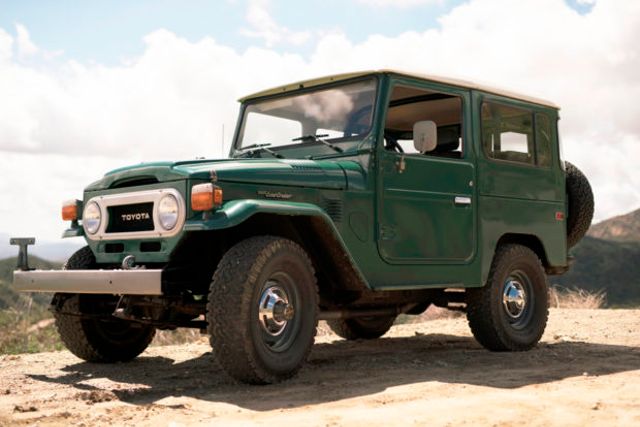
This 40-year-old Toyota Land Cruiser has covered just 5000 miles.
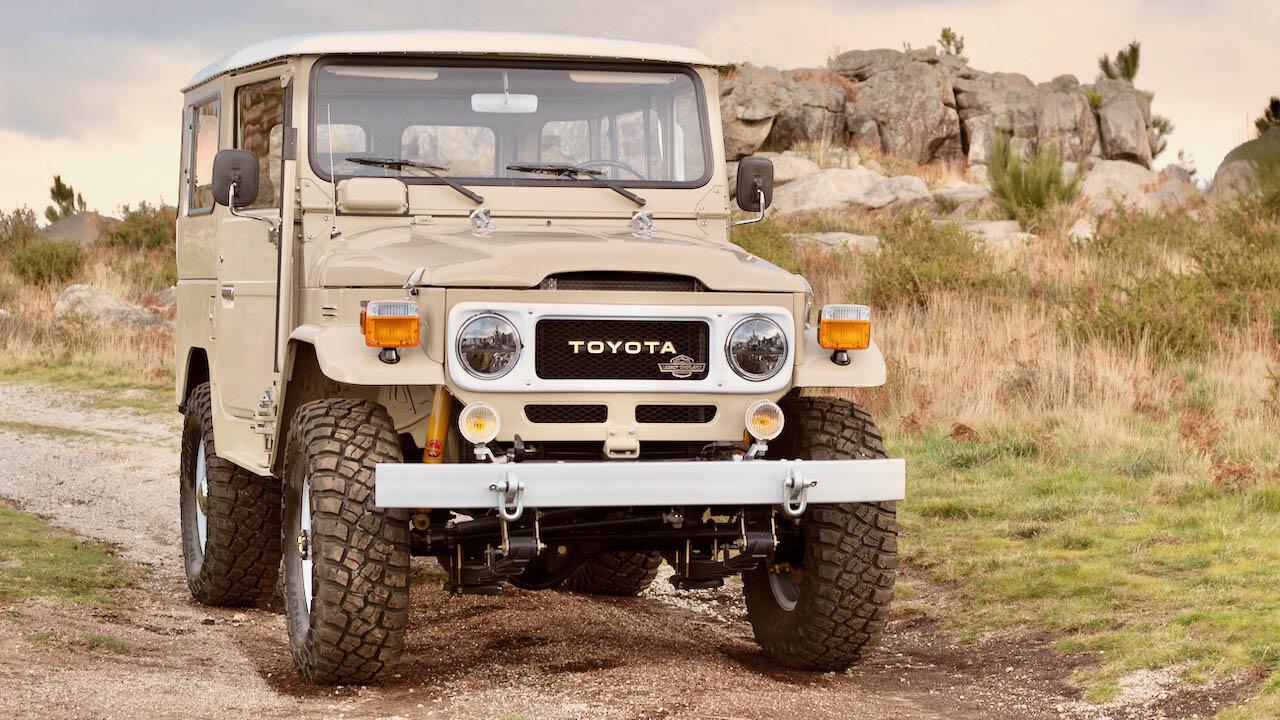
A Toyota FJ40 with GM V8.
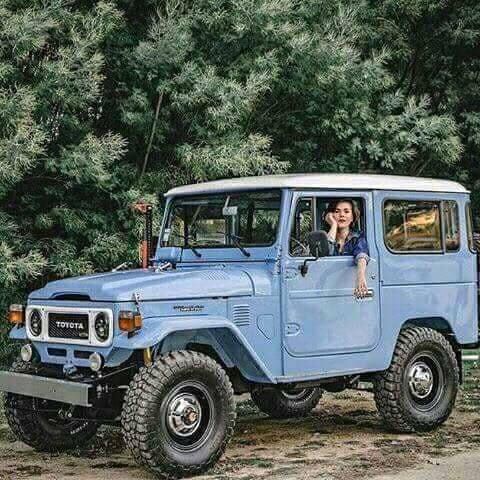
A Blue FJ40 Hard Top Toyota Land Cruiser.
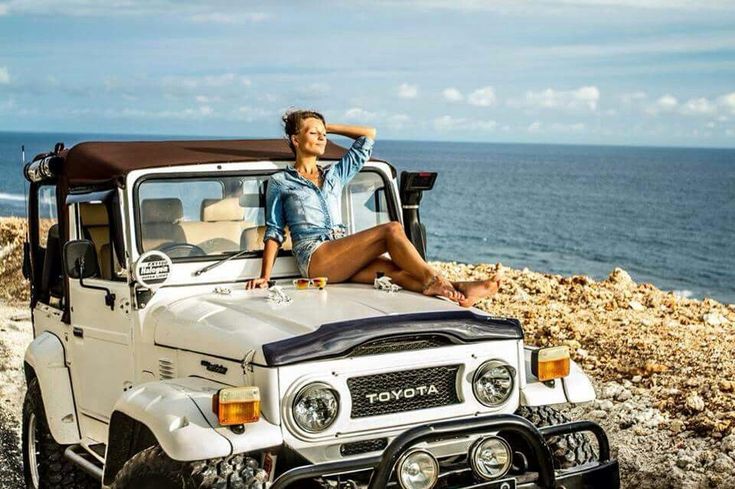
The Toyota FJ40 Land Cruiser in modern advertising. Land Cruiser of the day!
The model was available in short (J40/41/42), medium (J43/44/46) and long (J45/47) wheelbase versions, with petrol and diesel engines.
Vintage Land Cruisers prove why Toyota’s off-roader is iconic. November 01, 2019. By Jerry Hirsch.
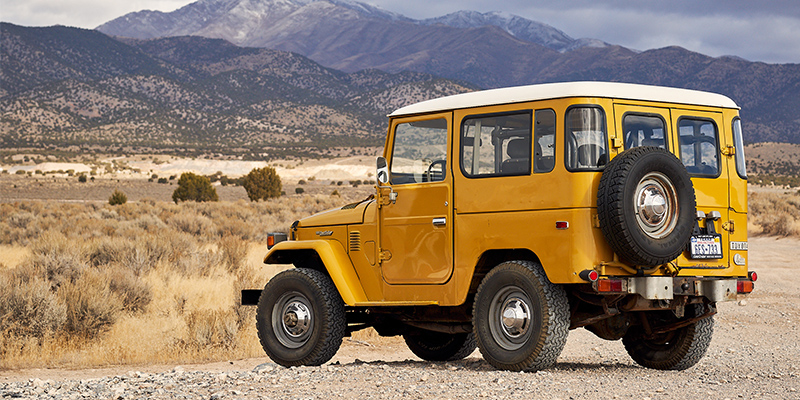
The iconic FJ40 Land Cruiser hit the market in 1960, two years after the original Land Cruiser. Photo by Toyota.
No automaker in the U.S. market has a better reputation for reliability than Toyota. It goes back to the Japanese automaker’s entry into the U.S. with a vehicle so unlike its popular Camry and Tacoma models of today that few consumers could, or would even want to, drive it now.
Back in 1958, Toyota’s first year in the market, it sold a single Land Cruiser from an old, former Rambler dealership in Hollywood, California. The company also sold 287 underpowered and forgettable Toyopet Crown sedans. But it was the Land Cruiser, which shares a name but nothing else with a current model, that set the tone for Toyota’s U.S. sales.
Developed in the early 1950s, this first Land Cruiser was an FJ20 series based on a military vehicle. Toyota planned to call it a Jeep until Jeep said, “excuse me, that’s a trademark violation.” A Toyota executive then dubbed the all-terrain vehicle “Land Cruiser” because of its ability to drive over almost all surfaces.
That four-wheeler first sold in the U.S. had a bone-jarring ride, a result of its body on frame construction and rugged truck leaf spring suspension. The 3.9-liter inline-six engine produced 105 horsepower and 189 pound-feet of torque. Small by today’s standards, those numbers were respectable at the time. The FJ20 Series had solid front and rear axles, a fold-down windshield and a clunky three-speed manual transmission.
Toyota made the Land Cruiser the foundation of its export strategy. Sales gained traction in South America and the Middle East. The automaker figured it was the best vehicle to establish a reputation of toughness and brought it to America.
By 1960, Toyota had introduced an updated Land Cruiser, the FJ40 Series.
The FJ40 was more polished and launched the iconic two-box, angular styling that turned the Land Cruiser into an off-roading cult classic, akin to the Land Rover Defender. A wraparound rear window and two-tone paint job gave the FJ40 a touch of rugged panache. Short overhangs improved clearance and a two-speed transfer case boosted off-road capability. The U.S. version featured a new, inline six-cylinder gasoline engine that produced 125 horsepower and 200 pound-feet of torque. While mousey compared with today’s SUVs, those numbers meant the Land Cruiser packed more than contemporary rivals. The powertrain still included a three-speed manual transmission.
U.S. sales began in 1960. Toyota sold more Land Cruisers than any other model for the next five years. But by 1965, the Corona sedan, a fuel-sipping, budget car, supplanted the off-roader as the automaker’s best-seller.
Those who go off-roading in modern Jeeps, Toyota Tacomas and Ford Raptors would be surprised by the FJ40’s combination of capability and primitiveness. The FJ’s toughness and charm emerged during a recent drive in the semi-desert scrub near Salt Lake City, Utah. Toyota and the Land Cruiser Heritage Museum in Salt Lake City hosted the event.
The FJ40 is both cool and quaint. A drive in a 1977 model found it could easily handle dirt, steep inclines and rocks, but only slowly. By 1977, the vehicle came equipped with a 4.2-liter six-cylinder engine that produced 135 horsepower and 210 pound-feet of torque. That’s just a notch better than the 1960 vehicle. The four-speed manual transmission is workable but notchy. The steering play is huge. It takes more than a quarter turn of what would be considered an oversized steering wheel to make an impression on the heading. Ground clearance is 8.3 inches, slightly less than the latest Subaru Outback station wagon.
Production of this model ran for a generation, 1960 through 1983. But the FJ40 has a charm that few other vehicles ever achieve. Sliding into the driver’s seat feels like they being in an Indiana Jones movie or skippering a Disneyland Jungle Cruise boat, on the actual Amazon. It’s the off-road equivalent of driving a vintage Porsche at the Laguna Seca Raceway.
In the late 1970s, the Land Cruiser started at around $6,000. But that was still a spartan SUV with neither air conditioning nor power steering.
UAZ
469
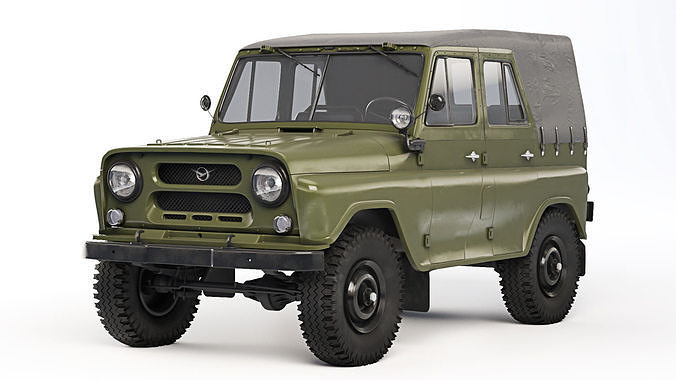
UAZ 469 1970 VR / AR / low-poly 3d model.
Developed from the GAZ-69, UAZ-471 and UAZ-460, the UAZ-469 was introduced in 1971 to replace the GAZ-69. It is powered by the same 75 hp (56 kW; 76 PS) 2,445 cc (149.2 cu in) UMZ-452MI inline-four engine as the UAZ-452 and is able to run on gasoline with an octane rating as low as 72 (although 76 was preferred).
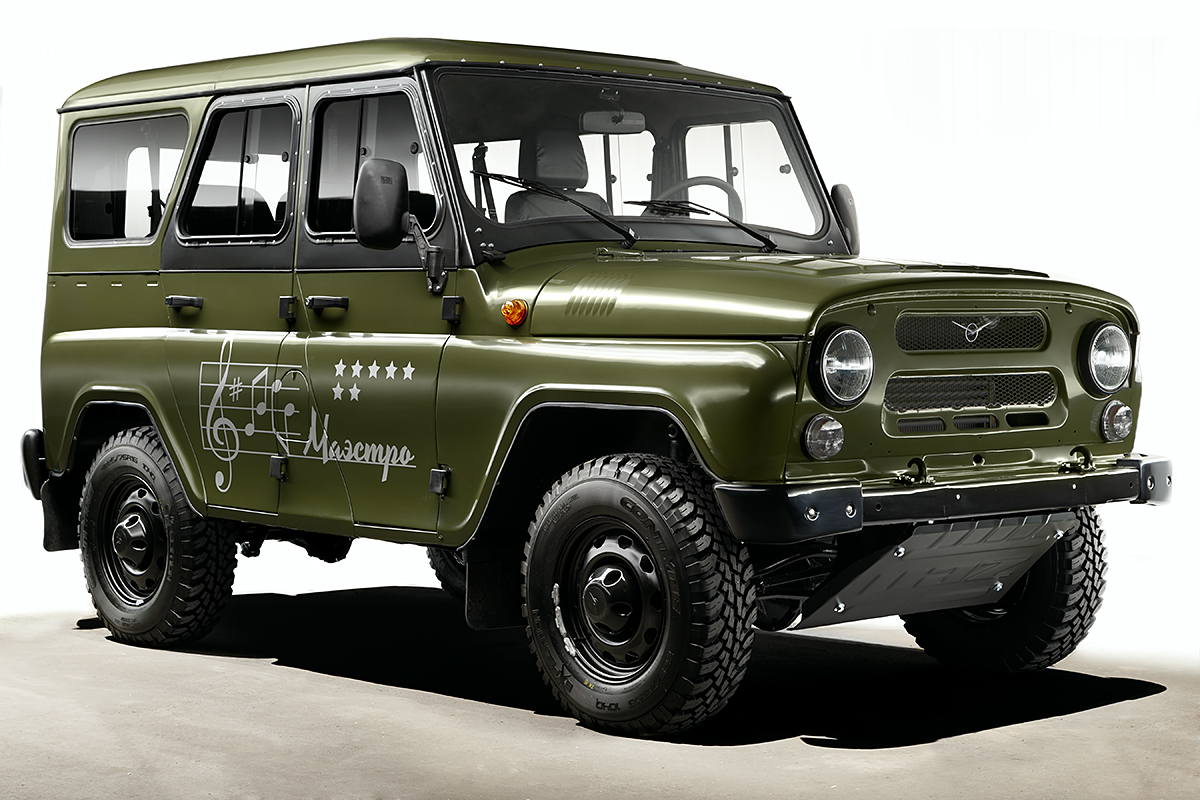
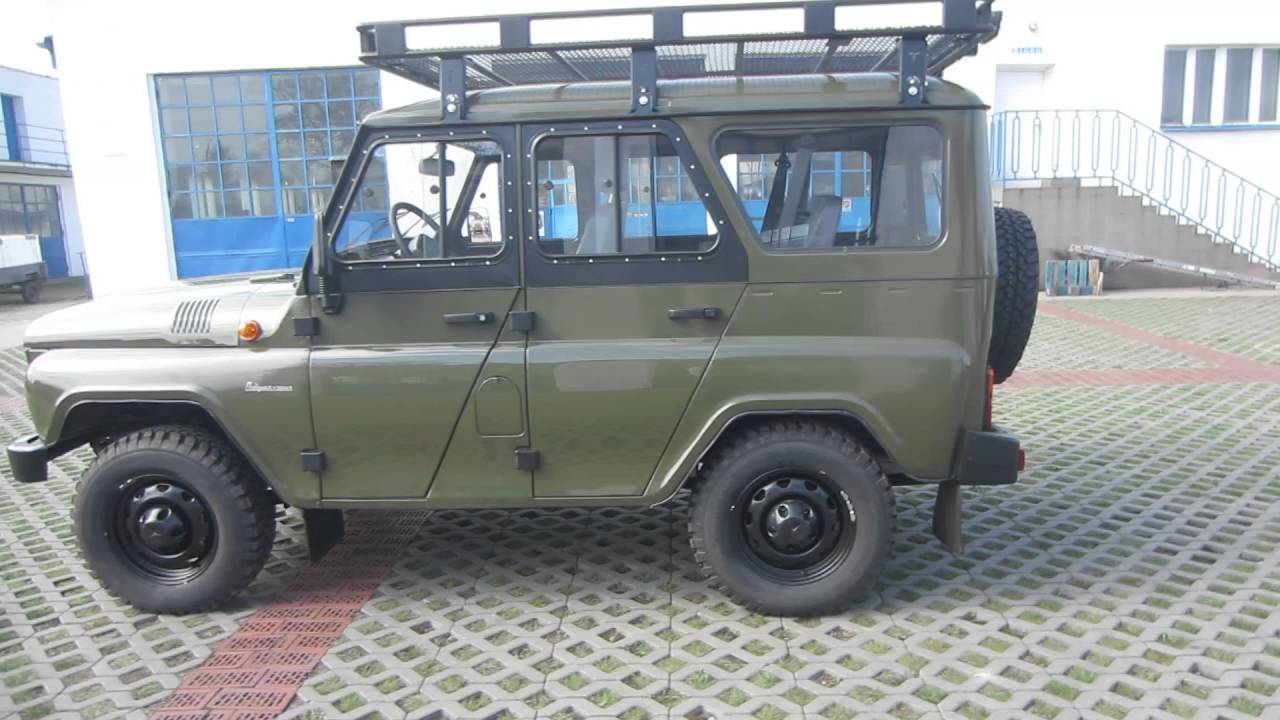
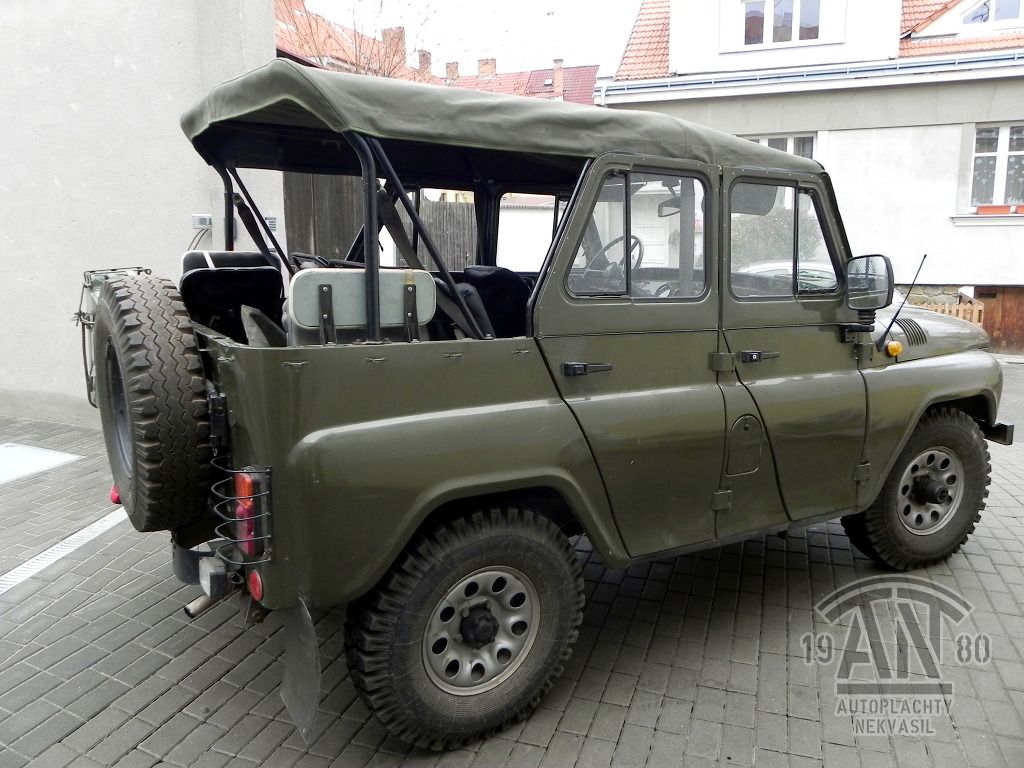
Uaz 469 Canvas Bikini Top.
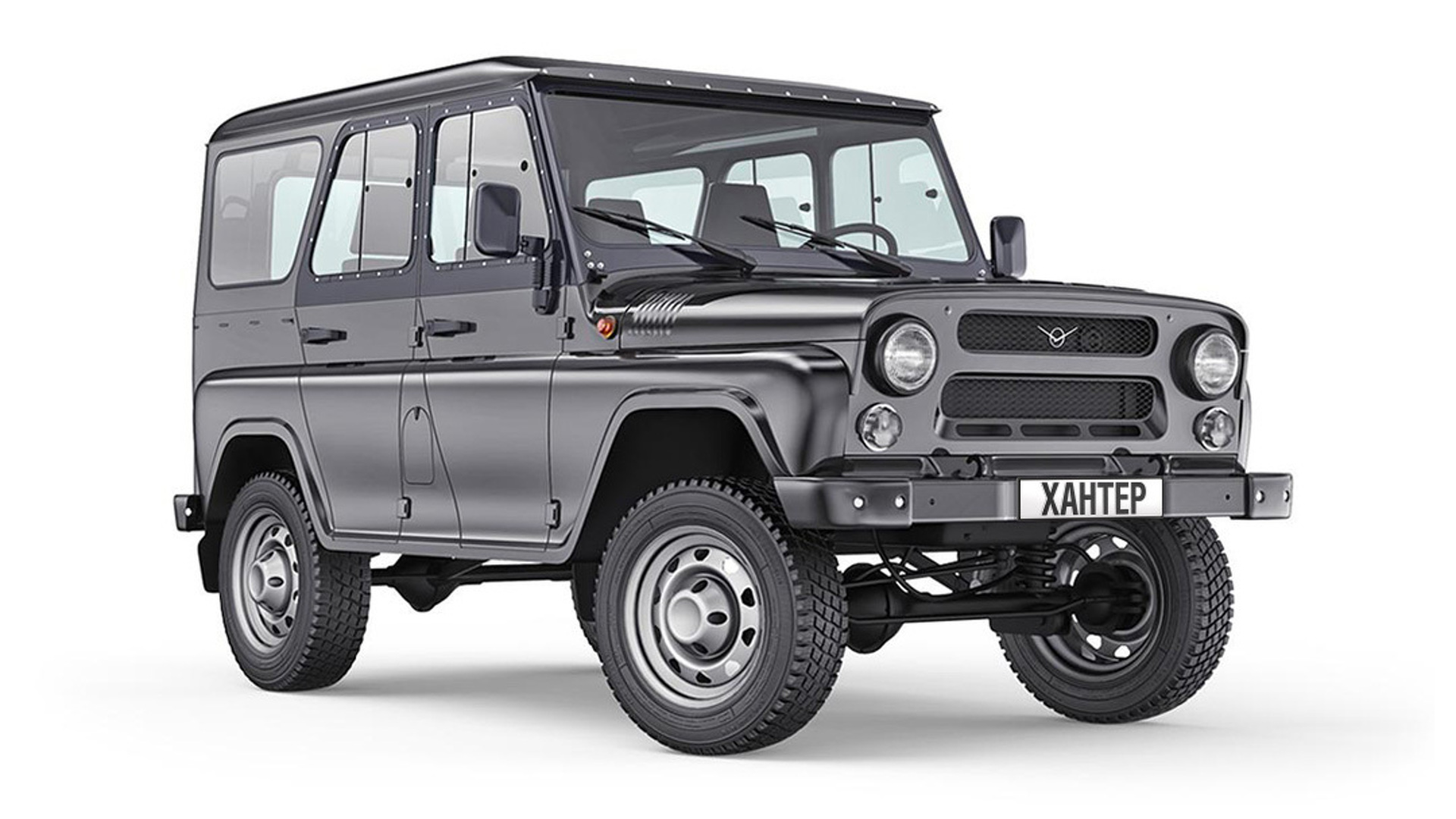
UAZ 469 Hunter.
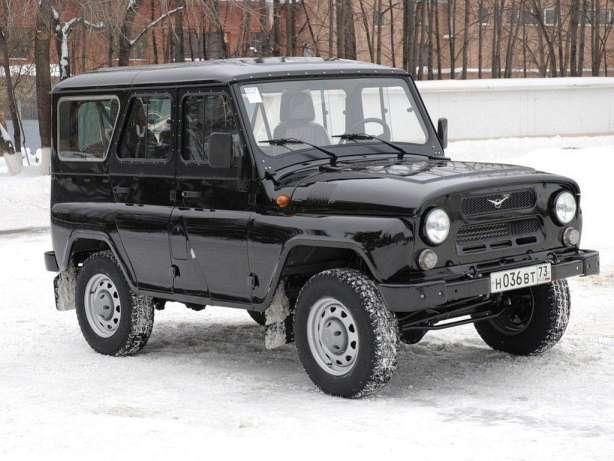
UAZ 469.
The UAZ-469 presented two great advantages: it was able to drive in virtually any terrain and it was very easy to repair. The vehicle was originally not available for purchase by the public, but many were sold as surplus to private owners.
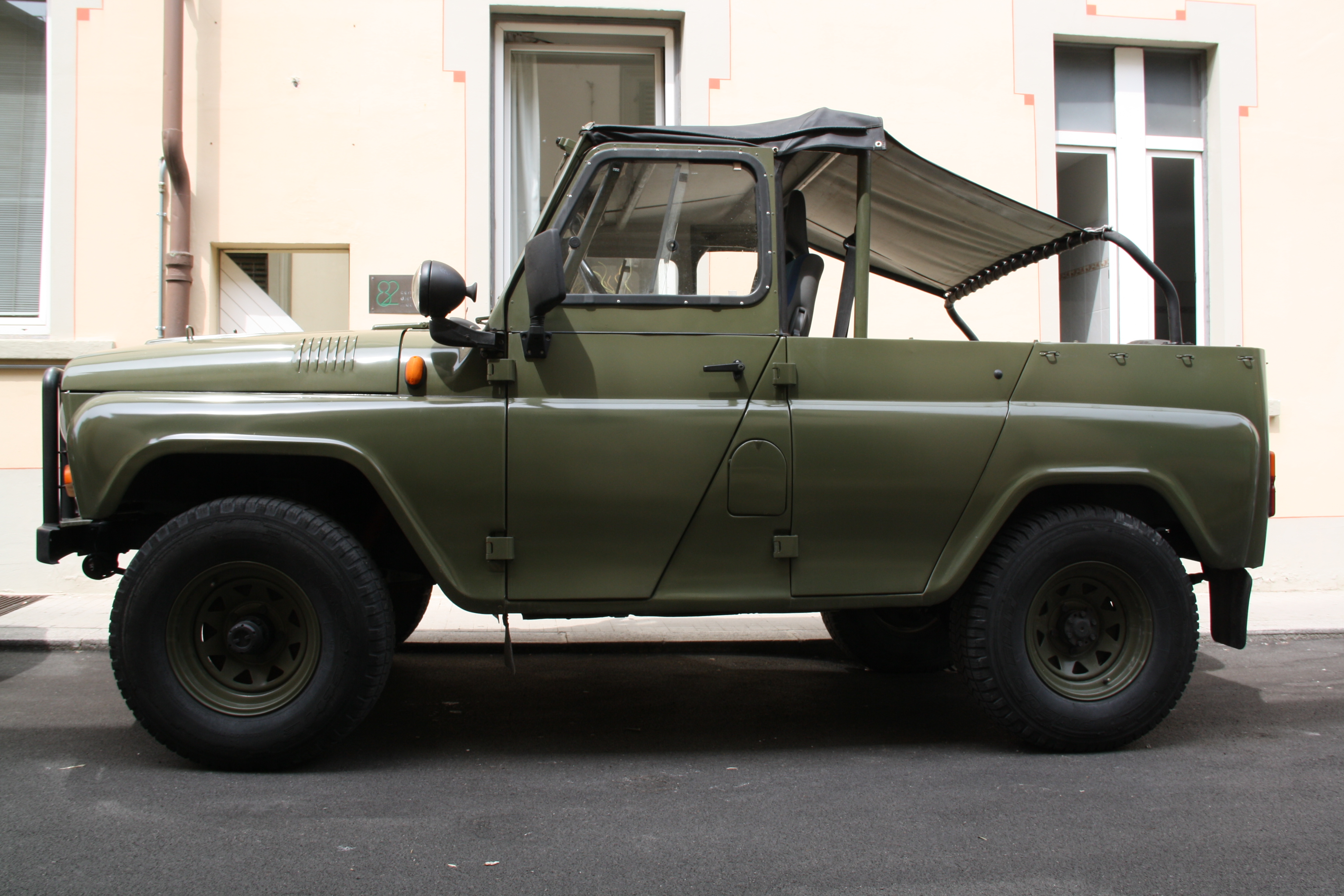
UAZ 469.
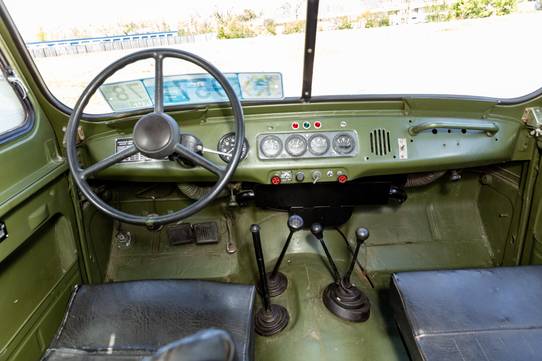
UAZ interior.
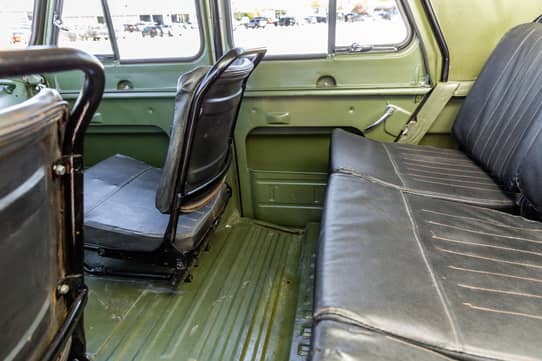
UAZ interior.
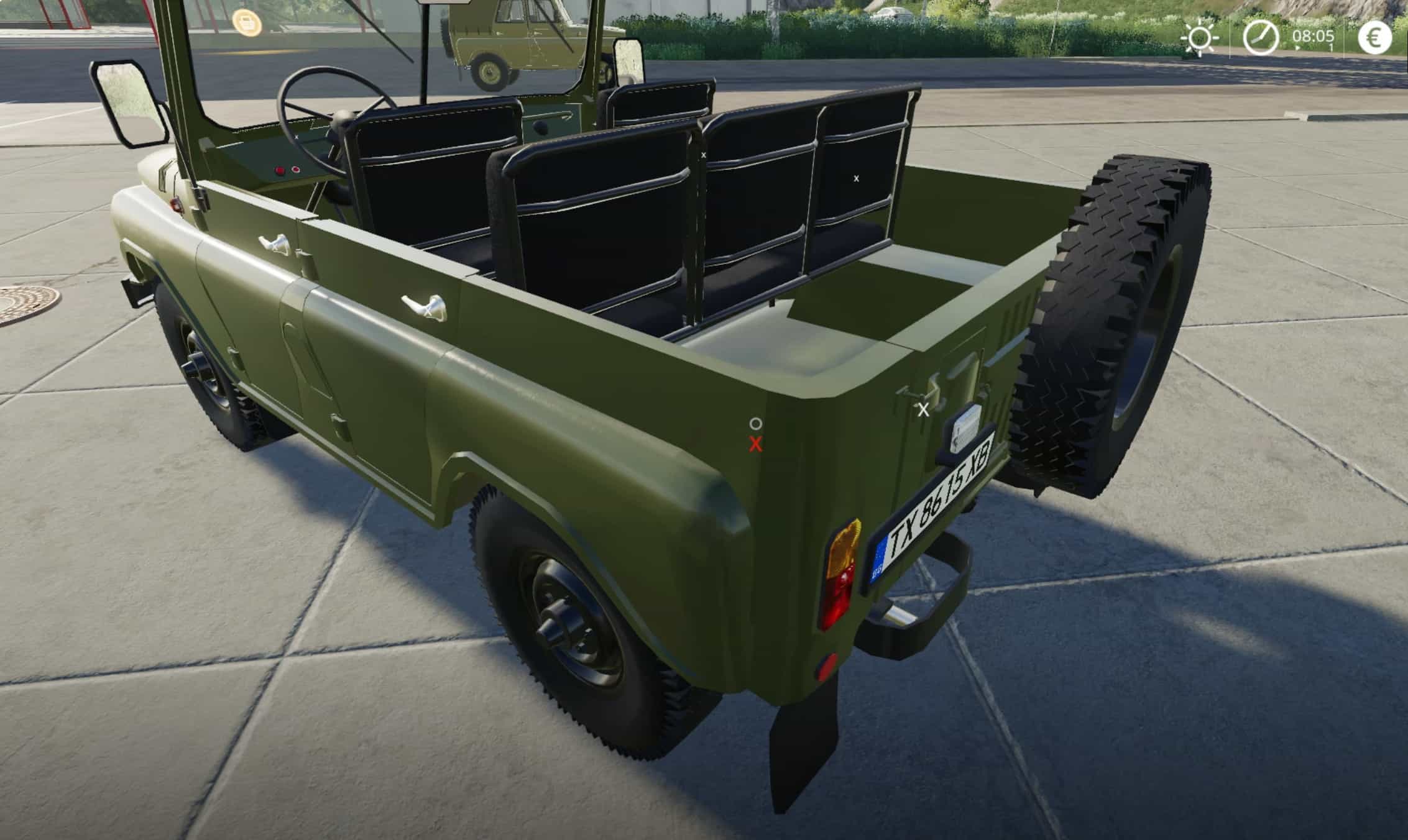
UAZ 469.
Modifications include a basic UAZ-469B with ground clearance of 220 mm (8.7 in) and a specialized military UAZ-469, with ground clearance increased to 300 mm (12 in). After slight modernisation in 1985, due to new industry designation standards, they were renamed: the UAZ-469 became the UAZ-3151, while the UAZ-469B became the UAZ-31512.
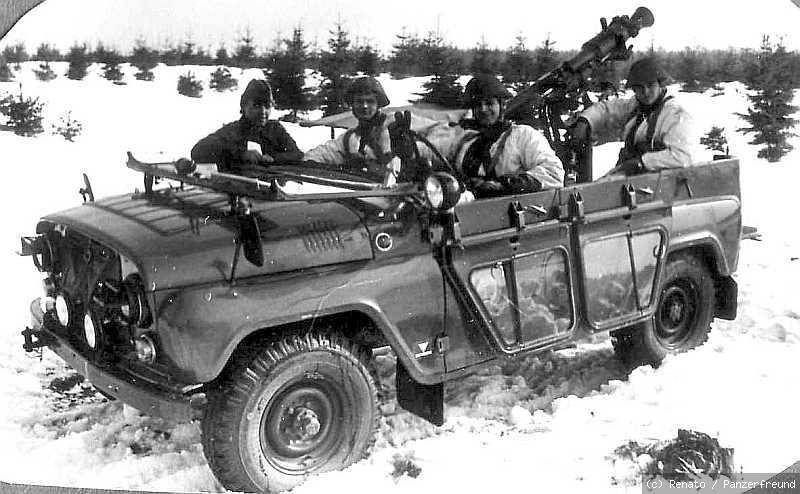
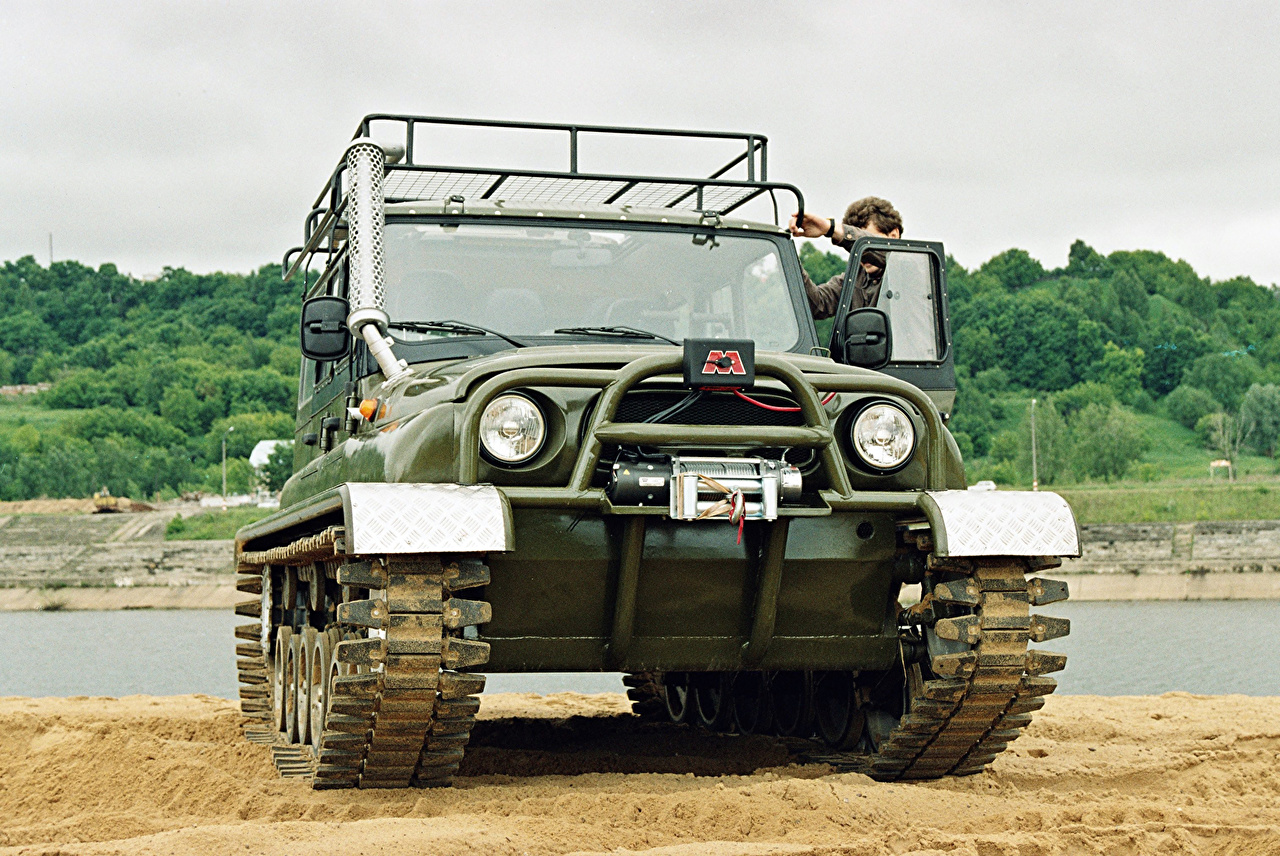
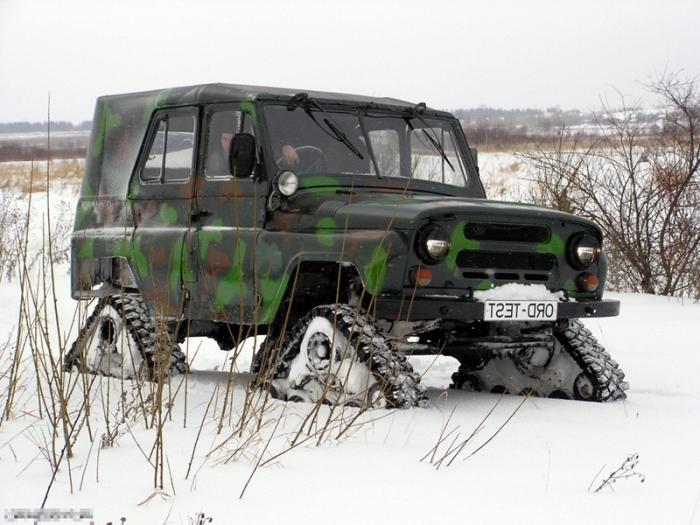
UAZ 469.
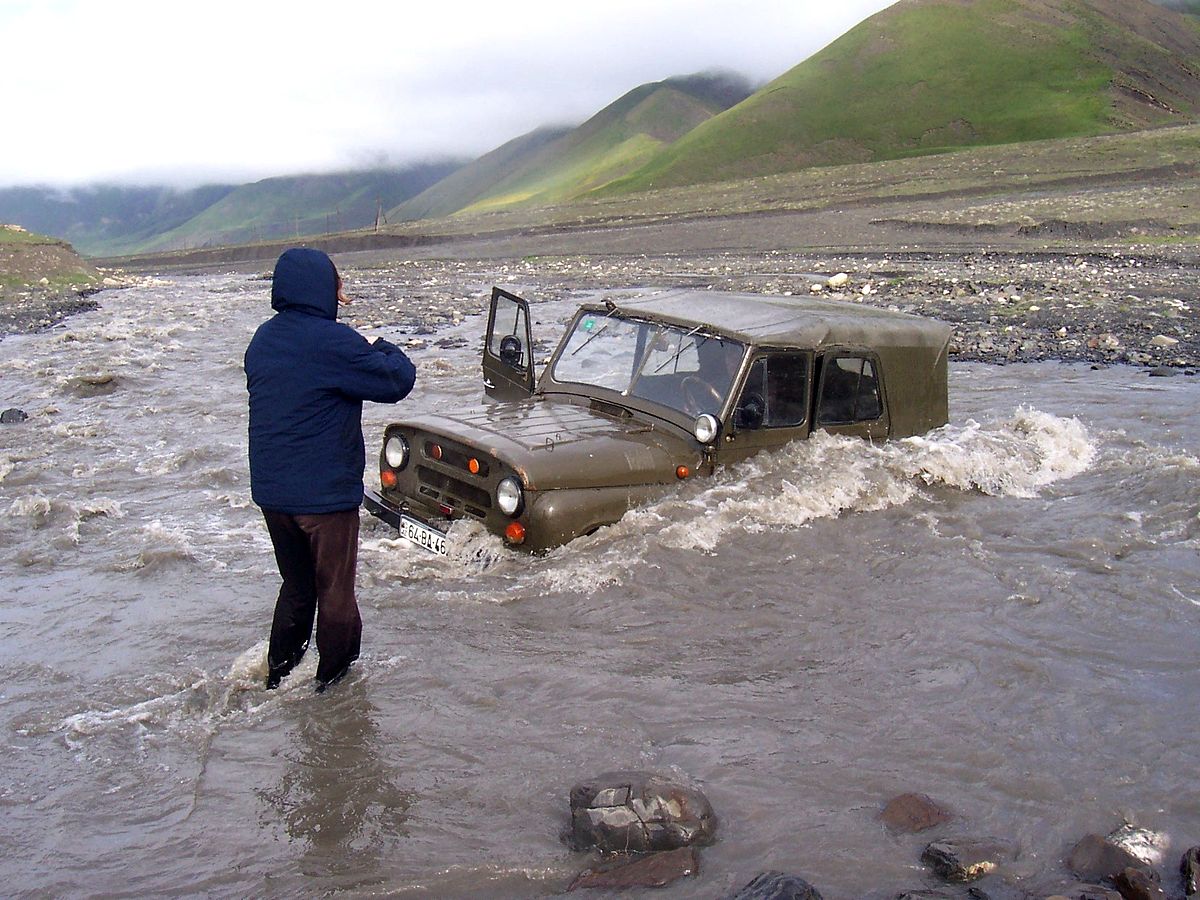
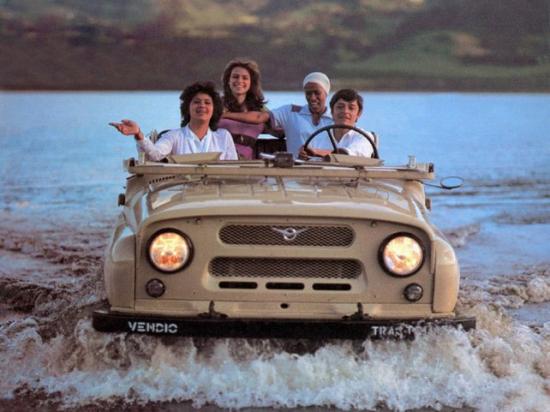
UAZ 469.
Manufacture of the UAZ-31512 for the Russian Army continued until 2011, while manufacture for the civilian market was discontinued due to new emission standards.
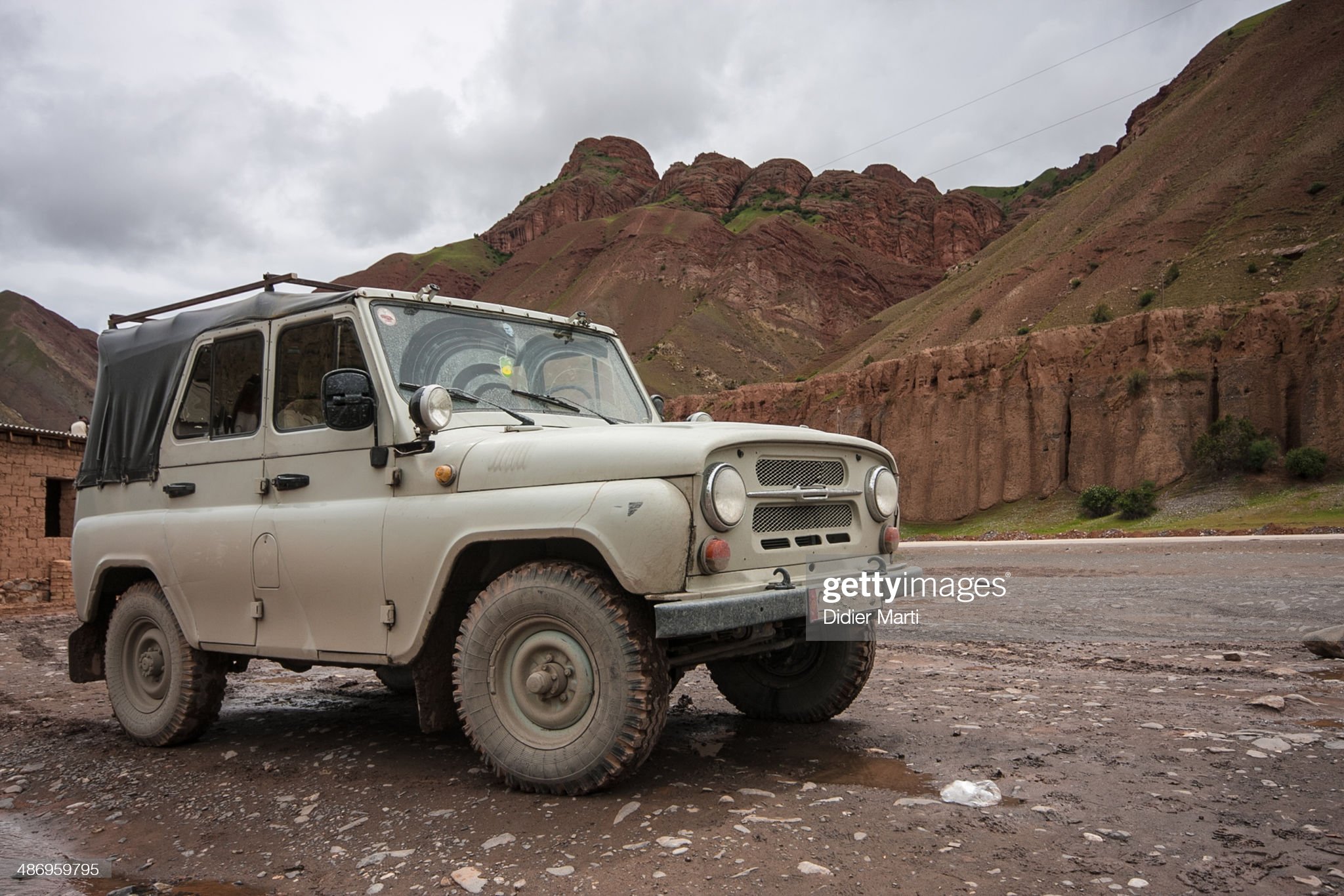
A UAZ jeep along the Pamir Highway in Kyrgyzstan on July 03, 2009. Photo by Getty Images.

An UAZ 469 automobile sits on display outside the headquarters of the Ulyanovsk Automobile Plant (OAO UAZ) in Ulyanovsk, Russia, on Monday, July 10, 2017. In Ulyanovsk, a gritty industrial city 550 miles east of Moscow that’s been in decline since Soviet times, hundreds turned out for antigovernment protests this spring. Roads in the city of 600,000 are scarred with potholes, stores on the outskirts are almost empty and advertise steep discounts and the most famous landmark, a house where Lenin spent his childhood, looks forlorn and mostly devoid of visitors. Photographer Andrey Rudakov / Bloomberg via Getty Images.
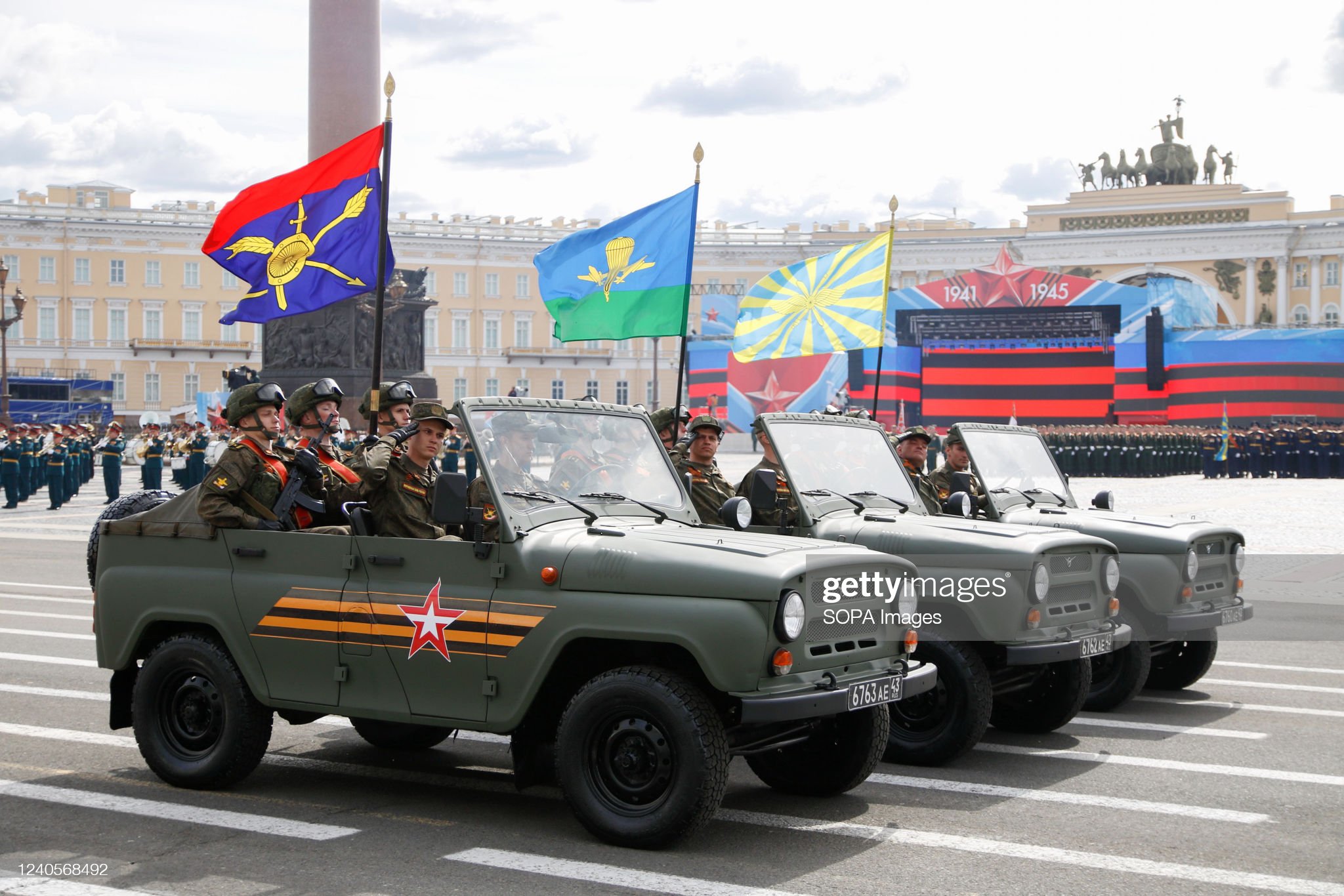
St. Petersburg, Russia, September 05, 2022. Military equipment, UAZ cars take part in the parade on Palace Square. A solemn military parade in St. Petersburg to mark the 77th anniversary of the Victory in the Great Patriotic War. Photo by Maksim Konstantinov / Sopa Images / Light Rocket via Getty Images.
However, the currently manufactured UAZ Hunter is an updated version of the old UAZ-469B. The Hunter was originally sold in Germany and some Asian countries as the "UAZ Tigr" (Tiger), until General Motors complained that the name was too similar to the Opel Tigra and in Germany, it was renamed "Baijah Taigah".
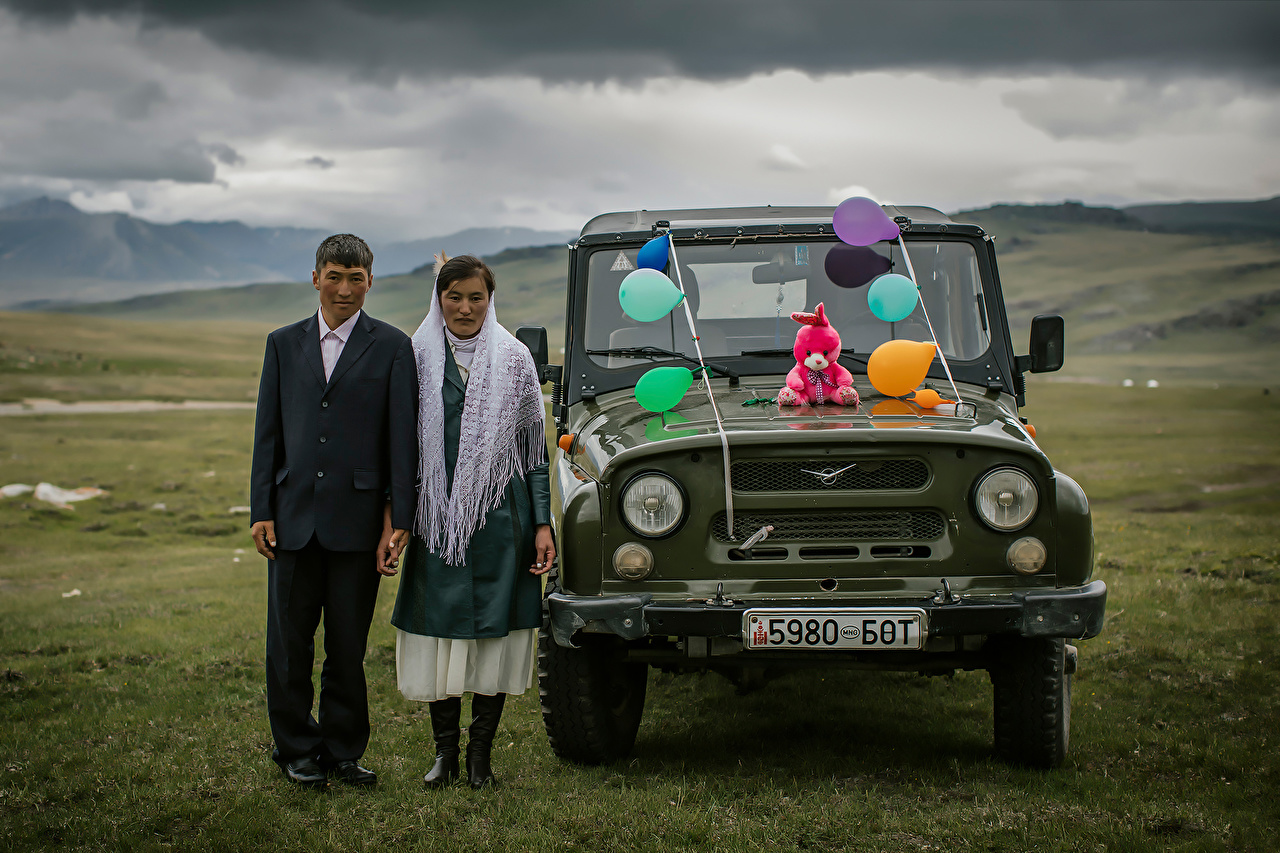
A groom, a bride and a UAZ 469.

A boy and a girl kiss in front of a UAZ 469.
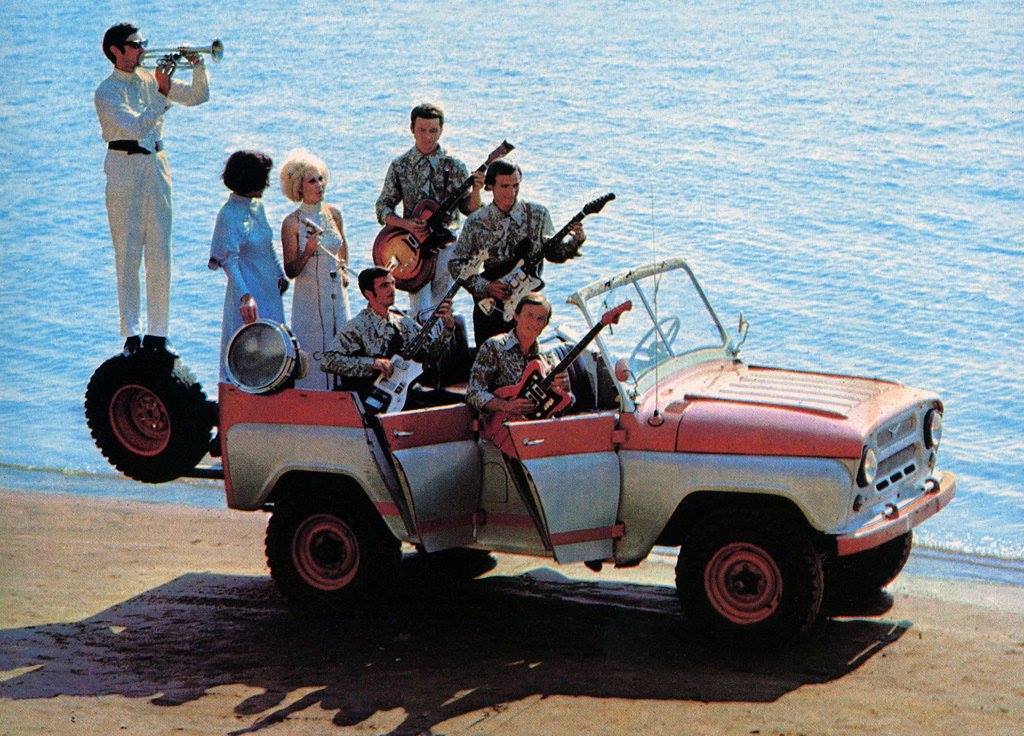
Soviet car advertisement. UAZ-469.

A UAZ 469 4x4 Cabrio and girls …
The UAZ-469 was exported to eighty countries and between 1.65 to 2 million units of the vehicle and its variants were produced.
SGR
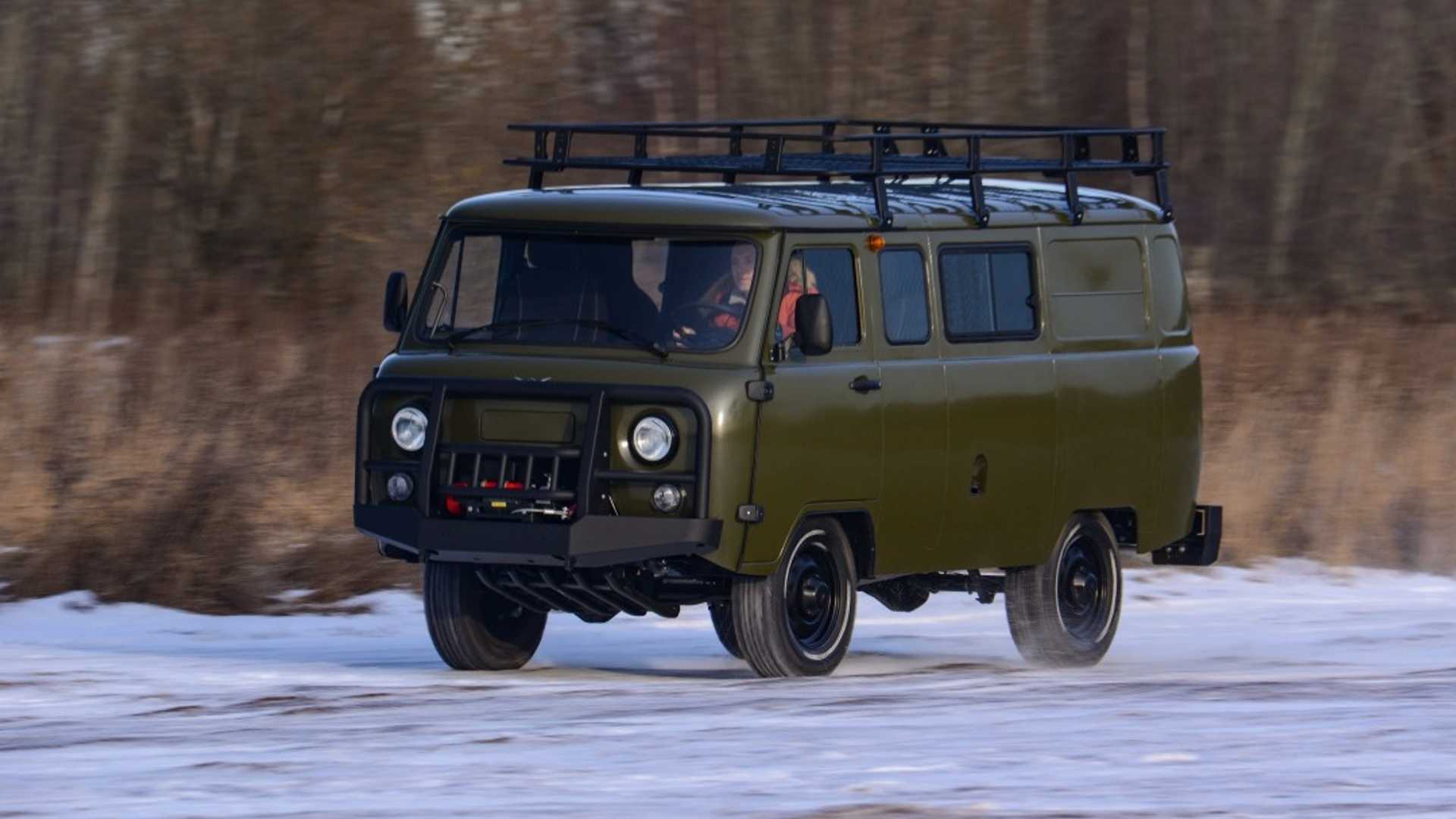
UAZ SGR.
The UAZ SGR are a family of compact Russian cab over engine vans and light trucks with standard four-wheel drive, off-road capability, built by the Ulyanovsk Automobile Plant (UAZ) since 1965. The vans got their nickname "Bukhanka" due to their outer resemblance to a loaf of bread – except the ambulance version, which gets called a "Tabletka" (Таблетка), or 'pill' in Russian.
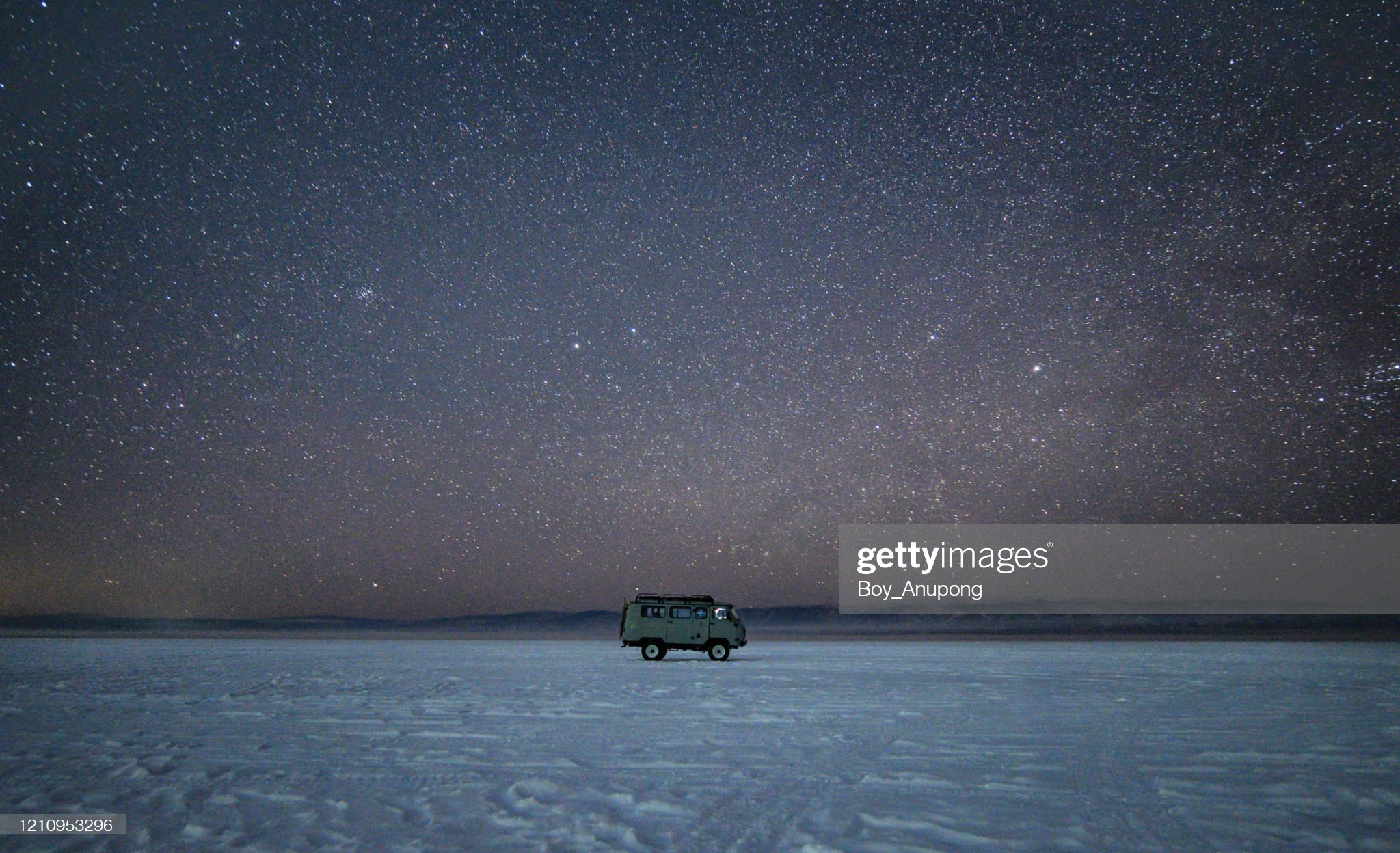
The Russian UAZ van parking on frozen lake Baikal, Russia, under the stars in starry night. The UAZ van is a popular off-road van for travelling lake Baikal. This vehicle was built in the Soviet Union and Russia.
Since 1985, the vans received updates: more modern engines and internationally compliant lighting, as well as new model numbers, 3741 for the standard van, while (crew-cab) trucks mostly starting with 3303, often with one or two extra digits specifying the version. From 1997, bigger 33036 truck variants with a 25 cm (10 in) longer wheelbase and taller soft-top roof bows and drop-sides were added.
Wagoneer
SJ
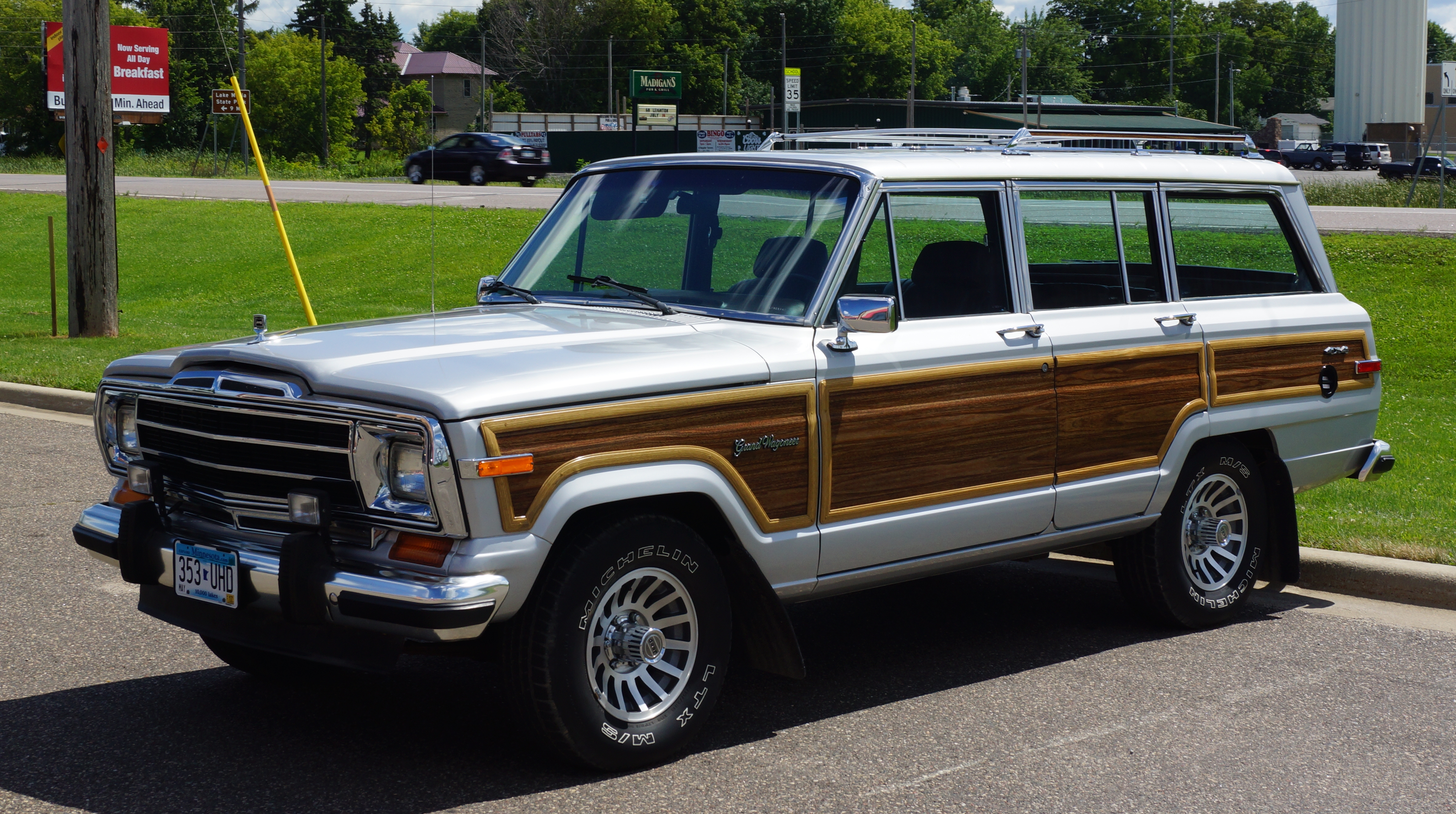
1990 Jeep Grand Wagoneer.
First generation (SJ; 1963). The first Wagoneer is the original full-size SUV-style design produced between 1962 and 1991. It was introduced in November 1962 for the 1963 model year as a successor to the Willys Jeep Station Wagon that had been built since 1946. It is a full-size body-on-frame vehicle that shared its architecture with the Gladiator pickup truck. The vehicle was introduced as a station wagon body style, later the pioneering design became known as a "sport utility vehicle" (SUV).
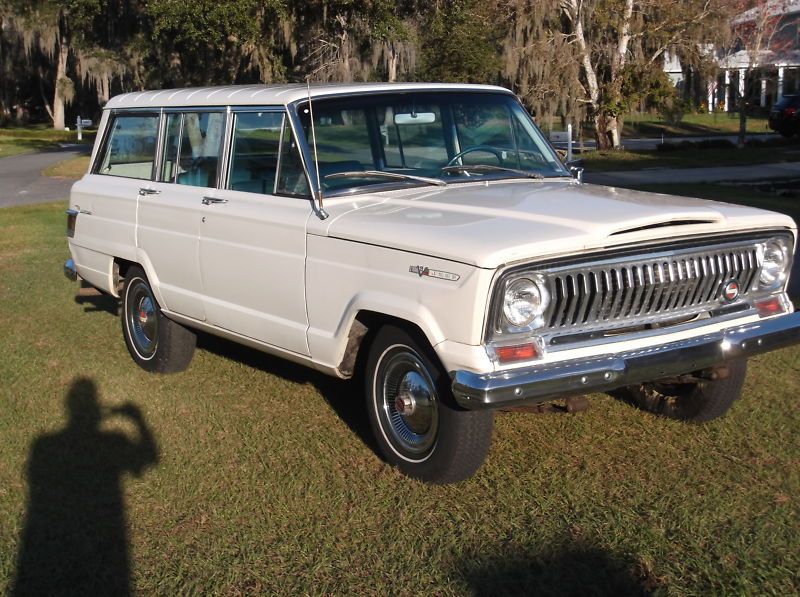
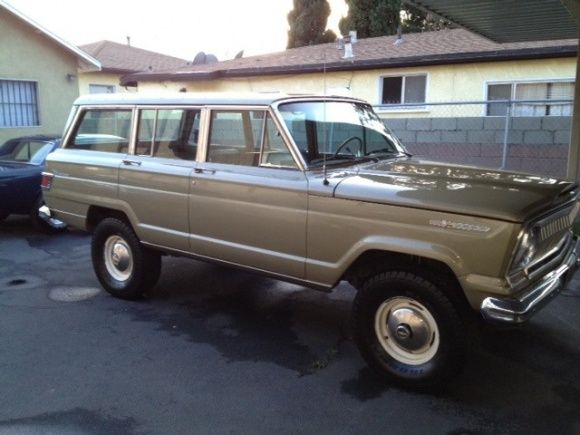
Black-Plate 1968 Jeep Wagoneer.
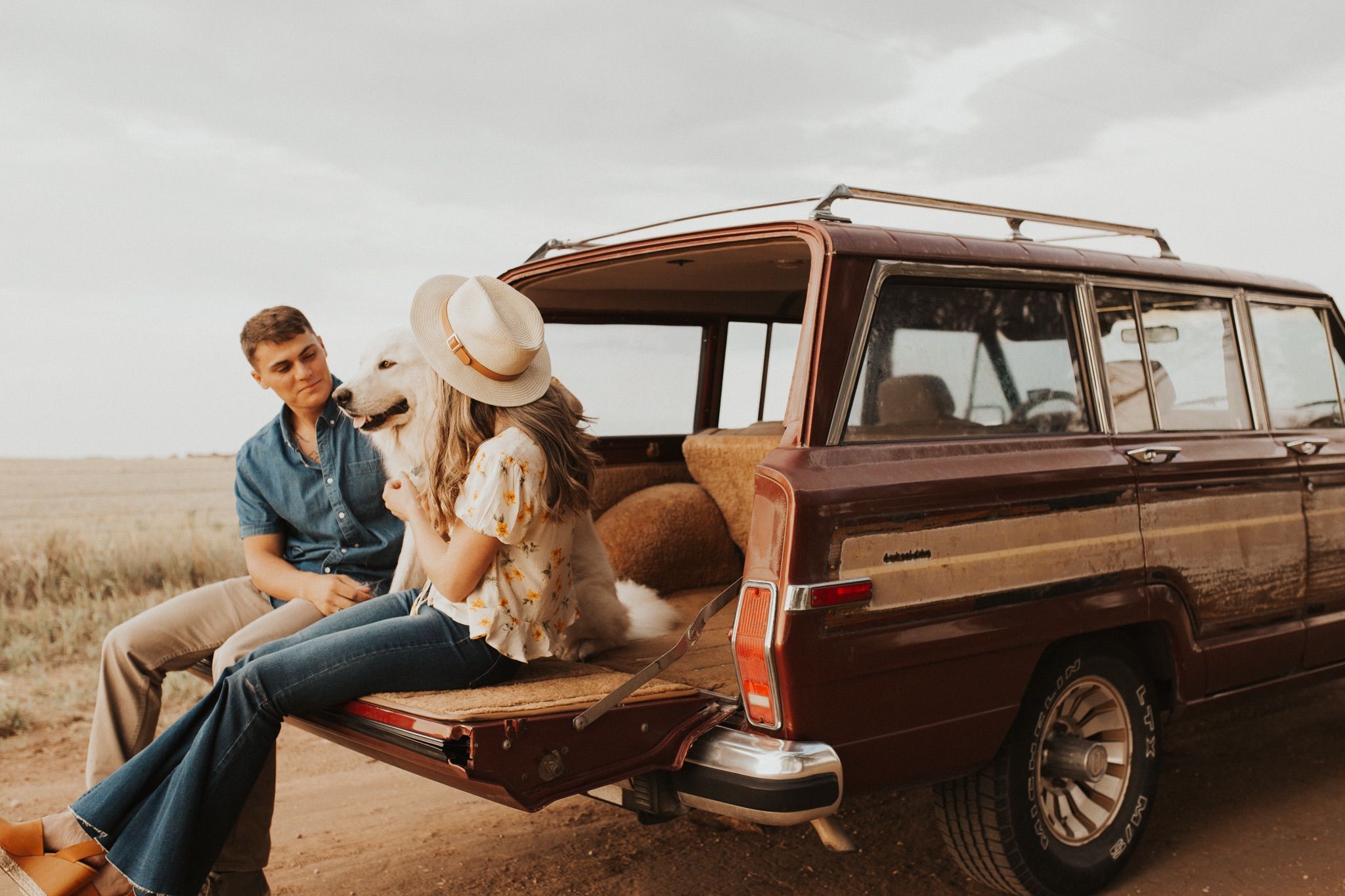
A couple on the back of a Wagoneer.
Available initially with rear-wheel drive, the four-wheel drive SJ-body Wagoneer remained in production for 29 model years (1963–1991) with an almost unchanged body structure.
Willis
MB
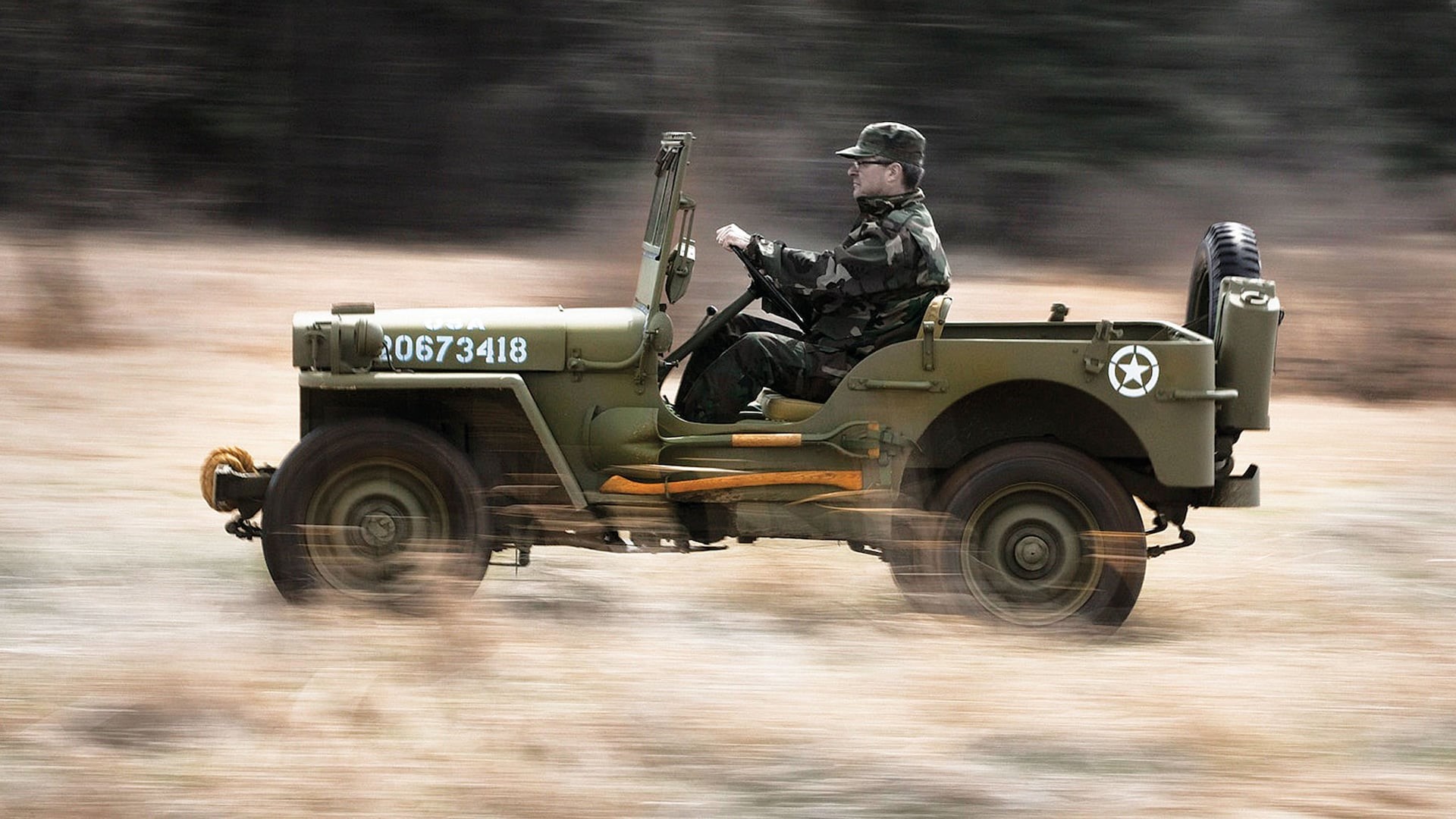
1944 Willys MB Jeep.
Production of the Willys MB, better known as Jeep, began in 1941, shared between Willys, Ford and American Bantam. 8,598 units were produced that year and 359,851 units before the end of World War II. Willys–Overland ranked 48th among United States corporations in the value of World War II military production contracts. In total, 653,568 military Jeeps were manufactured.
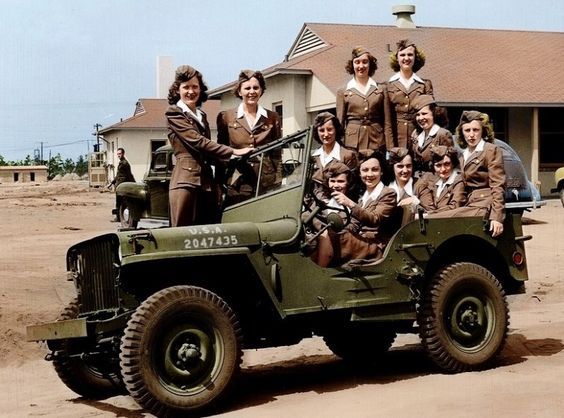
Jeep Willys girls.
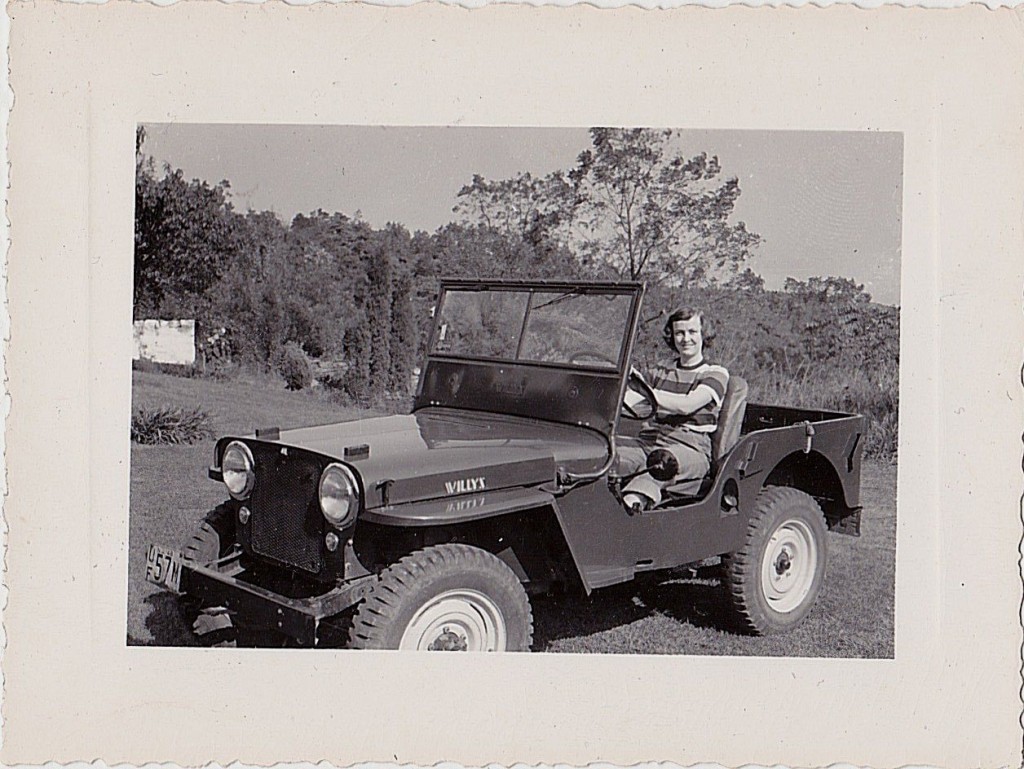
A woman in jeep.
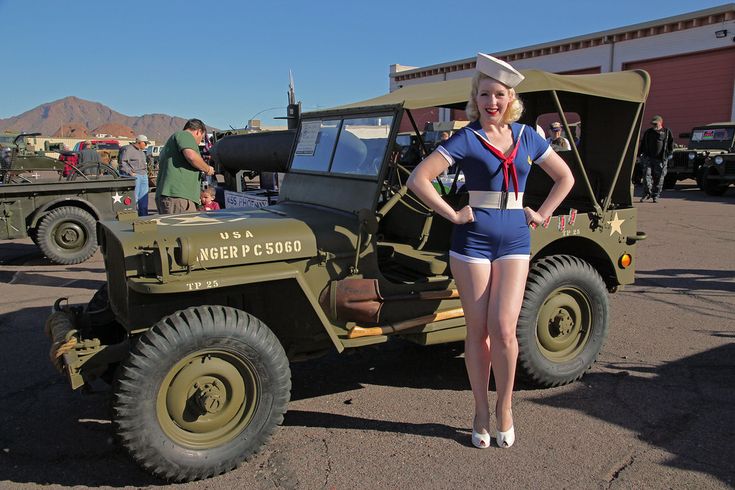
Jeep Willys girl.
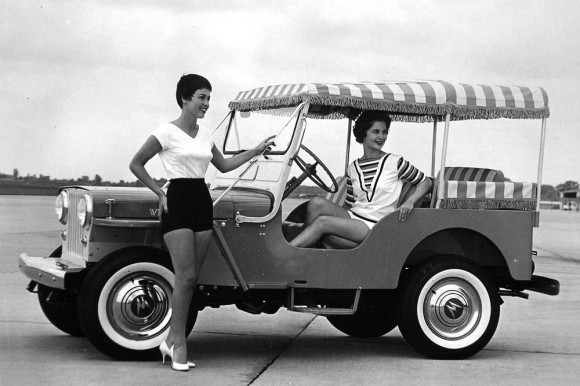
Gala girls in jeep.
Historian Charles K. Hyde wrote: "in many respects, the jeep became the iconic vehicle of World War II, with an almost mythological reputation of toughness, durability and versatility." Not only did it become the workhorse of the American military, as it replaced the use of horses and other draft animals (still heavily used in World War I) in every role, from cavalry units to supply trains, but improvised field modifications also made the jeep capable of just about any other function G.I.s could think of. Moreover: military jeeps were adopted by countries all over the world, to this day, so much that they have become the most widely used and recognizable military vehicle in history.
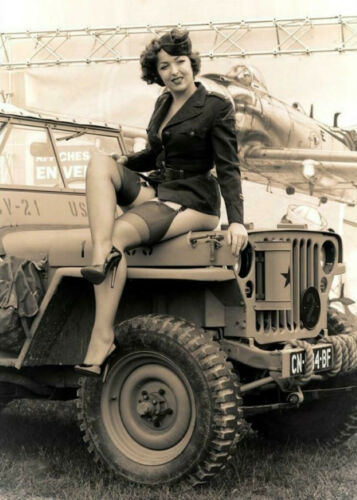
Jeep Willis woman soldier.
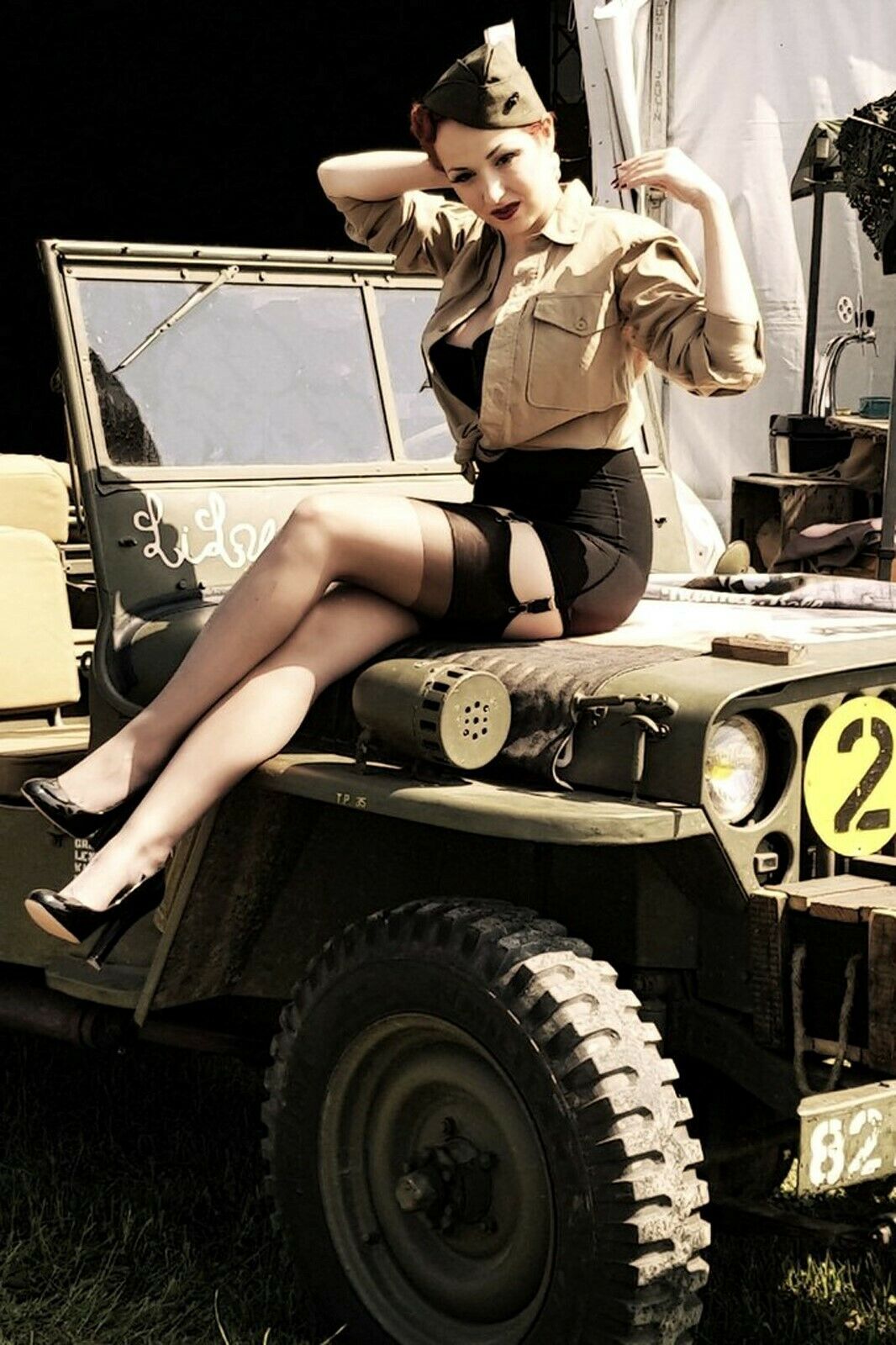
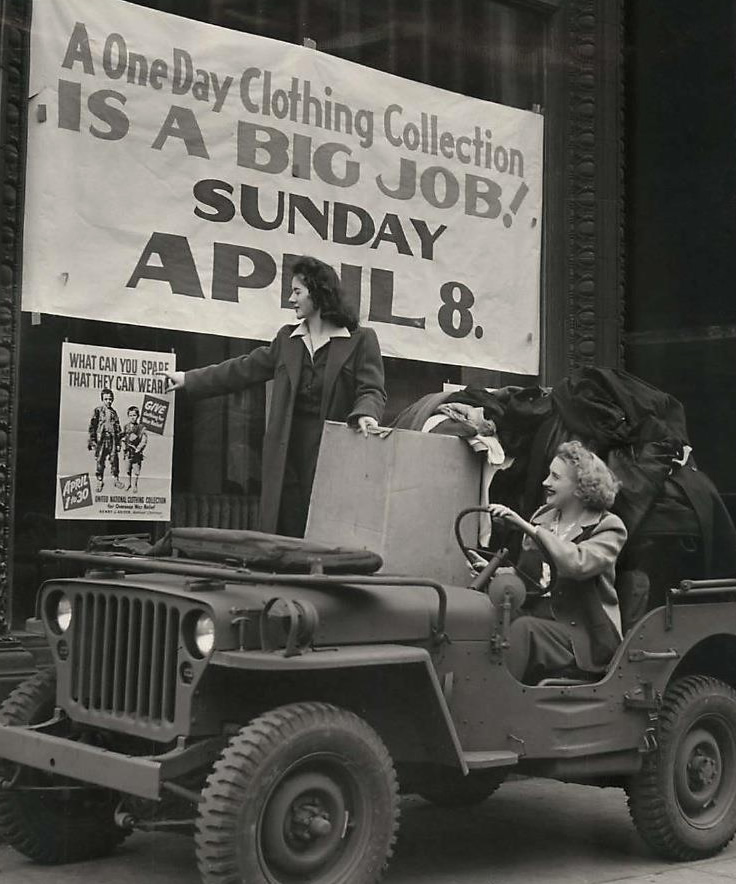
April 13, 1945. Photo of Willys Overland Clothing Drive.
Enzo Ferrari, who probably saw more than a few rolling through Modena, Italy, in his day, was impressed. "The Jeep is America's only real sports car," he said.
1941 – 1945 Willys MB
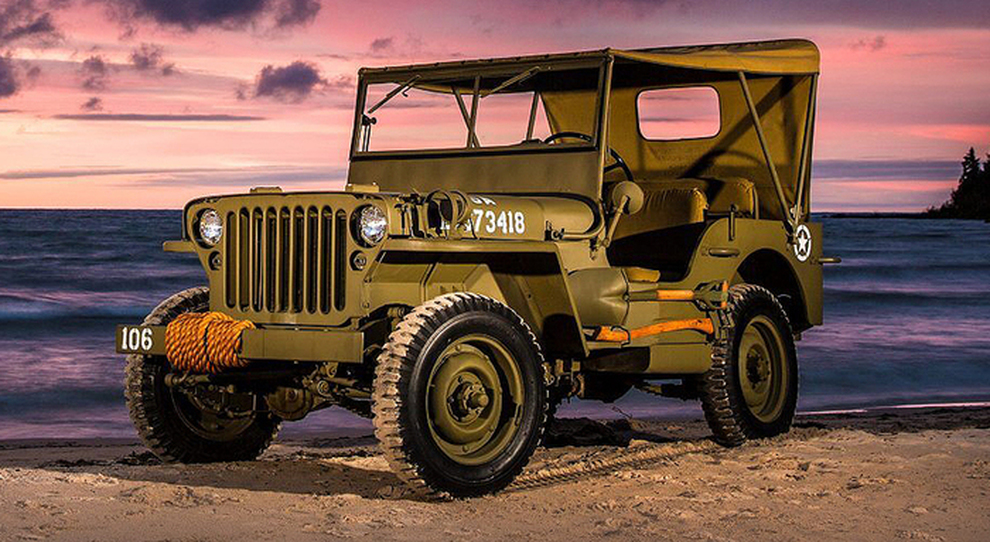
The Jeep that started it all. Produced as a military vehicle from the beginning of the Second World War, the Willys MB was in all essence the Jeep that started the legacy. Its original design features withstood the test of time and became a trademark Jeep look which successfully carried over to the cars we see today.
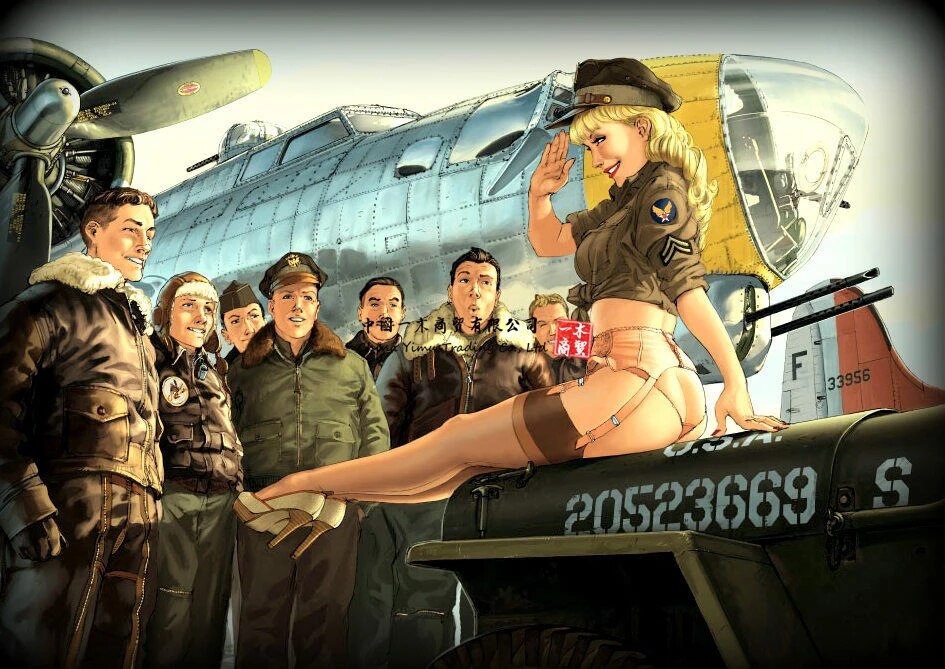
Jeep Willys girl.

Military & Hardware Army Jeep girl metal plaque.
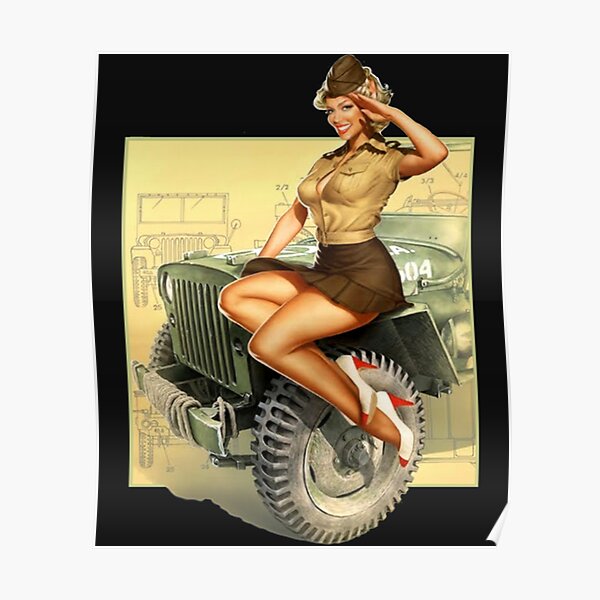
Jeep Willys girl.
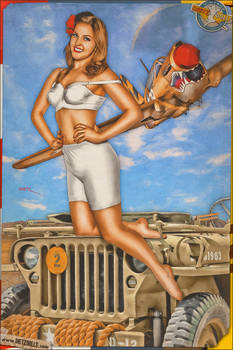
A jeep Willys girl.
The Willys MB was the only vehicle to meet the U.S. Army's requirements for engine capability and utility while maintaining a curb weight of under 1300 lbs.
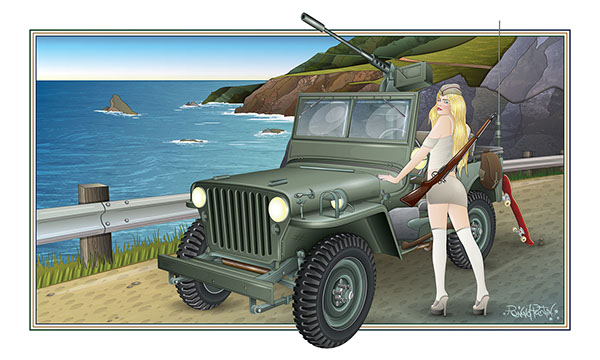
A jeep Willys girl.
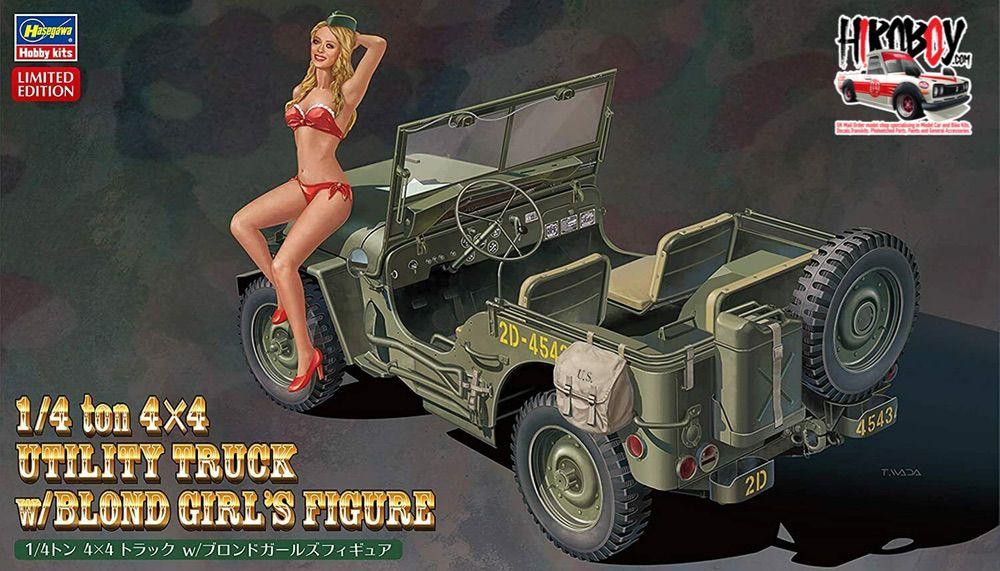
A jeep girl.

A jeep girl.
Its performance in the war earned it a reputation of a loyal, durable and virtually indestructible car and enabled the first civilian Jeep called the Willys CJ-2A to be produced following the war.
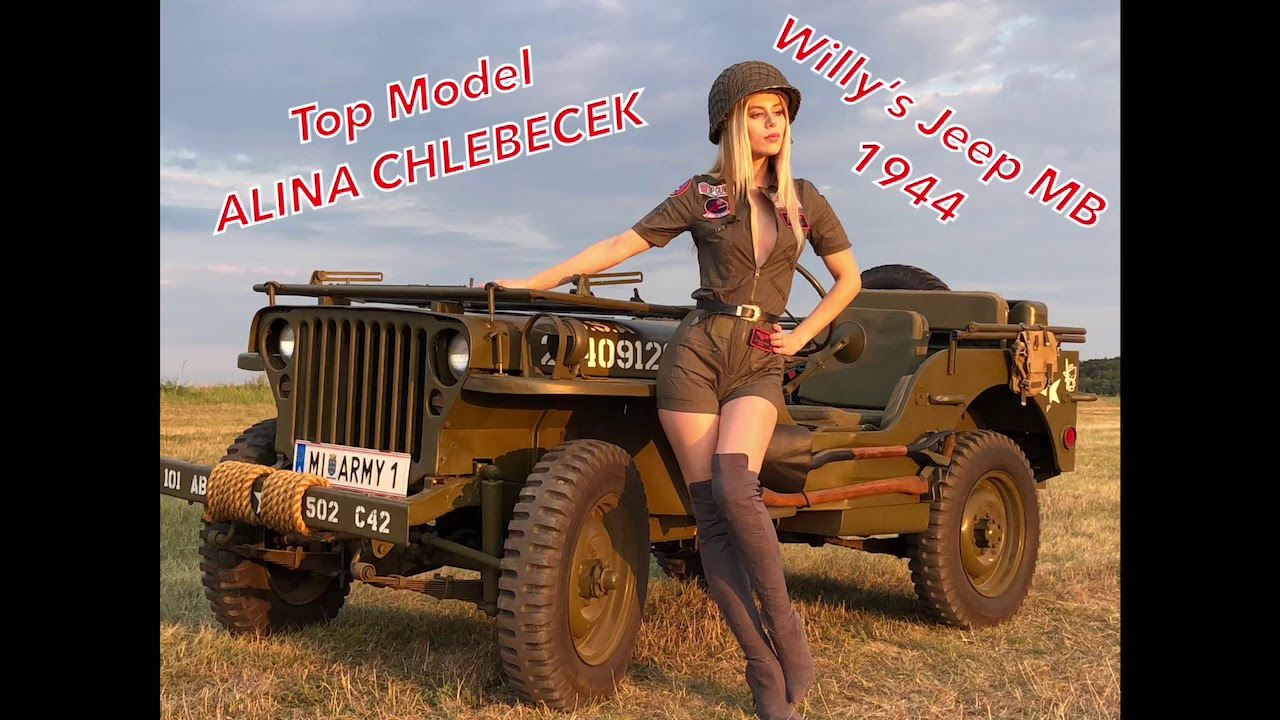
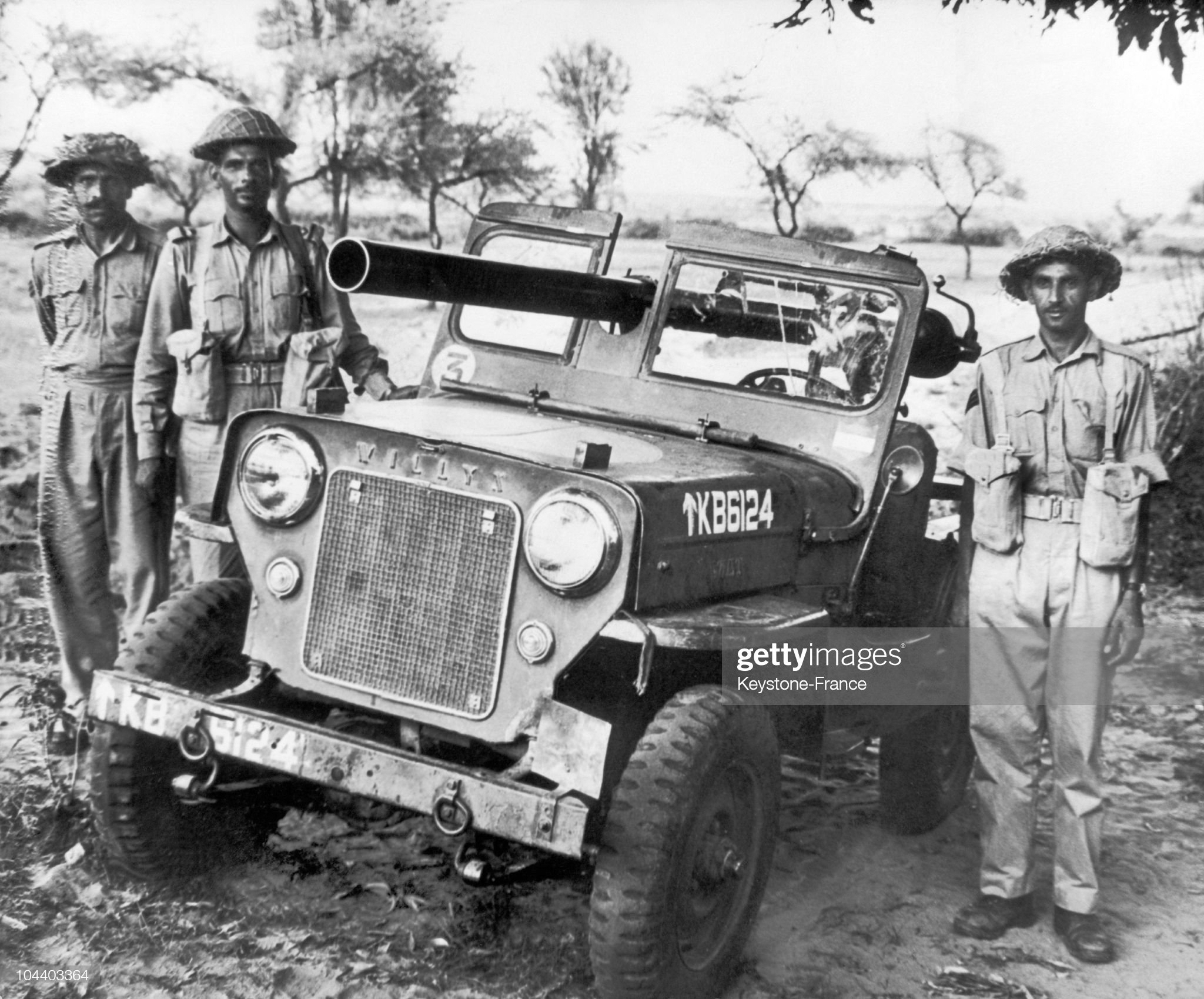
September 07, 1965. In Western Pakistan, during the second Indo-Pakistani war, three Pakistani soldiers surrounded a Willis Jeep equipped with a canon and abandoned by Indian soldiers who had penetrated into the Lahore region. This war revolved around the possession of Kashmir, located in Northwest India. Photo by Keystone-France / Gamma-Keystone via Getty Images.
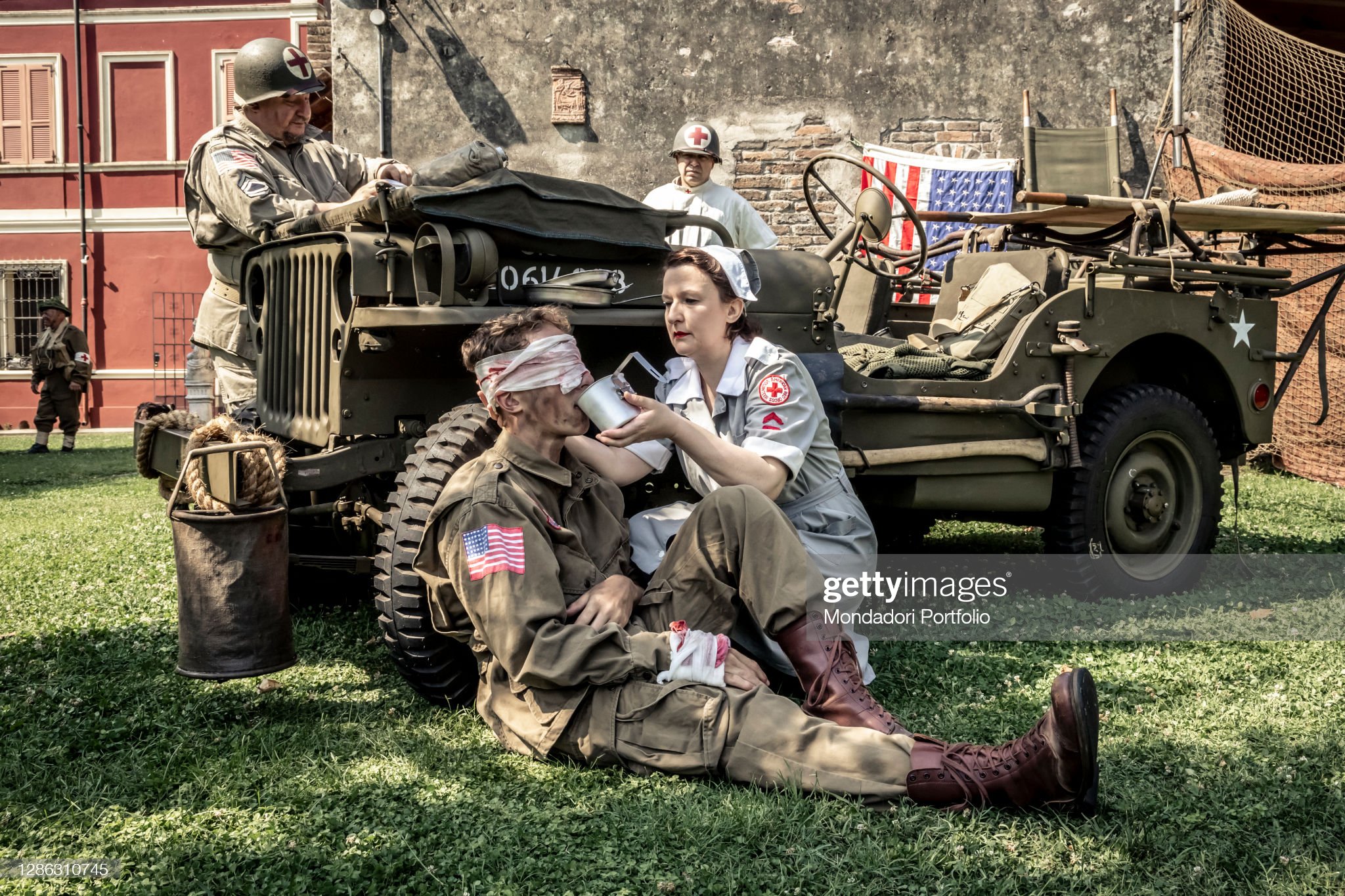
US army, field hospital. Young soldier shot in the face resting against the wheel of a Willis Jeep and being helped with drinking by a nurse. Bonizzo (MN) 27th and 28th June 2020. Photo by Museo XX Secolo / Medicina Historica / Camillo Balossini / Mondadori Portfolio.
We’d be remiss if we didn’t mention the one that started it all. The Willys MB is an outstanding vehicle that serves as an eternal tribute to American ingenuity during World War II. Designed with durability in mind, the Willys MB was the first Jeep that set the precedent for what the brand is today.
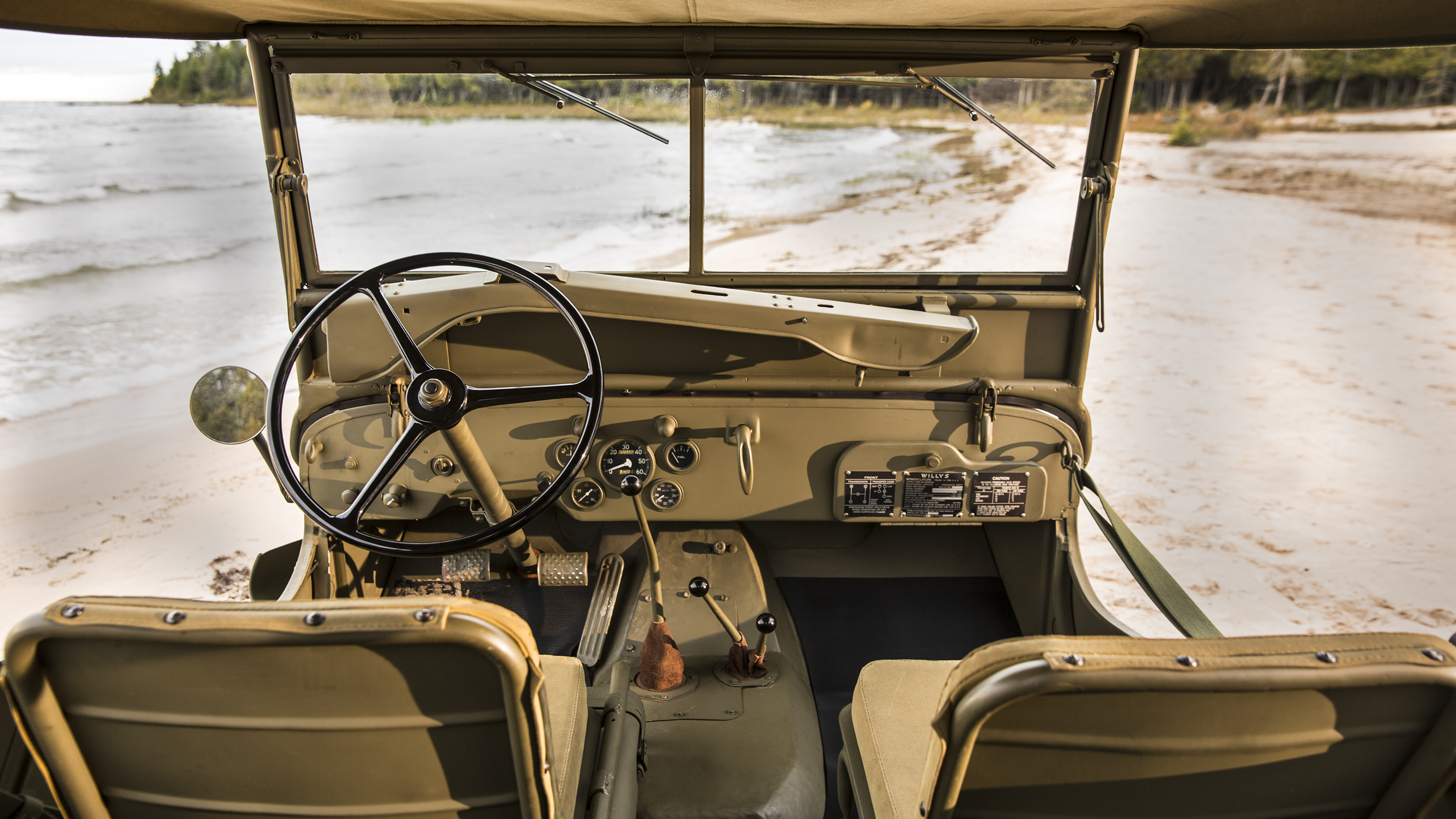
The interior of a Willys jeep.
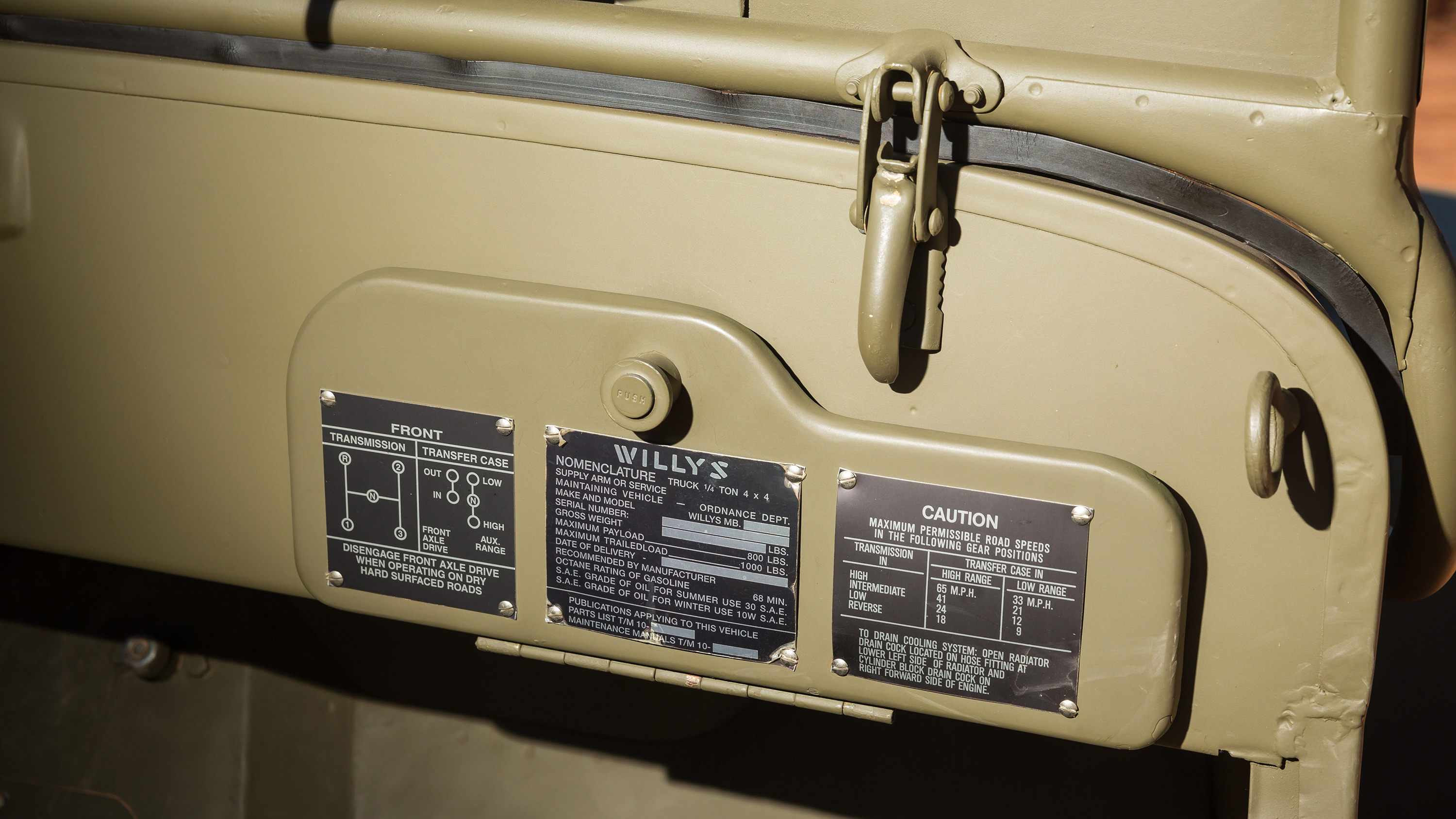
The interior of a Willys jeep.
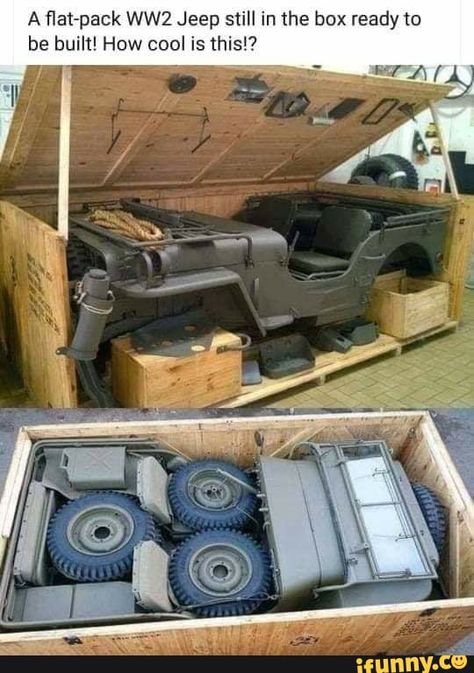
A lat-pack WW2 Jeep still in the box ready to be built.
The very same principles that governed the brand back then shine through in the current lineup, Jeep vehicles are still vehicles that are creative and adventurous but filled with rugged capability, all bound to make their own mark on the road.
Wrangler
CJ-7
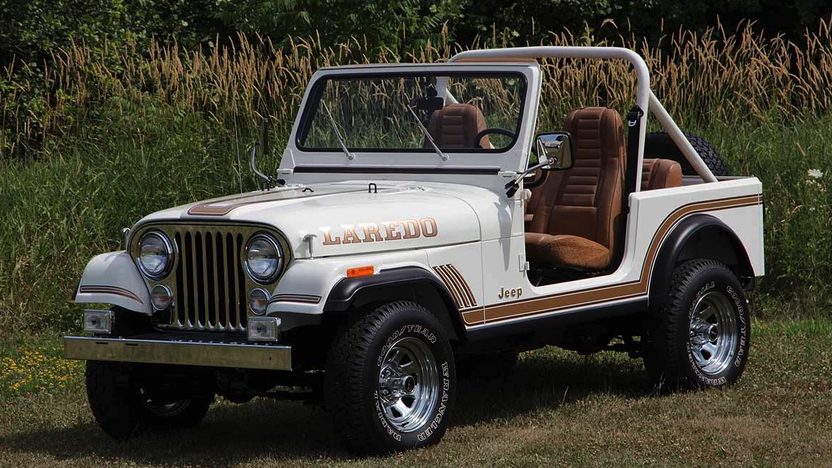
1986 Jeep CJ-7 Wrangler.
The Jeep Wrangler is a series of compact and mid-size four-wheel drive off-road SUVs manufactured by Jeep since 1986 and currently in its fourth generation.
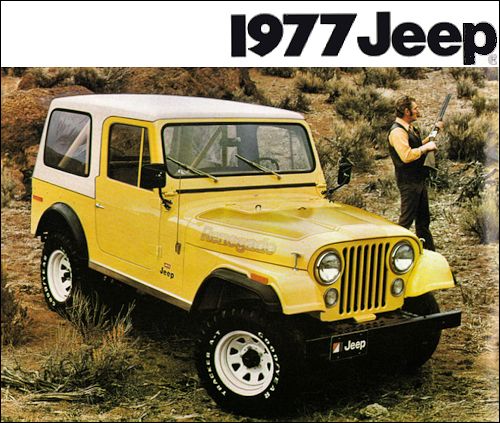
1977 Jeep Wrangler.
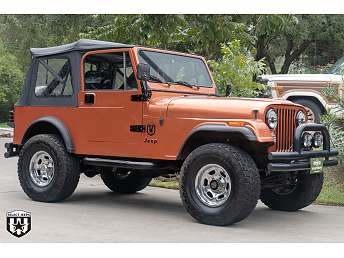
The Wrangler is a direct progression from the World War II Jeep, through the CJ (Civilian Jeeps) produced by Willys, Kaiser-Jeep and American Motors Corporation (AMC) from the mid-1940s through 1980s.
Videos
Fiat
Ford
Hummer
Lada Niva
Land Rover Defender
Mahindra
Toyota
UAZ
Wagoneer
Willis
Wrangler


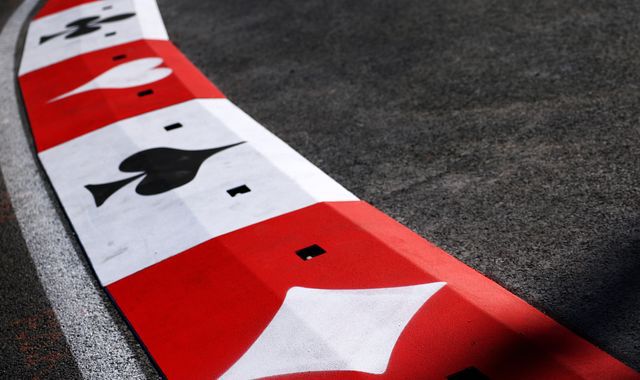
Comments
Authorize to comment